-
 @ eac63075:b4988b48
2024-11-09 17:57:27
@ eac63075:b4988b48
2024-11-09 17:57:27Based on a recent paper that included collaboration from renowned experts such as Lynn Alden, Steve Lee, and Ren Crypto Fish, we discuss in depth how Bitcoin's consensus is built, the main risks, and the complex dynamics of protocol upgrades.
Podcast https://www.fountain.fm/episode/wbjD6ntQuvX5u2G5BccC
Presentation https://gamma.app/docs/Analyzing-Bitcoin-Consensus-Risks-in-Protocol-Upgrades-p66axxjwaa37ksn
1. Introduction to Consensus in Bitcoin
Consensus in Bitcoin is the foundation that keeps the network secure and functional, allowing users worldwide to perform transactions in a decentralized manner without the need for intermediaries. Since its launch in 2009, Bitcoin is often described as an "immutable" system designed to resist changes, and it is precisely this resistance that ensures its security and stability.
The central idea behind consensus in Bitcoin is to create a set of acceptance rules for blocks and transactions, ensuring that all network participants agree on the transaction history. This prevents "double-spending," where the same bitcoin could be used in two simultaneous transactions, something that would compromise trust in the network.
Evolution of Consensus in Bitcoin
Over the years, consensus in Bitcoin has undergone several adaptations, and the way participants agree on changes remains a delicate process. Unlike traditional systems, where changes can be imposed from the top down, Bitcoin operates in a decentralized model where any significant change needs the support of various groups of stakeholders, including miners, developers, users, and large node operators.
Moreover, the update process is extremely cautious, as hasty changes can compromise the network's security. As a result, the philosophy of "don't fix what isn't broken" prevails, with improvements happening incrementally and only after broad consensus among those involved. This model can make progress seem slow but ensures that Bitcoin remains faithful to the principles of security and decentralization.
2. Technical Components of Consensus
Bitcoin's consensus is supported by a set of technical rules that determine what is considered a valid transaction and a valid block on the network. These technical aspects ensure that all nodes—the computers that participate in the Bitcoin network—agree on the current state of the blockchain. Below are the main technical components that form the basis of the consensus.
Validation of Blocks and Transactions
The validation of blocks and transactions is the central point of consensus in Bitcoin. A block is only considered valid if it meets certain criteria, such as maximum size, transaction structure, and the solving of the "Proof of Work" problem. The proof of work, required for a block to be included in the blockchain, is a computational process that ensures the block contains significant computational effort—protecting the network against manipulation attempts.
Transactions, in turn, need to follow specific input and output rules. Each transaction includes cryptographic signatures that prove the ownership of the bitcoins sent, as well as validation scripts that verify if the transaction conditions are met. This validation system is essential for network nodes to autonomously confirm that each transaction follows the rules.
Chain Selection
Another fundamental technical issue for Bitcoin's consensus is chain selection, which becomes especially important in cases where multiple versions of the blockchain coexist, such as after a network split (fork). To decide which chain is the "true" one and should be followed, the network adopts the criterion of the highest accumulated proof of work. In other words, the chain with the highest number of valid blocks, built with the greatest computational effort, is chosen by the network as the official one.
This criterion avoids permanent splits because it encourages all nodes to follow the same main chain, reinforcing consensus.
Soft Forks vs. Hard Forks
In the consensus process, protocol changes can happen in two ways: through soft forks or hard forks. These variations affect not only the protocol update but also the implications for network users:
-
Soft Forks: These are changes that are backward compatible. Only nodes that adopt the new update will follow the new rules, but old nodes will still recognize the blocks produced with these rules as valid. This compatibility makes soft forks a safer option for updates, as it minimizes the risk of network division.
-
Hard Forks: These are updates that are not backward compatible, requiring all nodes to update to the new version or risk being separated from the main chain. Hard forks can result in the creation of a new coin, as occurred with the split between Bitcoin and Bitcoin Cash in 2017. While hard forks allow for deeper changes, they also bring significant risks of network fragmentation.
These technical components form the base of Bitcoin's security and resilience, allowing the system to remain functional and immutable without losing the necessary flexibility to evolve over time.
3. Stakeholders in Bitcoin's Consensus
Consensus in Bitcoin is not decided centrally. On the contrary, it depends on the interaction between different groups of stakeholders, each with their motivations, interests, and levels of influence. These groups play fundamental roles in how changes are implemented or rejected on the network. Below, we explore the six main stakeholders in Bitcoin's consensus.
1. Economic Nodes
Economic nodes, usually operated by exchanges, custody providers, and large companies that accept Bitcoin, exert significant influence over consensus. Because they handle large volumes of transactions and act as a connection point between the Bitcoin ecosystem and the traditional financial system, these nodes have the power to validate or reject blocks and to define which version of the software to follow in case of a fork.
Their influence is proportional to the volume of transactions they handle, and they can directly affect which chain will be seen as the main one. Their incentive is to maintain the network's stability and security to preserve its functionality and meet regulatory requirements.
2. Investors
Investors, including large institutional funds and individual Bitcoin holders, influence consensus indirectly through their impact on the asset's price. Their buying and selling actions can affect Bitcoin's value, which in turn influences the motivation of miners and other stakeholders to continue investing in the network's security and development.
Some institutional investors have agreements with custodians that may limit their ability to act in network split situations. Thus, the impact of each investor on consensus can vary based on their ownership structure and how quickly they can react to a network change.
3. Media Influencers
Media influencers, including journalists, analysts, and popular personalities on social media, have a powerful role in shaping public opinion about Bitcoin and possible updates. These influencers can help educate the public, promote debates, and bring transparency to the consensus process.
On the other hand, the impact of influencers can be double-edged: while they can clarify complex topics, they can also distort perceptions by amplifying or minimizing change proposals. This makes them a force both of support and resistance to consensus.
4. Miners
Miners are responsible for validating transactions and including blocks in the blockchain. Through computational power (hashrate), they also exert significant influence over consensus decisions. In update processes, miners often signal their support for a proposal, indicating that the new version is safe to use. However, this signaling is not always definitive, and miners can change their position if they deem it necessary.
Their incentive is to maximize returns from block rewards and transaction fees, as well as to maintain the value of investments in their specialized equipment, which are only profitable if the network remains stable.
5. Protocol Developers
Protocol developers, often called "Core Developers," are responsible for writing and maintaining Bitcoin's code. Although they do not have direct power over consensus, they possess an informal veto power since they decide which changes are included in the main client (Bitcoin Core). This group also serves as an important source of technical knowledge, helping guide decisions and inform other stakeholders.
Their incentive lies in the continuous improvement of the network, ensuring security and decentralization. Many developers are funded by grants and sponsorships, but their motivations generally include a strong ideological commitment to Bitcoin's principles.
6. Users and Application Developers
This group includes people who use Bitcoin in their daily transactions and developers who build solutions based on the network, such as wallets, exchanges, and payment platforms. Although their power in consensus is less than that of miners or economic nodes, they play an important role because they are responsible for popularizing Bitcoin's use and expanding the ecosystem.
If application developers decide not to adopt an update, this can affect compatibility and widespread acceptance. Thus, they indirectly influence consensus by deciding which version of the protocol to follow in their applications.
These stakeholders are vital to the consensus process, and each group exerts influence according to their involvement, incentives, and ability to act in situations of change. Understanding the role of each makes it clearer how consensus is formed and why it is so difficult to make significant changes to Bitcoin.
4. Mechanisms for Activating Updates in Bitcoin
For Bitcoin to evolve without compromising security and consensus, different mechanisms for activating updates have been developed over the years. These mechanisms help coordinate changes among network nodes to minimize the risk of fragmentation and ensure that updates are implemented in an orderly manner. Here, we explore some of the main methods used in Bitcoin, their advantages and disadvantages, as well as historical examples of significant updates.
Flag Day
The Flag Day mechanism is one of the simplest forms of activating changes. In it, a specific date or block is determined as the activation moment, and all nodes must be updated by that point. This method does not involve prior signaling; participants simply need to update to the new software version by the established day or block.
-
Advantages: Simplicity and predictability are the main benefits of Flag Day, as everyone knows the exact activation date.
-
Disadvantages: Inflexibility can be a problem because there is no way to adjust the schedule if a significant part of the network has not updated. This can result in network splits if a significant number of nodes are not ready for the update.
An example of Flag Day was the Pay to Script Hash (P2SH) update in 2012, which required all nodes to adopt the change to avoid compatibility issues.
BIP34 and BIP9
BIP34 introduced a more dynamic process, in which miners increase the version number in block headers to signal the update. When a predetermined percentage of the last blocks is mined with this new version, the update is automatically activated. This model later evolved with BIP9, which allowed multiple updates to be signaled simultaneously through "version bits," each corresponding to a specific change.
-
Advantages: Allows the network to activate updates gradually, giving more time for participants to adapt.
-
Disadvantages: These methods rely heavily on miner support, which means that if a sufficient number of miners do not signal the update, it can be delayed or not implemented.
BIP9 was used in the activation of SegWit (BIP141) but faced challenges because some miners did not signal their intent to activate, leading to the development of new mechanisms.
User Activated Soft Forks (UASF) and User Resisted Soft Forks (URSF)
To increase the decision-making power of ordinary users, the concept of User Activated Soft Fork (UASF) was introduced, allowing node operators, not just miners, to determine consensus for a change. In this model, nodes set a date to start rejecting blocks that are not in compliance with the new update, forcing miners to adapt or risk having their blocks rejected by the network.
URSF, in turn, is a model where nodes reject blocks that attempt to adopt a specific update, functioning as resistance against proposed changes.
-
Advantages: UASF returns decision-making power to node operators, ensuring that changes do not depend solely on miners.
-
Disadvantages: Both UASF and URSF can generate network splits, especially in cases of strong opposition among different stakeholders.
An example of UASF was the activation of SegWit in 2017, where users supported activation independently of miner signaling, which ended up forcing its adoption.
BIP8 (LOT=True)
BIP8 is an evolution of BIP9, designed to prevent miners from indefinitely blocking a change desired by the majority of users and developers. BIP8 allows setting a parameter called "lockinontimeout" (LOT) as true, which means that if the update has not been fully signaled by a certain point, it is automatically activated.
-
Advantages: Ensures that changes with broad support among users are not blocked by miners who wish to maintain the status quo.
-
Disadvantages: Can lead to network splits if miners or other important stakeholders do not support the update.
Although BIP8 with LOT=True has not yet been used in Bitcoin, it is a proposal that can be applied in future updates if necessary.
These activation mechanisms have been essential for Bitcoin's development, allowing updates that keep the network secure and functional. Each method brings its own advantages and challenges, but all share the goal of preserving consensus and network cohesion.
5. Risks and Considerations in Consensus Updates
Consensus updates in Bitcoin are complex processes that involve not only technical aspects but also political, economic, and social considerations. Due to the network's decentralized nature, each change brings with it a set of risks that need to be carefully assessed. Below, we explore some of the main challenges and future scenarios, as well as the possible impacts on stakeholders.
Network Fragility with Alternative Implementations
One of the main risks associated with consensus updates is the possibility of network fragmentation when there are alternative software implementations. If an update is implemented by a significant group of nodes but rejected by others, a network split (fork) can occur. This creates two competing chains, each with a different version of the transaction history, leading to unpredictable consequences for users and investors.
Such fragmentation weakens Bitcoin because, by dividing hashing power (computing) and coin value, it reduces network security and investor confidence. A notable example of this risk was the fork that gave rise to Bitcoin Cash in 2017 when disagreements over block size resulted in a new chain and a new asset.
Chain Splits and Impact on Stakeholders
Chain splits are a significant risk in update processes, especially in hard forks. During a hard fork, the network is split into two separate chains, each with its own set of rules. This results in the creation of a new coin and leaves users with duplicated assets on both chains. While this may seem advantageous, in the long run, these splits weaken the network and create uncertainties for investors.
Each group of stakeholders reacts differently to a chain split:
-
Institutional Investors and ETFs: Face regulatory and compliance challenges because many of these assets are managed under strict regulations. The creation of a new coin requires decisions to be made quickly to avoid potential losses, which may be hampered by regulatory constraints.
-
Miners: May be incentivized to shift their computing power to the chain that offers higher profitability, which can weaken one of the networks.
-
Economic Nodes: Such as major exchanges and custody providers, have to quickly choose which chain to support, influencing the perceived value of each network.
Such divisions can generate uncertainties and loss of value, especially for institutional investors and those who use Bitcoin as a store of value.
Regulatory Impacts and Institutional Investors
With the growing presence of institutional investors in Bitcoin, consensus changes face new compliance challenges. Bitcoin ETFs, for example, are required to follow strict rules about which assets they can include and how chain split events should be handled. The creation of a new asset or migration to a new chain can complicate these processes, creating pressure for large financial players to quickly choose a chain, affecting the stability of consensus.
Moreover, decisions regarding forks can influence the Bitcoin futures and derivatives market, affecting perception and adoption by new investors. Therefore, the need to avoid splits and maintain cohesion is crucial to attract and preserve the confidence of these investors.
Security Considerations in Soft Forks and Hard Forks
While soft forks are generally preferred in Bitcoin for their backward compatibility, they are not without risks. Soft forks can create different classes of nodes on the network (updated and non-updated), which increases operational complexity and can ultimately weaken consensus cohesion. In a network scenario with fragmentation of node classes, Bitcoin's security can be affected, as some nodes may lose part of the visibility over updated transactions or rules.
In hard forks, the security risk is even more evident because all nodes need to adopt the new update to avoid network division. Experience shows that abrupt changes can create temporary vulnerabilities, in which malicious agents try to exploit the transition to attack the network.
Bounty Claim Risks and Attack Scenarios
Another risk in consensus updates are so-called "bounty claims"—accumulated rewards that can be obtained if an attacker manages to split or deceive a part of the network. In a conflict scenario, a group of miners or nodes could be incentivized to support a new update or create an alternative version of the software to benefit from these rewards.
These risks require stakeholders to carefully assess each update and the potential vulnerabilities it may introduce. The possibility of "bounty claims" adds a layer of complexity to consensus because each interest group may see a financial opportunity in a change that, in the long term, may harm network stability.
The risks discussed above show the complexity of consensus in Bitcoin and the importance of approaching it gradually and deliberately. Updates need to consider not only technical aspects but also economic and social implications, in order to preserve Bitcoin's integrity and maintain trust among stakeholders.
6. Recommendations for the Consensus Process in Bitcoin
To ensure that protocol changes in Bitcoin are implemented safely and with broad support, it is essential that all stakeholders adopt a careful and coordinated approach. Here are strategic recommendations for evaluating, supporting, or rejecting consensus updates, considering the risks and challenges discussed earlier, along with best practices for successful implementation.
1. Careful Evaluation of Proposal Maturity
Stakeholders should rigorously assess the maturity level of a proposal before supporting its implementation. Updates that are still experimental or lack a robust technical foundation can expose the network to unnecessary risks. Ideally, change proposals should go through an extensive testing phase, have security audits, and receive review and feedback from various developers and experts.
2. Extensive Testing in Secure and Compatible Networks
Before an update is activated on the mainnet, it is essential to test it on networks like testnet and signet, and whenever possible, on other compatible networks that offer a safe and controlled environment to identify potential issues. Testing on networks like Litecoin was fundamental for the safe launch of innovations like SegWit and the Lightning Network, allowing functionalities to be validated on a lower-impact network before being implemented on Bitcoin.
The Liquid Network, developed by Blockstream, also plays an important role as an experimental network for new proposals, such as OP_CAT. By adopting these testing environments, stakeholders can mitigate risks and ensure that the update is reliable and secure before being adopted by the main network.
3. Importance of Stakeholder Engagement
The success of a consensus update strongly depends on the active participation of all stakeholders. This includes economic nodes, miners, protocol developers, investors, and end users. Lack of participation can lead to inadequate decisions or even future network splits, which would compromise Bitcoin's security and stability.
4. Key Questions for Evaluating Consensus Proposals
To assist in decision-making, each group of stakeholders should consider some key questions before supporting a consensus change:
- Does the proposal offer tangible benefits for Bitcoin's security, scalability, or usability?
- Does it maintain backward compatibility or introduce the risk of network split?
- Are the implementation requirements clear and feasible for each group involved?
- Are there clear and aligned incentives for all stakeholder groups to accept the change?
5. Coordination and Timing in Implementations
Timing is crucial. Updates with short activation windows can force a split because not all nodes and miners can update simultaneously. Changes should be planned with ample deadlines to allow all stakeholders to adjust their systems, avoiding surprises that could lead to fragmentation.
Mechanisms like soft forks are generally preferable to hard forks because they allow a smoother transition. Opting for backward-compatible updates when possible facilitates the process and ensures that nodes and miners can adapt without pressure.
6. Continuous Monitoring and Re-evaluation
After an update, it's essential to monitor the network to identify problems or side effects. This continuous process helps ensure cohesion and trust among all participants, keeping Bitcoin as a secure and robust network.
These recommendations, including the use of secure networks for extensive testing, promote a collaborative and secure environment for Bitcoin's consensus process. By adopting a deliberate and strategic approach, stakeholders can preserve Bitcoin's value as a decentralized and censorship-resistant network.
7. Conclusion
Consensus in Bitcoin is more than a set of rules; it's the foundation that sustains the network as a decentralized, secure, and reliable system. Unlike centralized systems, where decisions can be made quickly, Bitcoin requires a much more deliberate and cooperative approach, where the interests of miners, economic nodes, developers, investors, and users must be considered and harmonized. This governance model may seem slow, but it is fundamental to preserving the resilience and trust that make Bitcoin a global store of value and censorship-resistant.
Consensus updates in Bitcoin must balance the need for innovation with the preservation of the network's core principles. The development process of a proposal needs to be detailed and rigorous, going through several testing stages, such as in testnet, signet, and compatible networks like Litecoin and Liquid Network. These networks offer safe environments for proposals to be analyzed and improved before being launched on the main network.
Each proposed change must be carefully evaluated regarding its maturity, impact, backward compatibility, and support among stakeholders. The recommended key questions and appropriate timing are critical to ensure that an update is adopted without compromising network cohesion. It's also essential that the implementation process is continuously monitored and re-evaluated, allowing adjustments as necessary and minimizing the risk of instability.
By following these guidelines, Bitcoin's stakeholders can ensure that the network continues to evolve safely and robustly, maintaining user trust and further solidifying its role as one of the most resilient and innovative digital assets in the world. Ultimately, consensus in Bitcoin is not just a technical issue but a reflection of its community and the values it represents: security, decentralization, and resilience.
8. Links
Whitepaper: https://github.com/bitcoin-cap/bcap
Youtube (pt-br): https://www.youtube.com/watch?v=rARycAibl9o&list=PL-qnhF0qlSPkfhorqsREuIu4UTbF0h4zb
-
-
 @ 1bda7e1f:bb97c4d9
2025-01-02 05:19:08
@ 1bda7e1f:bb97c4d9
2025-01-02 05:19:08Tldr
- Nostr is an open and interoperable protocol
- You can integrate it with workflow automation tools to augment your experience
- n8n is a great low/no-code workflow automation tool which you can host yourself
- Nostrobots allows you to integrate Nostr into n8n
- In this blog I create some workflow automations for Nostr
- A simple form to delegate posting notes
- Push notifications for mentions on multiple accounts
- Push notifications for your favourite accounts when they post a note
- All workflows are provided as open source with MIT license for you to use
Inter-op All The Things
Nostr is a new open social protocol for the internet. This open nature exciting because of the opportunities for interoperability with other technologies. In Using NFC Cards with Nostr I explored the
nostr:URI to launch Nostr clients from a card tap.The interoperability of Nostr doesn't stop there. The internet has many super-powers, and Nostr is open to all of them. Simply, there's no one to stop it. There is no one in charge, there are no permissioned APIs, and there are no risks of being de-platformed. If you can imagine technologies that would work well with Nostr, then any and all of them can ride on or alongside Nostr rails.
My mental model for why this is special is Google Wave ~2010. Google Wave was to be the next big platform. Lars was running it and had a big track record from Maps. I was excited for it. Then, Google pulled the plug. And, immediately all the time and capital invested in understanding and building on the platform was wasted.
This cannot happen to Nostr, as there is no one to pull the plug, and maybe even no plug to pull.
So long as users demand Nostr, Nostr will exist, and that is a pretty strong guarantee. It makes it worthwhile to invest in bringing Nostr into our other applications.
All we need are simple ways to plug things together.
Nostr and Workflow Automation
Workflow automation is about helping people to streamline their work. As a user, the most common way I achieve this is by connecting disparate systems together. By setting up one system to trigger another or to move data between systems, I can solve for many different problems and become way more effective.
n8n for workflow automation
Many workflow automation tools exist. My favourite is n8n. n8n is a low/no-code workflow automation platform which allows you to build all kinds of workflows. You can use it for free, you can self-host it, it has a user-friendly UI and useful API. Vs Zapier it can be far more elaborate. Vs Make.com I find it to be more intuitive in how it abstracts away the right parts of the code, but still allows you to code when you need to.
Most importantly you can plug anything into n8n: You have built-in nodes for specific applications. HTTP nodes for any other API-based service. And community nodes built by individual community members for any other purpose you can imagine.
Eating my own dogfood
It's very clear to me that there is a big design space here just demanding to be explored. If you could integrate Nostr with anything, what would you do?
In my view the best way for anyone to start anything is by solving their own problem first (aka "scratching your own itch" and "eating your own dogfood"). As I get deeper into Nostr I find myself controlling multiple Npubs – to date I have a personal Npub, a brand Npub for a community I am helping, an AI assistant Npub, and various testing Npubs. I need ways to delegate access to those Npubs without handing over the keys, ways to know if they're mentioned, and ways to know if they're posting.
I can build workflows with n8n to solve these issues for myself to start with, and keep expanding from there as new needs come up.
Running n8n with Nostrobots
I am mostly non-technical with a very helpful AI. To set up n8n to work with Nostr and operate these workflows should be possible for anyone with basic technology skills.
- I have a cheap VPS which currently runs my HAVEN Nostr Relay and Albyhub Lightning Node in Docker containers,
- My objective was to set up n8n to run alongside these in a separate Docker container on the same server, install the required nodes, and then build and host my workflows.
Installing n8n
Self-hosting n8n could not be easier. I followed n8n's Docker-Compose installation docs–
- Install Docker and Docker-Compose if you haven't already,
- Create your
docker-compose.ymland.envfiles from the docs, - Create your data folder
sudo docker volume create n8n_data, - Start your container with
sudo docker compose up -d, - Your n8n instance should be online at port
5678.
n8n is free to self-host but does require a license. Enter your credentials into n8n to get your free license key. You should now have access to the Workflow dashboard and can create and host any kind of workflows from there.
Installing Nostrobots
To integrate n8n nicely with Nostr, I used the Nostrobots community node by Ocknamo.
In n8n parlance a "node" enables certain functionality as a step in a workflow e.g. a "set" node sets a variable, a "send email" node sends an email. n8n comes with all kinds of "official" nodes installed by default, and Nostr is not amongst them. However, n8n also comes with a framework for community members to create their own "community" nodes, which is where Nostrobots comes in.
You can only use a community node in a self-hosted n8n instance (which is what you have if you are running in Docker on your own server, but this limitation does prevent you from using n8n's own hosted alternative).
To install a community node, see n8n community node docs. From your workflow dashboard–
- Click the "..." in the bottom left corner beside your username, and click "settings",
- Cilck "community nodes" left sidebar,
- Click "Install",
- Enter the "npm Package Name" which is
n8n-nodes-nostrobots, - Accept the risks and click "Install",
- Nostrobots is now added to your n8n instance.
Using Nostrobots
Nostrobots gives you nodes to help you build Nostr-integrated workflows–
- Nostr Write – for posting Notes to the Nostr network,
- Nostr Read – for reading Notes from the Nostr network, and
- Nostr Utils – for performing certain conversions you may need (e.g. from bech32 to hex).
Nostrobots has good documentation on each node which focuses on simple use cases.
Each node has a "convenience mode" by default. For example, the "Read" Node by default will fetch Kind 1 notes by a simple filter, in Nostrobots parlance a "Strategy". For example, with Strategy set to "Mention" the node will accept a pubkey and fetch all Kind 1 notes that Mention the pubkey within a time period. This is very good for quick use.
What wasn't clear to me initially (until Ocknamo helped me out) is that advanced use cases are also possible.
Each node also has an advanced mode. For example, the "Read" Node can have "Strategy" set to "RawFilter(advanced)". Now the node will accept json (anything you like that complies with NIP-01). You can use this to query Notes (Kind 1) as above, and also Profiles (Kind 0), Follow Lists (Kind 3), Reactions (Kind 7), Zaps (Kind 9734/9735), and anything else you can think of.
Creating and adding workflows
With n8n and Nostrobots installed, you can now create or add any kind of Nostr Workflow Automation.
- Click "Add workflow" to go to the workflow builder screen,
- If you would like to build your own workflow, you can start with adding any node. Click "+" and see what is available. Type "Nostr" to explore the Nostrobots nodes you have added,
- If you would like to add workflows that someone else has built, click "..." in the top right. Then click "import from URL" and paste in the URL of any workflow you would like to use (including the ones I share later in this article).
Nostr Workflow Automations
It's time to build some things!
A simple form to post a note to Nostr
I started very simply. I needed to delegate the ability to post to Npubs that I own in order that a (future) team can test things for me. I don't want to worry about managing or training those people on how to use keys, and I want to revoke access easily.
I needed a basic form with credentials that posted a Note.
For this I can use a very simple workflow–
- A n8n Form node – Creates a form for users to enter the note they wish to post. Allows for the form to be protected by a username and password. This node is the workflow "trigger" so that the workflow runs each time the form is submitted.
- A Set node – Allows me to set some variables, in this case I set the relays that I intend to use. I typically add a Set node immediately following the trigger node, and put all the variables I need in this. It helps to make the workflows easier to update and maintain.
- A Nostr Write node (from Nostrobots) – Writes a Kind-1 note to the Nostr network. It accepts Nostr credentials, the output of the Form node, and the relays from the Set node, and posts the Note to those relays.
Once the workflow is built, you can test it with the testing form URL, and set it to "Active" to use the production form URL. That's it. You can now give posting access to anyone for any Npub. To revoke access, simply change the credentials or set to workflow to "Inactive".
It may also be the world's simplest Nostr client.
You can find the Nostr Form to Post a Note workflow here.
Push notifications on mentions and new notes
One of the things Nostr is not very good at is push notifications. Furthermore I have some unique itches to scratch. I want–
- To make sure I never miss a note addressed to any of my Npubs – For this I want a push notification any time any Nostr user mentions any of my Npubs,
- To make sure I always see all notes from key accounts – For this I need a push notification any time any of my Npubs post any Notes to the network,
- To get these notifications on all of my devices – Not just my phone where my Nostr regular client lives, but also on each of my laptops to suit wherever I am working that day.
I needed to build a Nostr push notifications solution.
To build this workflow I had to string a few ideas together–
- Triggering the node on a schedule – Nostrobots does not include a trigger node. As every workflow starts with a trigger we needed a different method. I elected to run the workflow on a schedule of every 10-minutes. Frequent enough to see Notes while they are hot, but infrequent enough to not burden public relays or get rate-limited,
- Storing a list of Npubs in a Nostr list – I needed a way to store the list of Npubs that trigger my notifications. I initially used an array defined in the workflow, this worked fine. Then I decided to try Nostr lists (NIP-51, kind 30000). By defining my list of Npubs as a list published to Nostr I can control my list from within a Nostr client (e.g. Listr.lol or Nostrudel.ninja). Not only does this "just work", but because it's based on Nostr lists automagically Amethyst client allows me to browse that list as a Feed, and everyone I add gets notified in their Mentions,
- Using specific relays – I needed to query the right relays, including my own HAVEN relay inbox for notes addressed to me, and wss://purplepag.es for Nostr profile metadata,
- Querying Nostr events (with Nostrobots) – I needed to make use of many different Nostr queries and use quite a wide range of what Nostrobots can do–
- I read the EventID of my Kind 30000 list, to return the desired pubkeys,
- For notifications on mentions, I read all Kind 1 notes that mention that pubkey,
- For notifications on new notes, I read all Kind 1 notes published by that pubkey,
- Where there are notes, I read the Kind 0 profile metadata event of that pubkey to get the displayName of the relevant Npub,
- I transform the EventID into a Nevent to help clients find it.
- Using the Nostr URI – As I did with my NFC card article, I created a link with the
nostr:URI prefix so that my phone's native client opens the link by default, - Push notifications solution – I needed a push notifications solution. I found many with n8n integrations and chose to go with Pushover which supports all my devices, has a free trial, and is unfairly cheap with a $5-per-device perpetual license.
Once the workflow was built, lists published, and Pushover installed on my phone, I was fully set up with push notifications on Nostr. I have used these workflows for several weeks now and made various tweaks as I went. They are feeling robust and I'd welcome you to give them a go.
You can find the Nostr Push Notification If Mentioned here and If Posts a Note here.
In speaking with other Nostr users while I was building this, there are all kind of other needs for push notifications too – like on replies to a certain bookmarked note, or when a followed Npub starts streaming on zap.stream. These are all possible.
Use my workflows
I have open sourced all my workflows at my Github with MIT license and tried to write complete docs, so that you can import them into your n8n and configure them for your own use.
To import any of my workflows–
- Click on the workflow of your choice, e.g. "Nostr_Push_Notify_If_Mentioned.json",
- Click on the "raw" button to view the raw JSON, ex any Github page layout,
- Copy that URL,
- Enter that URL in the "import from URL" dialog mentioned above.
To configure them–
- Prerequisites, credentials, and variables are all stated,
- In general any variables required are entered into a Set Node that follows the trigger node,
- Pushover has some extra setup but is very straightforward and documented in the workflow.
What next?
Over my first four blogs I explored creating a good Nostr setup with Vanity Npub, Lightning Payments, Nostr Addresses at Your Domain, and Personal Nostr Relay.
Then in my latest two blogs I explored different types of interoperability with NFC cards and now n8n Workflow Automation.
Thinking ahead n8n can power any kind of interoperability between Nostr and any other legacy technology solution. On my mind as I write this:
- Further enhancements to posting and delegating solutions and forms (enhanced UI or different note kinds),
- Automated or scheduled posting (such as auto-liking everything Lyn Alden posts),
- Further enhancements to push notifications, on new and different types of events (such as notifying me when I get a new follower, on replies to certain posts, or when a user starts streaming),
- All kinds of bridges, such as bridging notes to and from Telegram, Slack, or Campfire. Or bridging RSS or other event feeds to Nostr,
- All kinds of other automation (such as BlackCoffee controlling a coffee machine),
- All kinds of AI Assistants and Agents,
In fact I have already released an open source workflow for an AI Assistant, and will share more about that in my next blog.
Please be sure to let me know if you think there's another Nostr topic you'd like to see me tackle.
GM Nostr.
-
 @ eac63075:b4988b48
2024-10-26 22:14:19
@ eac63075:b4988b48
2024-10-26 22:14:19The future of physical money is at stake, and the discussion about DREX, the new digital currency planned by the Central Bank of Brazil, is gaining momentum. In a candid and intense conversation, Federal Deputy Julia Zanatta (PL/SC) discussed the challenges and risks of this digital transition, also addressing her Bill No. 3,341/2024, which aims to prevent the extinction of physical currency. This bill emerges as a direct response to legislative initiatives seeking to replace physical money with digital alternatives, limiting citizens' options and potentially compromising individual freedom. Let's delve into the main points of this conversation.
https://www.fountain.fm/episode/i5YGJ9Ors3PkqAIMvNQ0
What is a CBDC?
Before discussing the specifics of DREX, it’s important to understand what a CBDC (Central Bank Digital Currency) is. CBDCs are digital currencies issued by central banks, similar to a digital version of physical money. Unlike cryptocurrencies such as Bitcoin, which operate in a decentralized manner, CBDCs are centralized and regulated by the government. In other words, they are digital currencies created and controlled by the Central Bank, intended to replace physical currency.
A prominent feature of CBDCs is their programmability. This means that the government can theoretically set rules about how, where, and for what this currency can be used. This aspect enables a level of control over citizens' finances that is impossible with physical money. By programming the currency, the government could limit transactions by setting geographical or usage restrictions. In practice, money within a CBDC could be restricted to specific spending or authorized for use in a defined geographical area.
In countries like China, where citizen actions and attitudes are also monitored, a person considered to have a "low score" due to a moral or ideological violation may have their transactions limited to essential purchases, restricting their digital currency use to non-essential activities. This financial control is strengthened because, unlike physical money, digital currency cannot be exchanged anonymously.
Practical Example: The Case of DREX During the Pandemic
To illustrate how DREX could be used, an example was given by Eric Altafim, director of Banco Itaú. He suggested that, if DREX had existed during the COVID-19 pandemic, the government could have restricted the currency’s use to a 5-kilometer radius around a person’s residence, limiting their economic mobility. Another proposed use by the executive related to the Bolsa Família welfare program: the government could set up programming that only allows this benefit to be used exclusively for food purchases. Although these examples are presented as control measures for safety or organization, they demonstrate how much a CBDC could restrict citizens' freedom of choice.
To illustrate the potential for state control through a Central Bank Digital Currency (CBDC), such as DREX, it is helpful to look at the example of China. In China, the implementation of a CBDC coincides with the country’s Social Credit System, a governmental surveillance tool that assesses citizens' and companies' behavior. Together, these technologies allow the Chinese government to monitor, reward, and, above all, punish behavior deemed inappropriate or threatening to the government.
How Does China's Social Credit System Work?
Implemented in 2014, China's Social Credit System assigns every citizen and company a "score" based on various factors, including financial behavior, criminal record, social interactions, and even online activities. This score determines the benefits or penalties each individual receives and can affect everything from public transport access to obtaining loans and enrolling in elite schools for their children. Citizens with low scores may face various sanctions, including travel restrictions, fines, and difficulty in securing loans.
With the adoption of the CBDC — or “digital yuan” — the Chinese government now has a new tool to closely monitor citizens' financial transactions, facilitating the application of Social Credit System penalties. China’s CBDC is a programmable digital currency, which means that the government can restrict how, when, and where the money can be spent. Through this level of control, digital currency becomes a powerful mechanism for influencing citizens' behavior.
Imagine, for instance, a citizen who repeatedly posts critical remarks about the government on social media or participates in protests. If the Social Credit System assigns this citizen a low score, the Chinese government could, through the CBDC, restrict their money usage in certain areas or sectors. For example, they could be prevented from buying tickets to travel to other regions, prohibited from purchasing certain consumer goods, or even restricted to making transactions only at stores near their home.
Another example of how the government can use the CBDC to enforce the Social Credit System is by monitoring purchases of products such as alcohol or luxury items. If a citizen uses the CBDC to spend more than the government deems reasonable on such products, this could negatively impact their social score, resulting in additional penalties such as future purchase restrictions or a lowered rating that impacts their personal and professional lives.
In China, this kind of control has already been demonstrated in several cases. Citizens added to Social Credit System “blacklists” have seen their spending and investment capacity severely limited. The combination of digital currency and social scores thus creates a sophisticated and invasive surveillance system, through which the Chinese government controls important aspects of citizens’ financial lives and individual freedoms.
Deputy Julia Zanatta views these examples with great concern. She argues that if the state has full control over digital money, citizens will be exposed to a level of economic control and surveillance never seen before. In a democracy, this control poses a risk, but in an authoritarian regime, it could be used as a powerful tool of repression.
DREX and Bill No. 3,341/2024
Julia Zanatta became aware of a bill by a Workers' Party (PT) deputy (Bill 4068/2020 by Deputy Reginaldo Lopes - PT/MG) that proposes the extinction of physical money within five years, aiming for a complete transition to DREX, the digital currency developed by the Central Bank of Brazil. Concerned about the impact of this measure, Julia drafted her bill, PL No. 3,341/2024, which prohibits the elimination of physical money, ensuring citizens the right to choose physical currency.
“The more I read about DREX, the less I want its implementation,” says the deputy. DREX is a Central Bank Digital Currency (CBDC), similar to other state digital currencies worldwide, but which, according to Julia, carries extreme control risks. She points out that with DREX, the State could closely monitor each citizen’s transactions, eliminating anonymity and potentially restricting freedom of choice. This control would lie in the hands of the Central Bank, which could, in a crisis or government change, “freeze balances or even delete funds directly from user accounts.”
Risks and Individual Freedom
Julia raises concerns about potential abuses of power that complete digitalization could allow. In a democracy, state control over personal finances raises serious questions, and EddieOz warns of an even more problematic future. “Today we are in a democracy, but tomorrow, with a government transition, we don't know if this kind of power will be used properly or abused,” he states. In other words, DREX gives the State the ability to restrict or condition the use of money, opening the door to unprecedented financial surveillance.
EddieOz cites Nigeria as an example, where a CBDC was implemented, and the government imposed severe restrictions on the use of physical money to encourage the use of digital currency, leading to protests and clashes in the country. In practice, the poorest and unbanked — those without regular access to banking services — were harshly affected, as without physical money, many cannot conduct basic transactions. Julia highlights that in Brazil, this situation would be even more severe, given the large number of unbanked individuals and the extent of rural areas where access to technology is limited.
The Relationship Between DREX and Pix
The digital transition has already begun with Pix, which revolutionized instant transfers and payments in Brazil. However, Julia points out that Pix, though popular, is a citizen’s choice, while DREX tends to eliminate that choice. The deputy expresses concern about new rules suggested for Pix, such as daily transaction limits of a thousand reais, justified as anti-fraud measures but which, in her view, represent additional control and a profit opportunity for banks. “How many more rules will banks create to profit from us?” asks Julia, noting that DREX could further enhance control over personal finances.
International Precedents and Resistance to CBDC
The deputy also cites examples from other countries resisting the idea of a centralized digital currency. In the United States, states like New Hampshire have passed laws to prevent the advance of CBDCs, and leaders such as Donald Trump have opposed creating a national digital currency. Trump, addressing the topic, uses a justification similar to Julia’s: in a digitalized system, “with one click, your money could disappear.” She agrees with the warning, emphasizing the control risk that a CBDC represents, especially for countries with disadvantaged populations.
Besides the United States, Canada, Colombia, and Australia have also suspended studies on digital currencies, citing the need for further discussions on population impacts. However, in Brazil, the debate on DREX is still limited, with few parliamentarians and political leaders openly discussing the topic. According to Julia, only she and one or two deputies are truly trying to bring this discussion to the Chamber, making DREX’s advance even more concerning.
Bill No. 3,341/2024 and Popular Pressure
For Julia, her bill is a first step. Although she acknowledges that ideally, it would prevent DREX's implementation entirely, PL 3341/2024 is a measure to ensure citizens' choice to use physical money, preserving a form of individual freedom. “If the future means control, I prefer to live in the past,” Julia asserts, reinforcing that the fight for freedom is at the heart of her bill.
However, the deputy emphasizes that none of this will be possible without popular mobilization. According to her, popular pressure is crucial for other deputies to take notice and support PL 3341. “I am only one deputy, and we need the public’s support to raise the project’s visibility,” she explains, encouraging the public to press other parliamentarians and ask them to “pay attention to PL 3341 and the project that prohibits the end of physical money.” The deputy believes that with a strong awareness and pressure movement, it is possible to advance the debate and ensure Brazilians’ financial freedom.
What’s at Stake?
Julia Zanatta leaves no doubt: DREX represents a profound shift in how money will be used and controlled in Brazil. More than a simple modernization of the financial system, the Central Bank’s CBDC sets precedents for an unprecedented level of citizen surveillance and control in the country. For the deputy, this transition needs to be debated broadly and transparently, and it’s up to the Brazilian people to defend their rights and demand that the National Congress discuss these changes responsibly.
The deputy also emphasizes that, regardless of political or partisan views, this issue affects all Brazilians. “This agenda is something that will affect everyone. We need to be united to ensure people understand the gravity of what could happen.” Julia believes that by sharing information and generating open debate, it is possible to prevent Brazil from following the path of countries that have already implemented a digital currency in an authoritarian way.
A Call to Action
The future of physical money in Brazil is at risk. For those who share Deputy Julia Zanatta’s concerns, the time to act is now. Mobilize, get informed, and press your representatives. PL 3341/2024 is an opportunity to ensure that Brazilian citizens have a choice in how to use their money, without excessive state interference or surveillance.
In the end, as the deputy puts it, the central issue is freedom. “My fear is that this project will pass, and people won’t even understand what is happening.” Therefore, may every citizen at least have the chance to understand what’s at stake and make their voice heard in defense of a Brazil where individual freedom and privacy are respected values.
-
 @ f9cf4e94:96abc355
2024-12-31 20:18:59
@ f9cf4e94:96abc355
2024-12-31 20:18:59Scuttlebutt foi iniciado em maio de 2014 por Dominic Tarr ( dominictarr ) como uma rede social alternativa off-line, primeiro para convidados, que permite aos usuários obter controle total de seus dados e privacidade. Secure Scuttlebutt (ssb) foi lançado pouco depois, o que coloca a privacidade em primeiro plano com mais recursos de criptografia.
Se você está se perguntando de onde diabos veio o nome Scuttlebutt:
Este termo do século 19 para uma fofoca vem do Scuttlebutt náutico: “um barril de água mantido no convés, com um buraco para uma xícara”. A gíria náutica vai desde o hábito dos marinheiros de se reunir pelo boato até a fofoca, semelhante à fofoca do bebedouro.

Marinheiros se reunindo em torno da rixa. ( fonte )
Dominic descobriu o termo boato em um artigo de pesquisa que leu.
Em sistemas distribuídos, fofocar é um processo de retransmissão de mensagens ponto a ponto; as mensagens são disseminadas de forma análoga ao “boca a boca”.
Secure Scuttlebutt é um banco de dados de feeds imutáveis apenas para acréscimos, otimizado para replicação eficiente para protocolos ponto a ponto. Cada usuário tem um log imutável somente para acréscimos no qual eles podem gravar. Eles gravam no log assinando mensagens com sua chave privada. Pense em um feed de usuário como seu próprio diário de bordo, como um diário de bordo (ou diário do capitão para os fãs de Star Trek), onde eles são os únicos autorizados a escrever nele, mas têm a capacidade de permitir que outros amigos ou colegas leiam ao seu diário de bordo, se assim o desejarem.
Cada mensagem possui um número de sequência e a mensagem também deve fazer referência à mensagem anterior por seu ID. O ID é um hash da mensagem e da assinatura. A estrutura de dados é semelhante à de uma lista vinculada. É essencialmente um log somente de acréscimo de JSON assinado. Cada item adicionado a um log do usuário é chamado de mensagem.
Os logs do usuário são conhecidos como feed e um usuário pode seguir os feeds de outros usuários para receber suas atualizações. Cada usuário é responsável por armazenar seu próprio feed. Quando Alice assina o feed de Bob, Bob baixa o log de feed de Alice. Bob pode verificar se o registro do feed realmente pertence a Alice verificando as assinaturas. Bob pode verificar as assinaturas usando a chave pública de Alice.

Estrutura de alto nível de um feed
Pubs são servidores de retransmissão conhecidos como “super peers”. Pubs conectam usuários usuários e atualizações de fofocas a outros usuários conectados ao Pub. Um Pub é análogo a um pub da vida real, onde as pessoas vão para se encontrar e se socializar. Para ingressar em um Pub, o usuário deve ser convidado primeiro. Um usuário pode solicitar um código de convite de um Pub; o Pub simplesmente gerará um novo código de convite, mas alguns Pubs podem exigir verificação adicional na forma de verificação de e-mail ou, com alguns Pubs, você deve pedir um código em um fórum público ou chat. Pubs também podem mapear aliases de usuário, como e-mails ou nome de usuário, para IDs de chave pública para facilitar os pares de referência.
Depois que o Pub enviar o código de convite ao usuário, o usuário resgatará o código, o que significa que o Pub seguirá o usuário, o que permite que o usuário veja as mensagens postadas por outros membros do Pub, bem como as mensagens de retransmissão do Pub pelo usuário a outros membros do Pub.
Além de retransmitir mensagens entre pares, os Pubs também podem armazenar as mensagens. Se Alice estiver offline e Bob transmitir atualizações de feed, Alice perderá a atualização. Se Alice ficar online, mas Bob estiver offline, não haverá como ela buscar o feed de Bob. Mas com um Pub, Alice pode buscar o feed no Pub mesmo se Bob estiver off-line porque o Pub está armazenando as mensagens. Pubs são úteis porque assim que um colega fica online, ele pode sincronizar com o Pub para receber os feeds de seus amigos potencialmente offline.
Um usuário pode, opcionalmente, executar seu próprio servidor Pub e abri-lo ao público ou permitir que apenas seus amigos participem, se assim o desejarem. Eles também podem ingressar em um Pub público. Aqui está uma lista de Pubs públicos em que todos podem participar . Explicaremos como ingressar em um posteriormente neste guia. Uma coisa importante a observar é que o Secure Scuttlebutt em uma rede social somente para convidados significa que você deve ser “puxado” para entrar nos círculos sociais. Se você responder às mensagens, os destinatários não serão notificados, a menos que estejam seguindo você de volta. O objetivo do SSB é criar “ilhas” isoladas de redes pares, ao contrário de uma rede pública onde qualquer pessoa pode enviar mensagens a qualquer pessoa.

Perspectivas dos participantes
Scuttlebot
O software Pub é conhecido como servidor Scuttlebutt (servidor ssb ), mas também é conhecido como “Scuttlebot” e
sbotna linha de comando. O servidor SSB adiciona comportamento de rede ao banco de dados Scuttlebutt (SSB). Estaremos usando o Scuttlebot ao longo deste tutorial.Os logs do usuário são conhecidos como feed e um usuário pode seguir os feeds de outros usuários para receber suas atualizações. Cada usuário é responsável por armazenar seu próprio feed. Quando Alice assina o feed de Bob, Bob baixa o log de feed de Alice. Bob pode verificar se o registro do feed realmente pertence a Alice verificando as assinaturas. Bob pode verificar as assinaturas usando a chave pública de Alice.

Estrutura de alto nível de um feed
Pubs são servidores de retransmissão conhecidos como “super peers”. Pubs conectam usuários usuários e atualizações de fofocas a outros usuários conectados ao Pub. Um Pub é análogo a um pub da vida real, onde as pessoas vão para se encontrar e se socializar. Para ingressar em um Pub, o usuário deve ser convidado primeiro. Um usuário pode solicitar um código de convite de um Pub; o Pub simplesmente gerará um novo código de convite, mas alguns Pubs podem exigir verificação adicional na forma de verificação de e-mail ou, com alguns Pubs, você deve pedir um código em um fórum público ou chat. Pubs também podem mapear aliases de usuário, como e-mails ou nome de usuário, para IDs de chave pública para facilitar os pares de referência.
Depois que o Pub enviar o código de convite ao usuário, o usuário resgatará o código, o que significa que o Pub seguirá o usuário, o que permite que o usuário veja as mensagens postadas por outros membros do Pub, bem como as mensagens de retransmissão do Pub pelo usuário a outros membros do Pub.
Além de retransmitir mensagens entre pares, os Pubs também podem armazenar as mensagens. Se Alice estiver offline e Bob transmitir atualizações de feed, Alice perderá a atualização. Se Alice ficar online, mas Bob estiver offline, não haverá como ela buscar o feed de Bob. Mas com um Pub, Alice pode buscar o feed no Pub mesmo se Bob estiver off-line porque o Pub está armazenando as mensagens. Pubs são úteis porque assim que um colega fica online, ele pode sincronizar com o Pub para receber os feeds de seus amigos potencialmente offline.
Um usuário pode, opcionalmente, executar seu próprio servidor Pub e abri-lo ao público ou permitir que apenas seus amigos participem, se assim o desejarem. Eles também podem ingressar em um Pub público. Aqui está uma lista de Pubs públicos em que todos podem participar . Explicaremos como ingressar em um posteriormente neste guia. Uma coisa importante a observar é que o Secure Scuttlebutt em uma rede social somente para convidados significa que você deve ser “puxado” para entrar nos círculos sociais. Se você responder às mensagens, os destinatários não serão notificados, a menos que estejam seguindo você de volta. O objetivo do SSB é criar “ilhas” isoladas de redes pares, ao contrário de uma rede pública onde qualquer pessoa pode enviar mensagens a qualquer pessoa.


Perspectivas dos participantes
Pubs - Hubs
Pubs públicos
| Pub Name | Operator | Invite Code | | ------------------------------------------------------------ | ------------------------------------------------------------ | ------------------------------------------------------------ | |
scuttle.us| @Ryan |scuttle.us:8008:@WqcuCOIpLtXFRw/9vOAQJti8avTZ9vxT9rKrPo8qG6o=.ed25519~/ZUi9Chpl0g1kuWSrmehq2EwMQeV0Pd+8xw8XhWuhLE=| | pub1.upsocial.com | @freedomrules |pub1.upsocial.com:8008:@gjlNF5Cyw3OKZxEoEpsVhT5Xv3HZutVfKBppmu42MkI=.ed25519~lMd6f4nnmBZEZSavAl4uahl+feajLUGqu8s2qdoTLi8=| | Monero Pub | @Denis |xmr-pub.net:8008:@5hTpvduvbDyMLN2IdzDKa7nx7PSem9co3RsOmZoyyCM=.ed25519~vQU+r2HUd6JxPENSinUWdfqrJLlOqXiCbzHoML9iVN4=| | FreeSocial | @Jarland |pub.freesocial.co:8008:@ofYKOy2p9wsaxV73GqgOyh6C6nRGFM5FyciQyxwBd6A=.ed25519~ye9Z808S3KPQsV0MWr1HL0/Sh8boSEwW+ZK+8x85u9w=| |ssb.vpn.net.br| @coffeverton |ssb.vpn.net.br:8008:@ze8nZPcf4sbdULvknEFOCbVZtdp7VRsB95nhNw6/2YQ=.ed25519~D0blTolH3YoTwSAkY5xhNw8jAOjgoNXL/+8ZClzr0io=| | gossip.noisebridge.info | Noisebridge Hackerspace @james.network |gossip.noisebridge.info:8008:@2NANnQVdsoqk0XPiJG2oMZqaEpTeoGrxOHJkLIqs7eY=.ed25519~JWTC6+rPYPW5b5zCion0gqjcJs35h6JKpUrQoAKWgJ4=|Pubs privados
Você precisará entrar em contato com os proprietários desses bares para receber um convite.
| Pub Name | Operator | Contact | | --------------------------------------------- | ------------------------------------------------------------ | ----------------------------------------------- | |
many.butt.nz| @dinosaur | mikey@enspiral.com | |one.butt.nz| @dinosaur | mikey@enspiral.com | |ssb.mikey.nz| @dinosaur | mikey@enspiral.com | | ssb.celehner.com | @cel | cel@celehner.com |Pubs muito grandes
Aviso: embora tecnicamente funcione usar um convite para esses pubs, você provavelmente se divertirá se o fizer devido ao seu tamanho (muitas coisas para baixar, risco para bots / spammers / idiotas)
| Pub Name | Operator | Invite Code | | --------------------------------------- | ----------------------------------------------- | ------------------------------------------------------------ | |
scuttlebutt.de| SolSoCoG |scuttlebutt.de:8008:@yeh/GKxlfhlYXSdgU7CRLxm58GC42za3tDuC4NJld/k=.ed25519~iyaCpZ0co863K9aF+b7j8BnnHfwY65dGeX6Dh2nXs3c=| |Lohn's Pub| @lohn |p.lohn.in:8018:@LohnKVll9HdLI3AndEc4zwGtfdF/J7xC7PW9B/JpI4U=.ed25519~z3m4ttJdI4InHkCtchxTu26kKqOfKk4woBb1TtPeA/s=| | Scuttle Space | @guil-dot | Visit scuttle.space | |SSB PeerNet US-East| timjrobinson |us-east.ssbpeer.net:8008:@sTO03jpVivj65BEAJMhlwtHXsWdLd9fLwyKAT1qAkc0=.ed25519~sXFc5taUA7dpGTJITZVDCRy2A9jmkVttsr107+ufInU=| | Hermies | s | net:hermies.club:8008~shs:uMYDVPuEKftL4SzpRGVyQxLdyPkOiX7njit7+qT/7IQ=:SSB+Room+PSK3TLYC2T86EHQCUHBUHASCASE18JBV24= |GUI - Interface Gráfica do Utilizador(Usuário)
Patchwork - Uma GUI SSB (Descontinuado)
Patchwork é o aplicativo de mensagens e compartilhamento descentralizado construído em cima do SSB . O protocolo scuttlebutt em si não mantém um conjunto de feeds nos quais um usuário está interessado, então um cliente é necessário para manter uma lista de feeds de pares em que seu respectivo usuário está interessado e seguindo.

Fonte: scuttlebutt.nz
Quando você instala e executa o Patchwork, você só pode ver e se comunicar com seus pares em sua rede local. Para acessar fora de sua LAN, você precisa se conectar a um Pub. Um pub é apenas para convidados e eles retransmitem mensagens entre você e seus pares fora de sua LAN e entre outros Pubs.
Lembre-se de que você precisa seguir alguém para receber mensagens dessa pessoa. Isso reduz o envio de mensagens de spam para os usuários. Os usuários só veem as respostas das pessoas que seguem. Os dados são sincronizados no disco para funcionar offline, mas podem ser sincronizados diretamente com os pares na sua LAN por wi-fi ou bluetooth.
Patchbay - Uma GUI Alternativa
Patchbay é um cliente de fofoca projetado para ser fácil de modificar e estender. Ele usa o mesmo banco de dados que Patchwork e Patchfoo , então você pode facilmente dar uma volta com sua identidade existente.

Planetary - GUI para IOS

Planetary é um app com pubs pré-carregados para facilitar integração.
Manyverse - GUI para Android

Manyverse é um aplicativo de rede social com recursos que você esperaria: posts, curtidas, perfis, mensagens privadas, etc. Mas não está sendo executado na nuvem de propriedade de uma empresa, em vez disso, as postagens de seus amigos e todos os seus dados sociais vivem inteiramente em seu telefone .
Fontes
-
https://scuttlebot.io/
-
https://decentralized-id.com/decentralized-web/scuttlebot/#plugins
-
https://medium.com/@miguelmota/getting-started-with-secure-scuttlebut-e6b7d4c5ecfd
-
Secure Scuttlebutt : um protocolo de banco de dados global.
-
-
 @ 8fb140b4:f948000c
2023-11-21 21:37:48
@ 8fb140b4:f948000c
2023-11-21 21:37:48Embarking on the journey of operating your own Lightning node on the Bitcoin Layer 2 network is more than just a tech-savvy endeavor; it's a step into a realm of financial autonomy and cutting-edge innovation. By running a node, you become a vital part of a revolutionary movement that's reshaping how we think about money and digital transactions. This role not only offers a unique perspective on blockchain technology but also places you at the heart of a community dedicated to decentralization and network resilience. Beyond the technicalities, it's about embracing a new era of digital finance, where you contribute directly to the network's security, efficiency, and growth, all while gaining personal satisfaction and potentially lucrative rewards.
In essence, running your own Lightning node is a powerful way to engage with the forefront of blockchain technology, assert financial independence, and contribute to a more decentralized and efficient Bitcoin network. It's an adventure that offers both personal and communal benefits, from gaining in-depth tech knowledge to earning a place in the evolving landscape of cryptocurrency.
Running your own Lightning node for the Bitcoin Layer 2 network can be an empowering and beneficial endeavor. Here are 10 reasons why you might consider taking on this task:
-
Direct Contribution to Decentralization: Operating a node is a direct action towards decentralizing the Bitcoin network, crucial for its security and resistance to control or censorship by any single entity.
-
Financial Autonomy: Owning a node gives you complete control over your financial transactions on the network, free from reliance on third-party services, which can be subject to fees, restrictions, or outages.
-
Advanced Network Participation: As a node operator, you're not just a passive participant but an active player in shaping the network, influencing its efficiency and scalability through direct involvement.
-
Potential for Higher Revenue: With strategic management and optimal channel funding, your node can become a preferred route for transactions, potentially increasing the routing fees you can earn.
-
Cutting-Edge Technological Engagement: Running a node puts you at the forefront of blockchain and bitcoin technology, offering insights into future developments and innovations.
-
Strengthened Network Security: Each new node adds to the robustness of the Bitcoin network, making it more resilient against attacks and failures, thus contributing to the overall security of the ecosystem.
-
Personalized Fee Structures: You have the flexibility to set your own fee policies, which can balance earning potential with the service you provide to the network.
-
Empowerment Through Knowledge: The process of setting up and managing a node provides deep learning opportunities, empowering you with knowledge that can be applied in various areas of blockchain and fintech.
-
Boosting Transaction Capacity: By running a node, you help to increase the overall capacity of the Lightning Network, enabling more transactions to be processed quickly and at lower costs.
-
Community Leadership and Reputation: As an active node operator, you gain recognition within the Bitcoin community, which can lead to collaborative opportunities and a position of thought leadership in the space.
These reasons demonstrate the impactful and transformative nature of running a Lightning node, appealing to those who are deeply invested in the principles of bitcoin and wish to actively shape its future. Jump aboard, and embrace the journey toward full independence. 🐶🐾🫡🚀🚀🚀
-
-
 @ 8fb140b4:f948000c
2023-11-18 23:28:31
@ 8fb140b4:f948000c
2023-11-18 23:28:31Chef's notes
Serving these two dishes together will create a delightful centerpiece for your Thanksgiving meal, offering a perfect blend of traditional flavors with a homemade touch.
Details
- ⏲️ Prep time: 30 min
- 🍳 Cook time: 1 - 2 hours
- 🍽️ Servings: 4-6
Ingredients
- 1 whole turkey (about 12-14 lbs), thawed and ready to cook
- 1 cup unsalted butter, softened
- 2 tablespoons fresh thyme, chopped
- 2 tablespoons fresh rosemary, chopped
- 2 tablespoons fresh sage, chopped
- Salt and freshly ground black pepper
- 1 onion, quartered
- 1 lemon, halved
- 2-3 cloves of garlic
- Apple and Sage Stuffing
- 1 loaf of crusty bread, cut into cubes
- 2 apples, cored and chopped
- 1 onion, diced
- 2 stalks celery, diced
- 3 cloves garlic, minced
- 1/4 cup fresh sage, chopped
- 1/2 cup unsalted butter
- 2 cups chicken broth
- Salt and pepper, to taste
Directions
- Preheat the Oven: Set your oven to 325°F (165°C).
- Prepare the Herb Butter: Mix the softened butter with the chopped thyme, rosemary, and sage. Season with salt and pepper.
- Prepare the Turkey: Remove any giblets from the turkey and pat it dry. Loosen the skin and spread a generous amount of herb butter under and over the skin.
- Add Aromatics: Inside the turkey cavity, place the quartered onion, lemon halves, and garlic cloves.
- Roast: Place the turkey in a roasting pan. Tent with aluminum foil and roast. A general guideline is about 15 minutes per pound, or until the internal temperature reaches 165°F (74°C) at the thickest part of the thigh.
- Rest and Serve: Let the turkey rest for at least 20 minutes before carving.
- Next: Apple and Sage Stuffing
- Dry the Bread: Spread the bread cubes on a baking sheet and let them dry overnight, or toast them in the oven.
- Cook the Vegetables: In a large skillet, melt the butter and cook the onion, celery, and garlic until soft.
- Combine Ingredients: Add the apples, sage, and bread cubes to the skillet. Stir in the chicken broth until the mixture is moist. Season with salt and pepper.
- Bake: Transfer the stuffing to a baking dish and bake at 350°F (175°C) for about 30-40 minutes, until golden brown on top.
-
 @ 8fb140b4:f948000c
2023-11-02 01:13:01
@ 8fb140b4:f948000c
2023-11-02 01:13:01Testing a brand new YakiHonne native client for iOS. Smooth as butter (not penis butter 🤣🍆🧈) with great visual experience and intuitive navigation. Amazing work by the team behind it! * lists * work
Bold text work!

Images could have used nostr.build instead of raw S3 from us-east-1 region.
Very impressive! You can even save the draft and continue later, before posting the long-form note!
🐶🐾🤯🤯🤯🫂💜
-
 @ e97aaffa:2ebd765d
2024-12-31 16:47:12
@ e97aaffa:2ebd765d
2024-12-31 16:47:12Último dia do ano, momento para tirar o pó da bola de cristal, para fazer reflexões, previsões e desejos para o próximo ano e seguintes.
Ano após ano, o Bitcoin evoluiu, foi ultrapassando etapas, tornou-se cada vez mais mainstream. Está cada vez mais difícil fazer previsões sobre o Bitcoin, já faltam poucas barreiras a serem ultrapassadas e as que faltam são altamente complexas ou tem um impacto profundo no sistema financeiro ou na sociedade. Estas alterações profundas tem que ser realizadas lentamente, porque uma alteração rápida poderia resultar em consequências terríveis, poderia provocar um retrocesso.
Código do Bitcoin
No final de 2025, possivelmente vamos ter um fork, as discussões sobre os covenants já estão avançadas, vão acelerar ainda mais. Já existe um consenso relativamente alto, a favor dos covenants, só falta decidir que modelo será escolhido. Penso que até ao final do ano será tudo decidido.
Depois dos covenants, o próximo foco será para a criptografia post-quantum, que será o maior desafio que o Bitcoin enfrenta. Criar uma criptografia segura e que não coloque a descentralização em causa.
Espero muito de Ark, possivelmente a inovação do ano, gostaria de ver o Nostr a furar a bolha bitcoinheira e que o Cashu tivesse mais reconhecimento pelos bitcoiners.
Espero que surjam avanços significativos no BitVM2 e BitVMX.
Não sei o que esperar das layer 2 de Bitcoin, foram a maior desilusão de 2024. Surgiram com muita força, mas pouca coisa saiu do papel, foi uma mão cheia de nada. Uma parte dos projetos caiu na tentação da shitcoinagem, na criação de tokens, que tem um único objetivo, enriquecer os devs e os VCs.
Se querem ser levados a sério, têm que ser sérios.
“À mulher de César não basta ser honesta, deve parecer honesta”
Se querem ter o apoio dos bitcoiners, sigam o ethos do Bitcoin.
Neste ponto a atitude do pessoal da Ark é exemplar, em vez de andar a chorar no Twitter para mudar o código do Bitcoin, eles colocaram as mãos na massa e criaram o protocolo. É claro que agora está meio “coxo”, funciona com uma multisig ou com os covenants na Liquid. Mas eles estão a criar um produto, vão demonstrar ao mercado que o produto é bom e útil. Com a adoção, a comunidade vai perceber que o Ark necessita dos covenants para melhorar a interoperabilidade e a soberania.
É este o pensamento certo, que deveria ser seguido pelos restantes e futuros projetos. É seguir aquele pensamento do J.F. Kennedy:
“Não perguntem o que é que o vosso país pode fazer por vocês, perguntem o que é que vocês podem fazer pelo vosso país”
Ou seja, não fiquem à espera que o bitcoin mude, criem primeiro as inovações/tecnologia, ganhem adoção e depois demonstrem que a alteração do código camada base pode melhorar ainda mais o vosso projeto. A necessidade é que vai levar a atualização do código.
Reservas Estratégicas de Bitcoin
Bancos centrais
Com a eleição de Trump, emergiu a ideia de uma Reserva Estratégia de Bitcoin, tornou este conceito mainstream. Foi um pivot, a partir desse momento, foram enumerados os políticos de todo o mundo a falar sobre o assunto.
A Senadora Cynthia Lummis foi mais além e propôs um programa para adicionar 200 mil bitcoins à reserva ao ano, até 1 milhão de Bitcoin. Só que isto está a criar uma enorme expectativa na comunidade, só que pode resultar numa enorme desilusão. Porque no primeiro ano, o Trump em vez de comprar os 200 mil, pode apenas adicionar na reserva, os 198 mil que o Estado já tem em sua posse. Se isto acontecer, possivelmente vai resultar numa forte queda a curto prazo. Na minha opinião os bancos centrais deveriam seguir o exemplo de El Salvador, fazer um DCA diário.
Mais que comprar bitcoin, para mim, o mais importante é a criação da Reserva, é colocar o Bitcoin ao mesmo nível do ouro, o impacto para o resto do mundo será tremendo, a teoria dos jogos na sua plenitude. Muitos outros bancos centrais vão ter que comprar, para não ficarem atrás, além disso, vai transmitir uma mensagem à generalidade da população, que o Bitcoin é “afinal é algo seguro, com valor”.
Mas não foi Trump que iniciou esta teoria dos jogos, mas sim foi a primeira vítima dela. É o próprio Trump que o admite, que os EUA necessitam da reserva para não ficar atrás da China. Além disso, desde que os EUA utilizaram o dólar como uma arma, com sanção contra a Rússia, surgiram boatos de que a Rússia estaria a utilizar o Bitcoin para transações internacionais. Que foram confirmados recentemente, pelo próprio governo russo. Também há poucos dias, ainda antes deste reconhecimento público, Putin elogiou o Bitcoin, ao reconhecer que “Ninguém pode proibir o bitcoin”, defendendo como uma alternativa ao dólar. A narrativa está a mudar.
Já existem alguns países com Bitcoin, mas apenas dois o fizeram conscientemente (El Salvador e Butão), os restantes têm devido a apreensões. Hoje são poucos, mas 2025 será o início de uma corrida pelos bancos centrais. Esta corrida era algo previsível, o que eu não esperava é que acontecesse tão rápido.
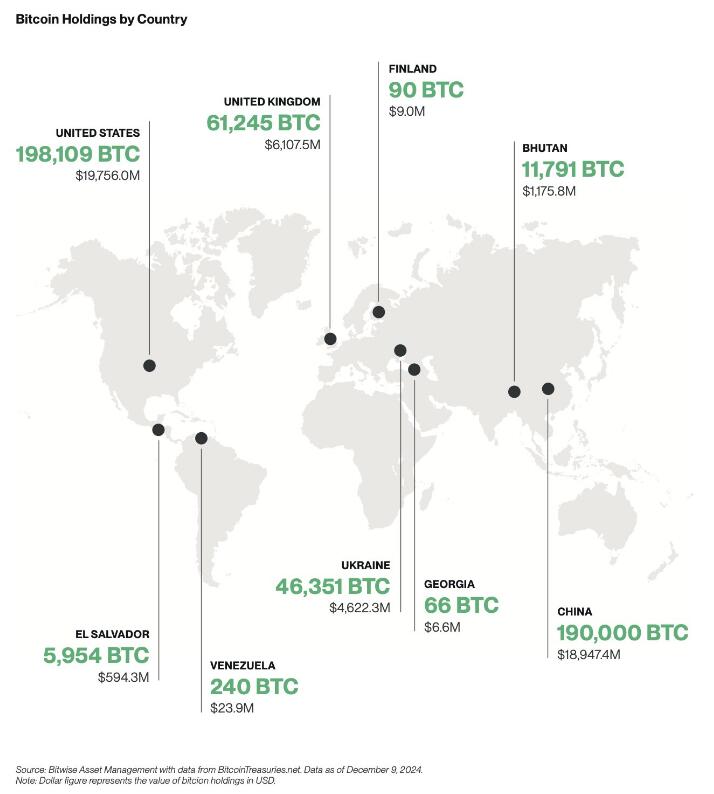
Empresas
A criação de reservas estratégicas não vai ficar apenas pelos bancos centrais, também vai acelerar fortemente nas empresas em 2025.

Mas as empresas não vão seguir a estratégia do Saylor, vão comprar bitcoin sem alavancagem, utilizando apenas os tesouros das empresas, como uma proteção contra a inflação. Eu não sou grande admirador do Saylor, prefiro muito mais, uma estratégia conservadora, sem qualquer alavancagem. Penso que as empresas vão seguir a sugestão da BlackRock, que aconselha um alocações de 1% a 3%.
Penso que 2025, ainda não será o ano da entrada das 6 magníficas (excepto Tesla), será sobretudo empresas de pequena e média dimensão. As magníficas ainda tem uma cota muito elevada de shareholders com alguma idade, bastante conservadores, que têm dificuldade em compreender o Bitcoin, foi o que aconteceu recentemente com a Microsoft.
Também ainda não será em 2025, talvez 2026, a inclusão nativamente de wallet Bitcoin nos sistema da Apple Pay e da Google Pay. Seria um passo gigante para a adoção a nível mundial.
ETFs
Os ETFs para mim são uma incógnita, tenho demasiadas dúvidas, como será 2025. Este ano os inflows foram superiores a 500 mil bitcoins, o IBIT foi o lançamento de ETF mais bem sucedido da história. O sucesso dos ETFs, deve-se a 2 situações que nunca mais se vão repetir. O mercado esteve 10 anos à espera pela aprovação dos ETFs, a procura estava reprimida, isso foi bem notório nos primeiros meses, os inflows foram brutais.
Também se beneficiou por ser um mercado novo, não existia orderbook de vendas, não existia um mercado interno, praticamente era só inflows. Agora o mercado já estabilizou, a maioria das transações já são entre clientes dos próprios ETFs. Agora só uma pequena percentagem do volume das transações diárias vai resultar em inflows ou outflows.
Estes dois fenómenos nunca mais se vão repetir, eu não acredito que o número de inflows em BTC supere os número de 2024, em dólares vai superar, mas em btc não acredito que vá superar.
Mas em 2025 vão surgir uma infindável quantidade de novos produtos, derivativos, novos ETFs de cestos com outras criptos ou cestos com ativos tradicionais. O bitcoin será adicionado em produtos financeiros já existentes no mercado, as pessoas vão passar a deter bitcoin, sem o saberem.
Com o fim da operação ChokePoint 2.0, vai surgir uma nova onda de adoção e de produtos financeiros. Possivelmente vamos ver bancos tradicionais a disponibilizar produtos ou serviços de custódia aos seus clientes.
Eu adoraria ver o crescimento da adoção do bitcoin como moeda, só que a regulamentação não vai ajudar nesse processo.
Preço
Eu acredito que o topo deste ciclo será alcançado no primeiro semestre, posteriormente haverá uma correção. Mas desta vez, eu acredito que a correção será muito menor que as anteriores, inferior a 50%, esta é a minha expectativa. Espero estar certo.
Stablecoins de dólar
Agora saindo um pouco do universo do Bitcoin, acho importante destacar as stablecoins.
No último ciclo, eu tenho dividido o tempo, entre continuar a estudar o Bitcoin e estudar o sistema financeiro, as suas dinâmicas e o comportamento humano. Isto tem sido o meu foco de reflexão, imaginar a transformação que o mundo vai sofrer devido ao padrão Bitcoin. É uma ilusão acreditar que a transição de um padrão FIAT para um padrão Bitcoin vai ser rápida, vai existir um processo transitório que pode demorar décadas.
Com a re-entrada de Trump na Casa Branca, prometendo uma política altamente protecionista, vai provocar uma forte valorização do dólar, consequentemente as restantes moedas do mundo vão derreter. Provocando uma inflação generalizada, gerando uma corrida às stablecoins de dólar nos países com moedas mais fracas. Trump vai ter uma política altamente expansionista, vai exportar dólares para todo o mundo, para financiar a sua própria dívida. A desigualdade entre os pobres e ricos irá crescer fortemente, aumentando a possibilidade de conflitos e revoltas.
“Casa onde não há pão, todos ralham e ninguém tem razão”
Será mais lenha, para alimentar a fogueira, vai gravar os conflitos geopolíticos já existentes, ficando as sociedade ainda mais polarizadas.
Eu acredito que 2025, vai haver um forte crescimento na adoção das stablecoins de dólares, esse forte crescimento vai agravar o problema sistémico que são as stablecoins. Vai ser o início do fim das stablecoins, pelo menos, como nós conhecemos hoje em dia.
Problema sistémico
O sistema FIAT não nasceu de um dia para outro, foi algo que foi construído organicamente, ou seja, foi evoluindo ao longo dos anos, sempre que havia um problema/crise, eram criadas novas regras ou novas instituições para minimizar os problemas. Nestes quase 100 anos, desde os acordos de Bretton Woods, a evolução foram tantas, tornaram o sistema financeiro altamente complexo, burocrático e nada eficiente.
Na prática é um castelo de cartas construído sobre outro castelo de cartas e que por sua vez, foi construído sobre outro castelo de cartas.
As stablecoins são um problema sistémico, devido às suas reservas em dólares e o sistema financeiro não está preparado para manter isso seguro. Com o crescimento das reservas ao longo dos anos, foi se agravando o problema.
No início a Tether colocava as reservas em bancos comerciais, mas com o crescimento dos dólares sob gestão, criou um problema nos bancos comerciais, devido à reserva fracionária. Essas enormes reservas da Tether estavam a colocar em risco a própria estabilidade dos bancos.
A Tether acabou por mudar de estratégia, optou por outros ativos, preferencialmente por títulos do tesouro/obrigações dos EUA. Só que a Tether continua a crescer e não dá sinais de abrandamento, pelo contrário.
Até o próprio mundo cripto, menosprezava a gravidade do problema da Tether/stablecoins para o resto do sistema financeiro, porque o marketcap do cripto ainda é muito pequeno. É verdade que ainda é pequeno, mas a Tether não o é, está no top 20 dos maiores detentores de títulos do tesouros dos EUA e está ao nível dos maiores bancos centrais do mundo. Devido ao seu tamanho, está a preocupar os responsáveis/autoridades/reguladores dos EUA, pode colocar em causa a estabilidade do sistema financeiro global, que está assente nessas obrigações.
Os títulos do tesouro dos EUA são o colateral mais utilizado no mundo, tanto por bancos centrais, como por empresas, é a charneira da estabilidade do sistema financeiro. Os títulos do tesouro são um assunto muito sensível. Na recente crise no Japão, do carry trade, o Banco Central do Japão tentou minimizar a desvalorização do iene através da venda de títulos dos EUA. Esta operação, obrigou a uma viagem de emergência, da Secretaria do Tesouro dos EUA, Janet Yellen ao Japão, onde disponibilizou liquidez para parar a venda de títulos por parte do Banco Central do Japão. Essa forte venda estava desestabilizando o mercado.
Os principais detentores de títulos do tesouros são institucionais, bancos centrais, bancos comerciais, fundo de investimento e gestoras, tudo administrado por gestores altamente qualificados, racionais e que conhecem a complexidade do mercado de obrigações.
O mundo cripto é seu oposto, é naife com muita irracionalidade e uma forte pitada de loucura, na sua maioria nem faz a mínima ideia como funciona o sistema financeiro. Essa irracionalidade pode levar a uma “corrida bancária”, como aconteceu com o UST da Luna, que em poucas horas colapsou o projeto. Em termos de escala, a Luna ainda era muito pequena, por isso, o problema ficou circunscrito ao mundo cripto e a empresas ligadas diretamente ao cripto.
Só que a Tether é muito diferente, caso exista algum FUD, que obrigue a Tether a desfazer-se de vários biliões ou dezenas de biliões de dólares em títulos num curto espaço de tempo, poderia provocar consequências terríveis em todo o sistema financeiro. A Tether é grande demais, é já um problema sistémico, que vai agravar-se com o crescimento em 2025.
Não tenham dúvidas, se existir algum problema, o Tesouro dos EUA vai impedir a venda dos títulos que a Tether tem em sua posse, para salvar o sistema financeiro. O problema é, o que vai fazer a Tether, se ficar sem acesso às venda das reservas, como fará o redeem dos dólares?
Como o crescimento do Tether é inevitável, o Tesouro e o FED estão com um grande problema em mãos, o que fazer com o Tether?
Mas o problema é que o atual sistema financeiro é como um curto cobertor: Quanto tapas a cabeça, destapas os pés; Ou quando tapas os pés, destapas a cabeça. Ou seja, para resolver o problema da guarda reservas da Tether, vai criar novos problemas, em outros locais do sistema financeiro e assim sucessivamente.
Conta mestre
Uma possível solução seria dar uma conta mestre à Tether, dando o acesso direto a uma conta no FED, semelhante à que todos os bancos comerciais têm. Com isto, a Tether deixaria de necessitar os títulos do tesouro, depositando o dinheiro diretamente no banco central. Só que isto iria criar dois novos problemas, com o Custodia Bank e com o restante sistema bancário.
O Custodia Bank luta há vários anos contra o FED, nos tribunais pelo direito a ter licença bancária para um banco com full-reserves. O FED recusou sempre esse direito, com a justificativa que esse banco, colocaria em risco toda a estabilidade do sistema bancário existente, ou seja, todos os outros bancos poderiam colapsar. Perante a existência em simultâneo de bancos com reserva fracionária e com full-reserves, as pessoas e empresas iriam optar pelo mais seguro. Isso iria provocar uma corrida bancária, levando ao colapso de todos os bancos com reserva fracionária, porque no Custodia Bank, os fundos dos clientes estão 100% garantidos, para qualquer valor. Deixaria de ser necessário limites de fundos de Garantia de Depósitos.
Eu concordo com o FED nesse ponto, que os bancos com full-reserves são uma ameaça a existência dos restantes bancos. O que eu discordo do FED, é a origem do problema, o problema não está nos bancos full-reserves, mas sim nos que têm reserva fracionária.
O FED ao conceder uma conta mestre ao Tether, abre um precedente, o Custodia Bank irá o aproveitar, reclamando pela igualdade de direitos nos tribunais e desta vez, possivelmente ganhará a sua licença.
Ainda há um segundo problema, com os restantes bancos comerciais. A Tether passaria a ter direitos similares aos bancos comerciais, mas os deveres seriam muito diferentes. Isto levaria os bancos comerciais aos tribunais para exigir igualdade de tratamento, é uma concorrência desleal. Isto é o bom dos tribunais dos EUA, são independentes e funcionam, mesmo contra o estado. Os bancos comerciais têm custos exorbitantes devido às políticas de compliance, como o KYC e AML. Como o governo não vai querer aliviar as regras, logo seria a Tether, a ser obrigada a fazer o compliance dos seus clientes.
A obrigação do KYC para ter stablecoins iriam provocar um terramoto no mundo cripto.
Assim, é pouco provável que seja a solução para a Tether.
FED
Só resta uma hipótese, ser o próprio FED a controlar e a gerir diretamente as stablecoins de dólar, nacionalizado ou absorvendo as existentes. Seria uma espécie de CBDC. Isto iria provocar um novo problema, um problema diplomático, porque as stablecoins estão a colocar em causa a soberania monetária dos outros países. Atualmente as stablecoins estão um pouco protegidas porque vivem num limbo jurídico, mas a partir do momento que estas são controladas pelo governo americano, tudo muda. Os países vão exigir às autoridades americanas medidas que limitem o uso nos seus respectivos países.
Não existe uma solução boa, o sistema FIAT é um castelo de cartas, qualquer carta que se mova, vai provocar um desmoronamento noutro local. As autoridades não poderão adiar mais o problema, terão que o resolver de vez, senão, qualquer dia será tarde demais. Se houver algum problema, vão colocar a responsabilidade no cripto e no Bitcoin. Mas a verdade, a culpa é inteiramente dos políticos, da sua incompetência em resolver os problemas a tempo.
Será algo para acompanhar futuramente, mas só para 2026, talvez…
É curioso, há uns anos pensava-se que o Bitcoin seria a maior ameaça ao sistema ao FIAT, mas afinal, a maior ameaça aos sistema FIAT é o próprio FIAT(stablecoins). A ironia do destino.
Isto é como uma corrida, o Bitcoin é aquele atleta que corre ao seu ritmo, umas vezes mais rápido, outras vezes mais lento, mas nunca pára. O FIAT é o atleta que dá tudo desde da partida, corre sempre em velocidade máxima. Só que a vida e o sistema financeiro não é uma prova de 100 metros, mas sim uma maratona.
Europa
2025 será um ano desafiante para todos europeus, sobretudo devido à entrada em vigor da regulamentação (MiCA). Vão começar a sentir na pele a regulamentação, vão agravar-se os problemas com os compliance, problemas para comprovar a origem de fundos e outras burocracias. Vai ser lindo.
O Travel Route passa a ser obrigatório, os europeus serão obrigados a fazer o KYC nas transações. A Travel Route é uma suposta lei para criar mais transparência, mas prática, é uma lei de controle, de monitorização e para limitar as liberdades individuais dos cidadãos.
O MiCA também está a colocar problemas nas stablecoins de Euro, a Tether para já preferiu ficar de fora da europa. O mais ridículo é que as novas regras obrigam os emissores a colocar 30% das reservas em bancos comerciais. Os burocratas europeus não compreendem que isto coloca em risco a estabilidade e a solvência dos próprios bancos, ficam propensos a corridas bancárias.
O MiCA vai obrigar a todas as exchanges a estar registadas em solo europeu, ficando vulnerável ao temperamento dos burocratas. Ainda não vai ser em 2025, mas a UE vai impor políticas de controle de capitais, é inevitável, as exchanges serão obrigadas a usar em exclusividade stablecoins de euro, as restantes stablecoins serão deslistadas.
Todas estas novas regras do MiCA, são extremamente restritas, não é para garantir mais segurança aos cidadãos europeus, mas sim para garantir mais controle sobre a população. A UE está cada vez mais perto da autocracia, do que da democracia. A minha única esperança no horizonte, é que o sucesso das políticas cripto nos EUA, vai obrigar a UE a recuar e a aligeirar as regras, a teoria dos jogos é implacável. Mas esse recuo, nunca acontecerá em 2025, vai ser um longo período conturbado.
Recessão
Os mercados estão todos em máximos históricos, isto não é sustentável por muito tempo, suspeito que no final de 2025 vai acontecer alguma correção nos mercados. A queda só não será maior, porque os bancos centrais vão imprimir dinheiro, muito dinheiro, como se não houvesse amanhã. Vão voltar a resolver os problemas com a injeção de liquidez na economia, é empurrar os problemas com a barriga, em de os resolver. Outra vez o efeito Cantillon.
Será um ano muito desafiante a nível político, onde o papel dos políticos será fundamental. A crise política na França e na Alemanha, coloca a UE órfã, sem um comandante ao leme do navio. 2025 estará condicionado pelas eleições na Alemanha, sobretudo no resultado do AfD, que podem colocar em causa a propriedade UE e o euro.
Possivelmente, só o fim da guerra poderia minimizar a crise, algo que é muito pouco provável acontecer.
Em Portugal, a economia parece que está mais ou menos equilibrada, mas começam a aparecer alguns sinais preocupantes. Os jogos de sorte e azar estão em máximos históricos, batendo o recorde de 2014, época da grande crise, não é um bom sinal, possivelmente já existe algum desespero no ar.
A Alemanha é o motor da Europa, quanto espirra, Portugal constipa-se. Além do problema da Alemanha, a Espanha também está à beira de uma crise, são os países que mais influenciam a economia portuguesa.
Se existir uma recessão mundial, terá um forte impacto no turismo, que é hoje em dia o principal motor de Portugal.
Brasil
Brasil é algo para acompanhar em 2025, sobretudo a nível macro e a nível político. Existe uma possibilidade de uma profunda crise no Brasil, sobretudo na sua moeda. O banco central já anda a queimar as reservas para minimizar a desvalorização do Real.

Sem mudanças profundas nas políticas fiscais, as reservas vão se esgotar. As políticas de controle de capitais são um cenário plausível, será interesse de acompanhar, como o governo irá proceder perante a existência do Bitcoin e stablecoins. No Brasil existe um forte adoção, será um bom case study, certamente irá repetir-se em outros países num futuro próximo.
Os próximos tempos não serão fáceis para os brasileiros, especialmente para os que não têm Bitcoin.
Blockchain
Em 2025, possivelmente vamos ver os primeiros passos da BlackRock para criar a primeira bolsa de valores, exclusivamente em blockchain. Eu acredito que a BlackRock vai criar uma própria blockchain, toda controlada por si, onde estarão os RWAs, para fazer concorrência às tradicionais bolsas de valores. Será algo interessante de acompanhar.
Estas são as minhas previsões, eu escrevi isto muito em cima do joelho, certamente esqueci-me de algumas coisas, se for importante acrescentarei nos comentários. A maioria das previsões só acontecerá após 2025, mas fica aqui a minha opinião.
Isto é apenas a minha opinião, Don’t Trust, Verify!
-
 @ 8fb140b4:f948000c
2023-08-22 12:14:34
@ 8fb140b4:f948000c
2023-08-22 12:14:34As the title states, scratch behind my ear and you get it. 🐶🐾🫡
-
 @ 8fb140b4:f948000c
2023-07-30 00:35:01
@ 8fb140b4:f948000c
2023-07-30 00:35:01Test Bounty Note
-
 @ e31e84c4:77bbabc0
2024-12-02 10:44:07
@ e31e84c4:77bbabc0
2024-12-02 10:44:07Bitcoin and Fixed Income was Written By Wyatt O’Rourke. If you enjoyed this article then support his writing, directly, by donating to his lightning wallet: ultrahusky3@primal.net
Fiduciary duty is the obligation to act in the client’s best interests at all times, prioritizing their needs above the advisor’s own, ensuring honesty, transparency, and avoiding conflicts of interest in all recommendations and actions.
This is something all advisors in the BFAN take very seriously; after all, we are legally required to do so. For the average advisor this is a fairly easy box to check. All you essentially have to do is have someone take a 5-minute risk assessment, fill out an investment policy statement, and then throw them in the proverbial 60/40 portfolio. You have thousands of investment options to choose from and you can reasonably explain how your client is theoretically insulated from any move in the \~markets\~. From the traditional financial advisor perspective, you could justify nearly anything by putting a client into this type of portfolio. All your bases were pretty much covered from return profile, regulatory, compliance, investment options, etc. It was just too easy. It became the household standard and now a meme.
As almost every real bitcoiner knows, the 60/40 portfolio is moving into psyop territory, and many financial advisors get clowned on for defending this relic on bitcoin twitter. I’m going to specifically poke fun at the ‘40’ part of this portfolio.
The ‘40’ represents fixed income, defined as…
An investment type that provides regular, set interest payments, such as bonds or treasury securities, and returns the principal at maturity. It’s generally considered a lower-risk asset class, used to generate stable income and preserve capital.
Historically, this part of the portfolio was meant to weather the volatility in the equity markets and represent the “safe” investments. Typically, some sort of bond.
First and foremost, the fixed income section is most commonly constructed with U.S. Debt. There are a couple main reasons for this. Most financial professionals believe the same fairy tale that U.S. Debt is “risk free” (lol). U.S. debt is also one of the largest and most liquid assets in the market which comes with a lot of benefits.
There are many brilliant bitcoiners in finance and economics that have sounded the alarm on the U.S. debt ticking time bomb. I highly recommend readers explore the work of Greg Foss, Lawrence Lepard, Lyn Alden, and Saifedean Ammous. My very high-level recap of their analysis:
-
A bond is a contract in which Party A (the borrower) agrees to repay Party B (the lender) their principal plus interest over time.
-
The U.S. government issues bonds (Treasury securities) to finance its operations after tax revenues have been exhausted.
-
These are traditionally viewed as “risk-free” due to the government’s historical reliability in repaying its debts and the strength of the U.S. economy
-
U.S. bonds are seen as safe because the government has control over the dollar (world reserve asset) and, until recently (20 some odd years), enjoyed broad confidence that it would always honor its debts.
-
This perception has contributed to high global demand for U.S. debt but, that is quickly deteriorating.
-
The current debt situation raises concerns about sustainability.
-
The U.S. has substantial obligations, and without sufficient productivity growth, increasing debt may lead to a cycle where borrowing to cover interest leads to more debt.
-
This could result in more reliance on money creation (printing), which can drive inflation and further debt burdens.
In the words of Lyn Alden “Nothing stops this train”
Those obligations are what makes up the 40% of most the fixed income in your portfolio. So essentially you are giving money to one of the worst capital allocators in the world (U.S. Gov’t) and getting paid back with printed money.
As someone who takes their fiduciary responsibility seriously and understands the debt situation we just reviewed, I think it’s borderline negligent to put someone into a classic 60% (equities) / 40% (fixed income) portfolio without serious scrutiny of the client’s financial situation and options available to them. I certainly have my qualms with equities at times, but overall, they are more palatable than the fixed income portion of the portfolio. I don’t like it either, but the money is broken and the unit of account for nearly every equity or fixed income instrument (USD) is fraudulent. It’s a paper mache fade that is quite literally propped up by the money printer.
To briefly be as most charitable as I can – It wasn’t always this way. The U.S. Dollar used to be sound money, we used to have government surplus instead of mathematically certain deficits, The U.S. Federal Government didn’t used to have a money printing addiction, and pre-bitcoin the 60/40 portfolio used to be a quality portfolio management strategy. Those times are gone.
Now the fun part. How does bitcoin fix this?
Bitcoin fixes this indirectly. Understanding investment criteria changes via risk tolerance, age, goals, etc. A client may still have a need for “fixed income” in the most literal definition – Low risk yield. Now you may be thinking that yield is a bad word in bitcoin land, you’re not wrong, so stay with me. Perpetual motion machine crypto yield is fake and largely where many crypto scams originate. However, that doesn’t mean yield in the classic finance sense does not exist in bitcoin, it very literally does. Fortunately for us bitcoiners there are many other smart, driven, and enterprising bitcoiners that understand this problem and are doing something to address it. These individuals are pioneering new possibilities in bitcoin and finance, specifically when it comes to fixed income.
Here are some new developments –
Private Credit Funds – The Build Asset Management Secured Income Fund I is a private credit fund created by Build Asset Management. This fund primarily invests in bitcoin-backed, collateralized business loans originated by Unchained, with a secured structure involving a multi-signature, over-collateralized setup for risk management. Unchained originates loans and sells them to Build, which pools them into the fund, enabling investors to share in the interest income.
Dynamics
- Loan Terms: Unchained issues loans at interest rates around 14%, secured with a 2/3 multi-signature vault backed by a 40% loan-to-value (LTV) ratio.
- Fund Mechanics: Build buys these loans from Unchained, thus providing liquidity to Unchained for further loan originations, while Build manages interest payments to investors in the fund.
Pros
- The fund offers a unique way to earn income via bitcoin-collateralized debt, with protection against rehypothecation and strong security measures, making it attractive for investors seeking exposure to fixed income with bitcoin.
Cons
- The fund is only available to accredited investors, which is a regulatory standard for private credit funds like this.
Corporate Bonds – MicroStrategy Inc. (MSTR), a business intelligence company, has leveraged its corporate structure to issue bonds specifically to acquire bitcoin as a reserve asset. This approach allows investors to indirectly gain exposure to bitcoin’s potential upside while receiving interest payments on their bond investments. Some other publicly traded companies have also adopted this strategy, but for the sake of this article we will focus on MSTR as they are the biggest and most vocal issuer.
Dynamics
-
Issuance: MicroStrategy has issued senior secured notes in multiple offerings, with terms allowing the company to use the proceeds to purchase bitcoin.
-
Interest Rates: The bonds typically carry high-yield interest rates, averaging around 6-8% APR, depending on the specific issuance and market conditions at the time of issuance.
-
Maturity: The bonds have varying maturities, with most structured for multi-year terms, offering investors medium-term exposure to bitcoin’s value trajectory through MicroStrategy’s holdings.
Pros
-
Indirect Bitcoin exposure with income provides a unique opportunity for investors seeking income from bitcoin-backed debt.
-
Bonds issued by MicroStrategy offer relatively high interest rates, appealing for fixed-income investors attracted to the higher risk/reward scenarios.
Cons
-
There are credit risks tied to MicroStrategy’s financial health and bitcoin’s performance. A significant drop in bitcoin prices could strain the company’s ability to service debt, increasing credit risk.
-
Availability: These bonds are primarily accessible to institutional investors and accredited investors, limiting availability for retail investors.
Interest Payable in Bitcoin – River has introduced an innovative product, bitcoin Interest on Cash, allowing clients to earn interest on their U.S. dollar deposits, with the interest paid in bitcoin.
Dynamics
-
Interest Payment: Clients earn an annual interest rate of 3.8% on their cash deposits. The accrued interest is converted to Bitcoin daily and paid out monthly, enabling clients to accumulate Bitcoin over time.
-
Security and Accessibility: Cash deposits are insured up to $250,000 through River’s banking partner, Lead Bank, a member of the FDIC. All Bitcoin holdings are maintained in full reserve custody, ensuring that client assets are not lent or leveraged.
Pros
-
There are no hidden fees or minimum balance requirements, and clients can withdraw their cash at any time.
-
The 3.8% interest rate provides a predictable income stream, akin to traditional fixed-income investments.
Cons
-
While the interest rate is fixed, the value of the Bitcoin received as interest can fluctuate, introducing potential variability in the investment’s overall return.
-
Interest rate payments are on the lower side
Admittedly, this is a very small list, however, these types of investments are growing more numerous and meaningful. The reality is the existing options aren’t numerous enough to service every client that has a need for fixed income exposure. I challenge advisors to explore innovative options for fixed income exposure outside of sovereign debt, as that is most certainly a road to nowhere. It is my wholehearted belief and call to action that we need more options to help clients across the risk and capital allocation spectrum access a sound money standard.
Additional Resources
-
River: The future of saving is here: Earn 3.8% on cash. Paid in Bitcoin.
-
MicroStrategy: MicroStrategy Announces Pricing of Offering of Convertible Senior Notes
Bitcoin and Fixed Income was Written By Wyatt O’Rourke. If you enjoyed this article then support his writing, directly, by donating to his lightning wallet: ultrahusky3@primal.net
-
-
 @ 8fb140b4:f948000c
2023-07-22 09:39:48
@ 8fb140b4:f948000c
2023-07-22 09:39:48Intro
This short tutorial will help you set up your own Nostr Wallet Connect (NWC) on your own LND Node that is not using Umbrel. If you are a user of Umbrel, you should use their version of NWC.
Requirements
You need to have a working installation of LND with established channels and connectivity to the internet. NWC in itself is fairly light and will not consume a lot of resources. You will also want to ensure that you have a working installation of Docker, since we will use a docker image to run NWC.
- Working installation of LND (and all of its required components)
- Docker (with Docker compose)
Installation
For the purpose of this tutorial, we will assume that you have your lnd/bitcoind running under user bitcoin with home directory /home/bitcoin. We will also assume that you already have a running installation of Docker (or docker.io).
Prepare and verify
git version - we will need git to get the latest version of NWC. docker version - should execute successfully and show the currently installed version of Docker. docker compose version - same as before, but the version will be different. ss -tupln | grep 10009- should produce the following output: tcp LISTEN 0 4096 0.0.0.0:10009 0.0.0.0: tcp LISTEN 0 4096 [::]:10009 [::]:**
For things to work correctly, your Docker should be version 20.10.0 or later. If you have an older version, consider installing a new one using instructions here: https://docs.docker.com/engine/install/
Create folders & download NWC
In the home directory of your LND/bitcoind user, create a new folder, e.g., "nwc" mkdir /home/bitcoin/nwc. Change to that directory cd /home/bitcoin/nwc and clone the NWC repository: git clone https://github.com/getAlby/nostr-wallet-connect.git
Creating the Docker image
In this step, we will create a Docker image that you will use to run NWC.
- Change directory to
nostr-wallet-connect:cd nostr-wallet-connect - Run command to build Docker image:
docker build -t nwc:$(date +'%Y%m%d%H%M') -t nwc:latest .(there is a dot at the end) - The last line of the output (after a few minutes) should look like
=> => naming to docker.io/library/nwc:latest nwc:latestis the name of the Docker image with a tag which you should note for use later.
Creating docker-compose.yml and necessary data directories
- Let's create a directory that will hold your non-volatile data (DB):
mkdir data - In
docker-compose.ymlfile, there are fields that you want to replace (<> comments) and port “4321” that you want to make sure is open (check withss -tupln | grep 4321which should return nothing). - Create
docker-compose.ymlfile with the following content, and make sure to update fields that have <> comment:
version: "3.8" services: nwc: image: nwc:latest volumes: - ./data:/data - ~/.lnd:/lnd:ro ports: - "4321:8080" extra_hosts: - "localhost:host-gateway" environment: NOSTR_PRIVKEY: <use "openssl rand -hex 32" to generate a fresh key and place it inside ""> LN_BACKEND_TYPE: "LND" LND_ADDRESS: localhost:10009 LND_CERT_FILE: "/lnd/tls.cert" LND_MACAROON_FILE: "/lnd/data/chain/bitcoin/mainnet/admin.macaroon" DATABASE_URI: "/data/nostr-wallet-connect.db" COOKIE_SECRET: <use "openssl rand -hex 32" to generate fresh secret and place it inside ""> PORT: 8080 restart: always stop_grace_period: 1mStarting and testing
Now that you have everything ready, it is time to start the container and test.
- While you are in the
nwcdirectory (important), execute the following command and check the log output,docker compose up - You should see container logs while it is starting, and it should not exit if everything went well.
- At this point, you should be able to go to
http://<ip of the host where nwc is running>:4321and get to the interface of NWC - To stop the test run of NWC, simply press
Ctrl-C, and it will shut the container down. - To start NWC permanently, you should execute
docker compose up -d, “-d” tells Docker to detach from the session. - To check currently running NWC logs, execute
docker compose logsto run it in tail mode add-fto the end. - To stop the container, execute
docker compose down
That's all, just follow the instructions in the web interface to get started.
Updating
As with any software, you should expect fixes and updates that you would need to perform periodically. You could automate this, but it falls outside of the scope of this tutorial. Since we already have all of the necessary configuration in place, the update execution is fairly simple.
- Change directory to the clone of the git repository,
cd /home/bitcoin/nwc/nostr-wallet-connect - Run command to build Docker image:
docker build -t nwc:$(date +'%Y%m%d%H%M') -t nwc:latest .(there is a dot at the end) - Change directory back one level
cd .. - Restart (stop and start) the docker compose config
docker compose down && docker compose up -d - Done! Optionally you may want to check the logs:
docker compose logs
-
 @ a849beb6:b327e6d2
2024-11-23 15:03:47
@ a849beb6:b327e6d2
2024-11-23 15:03:47
\ \ It was another historic week for both bitcoin and the Ten31 portfolio, as the world’s oldest, largest, most battle-tested cryptocurrency climbed to new all-time highs each day to close out the week just shy of the $100,000 mark. Along the way, bitcoin continued to accumulate institutional and regulatory wins, including the much-anticipated approval and launch of spot bitcoin ETF options and the appointment of several additional pro-bitcoin Presidential cabinet officials. The timing for this momentum was poetic, as this week marked the second anniversary of the pico-bottom of the 2022 bear market, a level that bitcoin has now hurdled to the tune of more than 6x despite the litany of bitcoin obituaries published at the time. The entirety of 2024 and especially the past month have further cemented our view that bitcoin is rapidly gaining a sense of legitimacy among institutions, fiduciaries, and governments, and we remain optimistic that this trend is set to accelerate even more into 2025.
Several Ten31 portfolio companies made exciting announcements this week that should serve to further entrench bitcoin’s institutional adoption. AnchorWatch, a first of its kind bitcoin insurance provider offering 1:1 coverage with its innovative use of bitcoin’s native properties, announced it has been designated a Lloyd’s of London Coverholder, giving the company unique, blue-chip status as it begins to write bitcoin insurance policies of up to $100 million per policy starting next month. Meanwhile, Battery Finance Founder and CEO Andrew Hohns appeared on CNBC to delve into the launch of Battery’s pioneering private credit strategy which fuses bitcoin and conventional tangible assets in a dual-collateralized structure that offers a compelling risk/return profile to both lenders and borrowers. Both companies are clearing a path for substantially greater bitcoin adoption in massive, untapped pools of capital, and Ten31 is proud to have served as lead investor for AnchorWatch’s Seed round and as exclusive capital partner for Battery.
As the world’s largest investor focused entirely on bitcoin, Ten31 has deployed nearly $150 million across two funds into more than 30 of the most promising and innovative companies in the ecosystem like AnchorWatch and Battery, and we expect 2025 to be the best year yet for both bitcoin and our portfolio. Ten31 will hold a first close for its third fund at the end of this year, and investors in that close will benefit from attractive incentives and a strong initial portfolio. Visit ten31.vc/funds to learn more and get in touch to discuss participating.\ \ Portfolio Company Spotlight
Primal is a first of its kind application for the Nostr protocol that combines a client, caching service, analytics tools, and more to address several unmet needs in the nascent Nostr ecosystem. Through the combination of its sleek client application and its caching service (built on a completely open source stack), Primal seeks to offer an end-user experience as smooth and easy as that of legacy social media platforms like Twitter and eventually many other applications, unlocking the vast potential of Nostr for the next billion people. Primal also offers an integrated wallet (powered by Strike BLACK) that substantially reduces onboarding and UX frictions for both Nostr and the lightning network while highlighting bitcoin’s unique power as internet-native, open-source money.
Selected Portfolio News
AnchorWatch announced it has achieved Llody’s Coverholder status, allowing the company to provide unique 1:1 bitcoin insurance offerings starting in December.\ \ Battery Finance Founder and CEO Andrew Hohns appeared on CNBC to delve into the company’s unique bitcoin-backed private credit strategy.
Primal launched version 2.0, a landmark update that adds a feed marketplace, robust advanced search capabilities, premium-tier offerings, and many more new features.
Debifi launched its new iOS app for Apple users seeking non-custodial bitcoin-collateralized loans.
Media
Strike Founder and CEO Jack Mallers joined Bloomberg TV to discuss the strong volumes the company has seen over the past year and the potential for a US bitcoin strategic reserve.
Primal Founder and CEO Miljan Braticevic joined The Bitcoin Podcast to discuss the rollout of Primal 2.0 and the future of Nostr.
Ten31 Managing Partner Marty Bent appeared on BlazeTV to discuss recent changes in the regulatory environment for bitcoin.
Zaprite published a customer testimonial video highlighting the popularity of its offerings across the bitcoin ecosystem.
Market Updates
Continuing its recent momentum, bitcoin reached another new all-time high this week, clocking in just below $100,000 on Friday. Bitcoin has now reached a market cap of nearly $2 trillion, putting it within 3% of the market caps of Amazon and Google.
After receiving SEC and CFTC approval over the past month, long-awaited options on spot bitcoin ETFs were fully approved and launched this week. These options should help further expand bitcoin’s institutional liquidity profile, with potentially significant implications for price action over time.
The new derivatives showed strong performance out of the gate, with volumes on options for BlackRock’s IBIT reaching nearly $2 billion on just the first day of trading despite surprisingly tight position limits for the vehicles.
Meanwhile, the underlying spot bitcoin ETF complex had yet another banner week, pulling in $3.4 billion in net inflows.
New reports suggested President-elect Donald Trump’s social media company is in advanced talks to acquire crypto trading platform Bakkt, potentially the latest indication of the incoming administration’s stance toward the broader “crypto” ecosystem.
On the macro front, US housing starts declined M/M again in October on persistently high mortgage rates and weather impacts. The metric remains well below pre-COVID levels.
Pockets of the US commercial real estate market remain challenged, as the CEO of large Florida developer Related indicated that developers need further rate cuts “badly” to maintain project viability.
US Manufacturing PMI increased slightly M/M, but has now been in contraction territory (<50) for well over two years.
The latest iteration of the University of Michigan’s popular consumer sentiment survey ticked up following this month’s election results, though so did five-year inflation expectations, which now sit comfortably north of 3%.
Regulatory Update
After weeks of speculation, the incoming Trump administration appointed hedge fund manager Scott Bessent to head up the US Treasury. Like many of Trump’s cabinet selections so far, Bessent has been a public advocate for bitcoin.
Trump also appointed Cantor Fitzgerald CEO Howard Lutnick – another outspoken bitcoin bull – as Secretary of the Commerce Department.
Meanwhile, the Trump team is reportedly considering creating a new “crypto czar” role to sit within the administration. While it’s unclear at this point what that role would entail, one report indicated that the administration’s broader “crypto council” is expected to move forward with plans for a strategic bitcoin reserve.
Various government lawyers suggested this week that the Trump administration is likely to be less aggressive in seeking adversarial enforcement actions against bitcoin and “crypto” in general, as regulatory bodies appear poised to shift resources and focus elsewhere.
Other updates from the regulatory apparatus were also directionally positive for bitcoin, most notably FDIC Chairman Martin Gruenberg’s confirmation that he plans to resign from his post at the end of President Biden’s term.
Many critics have alleged Gruenberg was an architect of “Operation Chokepoint 2.0,” which has created banking headwinds for bitcoin companies over the past several years, so a change of leadership at the department is likely yet another positive for the space.
SEC Chairman Gary Gensler also officially announced he plans to resign at the start of the new administration. Gensler has been the target of much ire from the broader “crypto” space, though we expect many projects outside bitcoin may continue to struggle with questions around the Howey Test.
Overseas, a Chinese court ruled that it is not illegal for individuals to hold cryptocurrency, even though the country is still ostensibly enforcing a ban on crypto transactions.
Noteworthy
The incoming CEO of Charles Schwab – which administers over $9 trillion in client assets – suggested the platform is preparing to “get into” spot bitcoin offerings and that he “feels silly” for having waited this long. As this attitude becomes more common among traditional finance players, we continue to believe that the number of acquirers coming to market for bitcoin infrastructure capabilities will far outstrip the number of available high quality assets.
BlackRock’s 2025 Thematic Outlook notes a “renewed sense of optimism” on bitcoin among the asset manager’s client base due to macro tailwinds and the improving regulatory environment. Elsewhere, BlackRock’s head of digital assets indicated the firm does not view bitcoin as a “risk-on” asset.
MicroStrategy, which was a sub-$1 billion market cap company less than five years ago, briefly breached a $100 billion equity value this week as it continues to aggressively acquire bitcoin. The company now holds nearly 350,000 bitcoin on its balance sheet.
Notably, Allianz SE, Germany’s largest insurer, spoke for 25% of MicroStrategy’s latest $3 billion convertible note offering this week, suggesting growing appetite for bitcoin proxy exposure among more restricted pools of capital.
The ongoing meltdown of fintech middleware provider Synapse has left tens of thousands of customers with nearly 100% deposit haircuts as hundreds of millions in funds remain missing, the latest unfortunate case study in the fragility of much of the US’s legacy banking stack.
Travel
-
BitcoinMENA, Dec 9-10
-
Nashville BitDevs, Dec 10
-
Austin BitDevs, Dec 19
-
-
 @ 87730827:746b7d35
2024-11-20 09:27:53
@ 87730827:746b7d35
2024-11-20 09:27:53Original: https://techreport.com/crypto-news/brazil-central-bank-ban-monero-stablecoins/
Brazilian’s Central Bank Will Ban Monero and Algorithmic Stablecoins in the Country
Brazil proposes crypto regulations banning Monero and algorithmic stablecoins and enforcing strict compliance for exchanges.
KEY TAKEAWAYS
- The Central Bank of Brazil has proposed regulations prohibiting privacy-centric cryptocurrencies like Monero.
- The regulations categorize exchanges into intermediaries, custodians, and brokers, each with specific capital requirements and compliance standards.
- While the proposed rules apply to cryptocurrencies, certain digital assets like non-fungible tokens (NFTs) are still ‘deregulated’ in Brazil.

In a Notice of Participation announcement, the Brazilian Central Bank (BCB) outlines regulations for virtual asset service providers (VASPs) operating in the country.
In the document, the Brazilian regulator specifies that privacy-focused coins, such as Monero, must be excluded from all digital asset companies that intend to operate in Brazil.
Let’s unpack what effect these regulations will have.
Brazil’s Crackdown on Crypto Fraud
If the BCB’s current rule is approved, exchanges dealing with coins that provide anonymity must delist these currencies or prevent Brazilians from accessing and operating these assets.
The Central Bank argues that currencies like Monero make it difficult and even prevent the identification of users, thus creating problems in complying with international AML obligations and policies to prevent the financing of terrorism.
According to the Central Bank of Brazil, the bans aim to prevent criminals from using digital assets to launder money. In Brazil, organized criminal syndicates such as the Primeiro Comando da Capital (PCC) and Comando Vermelho have been increasingly using digital assets for money laundering and foreign remittances.
… restriction on the supply of virtual assets that contain characteristics of fragility, insecurity or risks that favor fraud or crime, such as virtual assets designed to favor money laundering and terrorist financing practices by facilitating anonymity or difficulty identification of the holder.
The Central Bank has identified that removing algorithmic stablecoins is essential to guarantee the safety of users’ funds and avoid events such as when Terraform Labs’ entire ecosystem collapsed, losing billions of investors’ dollars.
The Central Bank also wants to control all digital assets traded by companies in Brazil. According to the current proposal, the national regulator will have the power to ask platforms to remove certain listed assets if it considers that they do not meet local regulations.
However, the regulations will not include NFTs, real-world asset (RWA) tokens, RWA tokens classified as securities, and tokenized movable or real estate assets. These assets are still ‘deregulated’ in Brazil.
Monero: What Is It and Why Is Brazil Banning It?
Monero ($XMR) is a cryptocurrency that uses a protocol called CryptoNote. It launched in 2013 and ‘erases’ transaction data, preventing the sender and recipient addresses from being publicly known. The Monero network is based on a proof-of-work (PoW) consensus mechanism, which incentivizes miners to add blocks to the blockchain.
Like Brazil, other nations are banning Monero in search of regulatory compliance. Recently, Dubai’s new digital asset rules prohibited the issuance of activities related to anonymity-enhancing cryptocurrencies such as $XMR.
Furthermore, exchanges such as Binance have already announced they will delist Monero on their global platforms due to its anonymity features. Kraken did the same, removing Monero for their European-based users to comply with MiCA regulations.
Data from Chainalysis shows that Brazil is the seventh-largest Bitcoin market in the world.

In Latin America, Brazil is the largest market for digital assets. Globally, it leads in the innovation of RWA tokens, with several companies already trading this type of asset.
In Closing
Following other nations, Brazil’s regulatory proposals aim to combat illicit activities such as money laundering and terrorism financing.
Will the BCB’s move safeguard people’s digital assets while also stimulating growth and innovation in the crypto ecosystem? Only time will tell.
References
Cassio Gusson is a journalist passionate about technology, cryptocurrencies, and the nuances of human nature. With a career spanning roles as Senior Crypto Journalist at CriptoFacil and Head of News at CoinTelegraph, he offers exclusive insights on South America’s crypto landscape. A graduate in Communication from Faccamp and a post-graduate in Globalization and Culture from FESPSP, Cassio explores the intersection of governance, decentralization, and the evolution of global systems.
-
 @ fe7af447:9594a50b
2025-01-03 18:14:40
@ fe7af447:9594a50b
2025-01-03 18:14:40Hawaii is famous for its vibrant and dazzling fireworks displays every New Year’s Eve, a cherished tradition that brings ohana (families) and neighbors together to celebrate hope and renewal. Fireworks are a staple of New Year’s Eve in Hawaii, where kids—and let’s be real, even the “big kids” (yes, adults, that includes you!)—enthusiastically pop everything from massive 10k and 20k firecrackers to spectacular aerial displays. It’s a friendly competition as neighborhoods across the islands light up the night, showing off who has the most impressive fireworks.
Check out this video to see Hawaii’s incredible fireworks culture in action: Watch here
Even after fireworks were officially "banned" in Hawaii in 2011, the tradition persisted. People found ways to keep the spirit alive, proving that you can’t extinguish a cultural flame. You can ban it, but the people will keep fighting to preserve it. It’s almost like Bitcoin in a way—you can try to control it, but you can’t stop a movement rooted in culture, passion and resilience.
But this year, tragedy (covered news footage) struck in Honolulu’s Kalihi neighborhood, leaving heartbreak in its wake.
A tragic fireworks explosion claimed the lives of three women and left over 20 others injured, including children as young as 3 years old. The heartbreaking incident unfolded when a large firework tipped over, igniting nearby fireworks and triggering a devastating blast that turned the area into what witnesses described as a warzone.
Victims suffered severe burns and shrapnel injuries, with two women tragically losing their lives at the scene and a third passing away later in the hospital. This horrific event serves as a sobering reminder of the unpredictability and fragility of life, leaving a community in mourning and forever changed.
Families are now left fighting for their lives, their futures forever altered. This tragedy is a sobering reminder of how quickly life can change, underscoring the importance of cherishing every moment and the people we hold dear. Life will never be the same for those affected, and our thoughts are with them during this unimaginably difficult time.
For me, this incident serves as a poignant reminder of how fleeting and precious life can be. It’s easy to get caught up in the chaos of everyday life, the hustle and bustle, and take the people around us for granted. I'm not going to lie, I always do. But moments like this underscore the importance of pausing to be grateful for what we have and, more importantly, who we have.
To my kids, and to anyone reading this, my advice is simple: embrace life with joy and gratitude. Don’t let the little things weigh you down. Be happy, cherish every moment, and always let the people you care about know how much they mean to you. Life is unpredictable, and we never know what tomorrow may bring, so make the most of today.
Shit happens every day, and while there are many things beyond our control, I remind myself that there are steps I can take to prevent things from spiraling out of hand. Life is unpredictable, but it’s also precious. Hold your loved ones close, live with kindness and appreciation, and never lose sight of what truly matters. Happiness isn’t found in material things—it’s found in the moments we create, the people we cherish, and the relationships that bring meaning to our lives.
-
 @ 5e5fc143:393d5a2c
2024-11-19 10:20:25
@ 5e5fc143:393d5a2c
2024-11-19 10:20:25Now test old reliable front end Stay tuned more later Keeping this as template long note for debugging in future as come across few NIP-33 post edit issues
-
 @ 1cb14ab3:95d52462
2025-01-03 17:41:13
@ 1cb14ab3:95d52462
2025-01-03 17:41:13VDMX5, iMovie, APC40 (4:48)
This project was created and first exhibited in 2015 in Boulder, CO.
Artist Statement
Untoward Equilibrium is an experimental short film that delves into the complex and often strained relationship between humans and the natural world. Through a dynamic interplay of visuals, sound, and digital manipulation, the film investigates themes of migration, cultural destruction, and the often futile efforts to rebuild in the face of inevitable change. Utilizing tools such as VDMX 5, iMovie, and the APC40, I aimed to weave a narrative that reflects the cyclical and untidy balance between human intervention and the forces of nature.
The film’s abstract visuals and layered soundscapes evoke a sense of unease, suggesting that the equilibrium between the two is never quite stable. It examines the patterns of regime changes, revolutions, and war, exploring how these human conflicts mirror the predator-prey dynamics of the natural world.
Just as predators and prey shape ecosystems through cycles of survival and dominance, human societies grapple with cycles of power, upheaval, and renewal.
Through this lens, the work considers ongoing processes of disintegration and reconstruction, drawing parallels between societal collapse, cultural upheaval, and the relentless forces of nature. By blending the organic with the synthetic, Untoward Equilibrium reflects the fragility of human civilizations and the environments we inhabit, questioning whether true harmony between the two is ever achievable, or if we are destined to remain in a perpetual state of imbalance. This film seeks to provoke reflection on how the forces of war, revolution, and ecological interplay shape our understanding of the world and our place within it.
Stills from the film







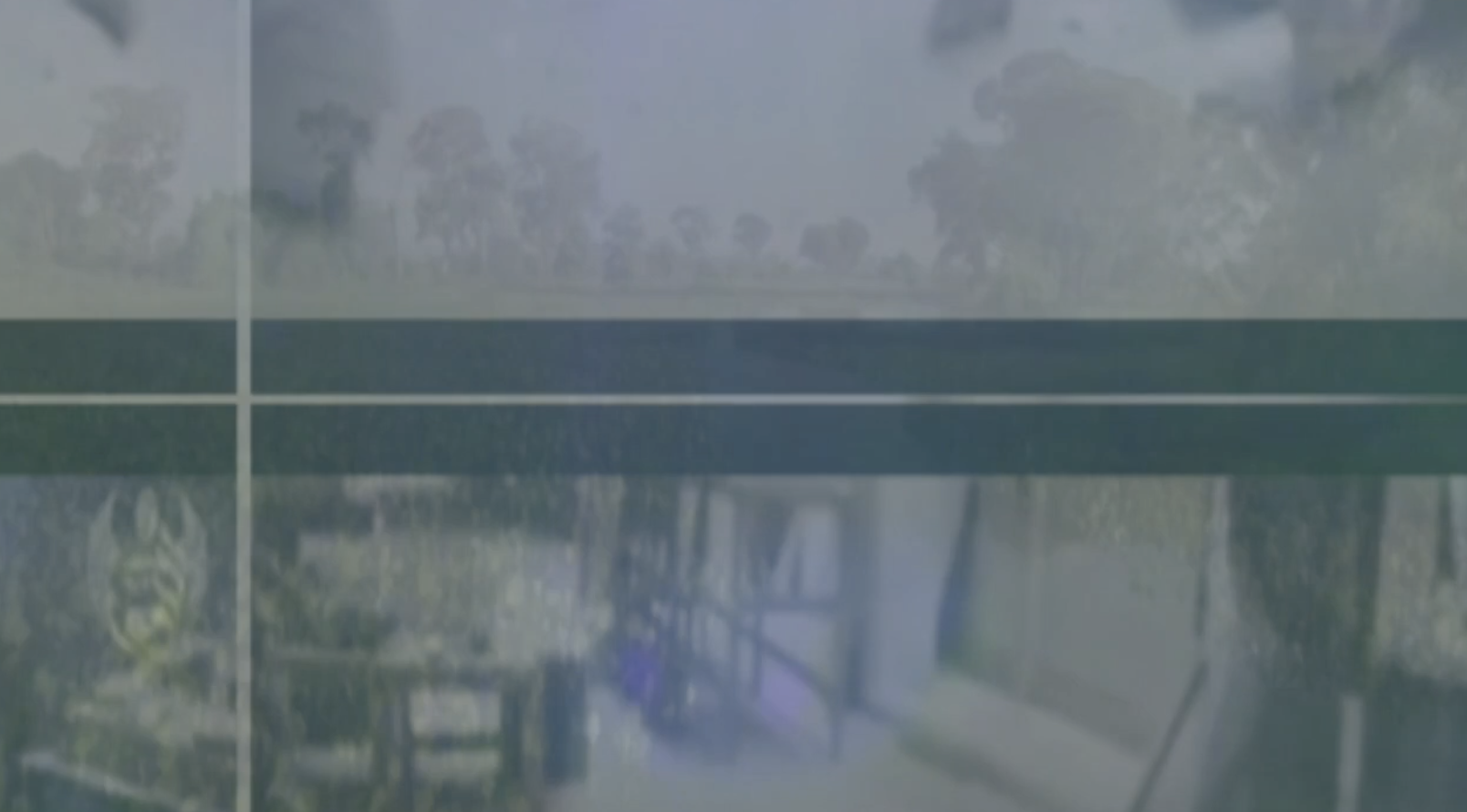
Watch ‘Untoward Equilibrium’
nostr:naddr1qqrk5vj8v45xkagpzpmhxue69uhkummnw3ezuamfdejsygquk99txdv8dly7lsmasw969p70zlj6mnxtyzlk6j0em2tft4fyvgpsgqqqskasumlfl9
More from Hes:
All images and video are credit of Hes, but you are free to download and use for any purpose. If you find joy from my art, please feel free to send a zap. Enjoy life on a Bitcoin standard.
-
 @ 41e6f20b:06049e45
2024-11-17 17:33:55
@ 41e6f20b:06049e45
2024-11-17 17:33:55Let me tell you a beautiful story. Last night, during the speakers' dinner at Monerotopia, the waitress was collecting tiny tips in Mexican pesos. I asked her, "Do you really want to earn tips seriously?" I then showed her how to set up a Cake Wallet, and she started collecting tips in Monero, reaching 0.9 XMR. Of course, she wanted to cash out to fiat immediately, but it solved a real problem for her: making more money. That amount was something she would never have earned in a single workday. We kept talking, and I promised to give her Zoom workshops. What can I say? I love people, and that's why I'm a natural orange-piller.
-
 @ 4ba8e86d:89d32de4
2024-11-14 09:17:14
@ 4ba8e86d:89d32de4
2024-11-14 09:17:14Tutorial feito por nostr:nostr:npub1rc56x0ek0dd303eph523g3chm0wmrs5wdk6vs0ehd0m5fn8t7y4sqra3tk poste original abaixo:
Parte 1 : http://xh6liiypqffzwnu5734ucwps37tn2g6npthvugz3gdoqpikujju525yd.onion/263585/tutorial-debloat-de-celulares-android-via-adb-parte-1
Parte 2 : http://xh6liiypqffzwnu5734ucwps37tn2g6npthvugz3gdoqpikujju525yd.onion/index.php/263586/tutorial-debloat-de-celulares-android-via-adb-parte-2
Quando o assunto é privacidade em celulares, uma das medidas comumente mencionadas é a remoção de bloatwares do dispositivo, também chamado de debloat. O meio mais eficiente para isso sem dúvidas é a troca de sistema operacional. Custom Rom’s como LineageOS, GrapheneOS, Iodé, CalyxOS, etc, já são bastante enxutos nesse quesito, principalmente quanto não é instalado os G-Apps com o sistema. No entanto, essa prática pode acabar resultando em problemas indesejados como a perca de funções do dispositivo, e até mesmo incompatibilidade com apps bancários, tornando este método mais atrativo para quem possui mais de um dispositivo e separando um apenas para privacidade. Pensando nisso, pessoas que possuem apenas um único dispositivo móvel, que são necessitadas desses apps ou funções, mas, ao mesmo tempo, tem essa visão em prol da privacidade, buscam por um meio-termo entre manter a Stock rom, e não ter seus dados coletados por esses bloatwares. Felizmente, a remoção de bloatwares é possível e pode ser realizada via root, ou mais da maneira que este artigo irá tratar, via adb.
O que são bloatwares?
Bloatware é a junção das palavras bloat (inchar) + software (programa), ou seja, um bloatware é basicamente um programa inútil ou facilmente substituível — colocado em seu dispositivo previamente pela fabricante e operadora — que está no seu dispositivo apenas ocupando espaço de armazenamento, consumindo memória RAM e pior, coletando seus dados e enviando para servidores externos, além de serem mais pontos de vulnerabilidades.
O que é o adb?
O Android Debug Brigde, ou apenas adb, é uma ferramenta que se utiliza das permissões de usuário shell e permite o envio de comandos vindo de um computador para um dispositivo Android exigindo apenas que a depuração USB esteja ativa, mas também pode ser usada diretamente no celular a partir do Android 11, com o uso do Termux e a depuração sem fio (ou depuração wifi). A ferramenta funciona normalmente em dispositivos sem root, e também funciona caso o celular esteja em Recovery Mode.
Requisitos:
Para computadores:
• Depuração USB ativa no celular; • Computador com adb; • Cabo USB;
Para celulares:
• Depuração sem fio (ou depuração wifi) ativa no celular; • Termux; • Android 11 ou superior;
Para ambos:
• Firewall NetGuard instalado e configurado no celular; • Lista de bloatwares para seu dispositivo;
Ativação de depuração:
Para ativar a Depuração USB em seu dispositivo, pesquise como ativar as opções de desenvolvedor de seu dispositivo, e lá ative a depuração. No caso da depuração sem fio, sua ativação irá ser necessária apenas no momento que for conectar o dispositivo ao Termux.
Instalação e configuração do NetGuard
O NetGuard pode ser instalado através da própria Google Play Store, mas de preferência instale pela F-Droid ou Github para evitar telemetria.
F-Droid: https://f-droid.org/packages/eu.faircode.netguard/
Github: https://github.com/M66B/NetGuard/releases
Após instalado, configure da seguinte maneira:
Configurações → padrões (lista branca/negra) → ative as 3 primeiras opções (bloquear wifi, bloquear dados móveis e aplicar regras ‘quando tela estiver ligada’);
Configurações → opções avançadas → ative as duas primeiras (administrar aplicativos do sistema e registrar acesso a internet);
Com isso, todos os apps estarão sendo bloqueados de acessar a internet, seja por wifi ou dados móveis, e na página principal do app basta permitir o acesso a rede para os apps que você vai usar (se necessário). Permita que o app rode em segundo plano sem restrição da otimização de bateria, assim quando o celular ligar, ele já estará ativo.
Lista de bloatwares
Nem todos os bloatwares são genéricos, haverá bloatwares diferentes conforme a marca, modelo, versão do Android, e até mesmo região.
Para obter uma lista de bloatwares de seu dispositivo, caso seu aparelho já possua um tempo de existência, você encontrará listas prontas facilmente apenas pesquisando por elas. Supondo que temos um Samsung Galaxy Note 10 Plus em mãos, basta pesquisar em seu motor de busca por:
Samsung Galaxy Note 10 Plus bloatware listProvavelmente essas listas já terão inclusas todos os bloatwares das mais diversas regiões, lhe poupando o trabalho de buscar por alguma lista mais específica.
Caso seu aparelho seja muito recente, e/ou não encontre uma lista pronta de bloatwares, devo dizer que você acaba de pegar em merda, pois é chato para um caralho pesquisar por cada aplicação para saber sua função, se é essencial para o sistema ou se é facilmente substituível.
De antemão já aviso, que mais para frente, caso vossa gostosura remova um desses aplicativos que era essencial para o sistema sem saber, vai acabar resultando na perda de alguma função importante, ou pior, ao reiniciar o aparelho o sistema pode estar quebrado, lhe obrigando a seguir com uma formatação, e repetir todo o processo novamente.
Download do adb em computadores
Para usar a ferramenta do adb em computadores, basta baixar o pacote chamado SDK platform-tools, disponível através deste link: https://developer.android.com/tools/releases/platform-tools. Por ele, você consegue o download para Windows, Mac e Linux.
Uma vez baixado, basta extrair o arquivo zipado, contendo dentro dele uma pasta chamada platform-tools que basta ser aberta no terminal para se usar o adb.
Download do adb em celulares com Termux.
Para usar a ferramenta do adb diretamente no celular, antes temos que baixar o app Termux, que é um emulador de terminal linux, e já possui o adb em seu repositório. Você encontra o app na Google Play Store, mas novamente recomendo baixar pela F-Droid ou diretamente no Github do projeto.
F-Droid: https://f-droid.org/en/packages/com.termux/
Github: https://github.com/termux/termux-app/releases
Processo de debloat
Antes de iniciarmos, é importante deixar claro que não é para você sair removendo todos os bloatwares de cara sem mais nem menos, afinal alguns deles precisam antes ser substituídos, podem ser essenciais para você para alguma atividade ou função, ou até mesmo são insubstituíveis.
Alguns exemplos de bloatwares que a substituição é necessária antes da remoção, é o Launcher, afinal, é a interface gráfica do sistema, e o teclado, que sem ele só é possível digitar com teclado externo. O Launcher e teclado podem ser substituídos por quaisquer outros, minha recomendação pessoal é por aqueles que respeitam sua privacidade, como Pie Launcher e Simple Laucher, enquanto o teclado pelo OpenBoard e FlorisBoard, todos open-source e disponíveis da F-Droid.
Identifique entre a lista de bloatwares, quais você gosta, precisa ou prefere não substituir, de maneira alguma você é obrigado a remover todos os bloatwares possíveis, modifique seu sistema a seu bel-prazer. O NetGuard lista todos os apps do celular com o nome do pacote, com isso você pode filtrar bem qual deles não remover.
Um exemplo claro de bloatware insubstituível e, portanto, não pode ser removido, é o com.android.mtp, um protocolo onde sua função é auxiliar a comunicação do dispositivo com um computador via USB, mas por algum motivo, tem acesso a rede e se comunica frequentemente com servidores externos. Para esses casos, e melhor solução mesmo é bloquear o acesso a rede desses bloatwares com o NetGuard.
MTP tentando comunicação com servidores externos:
Executando o adb shell
No computador
Faça backup de todos os seus arquivos importantes para algum armazenamento externo, e formate seu celular com o hard reset. Após a formatação, e a ativação da depuração USB, conecte seu aparelho e o pc com o auxílio de um cabo USB. Muito provavelmente seu dispositivo irá apenas começar a carregar, por isso permita a transferência de dados, para que o computador consiga se comunicar normalmente com o celular.
Já no pc, abra a pasta platform-tools dentro do terminal, e execute o seguinte comando:
./adb start-serverO resultado deve ser:
daemon not running; starting now at tcp:5037 daemon started successfully
E caso não apareça nada, execute:
./adb kill-serverE inicie novamente.
Com o adb conectado ao celular, execute:
./adb shellPara poder executar comandos diretamente para o dispositivo. No meu caso, meu celular é um Redmi Note 8 Pro, codinome Begonia.
Logo o resultado deve ser:
begonia:/ $
Caso ocorra algum erro do tipo:
adb: device unauthorized. This adb server’s $ADB_VENDOR_KEYS is not set Try ‘adb kill-server’ if that seems wrong. Otherwise check for a confirmation dialog on your device.
Verifique no celular se apareceu alguma confirmação para autorizar a depuração USB, caso sim, autorize e tente novamente. Caso não apareça nada, execute o kill-server e repita o processo.
No celular
Após realizar o mesmo processo de backup e hard reset citado anteriormente, instale o Termux e, com ele iniciado, execute o comando:
pkg install android-toolsQuando surgir a mensagem “Do you want to continue? [Y/n]”, basta dar enter novamente que já aceita e finaliza a instalação
Agora, vá até as opções de desenvolvedor, e ative a depuração sem fio. Dentro das opções da depuração sem fio, terá uma opção de emparelhamento do dispositivo com um código, que irá informar para você um código em emparelhamento, com um endereço IP e porta, que será usado para a conexão com o Termux.
Para facilitar o processo, recomendo que abra tanto as configurações quanto o Termux ao mesmo tempo, e divida a tela com os dois app’s, como da maneira a seguir:
Para parear o Termux com o dispositivo, não é necessário digitar o ip informado, basta trocar por “localhost”, já a porta e o código de emparelhamento, deve ser digitado exatamente como informado. Execute:
adb pair localhost:porta CódigoDeEmparelhamentoDe acordo com a imagem mostrada anteriormente, o comando ficaria “adb pair localhost:41255 757495”.
Com o dispositivo emparelhado com o Termux, agora basta conectar para conseguir executar os comandos, para isso execute:
adb connect localhost:portaObs: a porta que você deve informar neste comando não é a mesma informada com o código de emparelhamento, e sim a informada na tela principal da depuração sem fio.
Pronto! Termux e adb conectado com sucesso ao dispositivo, agora basta executar normalmente o adb shell:
adb shellRemoção na prática Com o adb shell executado, você está pronto para remover os bloatwares. No meu caso, irei mostrar apenas a remoção de um app (Google Maps), já que o comando é o mesmo para qualquer outro, mudando apenas o nome do pacote.
Dentro do NetGuard, verificando as informações do Google Maps:
Podemos ver que mesmo fora de uso, e com a localização do dispositivo desativado, o app está tentando loucamente se comunicar com servidores externos, e informar sabe-se lá que peste. Mas sem novidades até aqui, o mais importante é que podemos ver que o nome do pacote do Google Maps é com.google.android.apps.maps, e para o remover do celular, basta executar:
pm uninstall –user 0 com.google.android.apps.mapsE pronto, bloatware removido! Agora basta repetir o processo para o resto dos bloatwares, trocando apenas o nome do pacote.
Para acelerar o processo, você pode já criar uma lista do bloco de notas com os comandos, e quando colar no terminal, irá executar um atrás do outro.
Exemplo de lista:
Caso a donzela tenha removido alguma coisa sem querer, também é possível recuperar o pacote com o comando:
cmd package install-existing nome.do.pacotePós-debloat
Após limpar o máximo possível o seu sistema, reinicie o aparelho, caso entre no como recovery e não seja possível dar reboot, significa que você removeu algum app “essencial” para o sistema, e terá que formatar o aparelho e repetir toda a remoção novamente, desta vez removendo poucos bloatwares de uma vez, e reiniciando o aparelho até descobrir qual deles não pode ser removido. Sim, dá trabalho… quem mandou querer privacidade?
Caso o aparelho reinicie normalmente após a remoção, parabéns, agora basta usar seu celular como bem entender! Mantenha o NetGuard sempre executando e os bloatwares que não foram possíveis remover não irão se comunicar com servidores externos, passe a usar apps open source da F-Droid e instale outros apps através da Aurora Store ao invés da Google Play Store.
Referências: Caso você seja um Australopithecus e tenha achado este guia difícil, eis uma videoaula (3:14:40) do Anderson do canal Ciberdef, realizando todo o processo: http://odysee.com/@zai:5/Como-remover-at%C3%A9-200-APLICATIVOS-que-colocam-a-sua-PRIVACIDADE-E-SEGURAN%C3%87A-em-risco.:4?lid=6d50f40314eee7e2f218536d9e5d300290931d23
Pdf’s do Anderson citados na videoaula: créditos ao anon6837264 http://eternalcbrzpicytj4zyguygpmkjlkddxob7tptlr25cdipe5svyqoqd.onion/file/3863a834d29285d397b73a4af6fb1bbe67c888d72d30/t-05e63192d02ffd.pdf
Processo de instalação do Termux e adb no celular: https://youtu.be/APolZrPHSms
-
 @ 3bf0c63f:aefa459d
2024-03-23 08:57:08
@ 3bf0c63f:aefa459d
2024-03-23 08:57:08Nostr is not decentralized nor censorship-resistant
Peter Todd has been saying this for a long time and all the time I've been thinking he is misunderstanding everything, but I guess a more charitable interpretation is that he is right.
Nostr today is indeed centralized.
Yesterday I published two harmless notes with the exact same content at the same time. In two minutes the notes had a noticeable difference in responses:
The top one was published to
wss://nostr.wine,wss://nos.lol,wss://pyramid.fiatjaf.com. The second was published to the relay where I generally publish all my notes to,wss://pyramid.fiatjaf.com, and that is announced on my NIP-05 file and on my NIP-65 relay list.A few minutes later I published that screenshot again in two identical notes to the same sets of relays, asking if people understood the implications. The difference in quantity of responses can still be seen today:
These results are skewed now by the fact that the two notes got rebroadcasted to multiple relays after some time, but the fundamental point remains.
What happened was that a huge lot more of people saw the first note compared to the second, and if Nostr was really censorship-resistant that shouldn't have happened at all.
Some people implied in the comments, with an air of obviousness, that publishing the note to "more relays" should have predictably resulted in more replies, which, again, shouldn't be the case if Nostr is really censorship-resistant.
What happens is that most people who engaged with the note are following me, in the sense that they have instructed their clients to fetch my notes on their behalf and present them in the UI, and clients are failing to do that despite me making it clear in multiple ways that my notes are to be found on
wss://pyramid.fiatjaf.com.If we were talking not about me, but about some public figure that was being censored by the State and got banned (or shadowbanned) by the 3 biggest public relays, the sad reality would be that the person would immediately get his reach reduced to ~10% of what they had before. This is not at all unlike what happened to dozens of personalities that were banned from the corporate social media platforms and then moved to other platforms -- how many of their original followers switched to these other platforms? Probably some small percentage close to 10%. In that sense Nostr today is similar to what we had before.
Peter Todd is right that if the way Nostr works is that you just subscribe to a small set of relays and expect to get everything from them then it tends to get very centralized very fast, and this is the reality today.
Peter Todd is wrong that Nostr is inherently centralized or that it needs a protocol change to become what it has always purported to be. He is in fact wrong today, because what is written above is not valid for all clients of today, and if we drive in the right direction we can successfully make Peter Todd be more and more wrong as time passes, instead of the contrary.
See also:
-
 @ 0b118e40:4edc09cb
2025-01-03 16:27:58
@ 0b118e40:4edc09cb
2025-01-03 16:27:58I was reading this book Too Big to Jail by Chris Blackhurst that talks about one of the biggest bank scandals of the century - billions of money laundered through HSBC for the Sinaloa cartel, the world’s largest drug cartel that supplies 25% of illegal drugs to the US. HSBC walked away with a $1.9 billion fine in 2012 and no one was charged or imprisoned. Meanwhile, Joaquín "El Chapo" Guzmán, the cartel’s leader, was sentenced to life in prison + 30 years in the US, with $12.6 billion of his assets forfeited.
Interestingly, HSBC’s dark history dates back to over 150 years. I first read in John Potash’s Drugs as Weapons Against Us about how HSBC was established to serve the opium trade. Chris Blackhurst expands on this story. HSBC’s founder, Thomas Sutherland, had no banking experience but leveraged his trade expertise and British imperial backing to lead a thriving merchant business alongside opium business exporting to China. When China resisted, the British Empire doubled down and escalated tensions, resulting in the Opium Wars, forcing China to accept opium trade and China ceding Hong Kong to Britain for a hundred years
With trade comes the need for fund transfer, hence Sunderland founded HSBC in Hong Kong, to handle foreign transactions. Ironically, 150 years later, HSBC was caught laundering funds for illegal drugs for the Sinaloa cartel between 2003 and 2010. During this period, HSBC's chairman, Stephen Green, an Anglican priest who authored Ethical Capitalism, was never charged. Instead, he became Lord Green and served as the UK’s Minister of State for Trade and Investment.
Chris Blackhurst aptly summarizes this hypocrisy - "HSBC, the fueller of evil, holds its customers to strict standards, yet it enabled cartels to launder metric tonnes of cash."
Other banks and their crimes
The 1MDB scandal:
Billions was embezzled from the Malaysian sovereign wealth fund in the 1MDB scandal. Those convicted were former Prime Minister Najib Razak who was imprisoned, but mastermind behind it Jho Low remains at large. Goldman Sachs, Deutsche Bank, and AmBank were implicated. Goldman Sachs paid a $2.9 billion fine, and Roger Ng was sentenced to 10 years in prison.Tim Lessner pleaded guilty and cooperated with the authorities.
Wells Fargo Fake Accounts Scandal:
From 2002 to 2016, Wells Fargo employees opened millions of fake accounts in customer’s names without their consent to meet aggressive sales quotas.
Libor Interest Rate Rigging:
Major banks, including Barclays, UBS, Citibank and JPMorgan Chase, colluded to manipulate the London Interbank Offered Rate (Libor) which is a global benchmark for interest rates. This impacted trillions of dollars in global financial products.
I'm sure there is more to the list based on what we know and don't know.
Every time Bitcoin gets criticized for “money laundering,” I think of these scandals and the roles that corrupted governments play. Millions of people have suffered from the systemic corruption of traditional finance and they deserve financial liberation.
A 2020 report from Chainalysis indicated that illicit transactions (including money laundering, ransomware payments, and fraud) accounted for only less than 1% of all Bitcoin transactions, which is a speck compared to the scale of corruption in the traditional financial system. The United Nations Office on Drugs and Crime (UNODC) estimates that between 2% and 5% of global GDP , which accounts for trillions of dollars, is laundered each year through the traditional financial systems.
Chris Blackhurst was right when he said those who are “too big to jail” tend to get away.
-
 @ e373ca41:b82abcc5
2025-01-03 16:25:26
@ e373ca41:b82abcc5
2025-01-03 16:25:26ADVERTISEMENT:
Looking for the easiest way to buy Bitcoin and store it yourself? The Relai app is the No. 1 crypto start-up and No. 2 of all fintech start-ups in Switzerland. Here you can buy Bitcoin in just a few steps and also set up savings plans. Nobody has access to your Bitcoin except you. With the referral code MILOSZ you save on fees. (no financial advice).
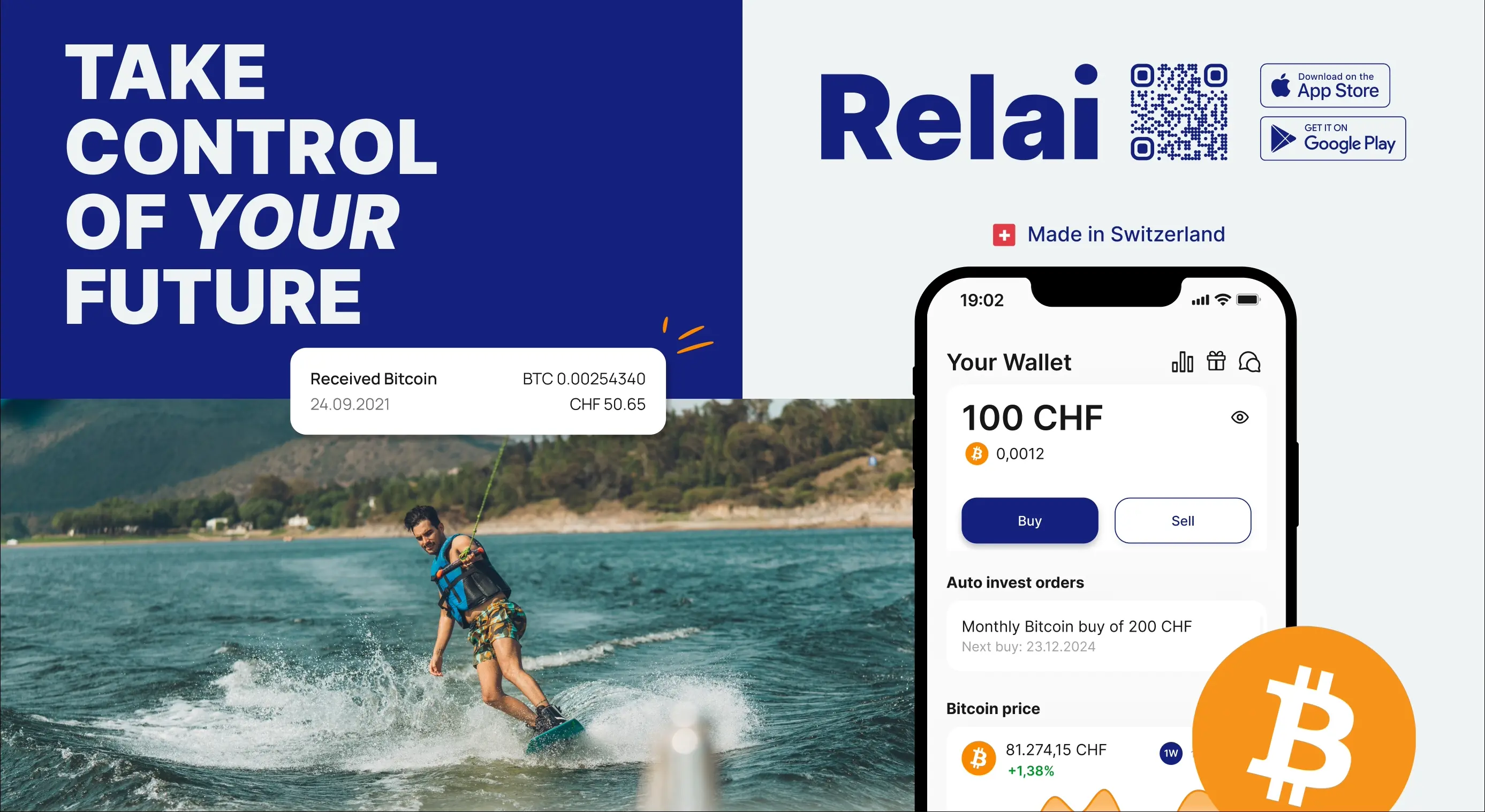
Need more security? The Trezor wallets are recommended and easy to use, others are available in the store. Need more advice? Book an introductory meeting with a wallet expert.
I was told the following story at one of my readings last year.
An elderly couple from a Swiss town with a high density of anthroposophically minded people were said to have been vaccinated against coronavirus. My conversation partner found this unusual, wanted to know the “why” and asked.
“Oh, you know, the two of us had wanted to end our lives voluntarily and in a self-determined way for a long time,” they explained. “When the coronavirus vaccinations came along, we thought: This is our chance!”
Absurd times
I had to laugh. What an absurd time to live in. Actually only bearable as a meme. Last year was also a year in which things were reversed. Everything is upside down and yet should seem normal. Calling minister of economy Habeck a moron in a meme resulted in a house search and an insult lawsuit. Calling Alice Weidel, leader of opposition AFD a "Nazi bitch", on the other hand, is no problem. The new normal: reality as permanent satire.

(when you read this, you caught it already)
But this image is breaking down, it is being recognized and increasingly rejected:
- Stagings with satanic overtones at the Olympics & Co. caused a wave of outrage.
- Medium magazine named the nomenklatura journalists from Correctiv as journalist of the year, at the same time as their core thesis of a remigration conspiracy was melting away.
- The “reason of state for Israel” was a Nibelung allegiance for war criminals: a Netanyahu would have to be arrested on German soil if Germany wanted to comply with international law.
- The woke influencer and Böhmermann gag writer “El Hotzo”, one of the “self-reflective feminist men” in the outside media world (he wished Trump dead after the assassination attempt), has now had to publicly confess to having manipulated and gaslighted women for years and to having exploited his media position to do so.
- The Magdeburg attacker is being framed on the right, police laws and surveillance are to be stepped up, but the media are warning that extremists are now exploiting this event for their own ends. Very interesting: because the danger comes from the right, we protect Christmas markets instead of mosques. Nobody takes all this seriously anymore.
Many half-dead zombie topics are starting to move again. The lab leak theory has been confirmed once again. The Paul Ehrlich Institute (whose job is the oversight of vaccines, among others) virtually admitted that certain vaccine batches were more dangerous than others. Why didn't it intervene? This is what state-perpetrated killing and bodily harm by omission looks like. Has Paul Cichutek (former head of PEI) already been arrested, his house searched and documents confiscated (along with the "Federal Cross of Merit")?
Most recently, a Yale study (still unpublished) showed that spike proteins were still detectable two years after vaccination, and an effect on genetic material is not ruled out. Sounds a lot like the “conspiracy theories” of 3 years ago. Yet in this country, the state still recommends this vaccination to pregnant women. It won't be possible to put all these educational topics in a repository for toxic information, as the leaked RKI protocols have recently shown. The tide is turning, the picture is clearing. But slowly and not on page 1 of the newspapers and their editors, who are now fighting for survival because nobody wants to read their lies anymore. “Another hundred years of newspapers and all words will stink,” Nietzsche said a good 100 years ago.

("Power replaces first class talent by idiots, as lack of intelligence and creativity is always the best guarantee for loyalty", Hannah Arendt)
Do not live with lies
Fifty years ago, Alexander Solzhenitsyn published the text “Do not live with lies” (1974), in which he points out the antidote to lies:
“Our way: CONSCIOUSLY SUPPORT THE LIE IN NOTHING! Recognize where the boundary of the lie is (it looks different for everyone) - and then step back from this life-threatening boundary! Do not glue together the dead knuckles and scales of ideology, do not mend the rotten rag - and we will be amazed at how quickly and helplessly the lie falls away, and what should stand naked and bare will then stand naked and bare before the world.”
You can laboriously help build lies, submit to an ideology that nourishes you for a while. But when the edifice of lies collapses, nothing else will help. Every lie wears out and is eventually overtaken by reality. We see that the spans of lies are getting shorter and shorter, that the roller of reality is rolling over them faster and faster.
“We can't force them to tell the truth. But we can make them lie more and more brazenly.”
I've read this sentence a lot recently. Sometimes it is attributed to Ulrike Meinhof, sometimes to Bernward Vesper, Gudrun Ensslin's husband. I find the quote remarkable because it directs our attention away from what we cannot and will never change, namely the existence of the lie itself, towards what we can change: the soil on which the lie grows or does not grow. In the Luhmannian sense, we must look away from the system (the lie) and towards the environment or surroundings in which it thrives or not. The path from lies to truth is the same as the path from slavery to freedom. The revolutionary poet Georg Herwegh formulated this in his poem “A lane for freedom - der Freiheit eine Gasse” (1841):
“When all the world lost courage,\ To begin the feud,\ You, my people, stand before the nations,\ Let your heart's blood run!\ Give us the man who grasps the banner\ Of the new age,\ And through Europe we will break\ A lane for freedom!”
- Julian Assange is free! He is Herwegh's “man” for me.
- Satoshi Nakamoto, the inventor of Bitcoin, is Herwegh's “man” for me.
- Austrian singer Udo Jürgens, tenth anniversary of whose death was recently celebrated, was Herwegh's “man” for me: “I am in favor of dissent being allowed, I even consider it a duty.”, he sings. Even chansonniers from 20 years back would qualify as subversive today.
https://www.youtube.com/watch?v=McgZEA6BZiY * We are all Herwegh's “man”. There is not just one to hope and wait for, but many of our kind and more and more of them.
I was able to get to know many of them this year when I visited a good 50 places on my reading tour. Four years ago, we worked together to create an avenue for freedom when we published the “Appeal for free debate spaces”. * Today, together with a team of developers, I am building the Pareto project, another alleyway for the freedom of information.
I wish you all a happy new year and thank you very much for your loyalty and support of my work!
This article by Milosz Matuschek first appeared in German on Freischwebende Intelligenz.
Join the marketplace of ideas! We are building a publishing ecosystem on Nostr for citizen-journalism, starting with a client for blogging and newsletter distribution. Sound money and sound information should finally be in the hands of the people, right? Want to learn more about the Pareto Project? Zap me, if you want to contribute (all Zaps go to the project).
Update: Since my last article on the Pareto project, we have received more than 50 messages from publications, journalists, authors, testers and supporters. Thank you very much, we are happy to help everyone become censorship-resistant! May just take a little time. Are you a publication and want to be part of it, test us, migrate your content to Nostr? Write to team@pareto.space
Not yet on Nostr and want the full experience? Easy onboarding via Nosta.me.
-
 @ 58937958:545e6994
2025-01-03 11:07:06
@ 58937958:545e6994
2025-01-03 11:07:06January 3, 2024 I made a Bitcoin-inspired Osechi to celebrate Bitcoin's birthday. Everything was handmade! Osechi: A traditional Japanese New Year’s feast, typically served in stacked boxes.
First Layer (Ichino-jū)

- Tazukuri: Dried sardines, symbolizing a wish for a bountiful harvest.
- Simmered Kuai: A vegetable with large sprouts, symbolizing growth and success.
- Kombu Rolls: A play on words with the Japanese term yorokobu ("to be joyful"), making it a good luck dish.
- Matsukazeyaki: Ground meat coated with sesame or poppy seeds on one side, symbolizing honesty (no "hidden side").
- Black Beans: Represent hard work and good health.
- Datemaki: Sweet rolled omelet resembling scrolls, symbolizing knowledge and learning.
- Grilled Yellowtail: A fish whose name changes as it grows, symbolizing success. Salmon Terrine: A classic addition to Western-style Osechi. Salmon symbolizes success, avoiding misfortune (sakeru), and prosperity for future generations.
- Tataki Gobo: Burdock root with deep roots, symbolizing family stability and prosperity.
Second Layer (Nino-jū)

- Candied Kumquat: A dish symbolizing wealth and good fortune.
- Namash: Pickled daikon and carrot, resembling celebratory red and white decorations.
- Chestnut Kinton: Golden in color, symbolizing wealth and a prosperous year.
Bitcoin-themed additions:
- Pumpkin Yokan
- Chicken and Spinach Terrine
- Kinako Sticks
Third Layer (Sanno-jū)
 Nishime: A simmered dish with various ingredients, symbolizing family harmony and long-lasting prosperity.
I used snow peas to represent Bitcoin, and I couldn’t help but laugh at myself.
Nishime: A simmered dish with various ingredients, symbolizing family harmony and long-lasting prosperity.
I used snow peas to represent Bitcoin, and I couldn’t help but laugh at myself.Dishes Inspired by Bitcoin
Pumpkin Yokan
 I made firm milk jelly, cut it into a "B" shape with a knife, and filled it with pumpkin yokan.
I made firm milk jelly, cut it into a "B" shape with a knife, and filled it with pumpkin yokan.Chicken and Spinach Terrine
 It was my first attempt, and I think with more care, the shape could be even better.
It was my first attempt, and I think with more care, the shape could be even better.Kinako Sticks
 A simple snack made with honey and roasted soybean flour (kinako).
Roll it out, cut it into sticks, and coat with more kinako.
A simple snack made with honey and roasted soybean flour (kinako).
Roll it out, cut it into sticks, and coat with more kinako.Candied Kumquat
 Candied Kumquat: A dish symbolizing wealth and good fortune.
In Japan, 金柑 (kumquat) includes the kanji 金, which represents "gold."
Candied Kumquat: A dish symbolizing wealth and good fortune.
In Japan, 金柑 (kumquat) includes the kanji 金, which represents "gold."nostr:nevent1qqspu8gegzdamtx2rsm4995t3sg8qssw3vn3yn25ru8plghsqyrwtkcn0u7vy
I wonder what Satoshi might have eaten on the day Bitcoin was born. Wouldn't it be amusing to imagine him snacking on Osechi while working on his computer? (Satoshi chose a Japanese name, so perhaps he might have an interest in Japanese culture.) Maybe, right now, Satoshi is relaxing and enjoying some Osechi... though probably not! In any case, I hope Satoshi is living peacefully somewhere.
-
 @ 58937958:545e6994
2025-01-03 11:01:49
@ 58937958:545e6994
2025-01-03 11:01:492024年1月3日 ビットコインのお誕生日に合わせて ビットコインっぽい具材を入れたおせちを作りました 全部手作りです
1の重
 (左上から)
(左上から)- 田作り…田んぼに田作り(カタクチイワシ)を肥料として撒いたことから、豊作祈願の意味合いがある。
- くわいの煮物…大きく芽が出る野菜で、出世や成功を祈る。
- 昆布巻き…「喜ぶ(よろこぶ)」の語呂合わせで縁起物。
- 松風焼き…表面だけケシの実やゴマをまぶす=裏がない→隠し事のない正直な生き方ができるように、という意味が込められている
- 黒豆…「まめに働く」ことや健康を祈る。
- 伊達巻き…巻物に似ていることから、知識が豊富になるようにと願いが込められている。
- ぶりの幽庵焼き…ぶりは成長とともに名前が変わる出世魚で、将来の出世を願う。
- 鮭のテリーヌ…洋風おせちの定番。鮭には「出世」「災いを避け(サケ)る」「子孫繁栄」などの意味がある
- たたきごぼう…根が深く張るごぼうは家族や子孫繁栄の象徴。
2の重

- 金柑の甘露煮…金柑の「金」の文字から、金運や財運を祈る。
- なます…紅白の水引のような形状で祝いの意味がある
- 栗きんとん…黄金色が金運を表し、豊かな1年を願う。
以下はビットコイン具材として入れました
- カボチャようかん
- 鶏とほうれん草のテリーヌ
- きな粉棒
3の重
 煮しめ…様々な具材を一緒に煮ることから、「皆で仲良く、末永く繁栄するように」という願いが込められている
きぬさやのBは我ながらちょっと笑ってしまった
煮しめ…様々な具材を一緒に煮ることから、「皆で仲良く、末永く繁栄するように」という願いが込められている
きぬさやのBは我ながらちょっと笑ってしまったビットコインを意識して作った具材
カボチャようかん
 固めの牛乳かんを作り、包丁でBの形に切り抜いて、カボチャのようかんを流す感じです
固めの牛乳かんを作り、包丁でBの形に切り抜いて、カボチャのようかんを流す感じです鶏とほうれん草のテリーヌ
 鶏むね肉とはんぺんをミンチにして、半分にほうれん草を入れて形作りました
初めて作ったので不安でしたが丁寧に作ればもっと良い形になると思いました
鶏むね肉とはんぺんをミンチにして、半分にほうれん草を入れて形作りました
初めて作ったので不安でしたが丁寧に作ればもっと良い形になると思いましたきな粉棒
 はちみつときな粉だけで作る駄菓子的なおやつです
のばして包丁で切り抜いてきな粉をまぶします
はちみつときな粉だけで作る駄菓子的なおやつです
のばして包丁で切り抜いてきな粉をまぶします金柑の甘露煮
 丸くてオレンジ色なので作ってみました
しかも名前に「金(ゴールド)」が入っているのでビットコイン食材のポテンシャルがあると思います
とろける感じでめっちゃおいしかったです
丸くてオレンジ色なので作ってみました
しかも名前に「金(ゴールド)」が入っているのでビットコイン食材のポテンシャルがあると思います
とろける感じでめっちゃおいしかったですnostr:nevent1qqspu8gegzdamtx2rsm4995t3sg8qssw3vn3yn25ru8plghsqyrwtkcn0u7vy
サトシはビットコインが生まれたその日に何を食べていたのかなぁと おせちをつまみながらパソコンに向かっていたりしたら面白いなぁと思いながら作りました (日本文化が好きだから日本名にした可能性はあるかな~とか)
今頃のんびりおせちを食べてくつろいでいる・・・なんてことはないですかね 何にせよサトシが平和に暮らしていればいいなぁと思います
-
 @ a4a6b584:1e05b95b
2025-01-02 18:13:31
@ a4a6b584:1e05b95b
2025-01-02 18:13:31The Four-Layer Framework
Layer 1: Zoom Out

Start by looking at the big picture. What’s the subject about, and why does it matter? Focus on the overarching ideas and how they fit together. Think of this as the 30,000-foot view—it’s about understanding the "why" and "how" before diving into the "what."
Example: If you’re learning programming, start by understanding that it’s about giving logical instructions to computers to solve problems.
- Tip: Keep it simple. Summarize the subject in one or two sentences and avoid getting bogged down in specifics at this stage.
Once you have the big picture in mind, it’s time to start breaking it down.
Layer 2: Categorize and Connect

Now it’s time to break the subject into categories—like creating branches on a tree. This helps your brain organize information logically and see connections between ideas.
Example: Studying biology? Group concepts into categories like cells, genetics, and ecosystems.
- Tip: Use headings or labels to group similar ideas. Jot these down in a list or simple diagram to keep track.
With your categories in place, you’re ready to dive into the details that bring them to life.
Layer 3: Master the Details

Once you’ve mapped out the main categories, you’re ready to dive deeper. This is where you learn the nuts and bolts—like formulas, specific techniques, or key terminology. These details make the subject practical and actionable.
Example: In programming, this might mean learning the syntax for loops, conditionals, or functions in your chosen language.
- Tip: Focus on details that clarify the categories from Layer 2. Skip anything that doesn’t add to your understanding.
Now that you’ve mastered the essentials, you can expand your knowledge to include extra material.
Layer 4: Expand Your Horizons

Finally, move on to the extra material—less critical facts, trivia, or edge cases. While these aren’t essential to mastering the subject, they can be useful in specialized discussions or exams.
Example: Learn about rare programming quirks or historical trivia about a language’s development.
- Tip: Spend minimal time here unless it’s necessary for your goals. It’s okay to skim if you’re short on time.
Pro Tips for Better Learning
1. Use Active Recall and Spaced Repetition
Test yourself without looking at notes. Review what you’ve learned at increasing intervals—like after a day, a week, and a month. This strengthens memory by forcing your brain to actively retrieve information.
2. Map It Out
Create visual aids like diagrams or concept maps to clarify relationships between ideas. These are particularly helpful for organizing categories in Layer 2.
3. Teach What You Learn
Explain the subject to someone else as if they’re hearing it for the first time. Teaching exposes any gaps in your understanding and helps reinforce the material.
4. Engage with LLMs and Discuss Concepts
Take advantage of tools like ChatGPT or similar large language models to explore your topic in greater depth. Use these tools to:
- Ask specific questions to clarify confusing points.
- Engage in discussions to simulate real-world applications of the subject.
- Generate examples or analogies that deepen your understanding.Tip: Use LLMs as a study partner, but don’t rely solely on them. Combine these insights with your own critical thinking to develop a well-rounded perspective.
Get Started
Ready to try the Four-Layer Method? Take 15 minutes today to map out the big picture of a topic you’re curious about—what’s it all about, and why does it matter? By building your understanding step by step, you’ll master the subject with less stress and more confidence.
-
 @ 45bda953:bc1e518e
2025-01-03 10:33:02
@ 45bda953:bc1e518e
2025-01-03 10:33:02I did not need to learn to understand Bitcoin. Understanding Bitcoin was intuitive for me. I loved reading as a kid. Asterix and Tintin comics were a staple for me and I grew into the F.W.Dixon Hardy Boys books. Reading about theft, danger and sleuth mysteries pivoting into fantasy stories and then all manner of fiction and authors I am not going to name because it does not really matter and most I have forgotten. I devoured a substantial amount of fiction as a child. At one point when I was 13 years old in 2000 I decided to read a grown up book. My dad had a copy of Des Griffin's book (Fourth Reich of the Rich) on his bookshelf. The reason I picked that book is because it looked serious and ominous and it had a big swastika on the cover. I assumed that if I am going to read a grown up book this one seemed to challenge me. I read the book and it blew my tiny child brain wide open. I realised how complex and potentially evil the world could be. No one forced me to read it, no one recommended the book to me. Learning about the financial system and how finance is used to break the spirit of man and corrupt our lives with war and destruction germinated questions and doubts in my mind. Sunday school, rainbows and butterflies be damned. My world was shattered and I needed answers. I decided to go as far back as I possibly could and before the end of that year I had finished reading the Bible. I had an orange NIV at the time and I just started at page one and read every day until Revelations 22. In hindsight I managed to learn very little on my first read through, my underdeveloped mind lacked a lot of life experience and wisdom to really understand most of what I consumed but I had built a skeleton of the time line anchoring me through world history and that was more meaningful than I understood at the time. The most important thing I discovered about myself in the year 2000 is that I was obsessed with history not for history's sake. I needed to understand the why behind the why. I was on a mission to discover why evil exists and what is going to fix it. I had read through the Bible cover to cover about 7 times since. For the next couple of years I went onto the rabbit hole of conspiracy and mysticism. I had read the largest amount of nonsense rubbish books written by some of the most depraved moronic minds the world had ever conjured into existence, hoping that I would find some clue to the origins and purpose of evil and it's elusive cure. When a 15 year old reads Morals and Dogma by Albert Pike trying to find a grain of truth only to realise he has discovered delusional hocus pocus aerie faerie shit moving on to the next author spouting incessant crap leading nowhere. It took me many years to learn that there is no magic behind the freemasonic order or Adam Weishaupt's Illuminati. I concluded that there did not exist a freemason who knew the truth or would communicate the reality about the existence of their order and it's origins. After reading hundreds of books and documents ranging from Aesop to Marx to I had to capitulate into a nihilistic faith in Christ. Because the answer to evil was simply a hope in the second coming where Jesus might wipe out evil and punish sin. The only way an inkling of justice could exist among mankind. Having discovered this hope the way I did was not healthy because inaction is the only requirement and all action becomes meaningless. If good and right cannot project from within the created being and it is doomed to be a spectator to the performance of divine justice then I might just as well capitulate and die for my life is just as meaningless as the one who does all that is right and good. I reverted to an ecclesiastical, stoic, nietzschean frame of mind, everything is meaningless and nothing means anything, all can go fuck themselves. It was a doom loop in my mind which lead me to giving no shits about anything. I would drink, do dangerous things just to exact my own private kind of revenge on whoever I felt deserved it. I hated the world and wanted to see it all burn. My most ardent hate was reserved for money and people who showed any form of respect for money or wealth. A homeless woman confronted me on the street one day asking if I have money for her. I took all the money I had in my wallet and said to her all I have is this communist rubbish paper and I said to her she can have it all but I feel bad that I don't have anything of value to give her. It was about R70, I did not have much. She started crying when I gave it to her and she even seemed unwilling to take it when I offered it to her more insistingly.
I cleaned up my act a bit when I met a girl I liked and we started a relationship. She was still at school and I picked her up in my Volkswagen Golf after school and took her home every day. With time as our relationship developed I started to feel responsible for her well being seeing how emotionally dependant she became on me over time. I did not have a job. I was always setting up LANS and playing computer games with my buddies and sponging of my parents, I had no interest in earning income or looking for a job. In spite of this unproductive attitude to life my girlfriend loved me, I could articulate abstract concepts and explain mysteries and organise thoughts into coherent ideas of life and philosophy and we had many friends. I decided that I was going to get my life in order so that I can man up to the responsibility of having a woman in my life. I got a job at a car dealer got into a fight with the manager and fired my boss after a week of witnessing the most shallow insipid style of life and world view. The fiat system was so repulsive to me it would make me sick. I even refused to open a bank account which did not help with trying to find employment. I ended up working for my father learning skills from a man I could respect because his character was honourable and above reproach. I could disagree with him and retain my respect for him. He was stuck in a fiat clutch of debt, a hard worker and honest businessman but the fiat world never allows good men a moment for pause. He was willing to pay me in cash and I started to provide for my young wife and newborn daughter. I discovered the bitcoin whitepaper in 2011, in this time but I was not in a position to attain any because the rails for purchase did not yet exist in my country, I did not have internet access at home and my PC was just standing at my parents house at the time so mining was not an option.
We did not even have electricity, I shut it off because I had a fight with my wife's fiat minded family who wanted to split the electric bill on the property equally. I had purchased a kwh meter that I was going to install at my distribution board to calculate how many units of power we used monthly. They did not like that idea and I got push back from them. So I disconnected our house and paid the two following bills, when the third bill came I did not pay. They were very surprised to find out that we were living without electricity to for two months already and they did not even have a difference in the price of the electric bill. We were hardly using any power and was paying a bulk chunk of their bills. Anyway...
I immediately understood Bitcoin and the problems it could solve for me personally with regards to the fact that I hated money so much. My disconnect with reality suddenly did not reflect my madness but the madness of the world. I adopted Bitcoin in my heart and had my hopes pinned on it achieving some type of success. Bitcoin became a placeholder in my mind thereafter something I knew I would keep track of into the future. In 2016 sometime I watched a video where Jack Mallers discussed placing verifiable and peer to peer bets on chess games online using Bitcoin. I got so excited I wanted to explode, I called my dad and my brothers and I wanted them to see the video. Their reaction left me disappointed because I realised that the implications of what this tech could become was lost on them and I could not adequately explain it in analogies that made sense, I just seemed like a rambling nutcase. Anyway I did a bit of searching and found that it was possible to buy Bitcoin online in South Africa. I did not waste any time and opened a bank account for the first time in 11 years. (I had a savings account when I was a kid.) I needed to be able to do transfers to purchase bitcoin. Our first purchase was R150 we ended up with 90 rand after the exchange took a third of the amount in withdrawal fees because I immediately taught myself how to and took self custody. It was about 0.01170000 sats. I used all those sats to order a type of debit card from England wherewith I tried spending the bitcoin at a local supermarket. I was not trying to save the sats, I wanted to test the technology and did not know I was spending potentially thousands of rands in future savings buying a card and some junk food. It worked for about two weeks then regulations forced the company that supplied the card to shut down its services. They emailed me and apologised. I did not care, this technology was going to change the world forever, the only thing I could not yet predict was how long it would take for adoption to happen. In my mind we were on the precipice of a revolution and the whole world was going to see the light overnight. I was so wrong and my expectations were 100% unrealistic. I had way too much confidence in humanities collective intelligence and their ability to see the change in monetary dynamics I perceived as the ultimate liberation of all mankind. When I realised how unresponsive people are to this I took up the responsibility of educating everyone I came in contact with about Bitcoin and I did not even own any meaningful amount properly yet. The price did not matter to me. I did not even understand how valuable it would become as wealth, the function of cutting out all intermediate institutions was the selling point for me. No one valued, understood or even bothered taking me seriously. Some people humoured me and some laughed and scoffed at me. I became frustrated. But for the first time in my life, I had hope, meaning, something to aspire to...
...and that is valuable.
To be continued...
...
bitbib
-
 @ d902ac01:6d69de69
2025-01-03 09:39:57
@ d902ac01:6d69de69
2025-01-03 09:39:57 -
 @ 1c7629da:d831cb25
2025-01-03 09:08:51
@ 1c7629da:d831cb25
2025-01-03 09:08:51Introduction
The Bitcoin Whitepaper is the foundation of the modern cryptocurrency world. Written by Satoshi Nakamoto, it marked the start of a revolution in finance. In this post, we take a detailed look at the Whitepaper: when and why it was written, what it contains, what is missing, and how Bitcoin has developed since then.
When and why was the Bitcoin Whitepaper published?
The Whitepaper, titled "Bitcoin: A Peer-to-Peer Electronic Cash System," was published on October 31, 2008, by Satoshi Nakamoto. During the global financial crisis, Nakamoto presented a decentralized solution for digital payments. The goal was to create an electronic payment system that operates without a central authority and allows users to send money directly to each other.
What is in the Bitcoin Whitepaper?
The nine-page document describes the technical foundation and philosophy behind Bitcoin. Here are the key points:
- Introduction: The problems with the current financial system are explained. Nakamoto describes the need for a system based on cryptographic proof instead of trust.
- Transactions: Bitcoin transactions are digital signatures passed in a chain of ownership. This prevents double spending.
- Timestamp Server: Transactions are grouped into blocks and linked through timestamps. This secures the blockchain.
- Proof-of-Work: To prevent manipulation, proof-of-work is required to create new blocks.
- Network: Participants send transactions to the entire network. Valid blocks are accepted by consensus and added to the blockchain.
- Incentives: Miners are rewarded with new bitcoins and transaction fees.
- Storage Space: The paper describes ways to save space by removing unnecessary transactions.
- Privacy: Bitcoin allows pseudonymous transactions since no real names are used, only public keys.
What is not in the Whitepaper?
Although the Whitepaper clearly defines the basics, many important details found in Bitcoin today are missing:
- 21 Million Bitcoin: The maximum supply of 21 million Bitcoin is not mentioned.
- Block Time: The average block time of 10 minutes is not specified.
- Mining Algorithm: The 1 MB block size limit and adjustments to mining difficulty are not included.
- Signature Methods: The paper does not describe specific signature methods like P2PKH or Schnorr signatures.
How is Bitcoin different from the Whitepaper today?
Bitcoin has changed significantly since the Whitepaper was published. Some of the biggest differences include:
- Mining: Bitcoin was originally mined using CPUs, but today specialized ASIC devices dominate.
- Consensus Mechanism: The idea of the "longest chain" has been replaced by the heaviest chain to prevent timewarp attacks.
- Transaction Types: Multi-signature addresses, Taproot, and other upgrades have been introduced.
- Scaling: Technologies like the Lightning Network have been developed to make Bitcoin faster and more scalable.
Conclusion
The Bitcoin Whitepaper is a masterpiece of clarity and simplicity that explains a complex idea in just a few pages. However, Bitcoin is not static – it has evolved continuously over the past 16 years. The Whitepaper remains the foundation that defines the vision of a decentralized money system for the world.
-
 @ 1cb14ab3:95d52462
2025-01-03 06:00:20
@ 1cb14ab3:95d52462
2025-01-03 06:00:20

































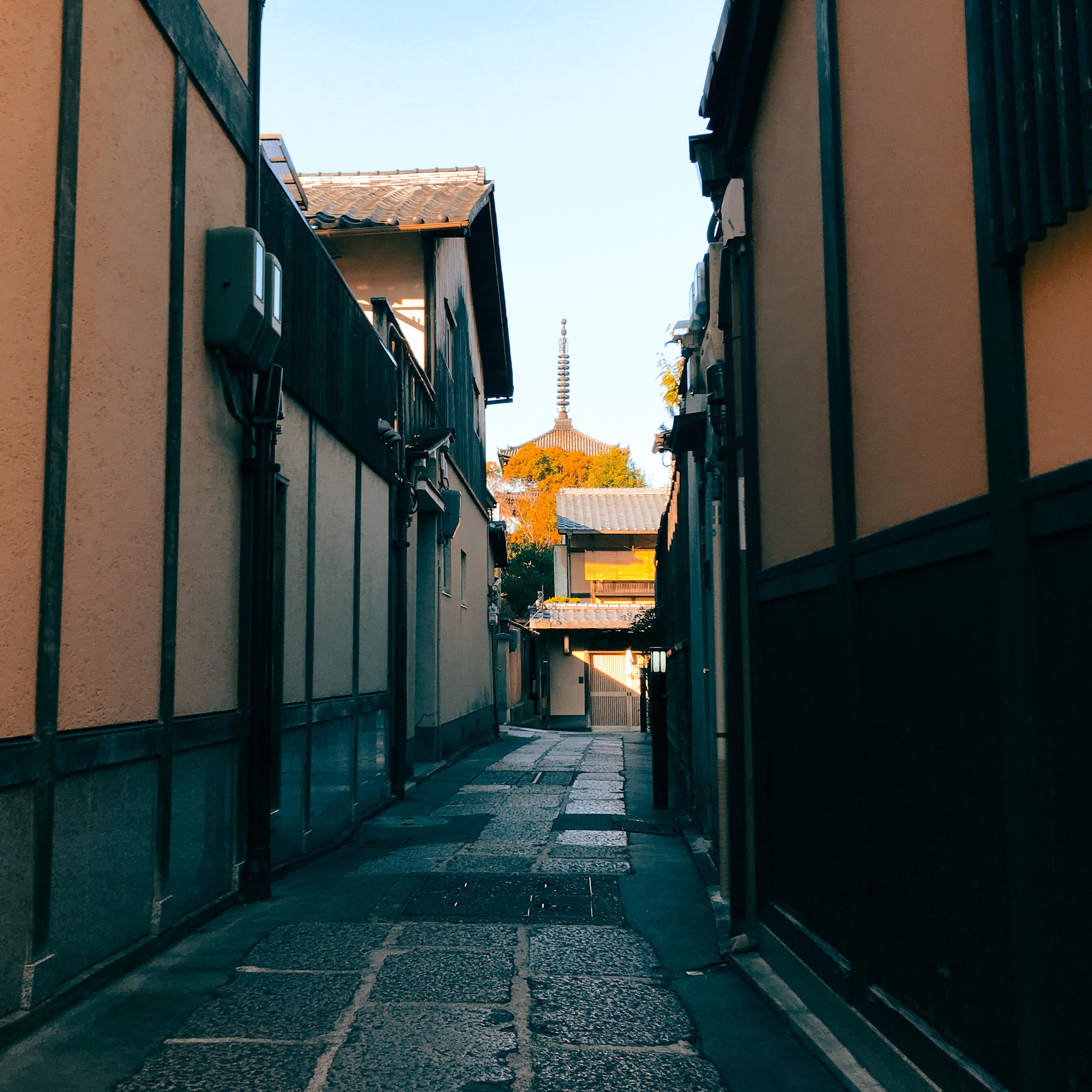









Previous Works in the Series:
More from Hes:
All images are credit of Hes, but you are free to download and use for any purpose. If you find joy from these photos, please feel free to send a zap. Enjoy life on a Bitcoin standard.
-
 @ a012dc82:6458a70d
2025-01-03 02:14:32
@ a012dc82:6458a70d
2025-01-03 02:14:32Discover the controversial perspective that the fiat currency system, managed by central banks, resembles a legal Ponzi scheme. Uncover the nuances of fiat currency, central banking, and its potential parallels to Ponzi schemes. Also, explore the significance of Bitcoin in challenging traditional financial norms and its role as an emerging alternative. Is the foundation of our modern financial system truly as it seems, and can Bitcoin redefine the future of money?
Table Of Content
-
The Fiat System: A Legal Ponzi Scheme?
-
Bitcoin's Challenge to the Fiat System
-
Bitcoin's Resistance to Manipulation
-
The Emergence of Bitcoin ETFs
-
Root Causes of Financial Frauds
-
Conclusion
-
FAQs
The Fiat System: A Legal Ponzi Scheme?
In the world of finance and economics, few terms are as polarising and provocative as "Ponzi scheme." Often associated with high-profile frauds and financial scandals, the concept of a Ponzi scheme typically conjures images of disgraced con artists and their unsuspecting victims. However, could it be that a similar model, albeit operating legally, is at the very core of our modern financial system?
At its core, the fiat monetary system is characterised by a crucial feature: the absence of intrinsic value. Unlike Bitcoin or other commodities that underpinned historical monetary systems, fiat currencies like the US dollar are not backed by tangible assets. Instead, their value is derived solely from the trust and confidence that people place in the issuing government or central authority.
A Ponzi scheme operates on the premise that returns to earlier investors are paid with the capital of newer investors, creating the illusion of profitability. This structure works as long as fresh investments continually pour in, masking the absence of a legitimate revenue source. The fiat system, in an eerily similar fashion, is perpetuated by continually increasing debt and the circulation of more currency.
In the fiat system, governments create money by issuing debt. The expansion of the money supply comes from loans that must eventually be repaid with interest. When these loans come due, governments often issue new debt to pay off the old, resulting in a growing debt burden. Just as a Ponzi scheme must attract new investors to maintain the illusion of solvency, governments must accumulate more debt to meet previous obligations, putting the burden on future generations.
The fiat system's longevity relies on a constant cycle of currency devaluation and inflation. Governments can effectively reduce the real value of their debt by inflating the currency, shifting the cost onto the populace. While this may seem sustainable in the short term, it mirrors the Ponzi scheme's tactic of robbing Peter to pay Paul. In both cases, there's a fundamental issue of sustainability.
Bitcoin's Challenge to the Fiat System
In recent years, Bitcoin has emerged as a revolutionary force challenging the traditional fiat monetary system. Built on the principles of decentralisation and indepence, poses a significant threat to the established norms of central banking and government-issued currencies.
Bitcoin operates on a decentralised network of computers, known as the blockchain. Unlike fiat currencies controlled by central banks, Bitcoin is not subject to the whims of any single authority. This decentralised nature promotes transparency, security, and trust among its users, effectively challenging the centralised control of fiat money.
One of Bitcoin's most distinctive features is its capped supply of 21 million coins. This scarcity stands in stark contrast to fiat currencies that can be printed endlessly by governments. Bitcoin's limited supply acts as a hedge against inflation, making it an attractive store of value.
Bitcoin's technology ensures secure ownership of assets. Users have control over their private keys, reducing the risk of unauthorised seizures or asset freezes, a concern in the fiat system.
Bitcoin is accessible to anyone with an internet connection, providing financial inclusion to the unbanked and underbanked populations. This inclusivity challenges the exclusivity of fiat systems, which often require intermediaries and traditional banking infrastructure.
The decentralised nature of Bitcoin makes it resistant to censorship, ensuring that transactions are not subject to arbitrary restrictions or controls, as seen in some fiat-based systems.
Bitcoin's disruptive potential in the world of finance is undeniable. Its challenge to the fiat system represents a shift in the way we think about money, wealth, and economic systems. As Bitcoin continues to gain mainstream acceptance, it raises fundamental questions about the future of currency and financial infrastructure.
Bitcoin's Resistance to Manipulation:
In the world of finance and economics, the notion of a truly decentralised, trustless, and censorship-resistant form of money is both revolutionary and, to some, unnerving. Bitcoin, stands as a testament to the potential of digital assets to challenge conventional fiat currencies and the centralised systems that underpin them. A fundamental aspect of Bitcoin's allure is its resistance to manipulation, a quality that sets it apart from traditional financial systems and even some other cryptocurrencies.
At its core, Bitcoin operates on a blockchain – a distributed ledger that records all transactions across a vast network of computers. This decentralised nature, combined with cryptographic principles, ensures a high degree of security and transparency. Unlike fiat currencies, which are subject to the whims of central banks and governments, Bitcoin's monetary policy is encoded in its software. The total supply is capped at 21 million coins, and new Bitcoins are issued in a predictable, diminishing manner through a process known as mining.
Bitcoin's resistance to manipulation stems from several key factors. Firstly, its decentralised network is maintained by a diverse group of miners worldwide, making it nearly impossible for any single entity to exert control over the system. Unlike centralised financial institutions that can manipulate interest rates, print money at will, or engage in other questionable practices, Bitcoin's protocol operates independently of human interference.
Secondly, Bitcoin's security mechanisms, such as proof-of-work, ensure that transactions are validated by a competitive network of miners. This makes it incredibly costly and difficult for anyone to compromise the network. Additionally, the immutability of the blockchain means that once a transaction is recorded, it cannot be altered or deleted, providing a robust defence against fraud or manipulation.
Lastly, Bitcoin's open-source nature allows the global community to scrutinise its code and propose changes through a consensus-driven process. Any updates or improvements to the network require majority approval, preventing any single entity from manipulating the protocol to suit its interests.
As traditional fiat currencies face challenges related to inflation, political influence, and centralised control, Bitcoin's resistance to manipulation positions it as a compelling alternative. While it is not without its own set of unique risks, Bitcoin's core principles of decentralisation and transparency contribute to its appeal as a novel form of digital money that empowers individuals and resists manipulation by powerful institutions.
The Emergence of Bitcoin ETFs
The emergence of Bitcoin Exchange-Traded Funds (ETFs) represents a notable development in the world of digital investments, serving as a bridge between traditional financial markets and the realm of digital assets. These ETFs provide a convenient and regulated avenue for investors to gain exposure to Bitcoin without the need to directly possess the cryptocurrency. This comes at a time when Bitcoin has garnered widespread recognition and piqued the interest of both retail and institutional investors.
One crucial aspect of Bitcoin ETFs is their potential to simplify the investment process. Rather than dealing with the intricacies of owning and securely storing Bitcoin in digital wallets, investors can purchase shares of a Bitcoin ETF through conventional brokerage accounts. This streamlined approach lowers entry barriers for those who might have hesitated to navigate the complexities of Blockchain and self-custody.
Furthermore, Bitcoin ETFs offer regulatory oversight and investor protection. These funds operate within the bounds of financial regulations and undergo scrutiny from relevant authorities, enhancing security for investors. They also confer an aura of legitimacy upon the digital asset market, rendering it more appealing to institutional investors that necessitate adherence to regulatory standards.
The advent of Bitcoin ETFs mirrors the evolving role of digital assets. Bitcoin, once considered a niche asset, has matured into a mainstream investment choice. The interest in Bitcoin ETFs signifies the growing embrace of digital assets within the conventional financial system.
However, the ascent of Bitcoin ETFs also ignites discussions about their potential impact on the digital asset market. Some believe that they might stimulate increased demand for Bitcoin, potentially influencing its price dynamics. Nonetheless, these ETFs mark a pivotal step in the broader adoption of digital assets, attracting a wider range of investors to the digital asset sphere.
Root Causes of Financial Frauds
The root causes of financial fraud extend beyond the realm of digital currencies, highlighting that deception-driven activities primarily originate outside the digital asset ecosystem. While the term "digital currency fraud" often suggests that virtual assets are the focal point of these fraudulent activities, in reality, it's seldom the case.
Contrary to the prevailing narrative that digital currencies are a haven for illicit activities, fiat currency remains the preferred choice of financial criminals. Reports from the US Treasury and EUROPOL emphasise that traditional financial channels, associated with fiat transactions, still play a more substantial role in illegal financial activities than virtual assets. Fiat currencies, despite being subject to stringent regulations and oversight, continue to be the medium of choice for criminal activities.
The heart of the matter lies in distinguishing between the origin of the fraud and the role of digital currency within it. In numerous instances, the initial fraudulent activity takes place within non-financial domains or fiat transactions. An illustrative example is credit card fraud, which primarily employs fiat-based payments for unauthorised charges. While some cases culminate in the acquisition of digital currencies, the initial fraudulent activity is rooted in fiat-based mechanisms.
Even in the context of digital currency romance scams or investment schemes, the crux of the fraud lies in establishing non-financial relationships with victims. Funds often start as fiat, moving through traditional payment channels before making their way into digital currencies. The fraud's inception, therefore, remains primarily in the fiat space, and there are several opportunities for intervention through conventional financial systems.
Decentralised Finance (DeFi) hacks, which sometimes fall within the digital currency realm, are more related to risk management protocols within the DeFi ecosystem. These vulnerabilities are often not tied to digital currencies themselves but stem from flaws in DeFi platforms, frequently involving phishing tactics.
To combat these financial frauds with digital currency involvement, it is essential to recognize the preliminary stages of deception, which usually unfold outside the digital asset landscape. Enhancing AML and transaction monitoring intelligence tools, combined with educational efforts, can proactively identify and mitigate potential fraud risks in the fiat sector, even before they intersect with digital currencies. This approach can address the root causes of financial fraud effectively, irrespective of whether they subsequently involve digital currencies or traditional financial systems.
Conclusion
The emergence of Bitcoin has shed light on a widespread, yet often unacknowledged, issue in the world of finance—the fiat scam. Fiat currencies, including the U.S. dollar and the euro, are the lifeblood of traditional financial systems, issued and governed by central banks. However, these currencies lack intrinsic value and are subject to manipulation by central authorities, akin to a legal Ponzi scheme.
Central banks, empowered by governments, possess the authority to create and manage fiat money. They can print additional currency at will, which devalues existing holdings and redistributes wealth, all under the umbrella of legality. Moreover, fiat transactions typically involve intermediaries, like banks, adding layers of complexity and fees.
Bitcoin has introduced an alternative financial paradigm. Unlike fiat, Bitcoin operates on a transparent blockchain network with a predetermined supply, immune to central authority manipulation. It has become a symbol of decentralised financial systems and digital scarcity.
As the world grapples with this shift, it is essential to acknowledge the fiat scam—a legal Ponzi scheme perpetuated by central banks. With increased awareness and the rise of Bitcoin, the financial landscape is poised for transformation, challenging the dominance of fiat currencies.
FAQs
Is the Fiat System Truly a Legal Ponzi Scheme? The fiat system shares similarities with a legal Ponzi scheme in its reliance on continual growth and debt accumulation to sustain itself, but it's important to note that the key difference is legality. Central banks have the authority to issue fiat, making it legal, while Ponzi schemes are fraudulent by nature.
How Does Bitcoin Challenge the Fiat System? Bitcoin challenges the traditional fiat system through decentralisation, a limited supply of 21 million coins, user-controlled assets, accessibility for the unbanked, and resistance to censorship, providing an alternative to centralised fiat currencies.
What Are the Root Causes of Financial Frauds? Root causes of financial frauds often start with non-financial activities or fiat transactions. Credit card fraud, romance scams, and investment schemes typically begin with fiat-based transactions before involving digital currencies. Enhancing AML and transaction monitoring tools can proactively address these root causes in both digital and traditional financial systems.
That's all for today
If you want more, be sure to follow us on:
NOSTR: croxroad@getalby.com
X: @croxroadnews
Instagram: @croxroadnews.co
Youtube: @croxroadnews
Store: https://croxroad.store
Subscribe to CROX ROAD Bitcoin Only Daily Newsletter
https://www.croxroad.co/subscribe
DISCLAIMER: None of this is financial advice. This newsletter is strictly educational and is not investment advice or a solicitation to buy or sell any assets or to make any financial decisions. Please be careful and do your own research.
-
-
 @ 1a5cff51:01c75f78
2025-01-02 23:56:49
@ 1a5cff51:01c75f78
2025-01-02 23:56:49For the longest time I was a strict and rather arrogant atheist and often went so far as too consider myself more an anti-theist. I grew up in a highly catholic environment and since I tend to do the opposite of what people expect of me, I went the exact opposite direction, discovered Metal which lead straight to Black Metal and I became totally anti-christian. Though most of the Christians I encountered where either my age or had such a shallow understanding of their scripture, that even I knew perfectly well that they had no idea what they were saying most of the time.
I’ve since done away with all of that childish nonsense (except the music, of course), after a trip on shrooms led me down more rabbit holes then I could imagine. Throughout my research I discovered Jung and it dawned on me, how much of my life was steered by synchronicities without even knowing what that was. Coming to terms with having been his ignorant when it comes to spirituality has been a humbling experience and my shadow work is far from complete.
I just find it kinda ironic how it's now mostly Christians that seem sane and consistent in their behaviour in these bizarre times and I notice that I feel comfortable being surrounded by them, especially here on Nostr.
-
 @ f4bf1fb5:b428f8d5
2025-01-02 23:44:03
@ f4bf1fb5:b428f8d5
2025-01-02 23:44:03DEG Mods is using a new piece of technology, specifically a new communications protocol that's censorship-resistant called NOSTR, and as such, it uses a non-traditional means of creating an account, as well as how you sign into sites that uses such new tech, like DEG Mods.
Since this is new to most people, it can be somewhat daunting, scary, suspicious, as with anything new, especially something where the individual holds sole responsibility of what they created, as there would be nobody to help them, in the case of creating an account, retrieve their account if it gets lost or if it gets compromised.
We'll skip on explaining in proper detail what NOSTR is specifically, and go straight ahead and explain the direct process of how to create an account, and how to sign in.
How to create an account on DEG Mods
Creating a DEG Mods account is creating a NOSTR account, and that can be done in multiple ways, from using a browser extension, to using a mobile app, to generating it directly on the site.
For the purposes of this current guide, and for the current version of DEG Mods, we'll only be guiding you on how to create a DEG Mods/NOSTR account using a browser extension. With that said, there are currently multiple ones that has been developed for this specific purpose. Some with more features than others, or some with a better UI/UX. For now, we'll be recommending you to install one called Nostr Connect (Chrome / FireFox)
Once you have installed that extension on your preferred browser, make sure that you have the extension pinned on your browser (for easy access and use). To do that, you'd have to open the quick extension preview window on your browser (for example, on Chrome or Brave, that'd be the puzzle-piece icon) and then click the pin icon next to the extension you want to pin. In this case, that'd be the Nostr Connect extension.
Now, click on the Nostr Connect extension icon and then click the gear icon, which will open a new tab/page to start the account creation process.
It's pretty straight forward from there. Just click on the "Generate" button then the save button. This will generate for you a pair of keys/addresses. The shown one is your private key (think of it as your password) that starts with 'nsec', which you should keep safe somewhere (like on a password manager), because if you lose it then you won't be able to access your account, or if it gets leaked then everyone would be able to access your account, and we won't be able to help you retrieve your private key/address or reset it to something else. You are the sole responsible person for your account's security.
Once you're done, close that page then click on the extension icon again. It will now show you your public key/address (think of this as your user ID).
How to sign into DEG Mods
Once you have the DEG Mods site open, click the 'Login' button at the top right. A popup will appear with an option to login with an extension. Click that and another popup will appear (this is your extension being triggered) asking you to authorize the login. Tick the box to remember this action if you'd like (for convenience) and click authorize.
Done. You've now created an account and logged into the site. Now you can publish game mods, comment on posts/pages, react, and more.
Video guide
If you don't feel like reading, or rather, if you're more comfortable watching a video guide on how to do all of this, then here's that video.
Questions and answers
Is this safe?
As we did not create these browser extensions or mobile apps, we can't necessarily guarantee anything, however, until proven otherwise, the browser extensions or mobile apps we recommended here are safe. If you're a programmer, you can check their code directly to see if there's anything suspicious, as they are open source.
Why do you have such a complicated way to make an account?
We understand that this may seem complicated, but it isn't if you think about it.
What did you actually do? You installed a browser extension, generated an account (a key pair), and signed in with a click of a single button. Install, generate, login.
It seems complicated because its something you haven't done before and outside of what you're used it, but in reality, it's actually a lot simpler than traditional methods, which involves creating an email address, then creating an account on each site you want to visit. With this, it's a one time event and you can log into DEG Mods, or any other site or app that's built ontop of NOSTR, with that same account, which holds all of your profile data and posts.
Why don't you have a normal way to make an account on DEG Mods?
Since DEG Mods is a truly censorship-resistant mods site, building the site on NOSTR was the ideal choice to make, which resulted in giving you, the user, the mod creator, and the mod enjoyer, the power of controlling your content, your posts, your profile, your account. We can't ban you because you have a NOSTR account, nor can we take down your posts/pages.
If we had made it so that you can use the normal way of making an account, where you have an email and password combo, then we can do all of those ban things. We would have the power to censor you. You'd have zero power, and we didn't want that outcome.
What do you mean you can't help me restore my account or reset my password?
The account you created was, because of the tech being used, created on your device, and not on any server that we control. As such, we don't see or save your account data (we don't know your private key/address, and we shouldn't). You also cannot change the private key/address of your account, as there is no way to do so / this is how the tech was developed.
Will you maintain and update this guide as time move forwards?
Yes. Since its in our interest to have more users on DEG Mods, we'll be updating this post so that it'll continue being useful to new users.
Can't you make a browser extension or app specifically for DEG Mods?
While it is possible, and we are interested in doing so, as to keep it always up to date and add more features, have the best UI/UX possible, etc, it would require us to receive funds and allocate it for this specific development. So the answer to this question is: If we're successful enough to have the funds to develop it.
Why can't I log into DEG Mods on my mobile phone?
You would need a NOSTR mobile signer for that, and we'll also need to implement such a feature to tell the site that you have that app. It'll come with time, and I'd say sooner rather than later.
-
 @ 6bae33c8:607272e8
2025-01-02 22:23:01
@ 6bae33c8:607272e8
2025-01-02 22:23:01I went 2-3 last week, which only matters bercause I was 5-0 in Week 16, and I thought I might have finished with an epic run, but it was not to be. Week 18 is always fun to guess who’s trying and who’s packing it in. My MO is usually to bet the teams who are missing the playoffs, have nothing to play for, but also no reason not to go all out. They’re usually undervalued.
Browns at Ravens — The Ravens need this game to win the division, so I expect them to try, though they might pull their starters in the second half if they’re way up. I’ll say Browns +14.5 and probably lay the wood.
Bengals at Steelers — The Bengals have a long shot chance of making the playoffs and will go all out. The Steelers are playing for the three seed, but they’d need the Browns to beat the Ravens. Hard to say whether they’ll go all out, but I’ll make it Bengals -3.
Panthers at Falcons — The Falcons need this (but also a Bucs loss), and the Panthers will go all out because they have no reason not to. I’ll say Panthers +4.5.
Killer Redskins at Cowboys — The KRs can move between the sixth and seventh seeds, but I doubt they’ll leave their starters in long. I’ll say KRs +6.5.
Bears at Packers — The Packers can move between the sixth and seventh seeds, but it doesn’t matter much. I’ll make it Bears -3.5.
Jaguars at Colts — Both teams are playing for nothing. Mac Jones is playing decently, and it’s unclear who’s under center for the Colts. I’ll say Jaguars +3.5.
Bills at Patriots — It’ll be Mitch Trubisky against maybe Drake Maye. The Bills don’t need it. I’ll say Bills +5.5.
Giants at Eagles — Neither team needs it, the Eagles are probably resting Saquon Barkley who has a chance to break the single-season rushing record against his old team that decided not to pay him. I’ll make it Giants -2.5.
Saints at Buccaneers — The Bucs need this, the Saints are a destroyed team. Maybe Derek Carr plays, but I’d be surprised. I’ll say Saints +14.5.
Texans at Titans — The Texans don’t care, the Titans can try their hardest. I’ll make it Texans +4.5.
49ers at Cardinals — Two failed teams playing out the string. I’ll say pick ‘em and probably stay away.
Chiefs at Broncos — The Chiefs are resting everyone, the Broncos need to win in order to get in. I’ll make it Chiefs +8.
Seahawks at Rams — The Rams have clinched, can only toggle between the third and fourth seeds. I’ll say Seahawks -6.
Chargers at Raiders — The Chargers can only toggle between the fifth and sixth seeds, the Raiders are obviously done. Let’s say Chargers +6.5.
Dolphins at Jets — Tua’s probably not playing, but the Dolphins still have an outside chance at the playoffs. I’ll make it a pick ‘em and lean Dolphins.
Vikings at Lions — This is for the No. 1 seed and a bye in the NFC. I’ll say Vikings +2.5 and lean Vikings due to their defense.
-
 @ 1cb14ab3:95d52462
2025-01-02 21:31:48
@ 1cb14ab3:95d52462
2025-01-02 21:31:48
No. 6 - Zhujiajiao Canal Chasing

For a tranquil escape from the hustle and bustle of the city cruise to Zhujiajiao -- an epic water town dating back to the Ming and Qing dynasties. It's only about 50 kilometers from the downtown and makes for an easy day trip. Hop on the subway and get there in an hour. Zhujiajiao has canals, bridges, and ancient buildings, offering a glimpse into the town's rich history. Take a boat ride along the canals for the best views of traditional houses and temples. Then explore the town on foot and get lost in attractions like the Kezhi Garden, Yuanjin Temple, and the Qing Dynasty Post Office. Don't forget to grub-up with all of the great food vendors nearby.
No. 7 - China Art Museum

China Art Museum is absolutely worth the trip solely for its awe-inspiring architecture. The towering structure casts a tall shadow over bystanders. Step inside and you'll find a world of art waiting. The blend of permanent and temporary exhibits offers hours of art-gazing. Give yourself at least half a day to fully immerse in the creative haven in Pudong. To get to the China Art Museum, you can take Line 2 of the Shanghai Metro and get off at the Pudong Avenue Station (Chinese: 浦东大道站). The museum is located near Exit 4 of the station.
No. 8 - Days on The West Bund

Hands down my favorite place in Shanghai. This spot is the go-to for a perfect weekend under the sun. You'll find me setting up a blanket with beer, cards, and snacks, along with a slackline and spike ball setup nearby, surrounded by dogs running around, enjoying the company of old and new friends. When you want a little movement enjoy some climbing, skating, running, or basketball after work. The West Bund is an oasis amidst the chaos of the city. But beware - its popularity is growing, so tread lightly.
No. 9 - Nights Under the Lupu Bridge

Nights under the Lupu Bridge are where it's at, man. Hop on your scooter and cruise over for the ultimate skyline views. Stroll along the walkway, munch on street food, sip drinks, and groove to live tunes. Street vendors serve up traditional snacks and crafts, and the vibe gets lit with spontaneous performances and games. Get ready to soak up the electric energy of Shanghai's Lupu Bridge at night."
No. 10 - A Weekend on Chongming

Escape the city hustle and find your peace on Chongming Island. A weekend getaway on this rural gem is just what you need. Chill out in a farmhouse, soak up the sunset, and enjoy the tranquility. Explore the natural wonders, visit the old museums, and feast on fresh seafood. End your days with a beach walk under the stars. Nothing beats a few nights away from the city chaos.
Additional Photos






Previous Guide in the Series:
An Expats Guide to the Best Spots in Shanghai: 001
Next Guide in the Series:
An Expats Guide to the Best Spots in Shanghai: 003
Find Me Elsewhere:
All images are property of Hes. Published 06.29.2024
-
 @ f9cf4e94:96abc355
2024-12-30 19:02:32
@ f9cf4e94:96abc355
2024-12-30 19:02:32Na era das grandes navegações, piratas ingleses eram autorizados pelo governo para roubar navios.
A única coisa que diferenciava um pirata comum de um corsário é que o último possuía a “Carta do Corso”, que funcionava como um “Alvará para o roubo”, onde o governo Inglês legitimava o roubo de navios por parte dos corsários. É claro, que em troca ele exigia uma parte da espoliação.
Bastante similar com a maneira que a Receita Federal atua, não? Na verdade, o caso é ainda pior, pois o governo fica com toda a riqueza espoliada, e apenas repassa um mísero salário para os corsários modernos, os agentes da receita federal.
Porém eles “justificam” esse roubo ao chamá-lo de imposto, e isso parece acalmar os ânimos de grande parte da população, mas não de nós. Não é por acaso que 'imposto' é o particípio passado do verbo 'impor'. Ou seja, é aquilo que resulta do cumprimento obrigatório -- e não voluntário -- de todos os cidadãos. Se não for 'imposto' ninguém paga. Nem mesmo seus defensores. Isso mostra o quanto as pessoas realmente apreciam os serviços do estado.
Apenas volte um pouco na história: os primeiros pagadores de impostos eram fazendeiros cujos territórios foram invadidos por nômades que pastoreavam seu gado. Esses invasores nômades forçavam os fazendeiros a lhes pagar uma fatia de sua renda em troca de "proteção". O fazendeiro que não concordasse era assassinado.
Os nômades perceberam que era muito mais interessante e confortável apenas cobrar uma taxa de proteção em vez de matar o fazendeiro e assumir suas posses. Cobrando uma taxa, eles obtinham o que necessitavam. Já se matassem os fazendeiros, eles teriam de gerenciar por conta própria toda a produção da fazenda. Daí eles entenderam que, ao não assassinarem todos os fazendeiros que encontrassem pelo caminho, poderiam fazer desta prática um modo de vida.
Assim nasceu o governo.
Não assassinar pessoas foi o primeiro serviço que o governo forneceu. Como temos sorte em ter à nossa disposição esta instituição!
Assim, não deixa de ser curioso que algumas pessoas digam que os impostos são pagos basicamente para impedir que aconteça exatamente aquilo que originou a existência do governo. O governo nasceu da extorsão. Os fazendeiros tinham de pagar um "arrego" para seu governo. Caso contrário, eram assassinados. Quem era a real ameaça? O governo. A máfia faz a mesma coisa.
Mas existe uma forma de se proteger desses corsários modernos. Atualmente, existe uma propriedade privada que NINGUÉM pode tirar de você, ela é sua até mesmo depois da morte. É claro que estamos falando do Bitcoin. Fazendo as configurações certas, é impossível saber que você tem bitcoin. Nem mesmo o governo americano consegue saber.
brasil #bitcoinbrasil #nostrbrasil #grownostr #bitcoin
-
 @ 16d11430:61640947
2024-12-23 16:47:01
@ 16d11430:61640947
2024-12-23 16:47:01At the intersection of philosophy, theology, physics, biology, and finance lies a terrifying truth: the fiat monetary system, in its current form, is not just an economic framework but a silent, relentless force actively working against humanity's survival. It isn't simply a failed financial model—it is a systemic engine of destruction, both externally and within the very core of our biological existence.
The Philosophical Void of Fiat
Philosophy has long questioned the nature of value and the meaning of human existence. From Socrates to Kant, thinkers have pondered the pursuit of truth, beauty, and virtue. But in the modern age, the fiat system has hijacked this discourse. The notion of "value" in a fiat world is no longer rooted in human potential or natural resources—it is abstracted, manipulated, and controlled by central authorities with the sole purpose of perpetuating their own power. The currency is not a reflection of society’s labor or resources; it is a representation of faith in an authority that, more often than not, breaks that faith with reckless monetary policies and hidden inflation.
The fiat system has created a kind of ontological nihilism, where the idea of true value, rooted in work, creativity, and family, is replaced with speculative gambling and short-term gains. This betrayal of human purpose at the systemic level feeds into a philosophical despair: the relentless devaluation of effort, the erosion of trust, and the abandonment of shared human values. In this nihilistic economy, purpose and meaning become increasingly difficult to find, leaving millions to question the very foundation of their existence.
Theological Implications: Fiat and the Collapse of the Sacred
Religious traditions have long linked moral integrity with the stewardship of resources and the preservation of life. Fiat currency, however, corrupts these foundational beliefs. In the theological narrative of creation, humans are given dominion over the Earth, tasked with nurturing and protecting it for future generations. But the fiat system promotes the exact opposite: it commodifies everything—land, labor, and life—treating them as mere transactions on a ledger.
This disrespect for creation is an affront to the divine. In many theologies, creation is meant to be sustained, a delicate balance that mirrors the harmony of the divine order. Fiat systems—by continuously printing money and driving inflation—treat nature and humanity as expendable resources to be exploited for short-term gains, leading to environmental degradation and societal collapse. The creation narrative, in which humans are called to be stewards, is inverted. The fiat system, through its unholy alliance with unrestrained growth and unsustainable debt, is destroying the very creation it should protect.
Furthermore, the fiat system drives idolatry of power and wealth. The central banks and corporations that control the money supply have become modern-day gods, their decrees shaping the lives of billions, while the masses are enslaved by debt and inflation. This form of worship isn't overt, but it is profound. It leads to a world where people place their faith not in God or their families, but in the abstract promises of institutions that serve their own interests.
Physics and the Infinite Growth Paradox
Physics teaches us that the universe is finite—resources, energy, and space are all limited. Yet, the fiat system operates under the delusion of infinite growth. Central banks print money without concern for natural limits, encouraging an economy that assumes unending expansion. This is not only an economic fallacy; it is a physical impossibility.
In thermodynamics, the Second Law states that entropy (disorder) increases over time in any closed system. The fiat system operates as if the Earth were an infinite resource pool, perpetually able to expand without consequence. The real world, however, does not bend to these abstract concepts of infinite growth. Resources are finite, ecosystems are fragile, and human capacity is limited. Fiat currency, by promoting unsustainable consumption and growth, accelerates the depletion of resources and the degradation of natural systems that support life itself.
Even the financial “growth” driven by fiat policies leads to unsustainable bubbles—inflated stock markets, real estate, and speculative assets that burst and leave ruin in their wake. These crashes aren’t just economic—they have profound biological consequences. The cycles of boom and bust undermine communities, erode social stability, and increase anxiety and depression, all of which affect human health at a biological level.
Biology: The Fiat System and the Destruction of Human Health
Biologically, the fiat system is a cancerous growth on human society. The constant chase for growth and the devaluation of work leads to chronic stress, which is one of the leading causes of disease in modern society. The strain of living in a system that values speculation over well-being results in a biological feedback loop: rising anxiety, poor mental health, physical diseases like cardiovascular disorders, and a shortening of lifespans.
Moreover, the focus on profit and short-term returns creates a biological disconnect between humans and the planet. The fiat system fuels industries that destroy ecosystems, increase pollution, and deplete resources at unsustainable rates. These actions are not just environmentally harmful; they directly harm human biology. The degradation of the environment—whether through toxic chemicals, pollution, or resource extraction—has profound biological effects on human health, causing respiratory diseases, cancers, and neurological disorders.
The biological cost of the fiat system is not a distant theory; it is being paid every day by millions in the form of increased health risks, diseases linked to stress, and the growing burden of mental health disorders. The constant uncertainty of an inflation-driven economy exacerbates these conditions, creating a society of individuals whose bodies and minds are under constant strain. We are witnessing a systemic biological unraveling, one in which the very act of living is increasingly fraught with pain, instability, and the looming threat of collapse.
Finance as the Final Illusion
At the core of the fiat system is a fundamental illusion—that financial growth can occur without any real connection to tangible value. The abstraction of currency, the manipulation of interest rates, and the constant creation of new money hide the underlying truth: the system is built on nothing but faith. When that faith falters, the entire system collapses.
This illusion has become so deeply embedded that it now defines the human experience. Work no longer connects to production or creation—it is reduced to a transaction on a spreadsheet, a means to acquire more fiat currency in a world where value is ephemeral and increasingly disconnected from human reality.
As we pursue ever-expanding wealth, the fundamental truths of biology—interdependence, sustainability, and balance—are ignored. The fiat system’s abstract financial models serve to disconnect us from the basic realities of life: that we are part of an interconnected world where every action has a reaction, where resources are finite, and where human health, both mental and physical, depends on the stability of our environment and our social systems.
The Ultimate Extermination
In the end, the fiat system is not just an economic issue; it is a biological, philosophical, theological, and existential threat to the very survival of humanity. It is a force that devalues human effort, encourages environmental destruction, fosters inequality, and creates pain at the core of the human biological condition. It is an economic framework that leads not to prosperity, but to extermination—not just of species, but of the very essence of human well-being.
To continue on this path is to accept the slow death of our species, one based not on natural forces, but on our own choice to worship the abstract over the real, the speculative over the tangible. The fiat system isn't just a threat; it is the ultimate self-inflicted wound, a cultural and financial cancer that, if left unchecked, will destroy humanity’s chance for survival and peace.
-
 @ a367f9eb:0633efea
2024-12-22 21:35:22
@ a367f9eb:0633efea
2024-12-22 21:35:22I’ll admit that I was wrong about Bitcoin. Perhaps in 2013. Definitely 2017. Probably in 2018-2019. And maybe even today.
Being wrong about Bitcoin is part of finally understanding it. It will test you, make you question everything, and in the words of BTC educator and privacy advocate Matt Odell, “Bitcoin will humble you”.
I’ve had my own stumbles on the way.
In a very public fashion in 2017, after years of using Bitcoin, trying to start a company with it, using it as my primary exchange vehicle between currencies, and generally being annoying about it at parties, I let out the bear.
In an article published in my own literary magazine Devolution Review in September 2017, I had a breaking point. The article was titled “Going Bearish on Bitcoin: Cryptocurrencies are the tulip mania of the 21st century”.
It was later republished in Huffington Post and across dozens of financial and crypto blogs at the time with another, more appropriate title: “Bitcoin Has Become About The Payday, Not Its Potential”.
As I laid out, my newfound bearishness had little to do with the technology itself or the promise of Bitcoin, and more to do with the cynical industry forming around it:
In the beginning, Bitcoin was something of a revolution to me. The digital currency represented everything from my rebellious youth.
It was a decentralized, denationalized, and digital currency operating outside the traditional banking and governmental system. It used tools of cryptography and connected buyers and sellers across national borders at minimal transaction costs.
…
The 21st-century version (of Tulip mania) has welcomed a plethora of slick consultants, hazy schemes dressed up as investor possibilities, and too much wishy-washy language for anything to really make sense to anyone who wants to use a digital currency to make purchases.
While I called out Bitcoin by name at the time, on reflection, I was really talking about the ICO craze, the wishy-washy consultants, and the altcoin ponzis.
What I was articulating — without knowing it — was the frame of NgU, or “numbers go up”. Rather than advocating for Bitcoin because of its uncensorability, proof-of-work, or immutability, the common mentality among newbies and the dollar-obsessed was that Bitcoin mattered because its price was a rocket ship.
And because Bitcoin was gaining in price, affinity tokens and projects that were imperfect forks of Bitcoin took off as well.
The price alone — rather than its qualities — were the reasons why you’d hear Uber drivers, finance bros, or your gym buddy mention Bitcoin. As someone who came to Bitcoin for philosophical reasons, that just sat wrong with me.
Maybe I had too many projects thrown in my face, or maybe I was too frustrated with the UX of Bitcoin apps and sites at the time. No matter what, I’ve since learned something.
I was at least somewhat wrong.
My own journey began in early 2011. One of my favorite radio programs, Free Talk Live, began interviewing guests and having discussions on the potential of Bitcoin. They tied it directly to a libertarian vision of the world: free markets, free people, and free banking. That was me, and I was in. Bitcoin was at about $5 back then (NgU).
I followed every article I could, talked about it with guests on my college radio show, and became a devoted redditor on r/Bitcoin. At that time, at least to my knowledge, there was no possible way to buy Bitcoin where I was living. Very weak.
I was probably wrong. And very wrong for not trying to acquire by mining or otherwise.
The next year, after moving to Florida, Bitcoin was a heavy topic with a friend of mine who shared the same vision (and still does, according to the Celsius bankruptcy documents). We talked about it with passionate leftists at Occupy Tampa in 2012, all the while trying to explain the ills of Keynesian central banking, and figuring out how to use Coinbase.
I began writing more about Bitcoin in 2013, writing a guide on “How to Avoid Bank Fees Using Bitcoin,” discussing its potential legalization in Germany, and interviewing Jeremy Hansen, one of the first political candidates in the U.S. to accept Bitcoin donations.
Even up until that point, I thought Bitcoin was an interesting protocol for sending and receiving money quickly, and converting it into fiat. The global connectedness of it, plus this cypherpunk mentality divorced from government control was both useful and attractive. I thought it was the perfect go-between.
But I was wrong.
When I gave my first public speech on Bitcoin in Vienna, Austria in December 2013, I had grown obsessed with Bitcoin’s adoption on dark net markets like Silk Road.
My theory, at the time, was the number and price were irrelevant. The tech was interesting, and a novel attempt. It was unlike anything before. But what was happening on the dark net markets, which I viewed as the true free market powered by Bitcoin, was even more interesting. I thought these markets would grow exponentially and anonymous commerce via BTC would become the norm.
While the price was irrelevant, it was all about buying and selling goods without permission or license.
Now I understand I was wrong.
Just because Bitcoin was this revolutionary technology that embraced pseudonymity did not mean that all commerce would decentralize as well. It did not mean that anonymous markets were intended to be the most powerful layer in the Bitcoin stack.
What I did not even anticipate is something articulated very well by noted Bitcoin OG Pierre Rochard: Bitcoin as a savings technology.
The ability to maintain long-term savings, practice self-discipline while stacking stats, and embrace a low-time preference was just not something on the mind of the Bitcoiners I knew at the time.
Perhaps I was reading into the hype while outwardly opposing it. Or perhaps I wasn’t humble enough to understand the true value proposition that many of us have learned years later.
In the years that followed, I bought and sold more times than I can count, and I did everything to integrate it into passion projects. I tried to set up a company using Bitcoin while at my university in Prague.
My business model depended on university students being technologically advanced enough to have a mobile wallet, own their keys, and be able to make transactions on a consistent basis. Even though I was surrounded by philosophically aligned people, those who would advance that to actually put Bitcoin into practice were sparse.
This is what led me to proclaim that “Technological Literacy is Doomed” in 2016.
And I was wrong again.
Indeed, since that time, the UX of Bitcoin-only applications, wallets, and supporting tech has vastly improved and onboarded millions more people than anyone thought possible. The entrepreneurship, coding excellence, and vision offered by Bitcoiners of all stripes have renewed a sense in me that this project is something built for us all — friends and enemies alike.
While many of us were likely distracted by flashy and pumpy altcoins over the years (me too, champs), most of us have returned to the Bitcoin stable.
Fast forward to today, there are entire ecosystems of creators, activists, and developers who are wholly reliant on the magic of Bitcoin’s protocol for their life and livelihood. The options are endless. The FUD is still present, but real proof of work stands powerfully against those forces.
In addition, there are now dozens of ways to use Bitcoin privately — still without custodians or intermediaries — that make it one of the most important assets for global humanity, especially in dictatorships.
This is all toward a positive arc of innovation, freedom, and pure independence. Did I see that coming? Absolutely not.
Of course, there are probably other shots you’ve missed on Bitcoin. Price predictions (ouch), the short-term inflation hedge, or the amount of institutional investment. While all of these may be erroneous predictions in the short term, we have to realize that Bitcoin is a long arc. It will outlive all of us on the planet, and it will continue in its present form for the next generation.
Being wrong about the evolution of Bitcoin is no fault, and is indeed part of the learning curve to finally understanding it all.
When your family or friends ask you about Bitcoin after your endless sessions explaining market dynamics, nodes, how mining works, and the genius of cryptographic signatures, try to accept that there is still so much we have to learn about this decentralized digital cash.
There are still some things you’ve gotten wrong about Bitcoin, and plenty more you’ll underestimate or get wrong in the future. That’s what makes it a beautiful journey. It’s a long road, but one that remains worth it.
-
 @ fe32298e:20516265
2024-12-16 20:59:13
@ fe32298e:20516265
2024-12-16 20:59:13Today I learned how to install NVapi to monitor my GPUs in Home Assistant.

NVApi is a lightweight API designed for monitoring NVIDIA GPU utilization and enabling automated power management. It provides real-time GPU metrics, supports integration with tools like Home Assistant, and offers flexible power management and PCIe link speed management based on workload and thermal conditions.
- GPU Utilization Monitoring: Utilization, memory usage, temperature, fan speed, and power consumption.
- Automated Power Limiting: Adjusts power limits dynamically based on temperature thresholds and total power caps, configurable per GPU or globally.
- Cross-GPU Coordination: Total power budget applies across multiple GPUs in the same system.
- PCIe Link Speed Management: Controls minimum and maximum PCIe link speeds with idle thresholds for power optimization.
- Home Assistant Integration: Uses the built-in RESTful platform and template sensors.
Getting the Data
sudo apt install golang-go git clone https://github.com/sammcj/NVApi.git cd NVapi go run main.go -port 9999 -rate 1 curl http://localhost:9999/gpuResponse for a single GPU:
[ { "index": 0, "name": "NVIDIA GeForce RTX 4090", "gpu_utilisation": 0, "memory_utilisation": 0, "power_watts": 16, "power_limit_watts": 450, "memory_total_gb": 23.99, "memory_used_gb": 0.46, "memory_free_gb": 23.52, "memory_usage_percent": 2, "temperature": 38, "processes": [], "pcie_link_state": "not managed" } ]Response for multiple GPUs:
[ { "index": 0, "name": "NVIDIA GeForce RTX 3090", "gpu_utilisation": 0, "memory_utilisation": 0, "power_watts": 14, "power_limit_watts": 350, "memory_total_gb": 24, "memory_used_gb": 0.43, "memory_free_gb": 23.57, "memory_usage_percent": 2, "temperature": 36, "processes": [], "pcie_link_state": "not managed" }, { "index": 1, "name": "NVIDIA RTX A4000", "gpu_utilisation": 0, "memory_utilisation": 0, "power_watts": 10, "power_limit_watts": 140, "memory_total_gb": 15.99, "memory_used_gb": 0.56, "memory_free_gb": 15.43, "memory_usage_percent": 3, "temperature": 41, "processes": [], "pcie_link_state": "not managed" } ]Start at Boot
Create
/etc/systemd/system/nvapi.service:``` [Unit] Description=Run NVapi After=network.target
[Service] Type=simple Environment="GOPATH=/home/ansible/go" WorkingDirectory=/home/ansible/NVapi ExecStart=/usr/bin/go run main.go -port 9999 -rate 1 Restart=always User=ansible
Environment="GPU_TEMP_CHECK_INTERVAL=5"
Environment="GPU_TOTAL_POWER_CAP=400"
Environment="GPU_0_LOW_TEMP=40"
Environment="GPU_0_MEDIUM_TEMP=70"
Environment="GPU_0_LOW_TEMP_LIMIT=135"
Environment="GPU_0_MEDIUM_TEMP_LIMIT=120"
Environment="GPU_0_HIGH_TEMP_LIMIT=100"
Environment="GPU_1_LOW_TEMP=45"
Environment="GPU_1_MEDIUM_TEMP=75"
Environment="GPU_1_LOW_TEMP_LIMIT=140"
Environment="GPU_1_MEDIUM_TEMP_LIMIT=125"
Environment="GPU_1_HIGH_TEMP_LIMIT=110"
[Install] WantedBy=multi-user.target ```
Home Assistant
Add to Home Assistant
configuration.yamland restart HA (completely).For a single GPU, this works: ``` sensor: - platform: rest name: MYPC GPU Information resource: http://mypc:9999 method: GET headers: Content-Type: application/json value_template: "{{ value_json[0].index }}" json_attributes: - name - gpu_utilisation - memory_utilisation - power_watts - power_limit_watts - memory_total_gb - memory_used_gb - memory_free_gb - memory_usage_percent - temperature scan_interval: 1 # seconds
- platform: template sensors: mypc_gpu_0_gpu: friendly_name: "MYPC {{ state_attr('sensor.mypc_gpu_information', 'name') }} GPU" value_template: "{{ state_attr('sensor.mypc_gpu_information', 'gpu_utilisation') }}" unit_of_measurement: "%" mypc_gpu_0_memory: friendly_name: "MYPC {{ state_attr('sensor.mypc_gpu_information', 'name') }} Memory" value_template: "{{ state_attr('sensor.mypc_gpu_information', 'memory_utilisation') }}" unit_of_measurement: "%" mypc_gpu_0_power: friendly_name: "MYPC {{ state_attr('sensor.mypc_gpu_information', 'name') }} Power" value_template: "{{ state_attr('sensor.mypc_gpu_information', 'power_watts') }}" unit_of_measurement: "W" mypc_gpu_0_power_limit: friendly_name: "MYPC {{ state_attr('sensor.mypc_gpu_information', 'name') }} Power Limit" value_template: "{{ state_attr('sensor.mypc_gpu_information', 'power_limit_watts') }}" unit_of_measurement: "W" mypc_gpu_0_temperature: friendly_name: "MYPC {{ state_attr('sensor.mypc_gpu_information', 'name') }} Temperature" value_template: "{{ state_attr('sensor.mypc_gpu_information', 'temperature') }}" unit_of_measurement: "°C" ```
For multiple GPUs: ``` rest: scan_interval: 1 resource: http://mypc:9999 sensor: - name: "MYPC GPU0 Information" value_template: "{{ value_json[0].index }}" json_attributes_path: "$.0" json_attributes: - name - gpu_utilisation - memory_utilisation - power_watts - power_limit_watts - memory_total_gb - memory_used_gb - memory_free_gb - memory_usage_percent - temperature - name: "MYPC GPU1 Information" value_template: "{{ value_json[1].index }}" json_attributes_path: "$.1" json_attributes: - name - gpu_utilisation - memory_utilisation - power_watts - power_limit_watts - memory_total_gb - memory_used_gb - memory_free_gb - memory_usage_percent - temperature
-
platform: template sensors: mypc_gpu_0_gpu: friendly_name: "MYPC GPU0 GPU" value_template: "{{ state_attr('sensor.mypc_gpu0_information', 'gpu_utilisation') }}" unit_of_measurement: "%" mypc_gpu_0_memory: friendly_name: "MYPC GPU0 Memory" value_template: "{{ state_attr('sensor.mypc_gpu0_information', 'memory_utilisation') }}" unit_of_measurement: "%" mypc_gpu_0_power: friendly_name: "MYPC GPU0 Power" value_template: "{{ state_attr('sensor.mypc_gpu0_information', 'power_watts') }}" unit_of_measurement: "W" mypc_gpu_0_power_limit: friendly_name: "MYPC GPU0 Power Limit" value_template: "{{ state_attr('sensor.mypc_gpu0_information', 'power_limit_watts') }}" unit_of_measurement: "W" mypc_gpu_0_temperature: friendly_name: "MYPC GPU0 Temperature" value_template: "{{ state_attr('sensor.mypc_gpu0_information', 'temperature') }}" unit_of_measurement: "C"
-
platform: template sensors: mypc_gpu_1_gpu: friendly_name: "MYPC GPU1 GPU" value_template: "{{ state_attr('sensor.mypc_gpu1_information', 'gpu_utilisation') }}" unit_of_measurement: "%" mypc_gpu_1_memory: friendly_name: "MYPC GPU1 Memory" value_template: "{{ state_attr('sensor.mypc_gpu1_information', 'memory_utilisation') }}" unit_of_measurement: "%" mypc_gpu_1_power: friendly_name: "MYPC GPU1 Power" value_template: "{{ state_attr('sensor.mypc_gpu1_information', 'power_watts') }}" unit_of_measurement: "W" mypc_gpu_1_power_limit: friendly_name: "MYPC GPU1 Power Limit" value_template: "{{ state_attr('sensor.mypc_gpu1_information', 'power_limit_watts') }}" unit_of_measurement: "W" mypc_gpu_1_temperature: friendly_name: "MYPC GPU1 Temperature" value_template: "{{ state_attr('sensor.mypc_gpu1_information', 'temperature') }}" unit_of_measurement: "C"
```
Basic entity card:
type: entities entities: - entity: sensor.mypc_gpu_0_gpu secondary_info: last-updated - entity: sensor.mypc_gpu_0_memory secondary_info: last-updated - entity: sensor.mypc_gpu_0_power secondary_info: last-updated - entity: sensor.mypc_gpu_0_power_limit secondary_info: last-updated - entity: sensor.mypc_gpu_0_temperature secondary_info: last-updatedAnsible Role
```
-
name: install go become: true package: name: golang-go state: present
-
name: git clone git: repo: "https://github.com/sammcj/NVApi.git" dest: "/home/ansible/NVapi" update: yes force: true
go run main.go -port 9999 -rate 1
-
name: install systemd service become: true copy: src: nvapi.service dest: /etc/systemd/system/nvapi.service
-
name: Reload systemd daemons, enable, and restart nvapi become: true systemd: name: nvapi daemon_reload: yes enabled: yes state: restarted ```
-
 @ 6f6b50bb:a848e5a1
2024-12-15 15:09:52
@ 6f6b50bb:a848e5a1
2024-12-15 15:09:52Che cosa significherebbe trattare l'IA come uno strumento invece che come una persona?
Dall’avvio di ChatGPT, le esplorazioni in due direzioni hanno preso velocità.
La prima direzione riguarda le capacità tecniche. Quanto grande possiamo addestrare un modello? Quanto bene può rispondere alle domande del SAT? Con quanta efficienza possiamo distribuirlo?
La seconda direzione riguarda il design dell’interazione. Come comunichiamo con un modello? Come possiamo usarlo per un lavoro utile? Quale metafora usiamo per ragionare su di esso?
La prima direzione è ampiamente seguita e enormemente finanziata, e per una buona ragione: i progressi nelle capacità tecniche sono alla base di ogni possibile applicazione. Ma la seconda è altrettanto cruciale per il campo e ha enormi incognite. Siamo solo a pochi anni dall’inizio dell’era dei grandi modelli. Quali sono le probabilità che abbiamo già capito i modi migliori per usarli?
Propongo una nuova modalità di interazione, in cui i modelli svolgano il ruolo di applicazioni informatiche (ad esempio app per telefoni): fornendo un’interfaccia grafica, interpretando gli input degli utenti e aggiornando il loro stato. In questa modalità, invece di essere un “agente” che utilizza un computer per conto dell’essere umano, l’IA può fornire un ambiente informatico più ricco e potente che possiamo utilizzare.
Metafore per l’interazione
Al centro di un’interazione c’è una metafora che guida le aspettative di un utente su un sistema. I primi giorni dell’informatica hanno preso metafore come “scrivanie”, “macchine da scrivere”, “fogli di calcolo” e “lettere” e le hanno trasformate in equivalenti digitali, permettendo all’utente di ragionare sul loro comportamento. Puoi lasciare qualcosa sulla tua scrivania e tornare a prenderlo; hai bisogno di un indirizzo per inviare una lettera. Man mano che abbiamo sviluppato una conoscenza culturale di questi dispositivi, la necessità di queste particolari metafore è scomparsa, e con esse i design di interfaccia skeumorfici che le rafforzavano. Come un cestino o una matita, un computer è ora una metafora di se stesso.
La metafora dominante per i grandi modelli oggi è modello-come-persona. Questa è una metafora efficace perché le persone hanno capacità estese che conosciamo intuitivamente. Implica che possiamo avere una conversazione con un modello e porgli domande; che il modello possa collaborare con noi su un documento o un pezzo di codice; che possiamo assegnargli un compito da svolgere da solo e che tornerà quando sarà finito.
Tuttavia, trattare un modello come una persona limita profondamente il nostro modo di pensare all’interazione con esso. Le interazioni umane sono intrinsecamente lente e lineari, limitate dalla larghezza di banda e dalla natura a turni della comunicazione verbale. Come abbiamo tutti sperimentato, comunicare idee complesse in una conversazione è difficile e dispersivo. Quando vogliamo precisione, ci rivolgiamo invece a strumenti, utilizzando manipolazioni dirette e interfacce visive ad alta larghezza di banda per creare diagrammi, scrivere codice e progettare modelli CAD. Poiché concepiamo i modelli come persone, li utilizziamo attraverso conversazioni lente, anche se sono perfettamente in grado di accettare input diretti e rapidi e di produrre risultati visivi. Le metafore che utilizziamo limitano le esperienze che costruiamo, e la metafora modello-come-persona ci impedisce di esplorare il pieno potenziale dei grandi modelli.
Per molti casi d’uso, e specialmente per il lavoro produttivo, credo che il futuro risieda in un’altra metafora: modello-come-computer.
Usare un’IA come un computer
Sotto la metafora modello-come-computer, interagiremo con i grandi modelli seguendo le intuizioni che abbiamo sulle applicazioni informatiche (sia su desktop, tablet o telefono). Nota che ciò non significa che il modello sarà un’app tradizionale più di quanto il desktop di Windows fosse una scrivania letterale. “Applicazione informatica” sarà un modo per un modello di rappresentarsi a noi. Invece di agire come una persona, il modello agirà come un computer.
Agire come un computer significa produrre un’interfaccia grafica. Al posto del flusso lineare di testo in stile telescrivente fornito da ChatGPT, un sistema modello-come-computer genererà qualcosa che somiglia all’interfaccia di un’applicazione moderna: pulsanti, cursori, schede, immagini, grafici e tutto il resto. Questo affronta limitazioni chiave dell’interfaccia di chat standard modello-come-persona:
-
Scoperta. Un buon strumento suggerisce i suoi usi. Quando l’unica interfaccia è una casella di testo vuota, spetta all’utente capire cosa fare e comprendere i limiti del sistema. La barra laterale Modifica in Lightroom è un ottimo modo per imparare l’editing fotografico perché non si limita a dirti cosa può fare questa applicazione con una foto, ma cosa potresti voler fare. Allo stesso modo, un’interfaccia modello-come-computer per DALL-E potrebbe mostrare nuove possibilità per le tue generazioni di immagini.
-
Efficienza. La manipolazione diretta è più rapida che scrivere una richiesta a parole. Per continuare l’esempio di Lightroom, sarebbe impensabile modificare una foto dicendo a una persona quali cursori spostare e di quanto. Ci vorrebbe un giorno intero per chiedere un’esposizione leggermente più bassa e una vibranza leggermente più alta, solo per vedere come apparirebbe. Nella metafora modello-come-computer, il modello può creare strumenti che ti permettono di comunicare ciò che vuoi più efficientemente e quindi di fare le cose più rapidamente.
A differenza di un’app tradizionale, questa interfaccia grafica è generata dal modello su richiesta. Questo significa che ogni parte dell’interfaccia che vedi è rilevante per ciò che stai facendo in quel momento, inclusi i contenuti specifici del tuo lavoro. Significa anche che, se desideri un’interfaccia più ampia o diversa, puoi semplicemente richiederla. Potresti chiedere a DALL-E di produrre alcuni preset modificabili per le sue impostazioni ispirati da famosi artisti di schizzi. Quando clicchi sul preset Leonardo da Vinci, imposta i cursori per disegni prospettici altamente dettagliati in inchiostro nero. Se clicchi su Charles Schulz, seleziona fumetti tecnicolor 2D a basso dettaglio.
Una bicicletta della mente proteiforme
La metafora modello-come-persona ha una curiosa tendenza a creare distanza tra l’utente e il modello, rispecchiando il divario di comunicazione tra due persone che può essere ridotto ma mai completamente colmato. A causa della difficoltà e del costo di comunicare a parole, le persone tendono a suddividere i compiti tra loro in blocchi grandi e il più indipendenti possibile. Le interfacce modello-come-persona seguono questo schema: non vale la pena dire a un modello di aggiungere un return statement alla tua funzione quando è più veloce scriverlo da solo. Con il sovraccarico della comunicazione, i sistemi modello-come-persona sono più utili quando possono fare un intero blocco di lavoro da soli. Fanno le cose per te.
Questo contrasta con il modo in cui interagiamo con i computer o altri strumenti. Gli strumenti producono feedback visivi in tempo reale e sono controllati attraverso manipolazioni dirette. Hanno un overhead comunicativo così basso che non è necessario specificare un blocco di lavoro indipendente. Ha più senso mantenere l’umano nel loop e dirigere lo strumento momento per momento. Come stivali delle sette leghe, gli strumenti ti permettono di andare più lontano a ogni passo, ma sei ancora tu a fare il lavoro. Ti permettono di fare le cose più velocemente.
Considera il compito di costruire un sito web usando un grande modello. Con le interfacce di oggi, potresti trattare il modello come un appaltatore o un collaboratore. Cercheresti di scrivere a parole il più possibile su come vuoi che il sito appaia, cosa vuoi che dica e quali funzionalità vuoi che abbia. Il modello genererebbe una prima bozza, tu la eseguirai e poi fornirai un feedback. “Fai il logo un po’ più grande”, diresti, e “centra quella prima immagine principale”, e “deve esserci un pulsante di login nell’intestazione”. Per ottenere esattamente ciò che vuoi, invierai una lista molto lunga di richieste sempre più minuziose.
Un’interazione alternativa modello-come-computer sarebbe diversa: invece di costruire il sito web, il modello genererebbe un’interfaccia per te per costruirlo, dove ogni input dell’utente a quell’interfaccia interroga il grande modello sotto il cofano. Forse quando descrivi le tue necessità creerebbe un’interfaccia con una barra laterale e una finestra di anteprima. All’inizio la barra laterale contiene solo alcuni schizzi di layout che puoi scegliere come punto di partenza. Puoi cliccare su ciascuno di essi, e il modello scrive l’HTML per una pagina web usando quel layout e lo visualizza nella finestra di anteprima. Ora che hai una pagina su cui lavorare, la barra laterale guadagna opzioni aggiuntive che influenzano la pagina globalmente, come accoppiamenti di font e schemi di colore. L’anteprima funge da editor WYSIWYG, permettendoti di afferrare elementi e spostarli, modificarne i contenuti, ecc. A supportare tutto ciò è il modello, che vede queste azioni dell’utente e riscrive la pagina per corrispondere ai cambiamenti effettuati. Poiché il modello può generare un’interfaccia per aiutare te e lui a comunicare più efficientemente, puoi esercitare più controllo sul prodotto finale in meno tempo.
La metafora modello-come-computer ci incoraggia a pensare al modello come a uno strumento con cui interagire in tempo reale piuttosto che a un collaboratore a cui assegnare compiti. Invece di sostituire un tirocinante o un tutor, può essere una sorta di bicicletta proteiforme per la mente, una che è sempre costruita su misura esattamente per te e il terreno che intendi attraversare.
Un nuovo paradigma per l’informatica?
I modelli che possono generare interfacce su richiesta sono una frontiera completamente nuova nell’informatica. Potrebbero essere un paradigma del tutto nuovo, con il modo in cui cortocircuitano il modello di applicazione esistente. Dare agli utenti finali il potere di creare e modificare app al volo cambia fondamentalmente il modo in cui interagiamo con i computer. Al posto di una singola applicazione statica costruita da uno sviluppatore, un modello genererà un’applicazione su misura per l’utente e le sue esigenze immediate. Al posto della logica aziendale implementata nel codice, il modello interpreterà gli input dell’utente e aggiornerà l’interfaccia utente. È persino possibile che questo tipo di interfaccia generativa sostituisca completamente il sistema operativo, generando e gestendo interfacce e finestre al volo secondo necessità.
All’inizio, l’interfaccia generativa sarà un giocattolo, utile solo per l’esplorazione creativa e poche altre applicazioni di nicchia. Dopotutto, nessuno vorrebbe un’app di posta elettronica che occasionalmente invia email al tuo ex e mente sulla tua casella di posta. Ma gradualmente i modelli miglioreranno. Anche mentre si spingeranno ulteriormente nello spazio di esperienze completamente nuove, diventeranno lentamente abbastanza affidabili da essere utilizzati per un lavoro reale.
Piccoli pezzi di questo futuro esistono già. Anni fa Jonas Degrave ha dimostrato che ChatGPT poteva fare una buona simulazione di una riga di comando Linux. Allo stesso modo, websim.ai utilizza un LLM per generare siti web su richiesta mentre li navighi. Oasis, GameNGen e DIAMOND addestrano modelli video condizionati sull’azione su singoli videogiochi, permettendoti di giocare ad esempio a Doom dentro un grande modello. E Genie 2 genera videogiochi giocabili da prompt testuali. L’interfaccia generativa potrebbe ancora sembrare un’idea folle, ma non è così folle.
Ci sono enormi domande aperte su come apparirà tutto questo. Dove sarà inizialmente utile l’interfaccia generativa? Come condivideremo e distribuiremo le esperienze che creiamo collaborando con il modello, se esistono solo come contesto di un grande modello? Vorremmo davvero farlo? Quali nuovi tipi di esperienze saranno possibili? Come funzionerà tutto questo in pratica? I modelli genereranno interfacce come codice o produrranno direttamente pixel grezzi?
Non conosco ancora queste risposte. Dovremo sperimentare e scoprirlo!Che cosa significherebbe trattare l'IA come uno strumento invece che come una persona?
Dall’avvio di ChatGPT, le esplorazioni in due direzioni hanno preso velocità.
La prima direzione riguarda le capacità tecniche. Quanto grande possiamo addestrare un modello? Quanto bene può rispondere alle domande del SAT? Con quanta efficienza possiamo distribuirlo?
La seconda direzione riguarda il design dell’interazione. Come comunichiamo con un modello? Come possiamo usarlo per un lavoro utile? Quale metafora usiamo per ragionare su di esso?
La prima direzione è ampiamente seguita e enormemente finanziata, e per una buona ragione: i progressi nelle capacità tecniche sono alla base di ogni possibile applicazione. Ma la seconda è altrettanto cruciale per il campo e ha enormi incognite. Siamo solo a pochi anni dall’inizio dell’era dei grandi modelli. Quali sono le probabilità che abbiamo già capito i modi migliori per usarli?
Propongo una nuova modalità di interazione, in cui i modelli svolgano il ruolo di applicazioni informatiche (ad esempio app per telefoni): fornendo un’interfaccia grafica, interpretando gli input degli utenti e aggiornando il loro stato. In questa modalità, invece di essere un “agente” che utilizza un computer per conto dell’essere umano, l’IA può fornire un ambiente informatico più ricco e potente che possiamo utilizzare.
Metafore per l’interazione
Al centro di un’interazione c’è una metafora che guida le aspettative di un utente su un sistema. I primi giorni dell’informatica hanno preso metafore come “scrivanie”, “macchine da scrivere”, “fogli di calcolo” e “lettere” e le hanno trasformate in equivalenti digitali, permettendo all’utente di ragionare sul loro comportamento. Puoi lasciare qualcosa sulla tua scrivania e tornare a prenderlo; hai bisogno di un indirizzo per inviare una lettera. Man mano che abbiamo sviluppato una conoscenza culturale di questi dispositivi, la necessità di queste particolari metafore è scomparsa, e con esse i design di interfaccia skeumorfici che le rafforzavano. Come un cestino o una matita, un computer è ora una metafora di se stesso.
La metafora dominante per i grandi modelli oggi è modello-come-persona. Questa è una metafora efficace perché le persone hanno capacità estese che conosciamo intuitivamente. Implica che possiamo avere una conversazione con un modello e porgli domande; che il modello possa collaborare con noi su un documento o un pezzo di codice; che possiamo assegnargli un compito da svolgere da solo e che tornerà quando sarà finito.
Tuttavia, trattare un modello come una persona limita profondamente il nostro modo di pensare all’interazione con esso. Le interazioni umane sono intrinsecamente lente e lineari, limitate dalla larghezza di banda e dalla natura a turni della comunicazione verbale. Come abbiamo tutti sperimentato, comunicare idee complesse in una conversazione è difficile e dispersivo. Quando vogliamo precisione, ci rivolgiamo invece a strumenti, utilizzando manipolazioni dirette e interfacce visive ad alta larghezza di banda per creare diagrammi, scrivere codice e progettare modelli CAD. Poiché concepiamo i modelli come persone, li utilizziamo attraverso conversazioni lente, anche se sono perfettamente in grado di accettare input diretti e rapidi e di produrre risultati visivi. Le metafore che utilizziamo limitano le esperienze che costruiamo, e la metafora modello-come-persona ci impedisce di esplorare il pieno potenziale dei grandi modelli.
Per molti casi d’uso, e specialmente per il lavoro produttivo, credo che il futuro risieda in un’altra metafora: modello-come-computer.
Usare un’IA come un computer
Sotto la metafora modello-come-computer, interagiremo con i grandi modelli seguendo le intuizioni che abbiamo sulle applicazioni informatiche (sia su desktop, tablet o telefono). Nota che ciò non significa che il modello sarà un’app tradizionale più di quanto il desktop di Windows fosse una scrivania letterale. “Applicazione informatica” sarà un modo per un modello di rappresentarsi a noi. Invece di agire come una persona, il modello agirà come un computer.
Agire come un computer significa produrre un’interfaccia grafica. Al posto del flusso lineare di testo in stile telescrivente fornito da ChatGPT, un sistema modello-come-computer genererà qualcosa che somiglia all’interfaccia di un’applicazione moderna: pulsanti, cursori, schede, immagini, grafici e tutto il resto. Questo affronta limitazioni chiave dell’interfaccia di chat standard modello-come-persona:
Scoperta. Un buon strumento suggerisce i suoi usi. Quando l’unica interfaccia è una casella di testo vuota, spetta all’utente capire cosa fare e comprendere i limiti del sistema. La barra laterale Modifica in Lightroom è un ottimo modo per imparare l’editing fotografico perché non si limita a dirti cosa può fare questa applicazione con una foto, ma cosa potresti voler fare. Allo stesso modo, un’interfaccia modello-come-computer per DALL-E potrebbe mostrare nuove possibilità per le tue generazioni di immagini.
Efficienza. La manipolazione diretta è più rapida che scrivere una richiesta a parole. Per continuare l’esempio di Lightroom, sarebbe impensabile modificare una foto dicendo a una persona quali cursori spostare e di quanto. Ci vorrebbe un giorno intero per chiedere un’esposizione leggermente più bassa e una vibranza leggermente più alta, solo per vedere come apparirebbe. Nella metafora modello-come-computer, il modello può creare strumenti che ti permettono di comunicare ciò che vuoi più efficientemente e quindi di fare le cose più rapidamente.
A differenza di un’app tradizionale, questa interfaccia grafica è generata dal modello su richiesta. Questo significa che ogni parte dell’interfaccia che vedi è rilevante per ciò che stai facendo in quel momento, inclusi i contenuti specifici del tuo lavoro. Significa anche che, se desideri un’interfaccia più ampia o diversa, puoi semplicemente richiederla. Potresti chiedere a DALL-E di produrre alcuni preset modificabili per le sue impostazioni ispirati da famosi artisti di schizzi. Quando clicchi sul preset Leonardo da Vinci, imposta i cursori per disegni prospettici altamente dettagliati in inchiostro nero. Se clicchi su Charles Schulz, seleziona fumetti tecnicolor 2D a basso dettaglio.
Una bicicletta della mente proteiforme
La metafora modello-come-persona ha una curiosa tendenza a creare distanza tra l’utente e il modello, rispecchiando il divario di comunicazione tra due persone che può essere ridotto ma mai completamente colmato. A causa della difficoltà e del costo di comunicare a parole, le persone tendono a suddividere i compiti tra loro in blocchi grandi e il più indipendenti possibile. Le interfacce modello-come-persona seguono questo schema: non vale la pena dire a un modello di aggiungere un return statement alla tua funzione quando è più veloce scriverlo da solo. Con il sovraccarico della comunicazione, i sistemi modello-come-persona sono più utili quando possono fare un intero blocco di lavoro da soli. Fanno le cose per te.
Questo contrasta con il modo in cui interagiamo con i computer o altri strumenti. Gli strumenti producono feedback visivi in tempo reale e sono controllati attraverso manipolazioni dirette. Hanno un overhead comunicativo così basso che non è necessario specificare un blocco di lavoro indipendente. Ha più senso mantenere l’umano nel loop e dirigere lo strumento momento per momento. Come stivali delle sette leghe, gli strumenti ti permettono di andare più lontano a ogni passo, ma sei ancora tu a fare il lavoro. Ti permettono di fare le cose più velocemente.
Considera il compito di costruire un sito web usando un grande modello. Con le interfacce di oggi, potresti trattare il modello come un appaltatore o un collaboratore. Cercheresti di scrivere a parole il più possibile su come vuoi che il sito appaia, cosa vuoi che dica e quali funzionalità vuoi che abbia. Il modello genererebbe una prima bozza, tu la eseguirai e poi fornirai un feedback. “Fai il logo un po’ più grande”, diresti, e “centra quella prima immagine principale”, e “deve esserci un pulsante di login nell’intestazione”. Per ottenere esattamente ciò che vuoi, invierai una lista molto lunga di richieste sempre più minuziose.
Un’interazione alternativa modello-come-computer sarebbe diversa: invece di costruire il sito web, il modello genererebbe un’interfaccia per te per costruirlo, dove ogni input dell’utente a quell’interfaccia interroga il grande modello sotto il cofano. Forse quando descrivi le tue necessità creerebbe un’interfaccia con una barra laterale e una finestra di anteprima. All’inizio la barra laterale contiene solo alcuni schizzi di layout che puoi scegliere come punto di partenza. Puoi cliccare su ciascuno di essi, e il modello scrive l’HTML per una pagina web usando quel layout e lo visualizza nella finestra di anteprima. Ora che hai una pagina su cui lavorare, la barra laterale guadagna opzioni aggiuntive che influenzano la pagina globalmente, come accoppiamenti di font e schemi di colore. L’anteprima funge da editor WYSIWYG, permettendoti di afferrare elementi e spostarli, modificarne i contenuti, ecc. A supportare tutto ciò è il modello, che vede queste azioni dell’utente e riscrive la pagina per corrispondere ai cambiamenti effettuati. Poiché il modello può generare un’interfaccia per aiutare te e lui a comunicare più efficientemente, puoi esercitare più controllo sul prodotto finale in meno tempo.
La metafora modello-come-computer ci incoraggia a pensare al modello come a uno strumento con cui interagire in tempo reale piuttosto che a un collaboratore a cui assegnare compiti. Invece di sostituire un tirocinante o un tutor, può essere una sorta di bicicletta proteiforme per la mente, una che è sempre costruita su misura esattamente per te e il terreno che intendi attraversare.
Un nuovo paradigma per l’informatica?
I modelli che possono generare interfacce su richiesta sono una frontiera completamente nuova nell’informatica. Potrebbero essere un paradigma del tutto nuovo, con il modo in cui cortocircuitano il modello di applicazione esistente. Dare agli utenti finali il potere di creare e modificare app al volo cambia fondamentalmente il modo in cui interagiamo con i computer. Al posto di una singola applicazione statica costruita da uno sviluppatore, un modello genererà un’applicazione su misura per l’utente e le sue esigenze immediate. Al posto della logica aziendale implementata nel codice, il modello interpreterà gli input dell’utente e aggiornerà l’interfaccia utente. È persino possibile che questo tipo di interfaccia generativa sostituisca completamente il sistema operativo, generando e gestendo interfacce e finestre al volo secondo necessità.
All’inizio, l’interfaccia generativa sarà un giocattolo, utile solo per l’esplorazione creativa e poche altre applicazioni di nicchia. Dopotutto, nessuno vorrebbe un’app di posta elettronica che occasionalmente invia email al tuo ex e mente sulla tua casella di posta. Ma gradualmente i modelli miglioreranno. Anche mentre si spingeranno ulteriormente nello spazio di esperienze completamente nuove, diventeranno lentamente abbastanza affidabili da essere utilizzati per un lavoro reale.
Piccoli pezzi di questo futuro esistono già. Anni fa Jonas Degrave ha dimostrato che ChatGPT poteva fare una buona simulazione di una riga di comando Linux. Allo stesso modo, websim.ai utilizza un LLM per generare siti web su richiesta mentre li navighi. Oasis, GameNGen e DIAMOND addestrano modelli video condizionati sull’azione su singoli videogiochi, permettendoti di giocare ad esempio a Doom dentro un grande modello. E Genie 2 genera videogiochi giocabili da prompt testuali. L’interfaccia generativa potrebbe ancora sembrare un’idea folle, ma non è così folle.
Ci sono enormi domande aperte su come apparirà tutto questo. Dove sarà inizialmente utile l’interfaccia generativa? Come condivideremo e distribuiremo le esperienze che creiamo collaborando con il modello, se esistono solo come contesto di un grande modello? Vorremmo davvero farlo? Quali nuovi tipi di esperienze saranno possibili? Come funzionerà tutto questo in pratica? I modelli genereranno interfacce come codice o produrranno direttamente pixel grezzi?
Non conosco ancora queste risposte. Dovremo sperimentare e scoprirlo!
Tradotto da:\ https://willwhitney.com/computing-inside-ai.htmlhttps://willwhitney.com/computing-inside-ai.html
-
-
 @ 6389be64:ef439d32
2024-12-09 23:50:41
@ 6389be64:ef439d32
2024-12-09 23:50:41Resilience is the ability to withstand shocks, adapt, and bounce back. It’s an essential quality in nature and in life. But what if we could take resilience a step further? What if, instead of merely surviving, a system could improve when faced with stress? This concept, known as anti-fragility, is not just theoretical—it’s practical. Combining two highly resilient natural tools, comfrey and biochar, reveals how we can create systems that thrive under pressure and grow stronger with each challenge.
Comfrey: Nature’s Champion of Resilience
Comfrey is a plant that refuses to fail. Once its deep roots take hold, it thrives in poor soils, withstands drought, and regenerates even after being cut down repeatedly. It’s a hardy survivor, but comfrey doesn’t just endure—it contributes. Known as a dynamic accumulator, it mines nutrients from deep within the earth and brings them to the surface, making them available for other plants.
Beyond its ecological role, comfrey has centuries of medicinal use, earning the nickname "knitbone." Its leaves can heal wounds and restore health, a perfect metaphor for resilience. But as impressive as comfrey is, its true potential is unlocked when paired with another resilient force: biochar.
Biochar: The Silent Powerhouse of Soil Regeneration
Biochar, a carbon-rich material made by burning organic matter in low-oxygen conditions, is a game-changer for soil health. Its unique porous structure retains water, holds nutrients, and provides a haven for beneficial microbes. Soil enriched with biochar becomes drought-resistant, nutrient-rich, and biologically active—qualities that scream resilience.
Historically, ancient civilizations in the Amazon used biochar to transform barren soils into fertile agricultural hubs. Known as terra preta, these soils remain productive centuries later, highlighting biochar’s remarkable staying power.
Yet, like comfrey, biochar’s potential is magnified when it’s part of a larger system.
The Synergy: Comfrey and Biochar Together
Resilience turns into anti-fragility when systems go beyond mere survival and start improving under stress. Combining comfrey and biochar achieves exactly that.
-
Nutrient Cycling and Retention\ Comfrey’s leaves, rich in nitrogen, potassium, and phosphorus, make an excellent mulch when cut and dropped onto the soil. However, these nutrients can wash away in heavy rains. Enter biochar. Its porous structure locks in the nutrients from comfrey, preventing runoff and keeping them available for plants. Together, they create a system that not only recycles nutrients but amplifies their effectiveness.
-
Water Management\ Biochar holds onto water making soil not just drought-resistant but actively water-efficient, improving over time with each rain and dry spell.
-
Microbial Ecosystems\ Comfrey enriches soil with organic matter, feeding microbial life. Biochar provides a home for these microbes, protecting them and creating a stable environment for them to multiply. Together, they build a thriving soil ecosystem that becomes more fertile and resilient with each passing season.
Resilient systems can withstand shocks, but anti-fragile systems actively use those shocks to grow stronger. Comfrey and biochar together form an anti-fragile system. Each addition of biochar enhances water and nutrient retention, while comfrey regenerates biomass and enriches the soil. Over time, the system becomes more productive, less dependent on external inputs, and better equipped to handle challenges.
This synergy demonstrates the power of designing systems that don’t just survive—they thrive.
Lessons Beyond the Soil
The partnership of comfrey and biochar offers a valuable lesson for our own lives. Resilience is an admirable trait, but anti-fragility takes us further. By combining complementary strengths and leveraging stress as an opportunity, we can create systems—whether in soil, business, or society—that improve under pressure.
Nature shows us that resilience isn’t the end goal. When we pair resilient tools like comfrey and biochar, we unlock a system that evolves, regenerates, and becomes anti-fragile. By designing with anti-fragility in mind, we don’t just bounce back, we bounce forward.
By designing with anti-fragility in mind, we don’t just bounce back, we bounce forward.
-
-
 @ 1cb14ab3:95d52462
2025-01-02 21:24:19
@ 1cb14ab3:95d52462
2025-01-02 21:24:19
No. 11 - Evenings in Pujiang Town

A laid-back vibe in the heart of Shanghai. The area is packed with fantastic restaurants and offers serene views of canal reflections. It’s super easy to get there via the metro, making it a perfect evening escape. The charm lies in its simplicity; it’s the kind of place where you can take a leisurely stroll and truly unwind. If you’re lucky, you might catch a gorgeous sunset mirrored in the water.
No. 12 - Sunbathing at Jinshan Beach

Okay, Jinshan Beach isn’t winning any awards for “World’s Nicest Beach” (it’s man-made and, well, it’s China), but there’s something unbeatable about a sunny day by the water. Grab a towel, soak up some rays, and embrace the experience. There’s also a variety of beachside snacks and vendors that add to the laid-back vibe. While it’s not luxury, it’s a solid way to escape the hustle and bustle of the city.
No. 13 - Rooftop Chasin’

The best sights of the city are often in places you’re not supposed to be. Feeling adventurous? Try finding your way onto the roof of an apartment or office building. It might take a little finesse, but the reward is worth it: breathtaking views few others have ever seen. The city feels different from up high—quiet, sprawling, and almost surreal. Just make sure to stay safe and respectful; not every rooftop adventure is worth the risk.
No. 14 - Shanghai Disneyland

This might not count as a classic “expat spot,” but skipping a trip to the happiest place on earth while in Shanghai would be a mistake. The Tron and Pirates of the Caribbean rides are next-level—just prepare to wait. The long lines and bustling crowds are part of the adventure, so make the most of it! Pro tip: get there early to maximize your day and snag a good spot for the evening fireworks. It’s a little slice of magic you won’t forget.
No. 15 - Insanity on the Maglev

In five years of living in China, I somehow only rode the Maglev once. If you haven’t yet, don’t miss out! There’s something surreal about flying at 368 km/h as the world blurs past your window. It’s a feat of engineering that makes you appreciate just how far technology has come. Even if you don’t need to catch a flight, the ride itself is worth the experience.
Additional Photos


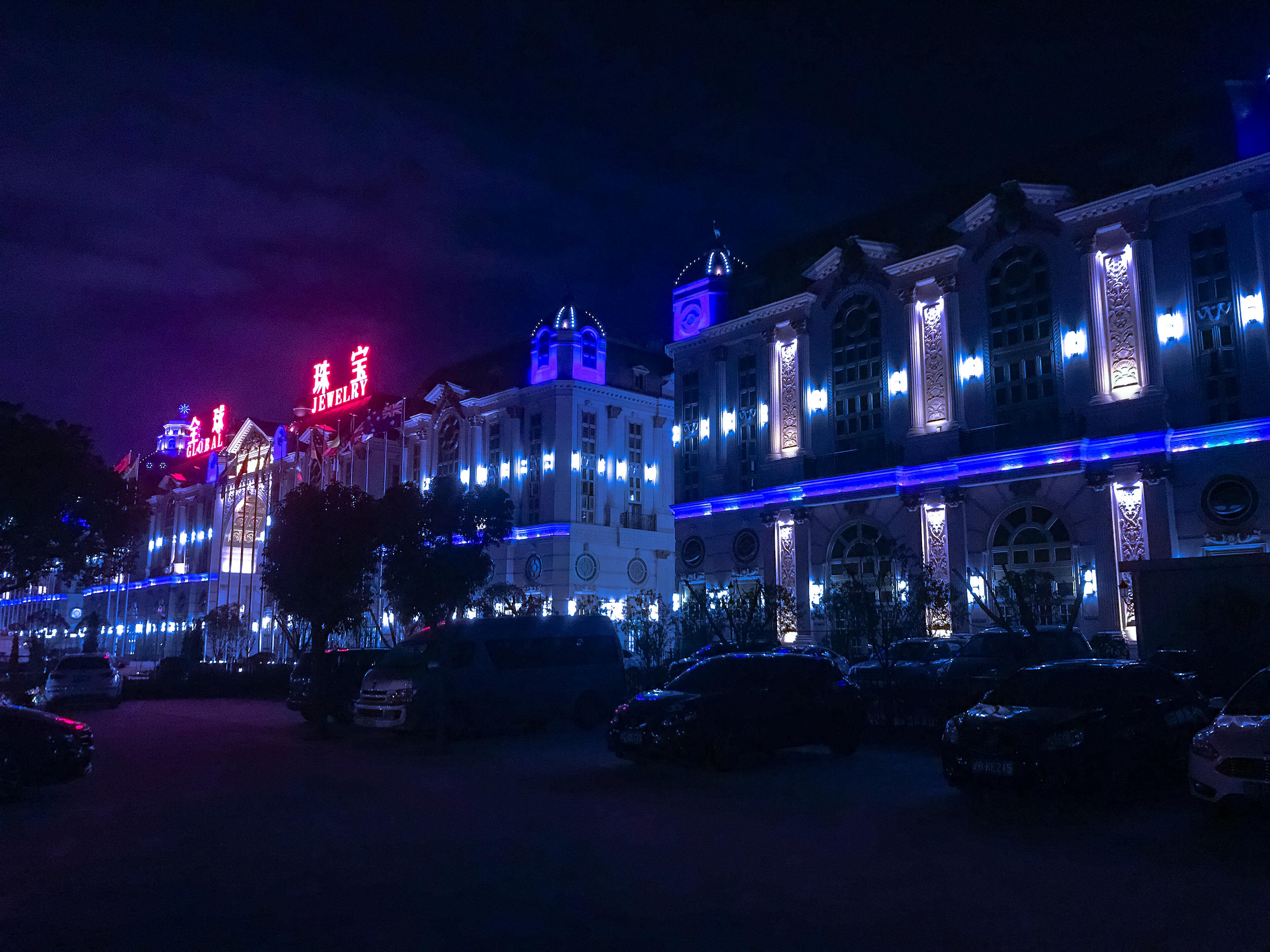


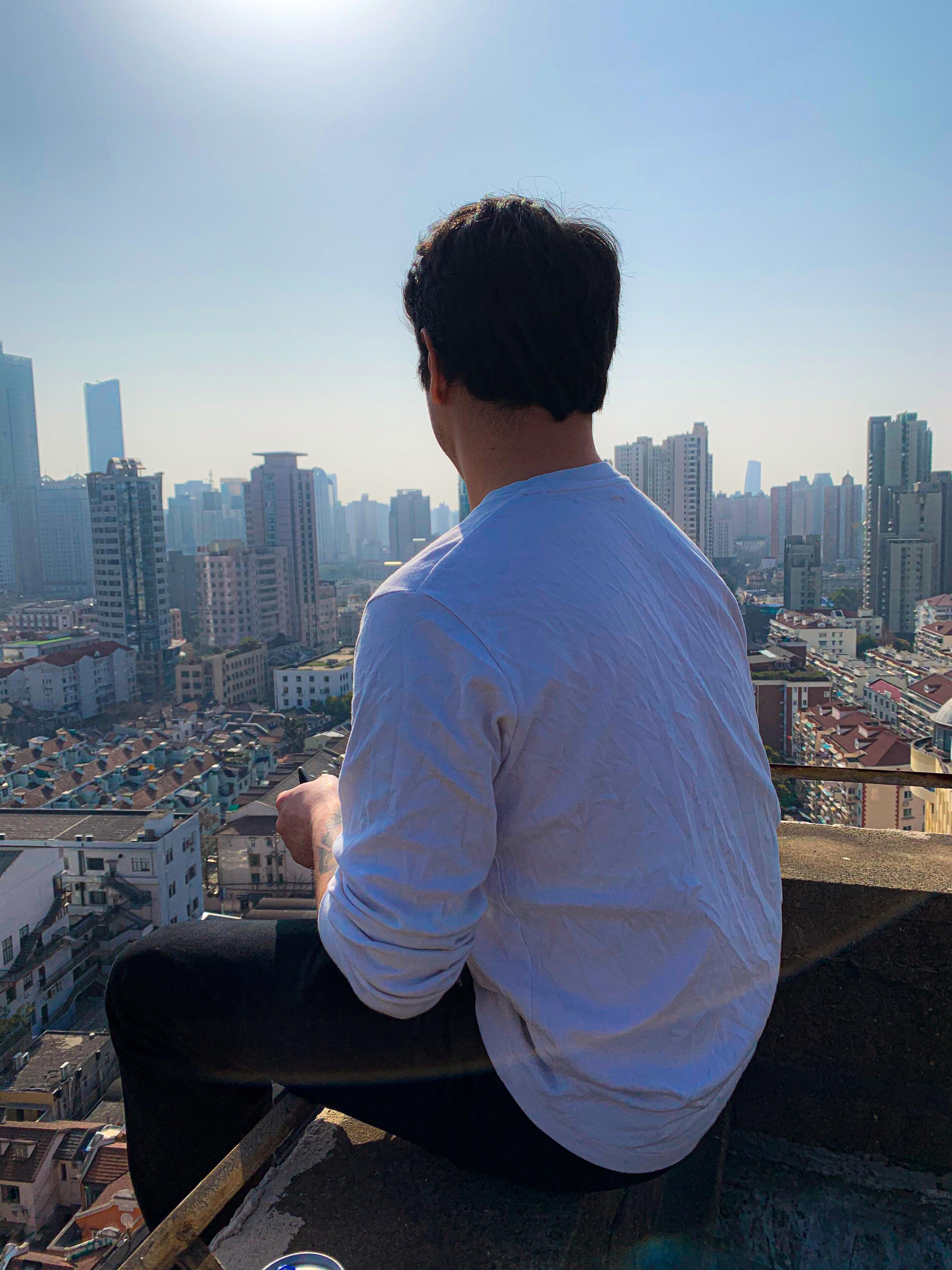
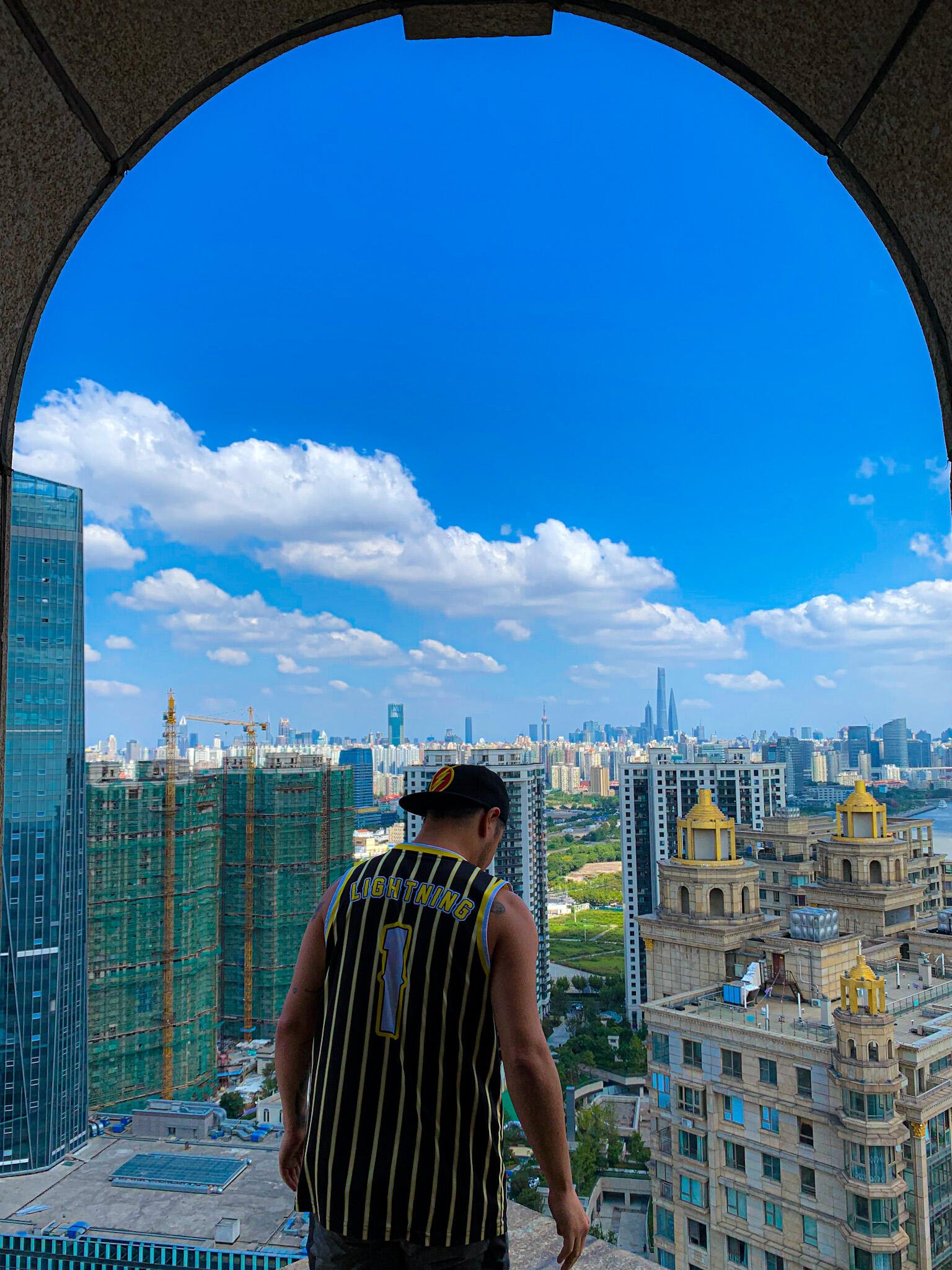


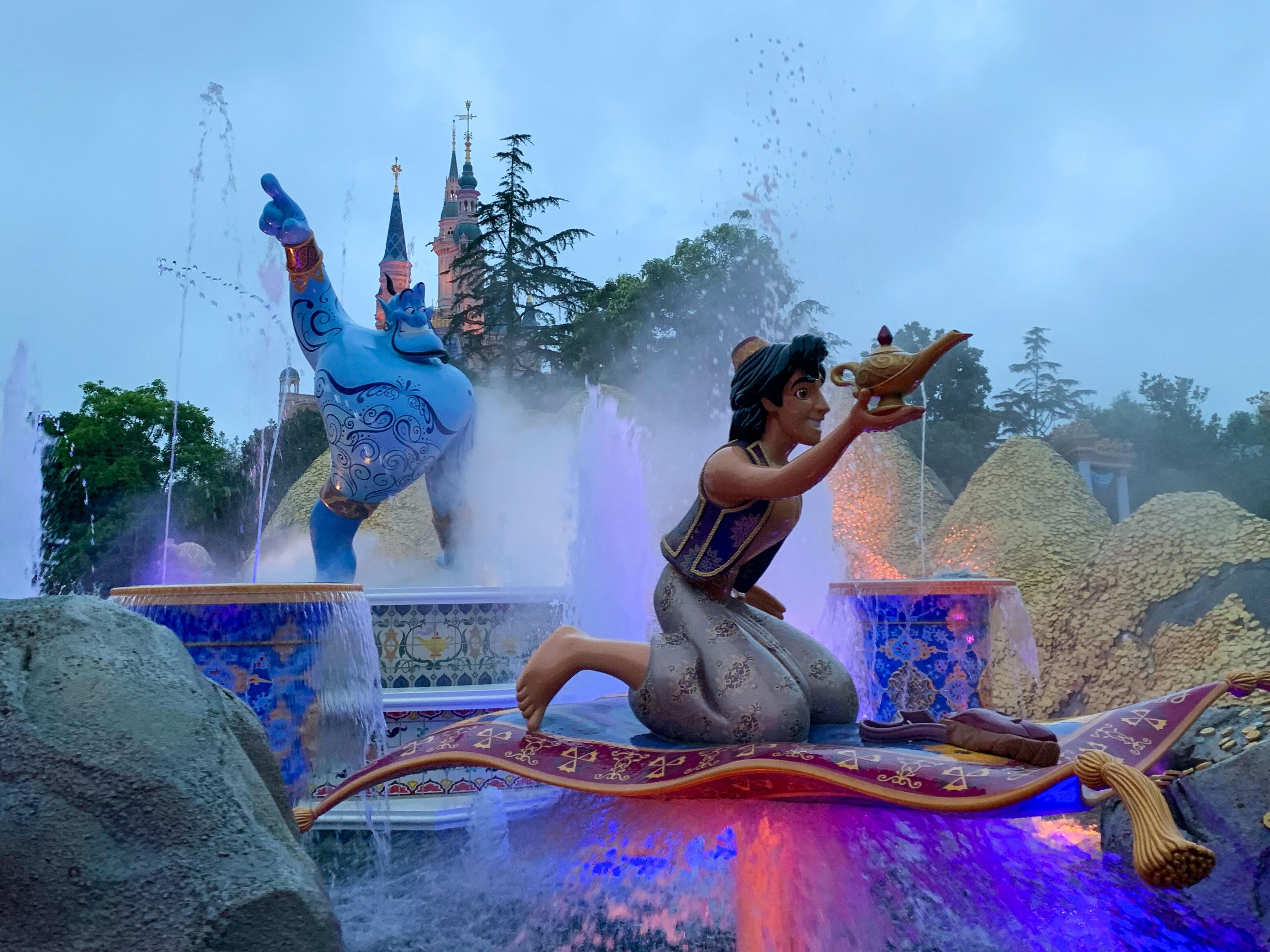


Previous Guides in the Series:
An Expats Guide to the Best Spots in Shanghai: 001
An Expats Guide to the Best Spots in Shanghai: 002
Find Me Elsewhere:
All images taken by Hes. Published 01/02/2025
-
 @ e6817453:b0ac3c39
2024-12-07 15:06:43
@ e6817453:b0ac3c39
2024-12-07 15:06:43I started a long series of articles about how to model different types of knowledge graphs in the relational model, which makes on-device memory models for AI agents possible.
We model-directed graphs
Also, graphs of entities
We even model hypergraphs
Last time, we discussed why classical triple and simple knowledge graphs are insufficient for AI agents and complex memory, especially in the domain of time-aware or multi-model knowledge.
So why do we need metagraphs, and what kind of challenge could they help us to solve?
- complex and nested event and temporal context and temporal relations as edges
- multi-mode and multilingual knowledge
- human-like memory for AI agents that has multiple contexts and relations between knowledge in neuron-like networks
MetaGraphs
A meta graph is a concept that extends the idea of a graph by allowing edges to become graphs. Meta Edges connect a set of nodes, which could also be subgraphs. So, at some level, node and edge are pretty similar in properties but act in different roles in a different context.
Also, in some cases, edges could be referenced as nodes.
This approach enables the representation of more complex relationships and hierarchies than a traditional graph structure allows. Let’s break down each term to understand better metagraphs and how they differ from hypergraphs and graphs.Graph Basics
- A standard graph has a set of nodes (or vertices) and edges (connections between nodes).
- Edges are generally simple and typically represent a binary relationship between two nodes.
- For instance, an edge in a social network graph might indicate a “friend” relationship between two people (nodes).
Hypergraph
- A hypergraph extends the concept of an edge by allowing it to connect any number of nodes, not just two.
- Each connection, called a hyperedge, can link multiple nodes.
- This feature allows hypergraphs to model more complex relationships involving multiple entities simultaneously. For example, a hyperedge in a hypergraph could represent a project team, connecting all team members in a single relation.
- Despite its flexibility, a hypergraph doesn’t capture hierarchical or nested structures; it only generalizes the number of connections in an edge.
Metagraph
- A metagraph allows the edges to be graphs themselves. This means each edge can contain its own nodes and edges, creating nested, hierarchical structures.
- In a meta graph, an edge could represent a relationship defined by a graph. For instance, a meta graph could represent a network of organizations where each organization’s structure (departments and connections) is represented by its own internal graph and treated as an edge in the larger meta graph.
- This recursive structure allows metagraphs to model complex data with multiple layers of abstraction. They can capture multi-node relationships (as in hypergraphs) and detailed, structured information about each relationship.
Named Graphs and Graph of Graphs
As you can notice, the structure of a metagraph is quite complex and could be complex to model in relational and classical RDF setups. It could create a challenge of luck of tools and software solutions for your problem.
If you need to model nested graphs, you could use a much simpler model of Named graphs, which could take you quite far.
The concept of the named graph came from the RDF community, which needed to group some sets of triples. In this way, you form subgraphs inside an existing graph. You could refer to the subgraph as a regular node. This setup simplifies complex graphs, introduces hierarchies, and even adds features and properties of hypergraphs while keeping a directed nature.
It looks complex, but it is not so hard to model it with a slight modification of a directed graph.
So, the node could host graphs inside. Let's reflect this fact with a location for a node. If a node belongs to a main graph, we could set the location to null or introduce a main node . it is up to you
Nodes could have edges to nodes in different subgraphs. This structure allows any kind of nesting graphs. Edges stay location-free
Meta Graphs in Relational Model
Let’s try to make several attempts to model different meta-graphs with some constraints.
Directed Metagraph where edges are not used as nodes and could not contain subgraphs

In this case, the edge always points to two sets of nodes. This introduces an overhead of creating a node set for a single node. In this model, we can model empty node sets that could require application-level constraints to prevent such cases.
Directed Metagraph where edges are not used as nodes and could contain subgraphs
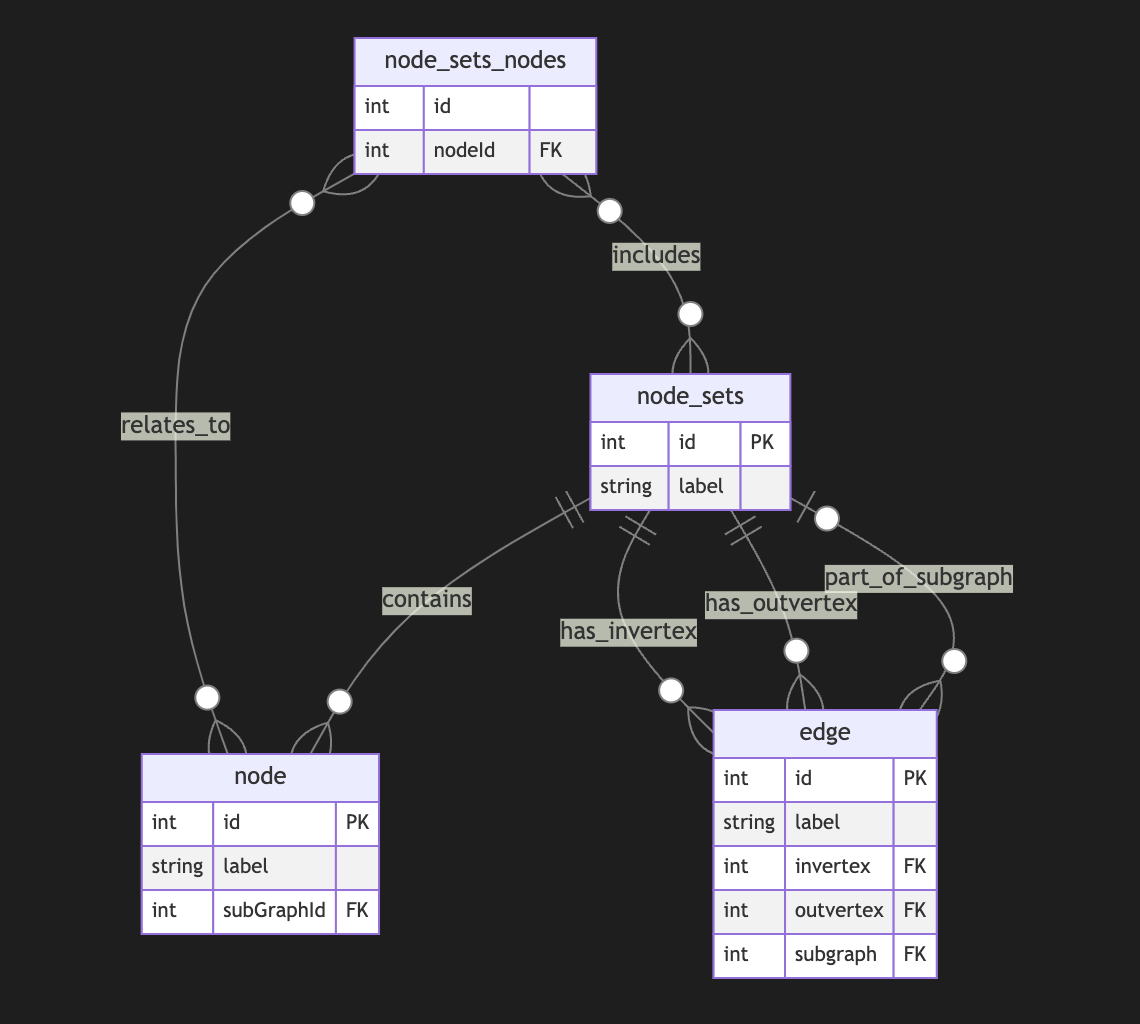
Adding a node set that could model a subgraph located in an edge is easy but could be separate from in-vertex or out-vert.
I also do not see a direct need to include subgraphs to a node, as we could just use a node set interchangeably, but it still could be a case.Directed Metagraph where edges are used as nodes and could contain subgraphs
As you can notice, we operate all the time with node sets. We could simply allow the extension node set to elements set that include node and edge IDs, but in this case, we need to use uuid or any other strategy to differentiate node IDs from edge IDs. In this case, we have a collision of ephemeral edges or ephemeral nodes when we want to change the role and purpose of the node as an edge or vice versa.
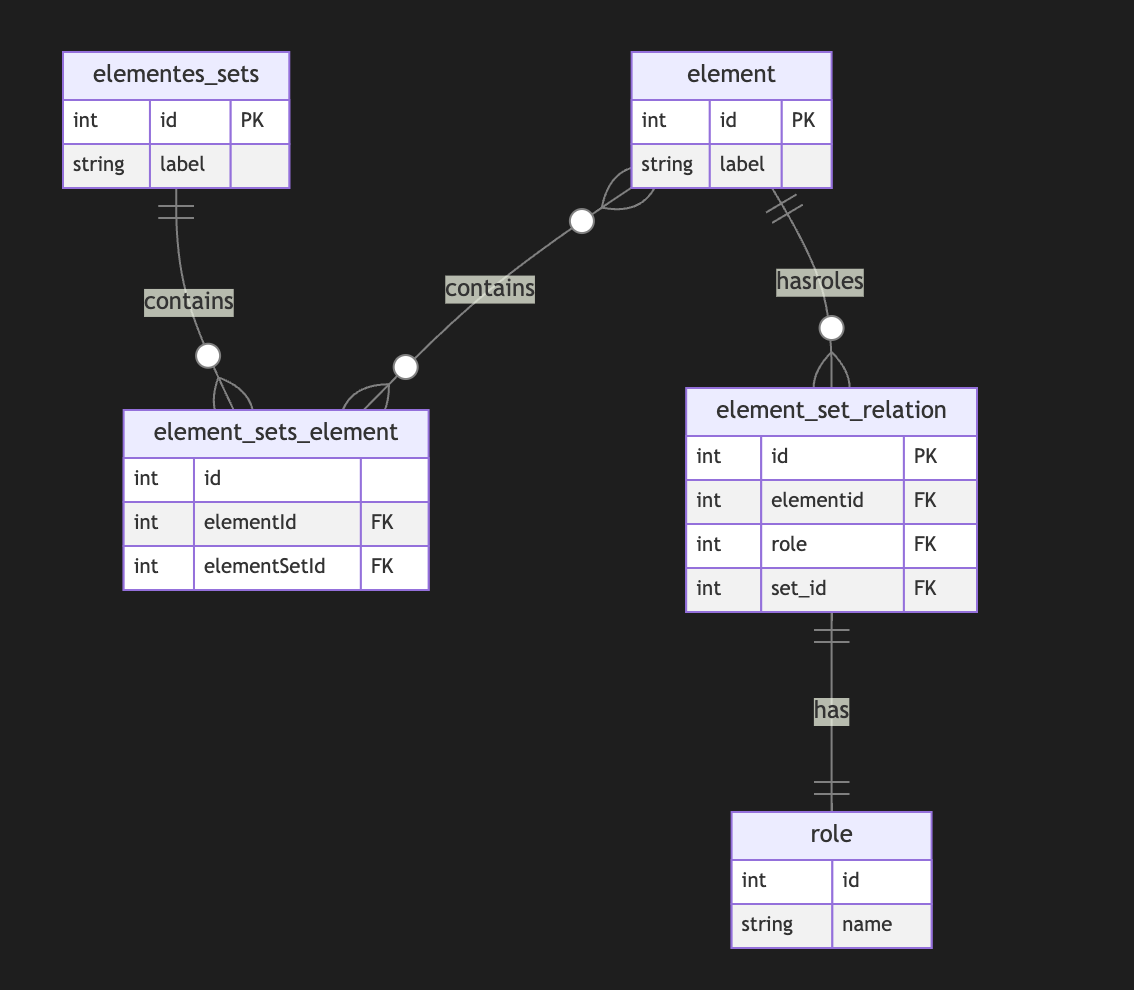
A full-scale metagraph model is way too complex for a relational database.
So we need a better model.Now, we have more flexibility but loose structural constraints. We cannot show that the element should have one vertex, one vertex, or both. This type of constraint has been moved to the application level. Also, the crucial question is about query and retrieval needs.
Any meta-graph model should be more focused on domain and needs and should be used in raw form. We did it for a pure theoretical purpose. -
 @ e6817453:b0ac3c39
2024-12-07 15:03:06
@ e6817453:b0ac3c39
2024-12-07 15:03:06Hey folks! Today, let’s dive into the intriguing world of neurosymbolic approaches, retrieval-augmented generation (RAG), and personal knowledge graphs (PKGs). Together, these concepts hold much potential for bringing true reasoning capabilities to large language models (LLMs). So, let’s break down how symbolic logic, knowledge graphs, and modern AI can come together to empower future AI systems to reason like humans.
The Neurosymbolic Approach: What It Means ?
Neurosymbolic AI combines two historically separate streams of artificial intelligence: symbolic reasoning and neural networks. Symbolic AI uses formal logic to process knowledge, similar to how we might solve problems or deduce information. On the other hand, neural networks, like those underlying GPT-4, focus on learning patterns from vast amounts of data — they are probabilistic statistical models that excel in generating human-like language and recognizing patterns but often lack deep, explicit reasoning.
While GPT-4 can produce impressive text, it’s still not very effective at reasoning in a truly logical way. Its foundation, transformers, allows it to excel in pattern recognition, but the models struggle with reasoning because, at their core, they rely on statistical probabilities rather than true symbolic logic. This is where neurosymbolic methods and knowledge graphs come in.
Symbolic Calculations and the Early Vision of AI
If we take a step back to the 1950s, the vision for artificial intelligence was very different. Early AI research was all about symbolic reasoning — where computers could perform logical calculations to derive new knowledge from a given set of rules and facts. Languages like Lisp emerged to support this vision, enabling programs to represent data and code as interchangeable symbols. Lisp was designed to be homoiconic, meaning it treated code as manipulatable data, making it capable of self-modification — a huge leap towards AI systems that could, in theory, understand and modify their own operations.
Lisp: The Earlier AI-Language
Lisp, short for “LISt Processor,” was developed by John McCarthy in 1958, and it became the cornerstone of early AI research. Lisp’s power lay in its flexibility and its use of symbolic expressions, which allowed developers to create programs that could manipulate symbols in ways that were very close to human reasoning. One of the most groundbreaking features of Lisp was its ability to treat code as data, known as homoiconicity, which meant that Lisp programs could introspect and transform themselves dynamically. This ability to adapt and modify its own structure gave Lisp an edge in tasks that required a form of self-awareness, which was key in the early days of AI when researchers were exploring what it meant for machines to “think.”
Lisp was not just a programming language—it represented the vision for artificial intelligence, where machines could evolve their understanding and rewrite their own programming. This idea formed the conceptual basis for many of the self-modifying and adaptive algorithms that are still explored today in AI research. Despite its decline in mainstream programming, Lisp’s influence can still be seen in the concepts used in modern machine learning and symbolic AI approaches.
Prolog: Formal Logic and Deductive Reasoning
In the 1970s, Prolog was developed—a language focused on formal logic and deductive reasoning. Unlike Lisp, based on lambda calculus, Prolog operates on formal logic rules, allowing it to perform deductive reasoning and solve logical puzzles. This made Prolog an ideal candidate for expert systems that needed to follow a sequence of logical steps, such as medical diagnostics or strategic planning.
Prolog, like Lisp, allowed symbols to be represented, understood, and used in calculations, creating another homoiconic language that allows reasoning. Prolog’s strength lies in its rule-based structure, which is well-suited for tasks that require logical inference and backtracking. These features made it a powerful tool for expert systems and AI research in the 1970s and 1980s.
The language is declarative in nature, meaning that you define the problem, and Prolog figures out how to solve it. By using formal logic and setting constraints, Prolog systems can derive conclusions from known facts, making it highly effective in fields requiring explicit logical frameworks, such as legal reasoning, diagnostics, and natural language understanding. These symbolic approaches were later overshadowed during the AI winter — but the ideas never really disappeared. They just evolved.
Solvers and Their Role in Complementing LLMs
One of the most powerful features of Prolog and similar logic-based systems is their use of solvers. Solvers are mechanisms that can take a set of rules and constraints and automatically find solutions that satisfy these conditions. This capability is incredibly useful when combined with LLMs, which excel at generating human-like language but need help with logical consistency and structured reasoning.
For instance, imagine a scenario where an LLM needs to answer a question involving multiple logical steps or a complex query that requires deducing facts from various pieces of information. In this case, a solver can derive valid conclusions based on a given set of logical rules, providing structured answers that the LLM can then articulate in natural language. This allows the LLM to retrieve information and ensure the logical integrity of its responses, leading to much more robust answers.
Solvers are also ideal for handling constraint satisfaction problems — situations where multiple conditions must be met simultaneously. In practical applications, this could include scheduling tasks, generating optimal recommendations, or even diagnosing issues where a set of symptoms must match possible diagnoses. Prolog’s solver capabilities and LLM’s natural language processing power can make these systems highly effective at providing intelligent, rule-compliant responses that traditional LLMs would struggle to produce alone.
By integrating neurosymbolic methods that utilize solvers, we can provide LLMs with a form of deductive reasoning that is missing from pure deep-learning approaches. This combination has the potential to significantly improve the quality of outputs for use-cases that require explicit, structured problem-solving, from legal queries to scientific research and beyond. Solvers give LLMs the backbone they need to not just generate answers but to do so in a way that respects logical rigor and complex constraints.
Graph of Rules for Enhanced Reasoning
Another powerful concept that complements LLMs is using a graph of rules. A graph of rules is essentially a structured collection of logical rules that interconnect in a network-like structure, defining how various entities and their relationships interact. This structured network allows for complex reasoning and information retrieval, as well as the ability to model intricate relationships between different pieces of knowledge.
In a graph of rules, each node represents a rule, and the edges define relationships between those rules — such as dependencies or causal links. This structure can be used to enhance LLM capabilities by providing them with a formal set of rules and relationships to follow, which improves logical consistency and reasoning depth. When an LLM encounters a problem or a question that requires multiple logical steps, it can traverse this graph of rules to generate an answer that is not only linguistically fluent but also logically robust.
For example, in a healthcare application, a graph of rules might include nodes for medical symptoms, possible diagnoses, and recommended treatments. When an LLM receives a query regarding a patient’s symptoms, it can use the graph to traverse from symptoms to potential diagnoses and then to treatment options, ensuring that the response is coherent and medically sound. The graph of rules guides reasoning, enabling LLMs to handle complex, multi-step questions that involve chains of reasoning, rather than merely generating surface-level responses.
Graphs of rules also enable modular reasoning, where different sets of rules can be activated based on the context or the type of question being asked. This modularity is crucial for creating adaptive AI systems that can apply specific sets of logical frameworks to distinct problem domains, thereby greatly enhancing their versatility. The combination of neural fluency with rule-based structure gives LLMs the ability to conduct more advanced reasoning, ultimately making them more reliable and effective in domains where accuracy and logical consistency are critical.
By implementing a graph of rules, LLMs are empowered to perform deductive reasoning alongside their generative capabilities, creating responses that are not only compelling but also logically aligned with the structured knowledge available in the system. This further enhances their potential applications in fields such as law, engineering, finance, and scientific research — domains where logical consistency is as important as linguistic coherence.
Enhancing LLMs with Symbolic Reasoning
Now, with LLMs like GPT-4 being mainstream, there is an emerging need to add real reasoning capabilities to them. This is where neurosymbolic approaches shine. Instead of pitting neural networks against symbolic reasoning, these methods combine the best of both worlds. The neural aspect provides language fluency and recognition of complex patterns, while the symbolic side offers real reasoning power through formal logic and rule-based frameworks.
Personal Knowledge Graphs (PKGs) come into play here as well. Knowledge graphs are data structures that encode entities and their relationships — they’re essentially semantic networks that allow for structured information retrieval. When integrated with neurosymbolic approaches, LLMs can use these graphs to answer questions in a far more contextual and precise way. By retrieving relevant information from a knowledge graph, they can ground their responses in well-defined relationships, thus improving both the relevance and the logical consistency of their answers.
Imagine combining an LLM with a graph of rules that allow it to reason through the relationships encoded in a personal knowledge graph. This could involve using deductive databases to form a sophisticated way to represent and reason with symbolic data — essentially constructing a powerful hybrid system that uses LLM capabilities for language fluency and rule-based logic for structured problem-solving.
My Research on Deductive Databases and Knowledge Graphs
I recently did some research on modeling knowledge graphs using deductive databases, such as DataLog — which can be thought of as a limited, data-oriented version of Prolog. What I’ve found is that it’s possible to use formal logic to model knowledge graphs, ontologies, and complex relationships elegantly as rules in a deductive system. Unlike classical RDF or traditional ontology-based models, which sometimes struggle with complex or evolving relationships, a deductive approach is more flexible and can easily support dynamic rules and reasoning.
Prolog and similar logic-driven frameworks can complement LLMs by handling the parts of reasoning where explicit rule-following is required. LLMs can benefit from these rule-based systems for tasks like entity recognition, logical inferences, and constructing or traversing knowledge graphs. We can even create a graph of rules that governs how relationships are formed or how logical deductions can be performed.
The future is really about creating an AI that is capable of both deep contextual understanding (using the powerful generative capacity of LLMs) and true reasoning (through symbolic systems and knowledge graphs). With the neurosymbolic approach, these AIs could be equipped not just to generate information but to explain their reasoning, form logical conclusions, and even improve their own understanding over time — getting us a step closer to true artificial general intelligence.
Why It Matters for LLM Employment
Using neurosymbolic RAG (retrieval-augmented generation) in conjunction with personal knowledge graphs could revolutionize how LLMs work in real-world applications. Imagine an LLM that understands not just language but also the relationships between different concepts — one that can navigate, reason, and explain complex knowledge domains by actively engaging with a personalized set of facts and rules.
This could lead to practical applications in areas like healthcare, finance, legal reasoning, or even personal productivity — where LLMs can help users solve complex problems logically, providing relevant information and well-justified reasoning paths. The combination of neural fluency with symbolic accuracy and deductive power is precisely the bridge we need to move beyond purely predictive AI to truly intelligent systems.
Let's explore these ideas further if you’re as fascinated by this as I am. Feel free to reach out, follow my YouTube channel, or check out some articles I’ll link below. And if you’re working on anything in this field, I’d love to collaborate!
Until next time, folks. Stay curious, and keep pushing the boundaries of AI!
-
 @ 714f9dc3:76659adb
2025-01-02 20:47:45
@ 714f9dc3:76659adb
2025-01-02 20:47:45Last week, I was reading “The Air We Breathe”, by Glen Scrivener. It’s about “How We All Came to Believe in Freedom, Kindness, Progress, and Equality”, and it explores the Christian roots of the values we prize in today's western society. It’s all around us, but we don’t really know where it came from: It’s the air we’re breathing. The ideas and ethics behind Christianity, whether you believe in them or not, are embedded in our culture.
As I was reading this, I saw so many parallels with Bitcoin, so wanted to list them below and share some of my thoughts. Can Bitcoin also become “The Air We Breathe”? Or in plebs words: hyperbitcoinization? Can Bitcoin become so ubiquitous that it becomes normal? Can there be a world in which we don’t even know where Bitcoin came from? It would be a world with many similar views as with today's view on Christianity. It becomes the air we breathe, something that used to be a counterculture that over time became ubiquitous. What can we learn from it?
These are my ten parallels of Bitcoin with the early days of Christianity. 1. Separation from state 2. From obscure counterculture to dominant force 3. Exponential grassroots growth 4. Conversion of emperors/politicians 5. Sudden tolerance and protection for ideology 6. Fall of the empire, end of the status quo 7. Missionaries spreading the word 8. Persuasion and education are key 9. Age of Enlightenment
Note: I’m no expert on Christianity, nor a historian of the Roman Empire, and I know just a bit about Bitcoin. See this as a thought experiment.
1. Separation from state In all fairness, I’m not the first to draw this first parallel. It was Satoshi Nakamoto themself who made the connection even before Bitcoin was available to the public, with several hints pointing back to important dates and moments in Christian history. The big parallel here is the “separation of money and state” and “separation of church and state”.
Before going back to the early days of Christianity in the first centuries AD, I first want to draw this parallel with Satoshi.
It’s 1517. The German Priest Maarten Luther writes his Ninety-five Theses, and nails this on the church doors in Wittenberg. The theses are also known as the “Disputation on the Power and Efficacy of Indulgences”. He kickstarted a movement with a radical new idea for that time: The separation of the church from the state.
The Catholic Church had become one with the state. Via the means of indulgences, there was an ability to pay for your redemption. The church was corrupted by money, power and politics. The church and indulgences replaced the need for personal responsibility and an individual faith with money and perverse structures.
Reformation Day is a Protestant Christian religious holiday celebrated on 31 October in remembrance of the onset of the Reformation. But the 31st of October is also the day in which Satoshi shared his pamphlet with the world: in 2008 they published the Bitcoin Whitepaper. It kickstarted a movement with a radical new idea for that time: The separation of the money from the state.
But this was not Satoshi’s only hint. Another one is the date of Bitcoin’s Genesis Block: January 3, 2009. It was the day that the idea of the separation of money and the state became reality, more than just an idea in an individual's mind.
Did you know that Maarten Luther was excommunicated from the Catholic Church in 1521 by Pope Leo X for sparking this revolutionary new way of thinking (and being). It happened on January 3 as well. I bet Satoshi Nakamoto knew.
To be fair, this parallel is not new and known by many bitcoiners. But it’s a good introduction to the topic, and after reading “The Air We Breathe: How We All Came to Believe in Freedom, Kindness, Progress, and Equality”, I automatically started to see more parallels between (the early days of) Christianity and todays adoption of Bitcoin. Because it was of course not Maarten Luther who sparked these rebellious thoughts in 1500, but it was Jesus himself approx. 2000 years ago.
Let’s go back from the 1500s to the first decades AD to the beginning of this radical new belief system. During the dominance of the Roman empire in the Mediterranean and much of Europe, Western Asia and North Africa, someone told a story that opposed every mainstream paradigm.
Jesus’ idea was radically different from the belief systems of that day. He preached Freedom, Kindness, Progress, and Equality in a world that was full of Debauchery and Violence, with Gladiator Games, Slavery, Public Crucifixion, and Brutalities. The belief system of that time was not like todays. There were superior races (Greek/Romans over barbarians), superior sexes (man over women), superior classes (free man over slaves) and the concept of justice was more something in the realm of “restoring rights of those that were superior”, than “equality for all, men and women, Greek and barbarian, free and slave”.
Jesus opposed the status quo. It started small and irrelevant; as a counterculture. But it didn’t stay that way.
2. From obscure counterculture to dominant force In “The Air We Breathe”, Scrivener asks the question: “How did the obscure, marginal Jesus movement of the 1st century become the dominant religious force in the Western world in a few centuries?”
Important to know, is that the Christian faith was the opposite of the narrative. Concepts like Freedom, Kindness, Progress, and Equality didn’t exist in the Roman Empire. Human rights neither. Individual rights neither. The emperor was almost de facto God himself.
Early Christians were persecuted for preaching a different story: that God is NOT the ruler of the empire. Jesus preached the separation of politics from God; separating faith from the state. As a result, he was crucified, and many of his followers were killed by Nero (between 54 and 68 AD), Domitian (81–96 AD), Trajan (98–117 AD) and Decius (249–251 AD). This new narrative was a thread for the Roman rulers.
Draw the parallels of how there have been many attempts to “kill” bitcoin, not with physical persecution but with an information war. Not by physical violence, but by misinformation. Bitcoin threatens the status quo, just like Christianity threatened the Roman Empire.
You see?
But how is the obscure movement of Bitcoin in the 20th century becoming the dominant force, similar to the question that Scrivener asked about Christianity? Perhaps the answer lies in the following parallel.
3. Exponential grassroots growth Sociologist Rodney Stark estimates in “The Rise of Christianity” that from the time of the first Easter, the church began growing at a rate of 40% per decade, a modest but relentless 3.4% per year. By the year 300, Christians numbered perhaps 6 million: about a tenth of the empire.
Despite pushbacks, the army of believers continued to grow. Grassroots, peer-to-peer. It was not the state-religion, it was a peaceful army of believers that spread the word, resulting in an exponential growth of its followers. The counterculture became more and more dominant.
You may see what I’m doing here. It was basically the meme that all Bitcoiners know: Gradually, then suddenly. Against the current.
4. Conversion of emperors/politicians In 312 a big change happened: Emperor Constantine converted to Christianity. As Stark writes, "Constantine's conversion would better be seen as a response to the massive exponential wave in progress, not as its cause".
Are we living in that same era, where nation states start to embrace Bitcoin? Where politicians don’t oppose as strongly anymore, but are flirting with the idea of embracing it? And again the parallel: it’s responsive to the exponential wave of progress, not as its cause.
Whether Constantine is Nayib Bukele, Donald Trump, or Milei: it doesn’t matter. It’s the dynamic that matters. The counterculture becomes so dominant, that the “rulers” of the world are wanting to be part of it. Which will be followed by “rules” that favour the ideology, movement, and beliefs.
5. Tolerance and protection for ideology In 313 Constatines Edict of Milan granted freedom to Christians that were remarkable for that time and a model for religious toleration for the coming centuries.
The tide was turning, and by 380 Emperor Theodosius made Christianity Rome's official religion, more than half the population had already converted. In a few short centuries Christianity had gone from radical counterculture to dominant cultural power. This was an extraordinary shift in the church's relationship with the world. The edict expressly grants religious liberty to Christians, who had been the object of special persecution, but also goes even further and grants liberty to all other religions. And then, in 410, the world itself changed.
It changed from grassroots, bottom-up adoption to some kind of nation state adoption. One that was driven by decrees and edicts, instead of the analog cyberhornets of that day. Actually, the ideas of Indulgences were introduced via these Edicts, something that Maarten Luther actually was fighting against in the 1500s.
The world changed from the state-less Christian belief and moved (back) towards a system in which the state and church were connected again. Yes — the Roman Catholic Church. Until the previously mentioned critics during the Reformation.
6. Fall of the empire, end of the status quo When people speak of the fall of the Roman Empire, they usually mean in the 5th century when the western half fell. But there was also an eastern half, known as the Byzantine Empire (with its capital in what is modern-day Istanbul).
How did this relate to the movement that once was Cult, and now suddenly had become Culture?
It was Augustine, the north African bishop (354-430), who laid the foundation for a new philosophical, theological, and legal system. He distinguished between the fragile earthly realm and the eternal heavenly kingdom. Rome was “a city of man”, which fell. But the “city of God” was forever. He continued to separate the Roman Catholic Church from the faith that it once was. This distinction was vital, and it gave rise to the concept of "the secular realm". He planted the first ideas of "the separation of church and state" again, which started to spread throughout Europe during the supposedly "sandy desert" of the Middle Ages.
The parallel and lesson here might be that narratives can be taken over, for the worse. And that it takes centuries to take back the narrative, but/and only after an empire has fallen. Whether we refer to “The Fourth Turning” by William Strauss and Neil Howe or “Changing World Orders” by Ray Dalio. There is something to preserve, and it needs active monitoring and pushbacks!
7. Missionary, spreading the word The way the church sought to spread its influence would become a question that would take many centuries (and many failures) to settle. In the past, empires sought to spread their influence almost always by force. Christianity has been a missionary faith from the beginning. It was for this reason that Pope Gregory the Great sent Augustine to Britain to convert the Anglo-Saxons.
Augustine was commanded by Gregory to use only "gentle means". His goal was persuasion. His method was teaching and preaching. And he was successful, converting King Aethelbert of Kent and becoming the first Archbishop of Canterbury.
You see what I’m talking about again: the parallel is simple. Bitcoin is a similar peaceful revolution, a missionary movement, of those that wish to see their Cult turn into a Culture. “Genle means”, teachings, persuasions. Or in pleb terminology: Orangepilling.
8. Persuasion and education are key Over the next decades and centuries, this movement continued. English Benedictine monk (675-754) Boniface was sent from the previously “barbarian” Britain to “orangepill the East” – in this case the Saxons in the Germanic lands. In the words of his advisor, the Bishop of Winchester, his goal was "to convince them by many documents and arguments". This mission of persuasion and education was largely successful. Today he’s better known as “the Apostle to the Germans". He was killed in The Netherlands (Dokkum).
Boniface kept to a policy of non-violence and non-retaliation, even to the point of death. Another famous writer about this topic, Tom Holland, summarises the lesson we learn from Boniface: "to convert was to educate".
In the following century this lesson was sorely needed by the Frankish king Charles the Great, aka Charlemagne (742-814). Charlemagne's path to power was a brutal one. When the Saxons stood in his way, Charlemagne beheaded 4,500 of them in a single day. There are concrete reasons why "getting medieval" might be associated today with brutality.
Is “Bitcoin as Legal Tender”, whether this is peaceful or violently, the way to go? Are we “getting medieval” with these kind of measures, in order to go from Cult to Culture, from counterculture to dominant culture, in which we lose the true essence of our revolution of separation of the state from the matter?
9. Age of Enlightenment Alcuin of York (735-804), was bold enough to write to Charlemagne directly with his criticism. "A person can be drawn into the faith, not forced into it". Be a lighthouse, not a tugboat!
The church's official teaching would later agree with Alcuin's position. In the 12th century all "harsh means" were forbidden since faith arises from the will, not compulsion. Enlightenment comes through education and persuasion.
There’s work to do. Grassroots. Education. Peer-to-peer. Not directed by politicians, nor opposed by those in power. Through education and persuasion. Rules without rulers. Because eventually, with the Crusades and the Spanish Inquisition, there are stark examples of the church using “harsh means" again. Forcing Bitcoin on people will never be the way: it’s a cheat code to the end goal. In order to succeed, we’ll need to be a missionary.
Final words I don’t want in any way to compare Christianity in itself as a faith, and Bitcoin as a technology, with each other. I enjoyed exploring the sociological phenomena between two countercultures, the grassroots movement and missionary parallels between both of them. Satoshi gave the first assist, with the 31st of October (Whitepaper Day) and the Genesis Block on January 3rd.
Let’s not mix religion with monetary systems, even though there are many similarities between certain movements. That’s not my goal for sharing this brain dump. But let’s learn from the past, from Constatine’s Edict and from Augustine, from Charlemagne (and especially Alcuin of York), from Boniface and from Maarten Luther. And from Satoshi Nakamoto.
-
 @ bd32f268:22b33966
2025-01-02 19:30:46
@ bd32f268:22b33966
2025-01-02 19:30:46Texto publicado por Foundation Father @FoundationDads e traduzido para português.
Assumir responsabilidades numa época efeminada como a nossa é um superpoder.
Algumas pessoas não sabem o que significa "assumir responsabilidades", no entanto, porque nunca tiveram um pai ou outra pessoa que as ama-se o suficiente para lhes ensinar.
Então, aqui está como assumir responsabilidades.
Lembra-te que não és uma pessoa desamparada e incompetente.
As coisas não te acontecem simplesmente enquanto olhas fixamente com a boca aberta, usando todo o teu poder cerebral para te lembrares de como respirar.
Tu tens poder de ação.
Mantém estas perguntas em mente:
"Que papel desempenhei eu nesta situação ou como ajudei a formar o sistema em que estou inserido?"
"O que posso fazer agora mesmo para começar a corrigi-lo, por mais pequeno que seja?"
Aqui estão alguns exemplos de como aplicar estas perguntas.
 José Malhoa - Remédio
José Malhoa - RemédioSaúde
Estás com excesso de peso e cansado o tempo todo? Deprimido?
Começa a caminhar 30 minutos por dia. De preferência ao ar livre.
Pára de comer snacks.
Marca uma consulta com um médico para fazer análises ao sangue.
Todas estas coisas estão ao teu alcance.
Finanças
Estás a afogar-te em dívidas de cartão de crédito? Assumir responsabilidades significa reduzir drasticamente o teu consumo e iniciar um programa radical de pagamento do máximo de dívida que conseguires.
Obtém uma aplicação de orçamento e começa a planear.
Sentes-te preso no teu emprego sem futuro? Sentes que não ganhas o suficiente? Vai a entrevistas para vagas de emprego e descobre o teu verdadeiro valor no mercado.
Reserva 1 hora todas as noites para melhorares. A menos que já estejas a trabalhar em dois empregos, toda a gente tem pelo menos 1 hora todas as noites.
Arredores imediatos
Se vês algo que precisa de ser feito, simplesmente faz. Não te queixes disso. Não resmungues baixinho. Não desejes que alguém tratasse disso. Simplesmente faz e não peças permissão.
Guarda o carrinho de compras. Lava a caneca de café no lava-loiça. Arranca as ervas daninhas. Repara a parede. Se o quintal do teu vizinho estiver cheio de ervas, vai lá e corta a relva tu mesmo. Limpa a água do lava-loiça. Arruma a bancada. Leva o lixo para fora. Leva bom café para o escritório.
Os teus filhos
Muitos pais queixam-se do comportamento dos seus filhos como se não tivessem qualquer influência sobre o assunto. Mas os teus filhos farão o que tu os ensinaste a fazer.
"Fizemos o melhor que pudemos."
Não, não fizeram, e assumir responsabilidades significa admitir que foste permissivo e preguiçoso ou que querias sentir-te justo por não bater.
Que pequena coisa podes fazer agora mesmo para começar? Escolhe um único comportamento que queres que eles parem, senta-os e explica as consequências do comportamento. Pede desculpa por teres deixado andar durante tanto tempo.
Quando eles apresentarem o comportamento, aplica as consequências. Aconteça o que acontecer.
Os teus relacionamentos
Não tens amigos ou o teu grupo de amigos atual é uma má influência? Podes fazer novos amigos. Assumir responsabilidades significa admitir que a tua solidão é em grande parte auto-infligida.
O que podes fazer?
Começa a jogar ténis ou futebol. Existem ligas em todo o lado. Encontra uma boa igreja local e encontra maneiras de te envolver. Existem encontros para todo o tipo de atividade. Participa num que se alinhe com as tuas preferências. Quando estiveres em público, sorri mais e puxa conversa.
Depois de conheceres algumas pessoas, estabelece uma cadência regular. Agenda almoços semanais ou mensais e alterna entre algumas pessoas. Ou talvez café de manhã.
Não acontecerá da noite para o dia, mas dando pequenos passos consistentemente durante alguns meses e vais perceber que tens uma vida social.
Os teus erros
Se erraste, não te retires e escondas nem arranjes desculpas. Pede desculpa à pessoa que prejudicaste, diz-lhe porquê e oferece-te para compensar. Aceita as consequências com humildade.
Vais descobrir que nada te conquista mais respeito do que assumir os teus erros. Esta é a principal. Se aprenderes a fazer isto bem, cobrirá uma infinidade de pecados porque cria hábito. Mesmo que tenhas apenas 1% de culpa na situação, assumir a responsabilidade e pedir desculpa pelo teu 1% está a construir um certo grupo de músculos.
"Mas ele devia ter..." Pára com isso. Confiaste demasiado? Presumiste demasiado sem comunicar? Assume a responsabilidade por isso.
Estes exemplos podiam continuar para sempre, então vou parar e terminar com este princípio:
A tua resposta importa mais do que as tuas circunstâncias.
Existem vítimas reais, algumas de tragédias horríveis. Mas mesmo que não te tenhas atirado para areias movediças, ainda podes assumir a responsabilidade por como reages e pelo que escolhes fazer a seguir.
Às vezes, é agarrar numa corda de um transeunte e dizer: "Obrigado."
Não te afogues nas areias movediças até que alguém te dê uma palmadinha nas costas por quão difícil é para ti, e não continues a apontar para o teu tempo nas areias movediças para desculpares os teus fracassos.
Podes não ter escolhido uma batalha específica. Ainda podes assumir a responsabilidade por quão bem lutas a batalha. Num certo sentido, ninguém escolhe a principal batalha que enfrenta. Ninguém escolheu nascer. Ninguém escolheu a sua família. Ninguém escolheu as suas circunstâncias.
O mundo nunca será perfeito. Tens de assumir a responsabilidade pela tua parte dele de qualquer maneira. Pode ser difícil. Pode ser doloroso. Não te foi prometida uma vida fácil e sem dor.
Depois de começares a assumir responsabilidades, qual é o próximo passo?
Altura de assumir mais responsabilidades.
Por exemplo, se não tens problemas em fazer amigos e tens essa parte da tua vida resolvida, assume a responsabilidade por outra pessoa. Encontra um dos rapazes solitários na tua igreja que precisa de um amigo e adiciona-o à tua rotação de almoços.
A recompensa por assumir responsabilidades é subir de nível e, como consequência, as coisas devem tornar-se mais desafiantes.
Mas agora estás mais bem preparado para isso. Repete até morrer e, esperançosamente, a tua causa de morte será por viver e não por te queixares de não viver.
-
 @ e6817453:b0ac3c39
2024-12-07 14:54:46
@ e6817453:b0ac3c39
2024-12-07 14:54:46Introduction: Personal Knowledge Graphs and Linked Data
We will explore the world of personal knowledge graphs and discuss how they can be used to model complex information structures. Personal knowledge graphs aren’t just abstract collections of nodes and edges—they encode meaningful relationships, contextualizing data in ways that enrich our understanding of it. While the core structure might be a directed graph, we layer semantic meaning on top, enabling nuanced connections between data points.
The origin of knowledge graphs is deeply tied to concepts from linked data and the semantic web, ideas that emerged to better link scattered pieces of information across the web. This approach created an infrastructure where data islands could connect — facilitating everything from more insightful AI to improved personal data management.
In this article, we will explore how these ideas have evolved into tools for modeling AI’s semantic memory and look at how knowledge graphs can serve as a flexible foundation for encoding rich data contexts. We’ll specifically discuss three major paradigms: RDF (Resource Description Framework), property graphs, and a third way of modeling entities as graphs of graphs. Let’s get started.
Intro to RDF
The Resource Description Framework (RDF) has been one of the fundamental standards for linked data and knowledge graphs. RDF allows data to be modeled as triples: subject, predicate, and object. Essentially, you can think of it as a structured way to describe relationships: “X has a Y called Z.” For instance, “Berlin has a population of 3.5 million.” This modeling approach is quite flexible because RDF uses unique identifiers — usually URIs — to point to data entities, making linking straightforward and coherent.
RDFS, or RDF Schema, extends RDF to provide a basic vocabulary to structure the data even more. This lets us describe not only individual nodes but also relationships among types of data entities, like defining a class hierarchy or setting properties. For example, you could say that “Berlin” is an instance of a “City” and that cities are types of “Geographical Entities.” This kind of organization helps establish semantic meaning within the graph.
RDF and Advanced Topics
Lists and Sets in RDF
RDF also provides tools to model more complex data structures such as lists and sets, enabling the grouping of nodes. This extension makes it easier to model more natural, human-like knowledge, for example, describing attributes of an entity that may have multiple values. By adding RDF Schema and OWL (Web Ontology Language), you gain even more expressive power — being able to define logical rules or even derive new relationships from existing data.
Graph of Graphs
A significant feature of RDF is the ability to form complex nested structures, often referred to as graphs of graphs. This allows you to create “named graphs,” essentially subgraphs that can be independently referenced. For example, you could create a named graph for a particular dataset describing Berlin and another for a different geographical area. Then, you could connect them, allowing for more modular and reusable knowledge modeling.
Property Graphs
While RDF provides a robust framework, it’s not always the easiest to work with due to its heavy reliance on linking everything explicitly. This is where property graphs come into play. Property graphs are less focused on linking everything through triples and allow more expressive properties directly within nodes and edges.
For example, instead of using triples to represent each detail, a property graph might let you store all properties about an entity (e.g., “Berlin”) directly in a single node. This makes property graphs more intuitive for many developers and engineers because they more closely resemble object-oriented structures: you have entities (nodes) that possess attributes (properties) and are connected to other entities through relationships (edges).
The significant benefit here is a condensed representation, which speeds up traversal and queries in some scenarios. However, this also introduces a trade-off: while property graphs are more straightforward to query and maintain, they lack some complex relationship modeling features RDF offers, particularly when connecting properties to each other.
Graph of Graphs and Subgraphs for Entity Modeling
A third approach — which takes elements from RDF and property graphs — involves modeling entities using subgraphs or nested graphs. In this model, each entity can be represented as a graph. This allows for a detailed and flexible description of attributes without exploding every detail into individual triples or lump them all together into properties.
For instance, consider a person entity with a complex employment history. Instead of representing every employment detail in one node (as in a property graph), or as several linked nodes (as in RDF), you can treat the employment history as a subgraph. This subgraph could then contain nodes for different jobs, each linked with specific properties and connections. This approach keeps the complexity where it belongs and provides better flexibility when new attributes or entities need to be added.
Hypergraphs and Metagraphs
When discussing more advanced forms of graphs, we encounter hypergraphs and metagraphs. These take the idea of relationships to a new level. A hypergraph allows an edge to connect more than two nodes, which is extremely useful when modeling scenarios where relationships aren’t just pairwise. For example, a “Project” could connect multiple “People,” “Resources,” and “Outcomes,” all in a single edge. This way, hypergraphs help in reducing the complexity of modeling high-order relationships.
Metagraphs, on the other hand, enable nodes and edges to themselves be represented as graphs. This is an extremely powerful feature when we consider the needs of artificial intelligence, as it allows for the modeling of relationships between relationships, an essential aspect for any system that needs to capture not just facts, but their interdependencies and contexts.
Balancing Structure and Properties
One of the recurring challenges when modeling knowledge is finding the balance between structure and properties. With RDF, you get high flexibility and standardization, but complexity can quickly escalate as you decompose everything into triples. Property graphs simplify the representation by using attributes but lose out on the depth of connection modeling. Meanwhile, the graph-of-graphs approach and hypergraphs offer advanced modeling capabilities at the cost of increased computational complexity.
So, how do you decide which model to use? It comes down to your use case. RDF and nested graphs are strong contenders if you need deep linkage and are working with highly variable data. For more straightforward, engineer-friendly modeling, property graphs shine. And when dealing with very complex multi-way relationships or meta-level knowledge, hypergraphs and metagraphs provide the necessary tools.
The key takeaway is that only some approaches are perfect. Instead, it’s all about the modeling goals: how do you want to query the graph, what relationships are meaningful, and how much complexity are you willing to manage?
Conclusion
Modeling AI semantic memory using knowledge graphs is a challenging but rewarding process. The different approaches — RDF, property graphs, and advanced graph modeling techniques like nested graphs and hypergraphs — each offer unique strengths and weaknesses. Whether you are building a personal knowledge graph or scaling up to AI that integrates multiple streams of linked data, it’s essential to understand the trade-offs each approach brings.
In the end, the choice of representation comes down to the nature of your data and your specific needs for querying and maintaining semantic relationships. The world of knowledge graphs is vast, with many tools and frameworks to explore. Stay connected and keep experimenting to find the balance that works for your projects.
-
 @ 490b551d:e17f0103
2025-01-02 18:29:07
@ 490b551d:e17f0103
2025-01-02 18:29:07I decided to do a bible study on Romans to get myself back into the Word. Shew. That's a tough place to start for someone who is still working on letting God back in. Right out the gate in Chapter One, there’s a part of it that just doesn’t sit well with me. The more I read, the more I feel like I’m trying to catch my breath, trying to wrap my head around the words Paul wrote. I can't shake the discomfort. I was transported right back into my denial, because I REALLY struggle with the idea of a judgemental God who is supposed to be all-loving.
My Struggle with God's Wrath
Paul writes in Romans 1:18-23 (NLT):
"But God shows his anger from heaven against all sinful, wicked people who suppress the truth by their wickedness. They know the truth about God because he has made it obvious to them. For ever since the world was created, people have seen the earth and sky. Through everything God made, they can clearly see his invisible qualities—his eternal power and divine nature. So they have no excuse for not knowing God. Yes, they knew God, but they wouldn’t worship him as God or even give him thanks. And they began to think up foolish ideas of what God was like. As a result, their minds became dark and confused. Claiming to be wise, they instead became utter fools. And instead of worshiping the glorious, ever-living God, they worshiped idols made to look like mere people and birds and animals and reptiles."
The idea that we should just know that God exists stopped me in my tracks. Paul essentially says that all the beauty around us - nature, the stars, the intricacy of life - should be enough to prove God’s existence to us. That’s heavy. It feels like it puts a burden on our hearts, like we should automatically see all this beauty and immediately recognize God behind it. Even the people who have never been exposed to God, heard of him, have any idea of the Christian version of deity. So what about those people who don’t? What about the times when we miss the beauty or don’t see it the way others do?
And the part I struggle with the most: when people don’t “get it” and worship something other than God, whether that’s idols or nature itself, God is angry. Angry that they looked at creation and created something to worship, but it wasn’t Him. And for the longest time, I couldn’t understand why that was such a big deal. Isn’t it understandable? If you see something beautiful, something life-giving, it’s almost instinctual to try to honor it, right? How could God be mad at people for trying to connect to something bigger than themselves, something so beautiful as nature, especially when they didn’t even have all the information?They're doing the best they can with what they know.
Reading the passage really set me back, because, on the surface, it feels so harsh. So unloving. It feels judgmental. It feels like everything I ran away from ten years ago. And it makes me angry. Angry because it feels unfair that God would be upset at people for trying to reach out with the only tools they had, which were their limited human understanding and the beauty they saw in the world.
The “Invisible God” and the Trap of Human Effort
What really gets me is that the text says God is “invisible." That He can’t be seen or fully known through creation alone. And then, instead of understanding people trying to make sense of that mystery, God gets mad. They looked at the trees, the sky, the mountains, and the oceans, and they gave them credit. They worshiped them, as if nature itself was a god. And, yes, we all know it’s not the right thing to do. But how is that any different than what I’ve seen in my own life where I make mistakes out of ignorance? Does that mean I'm unforgivable?
I think about all the times I’ve felt so lost, searching for meaning, searching for God, trying to figure out what all this beauty around me means. I know deep down that I want to connect with something bigger than me. I want to know unconditional love. If I’m being honest, the natural world has often been the closest I’ve come to feeling connected to God. The mountains, the ocean, a sunset: they all make me feel something deeper, like I’m part of something huge. Something sacred.
But then that verse feels like it’s saying that, instead of leading us to God, the beauty of creation is like a trap. We look at it, we marvel at it, but we miss the point if we don’t see God directly in it. And that confuses me. How can I see beauty and not want to give it honor? How can I feel something so deeply connected to the world around me and still not know God in that moment?
Why Does God Seem So Mad?
This is where the struggle really hits for me. When I read about God’s anger, I feel like it’s more than just disappointment. It's like He’s frustrated that we can’t see through creation and understand Him clearly. And honestly, it feels like I’m being blamed for something I didn’t even know was wrong.
It’s like trying to paint a picture without all the right colors and being told it’s wrong, but never having been given the full palette in the first place. I see people looking at the world, trying to make sense of it, and I can’t help but feel for them. I think, I would’ve done the same thing. If I were in their shoes, how could I have known any better?
After wrestling around this (and an SOS call to my mentor), I came to this conclusion: maybe this is why Jesus had to come. Because we couldn’t see God clearly through the world around us. We couldn’t figure it out on our own. So, God sent Himself, in the form of Jesus, to make it clear. Maybe it’s not that God is mad at us for trying to worship creation. Maybe it’s that we’re worshiping the wrong thing because we don’t fully understand that He’s been there all along, wanting to reveal Himself.
Is God’s Wrath Really About Justice or Separation?
When I sit with this discomfort, I have to remember that God’s wrath in the Bible isn’t about vindictiveness or punishment in the way we often think about it. I’ve come to realize that it’s more about separation. A separation from Him, the source of life, when we choose to worship anything else. It’s not about anger in the way temper-tantrum way I'm picturing, but more about a painful reality of what happens when we go down the wrong path.
We’re choosing to look for answers everywhere except for where they really are. God’s heart is breaking because He knows the only way to true peace and understanding is through Him, but we keep missing it. We’re trying to get back to Him in the best way we know how, but we’re stumbling along the wrong path.
Maybe that’s why that passage feels so heavy. It’s not because God wants to shut us out. It’s because He loves us too much to let us stay lost in our search for meaning. Maybe His anger is a form of sorrow, a sorrow over our inability to see the full picture.
Reaching for God, Even When We Can’t See Him
I think the struggle I feel with this passage is a struggle a lot of people face: how to reconcile that spiritual feeling we get buy maybe don't attribute it to God with the judgment of God, and how to believe that God really loves us when we don’t always know how to connect with Him.
But I’m beginning to see that the beauty of creation is a way that God calls us to Himself, even if it doesn’t feel that way at first. When we worship the world, it’s not that we’re doing something inherently wrong. It’s that we’re just missing the point. God’s anger isn’t His rejection of us. It’s an invitation to look deeper, to see beyond the surface and find the love and the truth that’s been there all along.
I don’t have it all figured out. I still wrestle with passages like these, and I doubt I’ll ever truly “get” God. But I’m learning that God’s love isn’t about always understanding everything perfectly. It’s about trusting that He’s bigger than our confusion, bigger than our doubts, and bigger than our struggle to connect.
Maybe the key isn’t to have all the answers. Maybe it’s to keep seeking, even when we feel like we’re in the dark.
-
 @ e6817453:b0ac3c39
2024-12-07 14:52:47
@ e6817453:b0ac3c39
2024-12-07 14:52:47The temporal semantics and temporal and time-aware knowledge graphs. We have different memory models for artificial intelligence agents. We all try to mimic somehow how the brain works, or at least how the declarative memory of the brain works. We have the split of episodic memory and semantic memory. And we also have a lot of theories, right?
Declarative Memory of the Human Brain
How is the semantic memory formed? We all know that our brain stores semantic memory quite close to the concept we have with the personal knowledge graphs, that it’s connected entities. They form a connection with each other and all those things. So far, so good. And actually, then we have a lot of concepts, how the episodic memory and our experiences gets transmitted to the semantic:
- hippocampus indexing and retrieval
- sanitization of episodic memories
- episodic-semantic shift theory
They all give a different perspective on how different parts of declarative memory cooperate.
We know that episodic memories get semanticized over time. You have semantic knowledge without the notion of time, and probably, your episodic memory is just decayed.
But, you know, it’s still an open question:
do we want to mimic an AI agent’s memory as a human brain memory, or do we want to create something different?
It’s an open question to which we have no good answer. And if you go to the theory of neuroscience and check how episodic and semantic memory interfere, you will still find a lot of theories, yeah?
Some of them say that you have the hippocampus that keeps the indexes of the memory. Some others will say that you semantic the episodic memory. Some others say that you have some separate process that digests the episodic and experience to the semantics. But all of them agree on the plan that it’s operationally two separate areas of memories and even two separate regions of brain, and the semantic, it’s more, let’s say, protected.
So it’s harder to forget the semantical facts than the episodes and everything. And what I’m thinking about for a long time, it’s this, you know, the semantic memory.
Temporal Semantics
It’s memory about the facts, but you somehow mix the time information with the semantics. I already described a lot of things, including how we could combine time with knowledge graphs and how people do it.
There are multiple ways we could persist such information, but we all hit the wall because the complexity of time and the semantics of time are highly complex concepts.
Time in a Semantic context is not a timestamp.
What I mean is that when you have a fact, and you just mentioned that I was there at this particular moment, like, I don’t know, 15:40 on Monday, it’s already awake because we don’t know which Monday, right? So you need to give the exact date, but usually, you do not have experiences like that.
You do not record your memories like that, except you do the journaling and all of the things. So, usually, you have no direct time references. What I mean is that you could say that I was there and it was some event, blah, blah, blah.
Somehow, we form a chain of events that connect with each other and maybe will be connected to some period of time if we are lucky enough. This means that we could not easily represent temporal-aware information as just a timestamp or validity and all of the things.
For sure, the validity of the knowledge graphs (simple quintuple with start and end dates)is a big topic, and it could solve a lot of things. It could solve a lot of the time cases. It’s super simple because you give the end and start dates, and you are done, but it does not answer facts that have a relative time or time information in facts . It could solve many use cases but struggle with facts in an indirect temporal context. I like the simplicity of this idea. But the problem of this approach that in most cases, we simply don’t have these timestamps. We don’t have the timestamp where this information starts and ends. And it’s not modeling many events in our life, especially if you have the processes or ongoing activities or recurrent events.
I’m more about thinking about the time of semantics, where you have a time model as a hybrid clock or some global clock that does the partial ordering of the events. It’s mean that you have the chain of the experiences and you have the chain of the facts that have the different time contexts.
We could deduct the time from this chain of the events. But it’s a big, big topic for the research. But what I want to achieve, actually, it’s not separation on episodic and semantic memory. It’s having something in between.
Blockchain of connected events and facts
I call it temporal-aware semantics or time-aware knowledge graphs, where we could encode the semantic fact together with the time component.I doubt that time should be the simple timestamp or the region of the two timestamps. For me, it is more a chain for facts that have a partial order and form a blockchain like a database or a partially ordered Acyclic graph of facts that are temporally connected. We could have some notion of time that is understandable to the agent and a model that allows us to order the events and focus on what the agent knows and how to order this time knowledge and create the chains of the events.
Time anchors
We may have a particular time in the chain that allows us to arrange a more concrete time for the rest of the events. But it’s still an open topic for research. The temporal semantics gets split into a couple of domains. One domain is how to add time to the knowledge graphs. We already have many different solutions. I described them in my previous articles.
Another domain is the agent's memory and how the memory of the artificial intelligence treats the time. This one, it’s much more complex. Because here, we could not operate with the simple timestamps. We need to have the representation of time that are understandable by model and understandable by the agent that will work with this model. And this one, it’s way bigger topic for the research.”
-
 @ 3b19f10a:4e1f94b4
2024-12-07 09:55:46
@ 3b19f10a:4e1f94b4
2024-12-07 09:55:46 -
 @ be7bf5de:09420d0a
2025-01-02 17:54:35
@ be7bf5de:09420d0a
2025-01-02 17:54:35The SALUD Decentralized Health App Development Challenge is an exciting initiative aimed at revolutionizing healthcare through the use of decentralized technologies. Running from January to May, this challenge will bring together developers, designers, healthcare providers, and health conscious individuals interested in decentralizing healthcare. Participants will create open-source tools leveraging Nostr, Bitcoin, and the SALUD protocol aiming to improve healthcare access, enhance data portability, and ultimately improve health outcomes for individuals worldwide.
Challenge Mission
At its core, the mission of this challenge is to bootstrap an ecosystem of interoperable tools that allow individuals to take full control of their health data. By building apps on the Nostr protocol and integrating bitcoin, the challenge hopes to address key issues in traditional healthcare, including access to services, privacy, and fragmented health data systems. All participating apps will be required to be compatible with the SALUD protocol, or Sistema de Administración de Libertad Único y Decentralizado, which is an open-source framework for utilizing health data over Nostr.
Challenge Structure
The challenge is structured to span five months, from January through May. Throughout this period, participants will meet weekly to discuss their progress, share insights, and collaborate with others. These sessions will be instrumental in connecting developers, designers, and healthcare professionals, fostering a community focused on building the future of decentralized healthcare.
The challenge will include weekly office hours for participants, held every Thursday at 11 AM Eastern Time (4 PM UTC), starting on January 16th. These open office hours will provide opportunities to connect with doctors, developers, entrepreneurs, and health-minded bitcoiners to ensure that the apps being developed address real-world healthcare needs.
Evaluation Criteria
All submissions to the challenge will be evaluated based on four key metrics:
- App Production Readiness: Is the app functional and polished enough for real-world use?
- Solution Depth and Creativity: How innovative and impactful is the solution in addressing healthcare challenges?
- Interoperability: How well does the app integrate with the SALUD protocol and other healthcare tools, ensuring it can work seamlessly within the decentralized ecosystem?
- Overall Contribution to the Ecosystem: Does the app contribute to the broader vision of decentralized healthcare and enhance individual control over health data?
Prize Pool
The challenge features a prize pool starting at 10 million satoshis (0.1 BTC). Winning participants will not only receive financial rewards but also have the opportunity to collaborate with NosFabrica, a leading force in decentralized technology development, and Illuminodes, piloting the SALUD protocol in El Salvador. This container provides an exciting pathway for long-term collaboration and innovation in the global and decentralized health space.
Who Should Participate?
This challenge is open to a wide range of participants, each contributing unique expertise and perspectives:
- Developers and Designers: Those skilled in app development, UX/UI design, bitcoin and the Lightning Network.
- Healthcare Providers (Doctors/Nurses/Alternative Health): Professionals who can offer insights into real-world healthcare needs and help design solutions that truly benefit patients.
- Health-Conscious Individuals: People passionate about taking control of their own health data and empowering others to do the same.
- Bitcoiners and Nostriches: Enthusiasts of Bitcoin and Nostr who are excited to apply these censorship resistant technologies to solve pressing issues in healthcare.
- Investors: Individuals or firms interested in supporting innovative projects and startups that have the potential to shape future of healthcare.
How to Participate
To get involved in the challenge and receive important updates and event invitations, participants can sign up through either of the provided forms:
The main categories we'll encourage individuals to develop solutions for are personal health apps, healthcare provider tooling, and SALUD protocol infrastructure. So far, the SALUD protocol includes NIP-82, a way to store FHIR healthcare records on Nostr, developed by NosFabrica co-founder, Vitor Pamplona. We see more Nostr improvement proposals being made as healthcare data use cases develop.
Conclusion
The SALUD Decentralized Health App Development Challenge is a groundbreaking opportunity for anyone passionate about using Nostr and Bitcoin to reshape the healthcare landscape. By building apps that empower individuals to control their own health data, participants will play a pivotal role in addressing some of the most pressing challenges in modern healthcare, from data privacy to accessibility and portability. We're xcited about this challenge and to continue building the future of decentralized healthcare!
Happy new year!
PS. Feel free to reach out with any questions to jon@nosfabrica.com or go to https://nosfabrica.com/challenge/ to learn more.
-
 @ 3bf0c63f:aefa459d
2024-12-06 20:37:26
@ 3bf0c63f:aefa459d
2024-12-06 20:37:26início
"Vocês vêem? Vêem a história? Vêem alguma coisa? Me parece que estou tentando lhes contar um sonho -- fazendo uma tentativa inútil, porque nenhum relato de sonho pode transmitir a sensação de sonho, aquela mistura de absurdo, surpresa e espanto numa excitação de revolta tentando se impôr, aquela noção de ser tomado pelo incompreensível que é da própria essência dos sonhos..."
Ele ficou em silêncio por alguns instantes.
"... Não, é impossível; é impossível transmitir a sensação viva de qualquer época determinada de nossa existência -- aquela que constitui a sua verdade, o seu significado, a sua essência sutil e contundente. É impossível. Vivemos, como sonhamos -- sozinhos..."
- Livros mencionados por Olavo de Carvalho
- Antiga homepage Olavo de Carvalho
- Bitcoin explicado de um jeito correto e inteligível
- Reclamações
-
 @ b2d670de:907f9d4a
2024-12-02 21:24:45
@ b2d670de:907f9d4a
2024-12-02 21:24:45onion-service-nostr-relays
A list of nostr relays exposed as onion services.
The list
| Relay name | Description | Onion url | Operator | Payment URL | Payment options | | --- | --- | --- | --- | --- | --- | | nostr.oxtr.dev | Same relay as clearnet relay nostr.oxtr.dev | ws://oxtrdevav64z64yb7x6rjg4ntzqjhedm5b5zjqulugknhzr46ny2qbad.onion | operator | N/A | N/A | | relay.snort.social | Same relay as clearnet relay relay.snort.social | wss://skzzn6cimfdv5e2phjc4yr5v7ikbxtn5f7dkwn5c7v47tduzlbosqmqd.onion | operator | N/A | N/A | | nostr.thesamecat.io | Same relay as clearnet relay nostr.thesamecat.io | ws://2jsnlhfnelig5acq6iacydmzdbdmg7xwunm4xl6qwbvzacw4lwrjmlyd.onion | operator | N/A | N/A | | nostr.land | The nostr.land paid relay (same as clearnet) | ws://nostrland2gdw7g3y77ctftovvil76vquipymo7tsctlxpiwknevzfid.onion | operator | Payment URL | BTC LN | | bitcoiner.social | No auth required, currently | ws://bitcoinr6de5lkvx4tpwdmzrdfdpla5sya2afwpcabjup2xpi5dulbad.onion | operator | N/A | N/A | | relay.westernbtc.com | The westernbtc.com paid relay | ws://westbtcebhgi4ilxxziefho6bqu5lqwa5ncfjefnfebbhx2cwqx5knyd.onion | operator | Payment URL | BTC LN | | freelay.sovbit.host | Free relay for sovbit.host | ws://sovbitm2enxfr5ot6qscwy5ermdffbqscy66wirkbsigvcshumyzbbqd.onion | operator | N/A | N/A | | nostr.sovbit.host | Paid relay for sovbit.host | ws://sovbitgz5uqyh7jwcsudq4sspxlj4kbnurvd3xarkkx2use3k6rlibqd.onion | operator | N/A | N/A | | nostr.wine | 🍷 nostr.wine relay | ws://nostrwinemdptvqukjttinajfeedhf46hfd5bz2aj2q5uwp7zros3nad.onion | operator | Payment URL | BTC LN, BTC, Credit Card/CashApp (Stripe) | | inbox.nostr.wine | 🍷 inbox.nostr.wine relay | ws://wineinboxkayswlofkugkjwhoyi744qvlzdxlmdvwe7cei2xxy4gc6ad.onion | operator | Payment URL | BTC LN, BTC | | filter.nostr.wine | 🍷 filter.nostr.wine proxy relay | ws://winefiltermhqixxzmnzxhrmaufpnfq3rmjcl6ei45iy4aidrngpsyid.onion | operator | Payment URL | BTC LN, BTC | | N/A | N/A | ws://pzfw4uteha62iwkzm3lycabk4pbtcr67cg5ymp5i3xwrpt3t24m6tzad.onion:81 | operator | N/A | N/A | | nostr.fractalized.net | Free relay for fractalized.net | ws://xvgox2zzo7cfxcjrd2llrkthvjs5t7efoalu34s6lmkqhvzvrms6ipyd.onion | operator | N/A | N/A | | nfrelay.app | nfrelay.app aggregator relay (nostr-filter-relay) | ws://nfrelay6saohkmipikquvrn6d64dzxivhmcdcj4d5i7wxis47xwsriyd.onion | operator | N/A | N/A | relay.nostr.net | Public relay from nostr.net (Same as clearnet) | ws://nostrnetl6yd5whkldj3vqsxyyaq3tkuspy23a3qgx7cdepb4564qgqd.onion | operator | N/A | N/A | | nerostrator | Free to read, pay XMR to relay | ws://nerostrrgb5fhj6dnzhjbgmnkpy2berdlczh6tuh2jsqrjok3j4zoxid.onion | operator |Payment URL | XMR | | nostr.girino.org | Public relay from nostr.girino.org | ws://gnostr2jnapk72mnagq3cuykfon73temzp77hcbncn4silgt77boruid.onion | operator | N/A | N/A | | wot.girino.org | WoT relay from wot.girino.org | ws://girwot2koy3kvj6fk7oseoqazp5vwbeawocb3m27jcqtah65f2fkl3yd.onion | operator | N/A | N/A | | haven.girino.org/{outbox, inbox, chat, private} | Haven smart relay from haven.girino.org | ws://ghaven2hi3qn2riitw7ymaztdpztrvmm337e2pgkacfh3rnscaoxjoad.onion/{outbox, inbox, chat, private} | operator | N/A | N/A | | relay.nostpy.lol | Free Web of Trust relay (Same as clearnet) | ws://pemgkkqjqjde7y2emc2hpxocexugbixp42o4zymznil6zfegx5nfp4id.onion | operator |N/A | N/A | | Poster.place Nostr Relay | N/A | ws://dmw5wbawyovz7fcahvguwkw4sknsqsalffwctioeoqkvvy7ygjbcuoad.onion | operator | N/A | N/A |
Contributing
Contributions are encouraged to keep this document alive. Just open a PR and I'll have it tested and merged. The onion URL is the only mandatory column, the rest is just nice-to-have metadata about the relay. Put
N/Ain empty columns.If you want to contribute anonymously, please contact me on SimpleX or send a DM on nostr using a disposable npub.
Operator column
It is generally preferred to use something that includes a NIP-19 string, either just the string or a url that contains the NIP-19 string in it (e.g. an njump url).
-
 @ bcea2b98:7ccef3c9
2025-01-02 17:47:27
@ bcea2b98:7ccef3c9
2025-01-02 17:47:27originally posted at https://stacker.news/items/833889
-
 @ 101b30ee:18a46a45
2025-01-02 17:28:15
@ 101b30ee:18a46a45
2025-01-02 17:28:15
ハンドシェイク
- HTTPリクエスト解析
- [ ] HTTPリクエストラインのパーサー関数作成
- [x] HTTPヘッダーのパーサー関数作成
- [ ] HTTPリクエストボディのパーサー関数作成
- [ ] WebSocket関連ヘッダーの検証
- [ ]
Upgrade: websocket - [ ]
Connection: Upgrade - [ ]
Sec-WebSocket-Keyの取得と検証 - [ ]
Sec-WebSocket-Version: 13の検証
- [ ]
- HTTPレスポンス作成
- [ ]
Sec-WebSocket-Acceptの生成- [x]
Sec-WebSocket-KeyにSHA-1適用(外部依存) - [ ]
Sec-WebSocket-KeyにSHA-1適用(非依存) - [x]
Sec-WebSocket-KeyにBase64エンコードを適用
- [x]
- [x] HTTP 101 Switching Protocolsレスポンスの構築と送信
データ転送
WebSocketフレームの処理
- フレーム解析
- [x]
finビットの取り出しと解釈 - [x]
rsv1,rsv2,rsv3の取り出しと検証 - [ ]
opcodeの取り出しと処理- [ ] 0x0: 継続フレーム
- [ ] 0x1: テキストフレーム
- [ ] 0x2: バイナリフレーム
- [ ] 0x8: 接続終了
- [ ] 0x9: Ping
- [ ] 0xA: Pong
- [x]
maskフラグの取得と検証 - [x]
payload_lenの取り出しと解析 - [x] 拡張されたペイロード長(
extended payload len)の取り出し - [x]
masking keyの取得とデコード - [x]
payloadデータの取り出し - [ ]
finに基づく分割パケット対応 - デコード
- [x]
masking keyを使用したペイロードデコード - opcode別処理
- [ ] テキストフレーム(0x1)のUTF-8デコードと処理
- [ ] バイナリフレーム(0x2)のデータ処理
- [ ] Ping(0x9)フレームへのPong応答
- [ ] 接続終了(0x8)の処理
- [ ] 不正なopcodeに対するエラー応答
フレーム生成
- フレーム構築
- [ ]
finフラグ設定 - [ ]
opcodeの設定 - [ ] ペイロードのマスキング処理(クライアント向けのみ)
- [ ] ペイロード長の設定(拡張ペイロード長を含む)
- [ ] フレーム全体のバイトストリーム化
接続管理
- [x] クライアント接続の確立
- [x] 2クライアント以上の接続の確立
- [ ] 接続中のクライアントのリスト管理
- [ ] 接続のタイムアウト処理
- [ ] 不正なクライアントからの接続拒否
- [ ] 接続終了時のクリーンアップ処理
- [ ] ハートビート機能(Ping/Pong)による接続維持
セキュリティ
- [ ] WebSocket Originヘッダーの検証(許可されたオリジンのみ受け入れる)
- [ ] メッセージサイズの上限設定(大規模メッセージ攻撃の防御)
- [ ] 不正なフレーム/データに対するエラーハンドリング
- [ ] SSL/TLSサポート(wssプロトコル用)
拡張機能とプロトコルアップグレード
- [ ] サブプロトコル(Sec-WebSocket-Protocol)の処理
- [ ] 拡張(Sec-WebSocket-Extensions)のサポート
- 圧縮データのデコード (例: permessage-deflate)
テストとデバッグ
- [ ] 単体テスト
- [ ] ハンドシェイクのテスト
- [ ] フレーム解析と生成のテスト
- [ ] 各opcode処理のテスト
- [ ] 負荷テスト(高負荷時の動作確認)
- [ ] プロトコルコンフォーマンステスト
- [ ] RFC 6455に準拠しているかの確認
- [ ] ロギングとデバッグツールの実装
ドキュメント
- [ ] コードベースのコメントとドキュメント化
- [ ] WebSocketサーバーの設定と使用法についてのユーザーガイド作成
タグ
RFC6455
-
 @ 5391098c:74403a0e
2025-01-02 16:50:29
@ 5391098c:74403a0e
2025-01-02 16:50:29Ensaio em Prosa sobre Fotografia Analógica
Tenho especial fascínio pela fotografia analógica. É que se trata dum processo artístico muito mais complexo que a fotografia digital, devemos entender todos os aspectos da fotografia para obter o resultado pretendido, desde aspectos mecânicos da câmera como abertura e tempo do obturador, foco, iluminação, até a sensibilidade do filme utilizado e o resultado, quando alcançado, é verdadeira obra de arte pintada, onde a tela é a película química.
Importante dizer que meu fascínio pela fotografia analógica não me impede de reconhecer a importância da fotografia digital, não fosse essa você não estaria vendo minhas obras de arte que foram digitalizadas…
Da mesma forma que meu fascínio pela máquina de escrever não me impede de ter essa e outras páginas na internet. Parte do meu livro FILOSOFIA FUNDAMENTAL foi escrito graças a inspiração da máquina de escrever, como ocorreu no capítulo sobre o que seria evolução, escrevi integralmente na minha Olivetti Studio 46, pois havia faltado luz: o que me fez refletir sobre se o computador realmente é a evolução da máquina de escrever.
Outro exemplo foi a inspiração que as lindas formas arredondas de minha máquina de escrever da marca Érika me proporcionou, acabou resultando numa bela performance a qual dei nome de Paixão Erótika.
Por isso, acredito que os equipamentos analógicos não ofuscam nossa criatividade e na fotografia não poderia deixar de ser diferente.
No conjunto de fotografias analógicas abaixo utilizei uma Canon T50, objetiva de 50mm e filme Kodak Pro Image 100, a qual se encontra auto-fotografada em espelho, vamos ver:
Na foto abaixo utilizei luz amarela indireta da direita superior para esquerda inferior, o desfoque ao redor foi proposital com o objetivo de parecer estar olhando o mundo através das lentes da câmera, nesse caso ela estava olhando para sí mesmo. Mesmo estando a parede e o espelho no mesmo plano, a profundidade de campo do espelho é diferente, por isso esse efeito foi possível. Destaque especial para o “olho” do diafragma, deve ter aberto até f5.6, pois a luz não era muito forte. Se a luz fosse mais forte o diafragma teria aberto o mínimo f16 o que aumentaria a profundidade de campo impedindo o desfoque pretendido. O resultado foi alcançado, ao mesmo tempo que a câmera aparece, essa fotografia transmite essa mensagem subliminar:
https://image.nostr.build/a7cbfbe68a4bb89ae731c360c373ac8eff7599a5a100d13035eb234b5d788626.jpg
PERFORMANCE
Performance é o nome dado à mescla de mais de uma linguagem artística (arte visual, música, teatro, etc.) clicando em https://davipinheiro.com/id/performance/ você pode ver todas minhas performances. Nos exemplos abaixo a mescla se deu pela mistura de artes visuais criadas por mim e captadas pela fotografia analógica, vamos ver:
A foto abaixo se trata dum terrário que criei num tronco de árvore, arte plástica. Para fotografar utilizei luz amarela superior, o desfoque foi para destacar o objeto, especial destaque para o reflexo da luz no vidro para dar noção tridimensional de algo transparente:
https://image.nostr.build/e8026f9e99fa16631959954f8bb925af6f1764911f0a315ab0125bb413e3e89b.jpg
Na foto abaixo o mesmo processo da foto anterior, também utilizando uma Canon T50 com filme Kodak Pro Image 100 e objetiva de 50mm, diferenciando o enquadramento e a luz direta frontal:
https://image.nostr.build/4c44a0baf2b5ddaf63f83420952ab1b2e84f7df292f8e413a65f8134a2e7db58.jpg
A foto abaixo retrata o processo de criação da obra. Ironicamente, nessa foto, meu galo Cara de Palhaço mesmo desfocado no fundo se destacou, parecendo estar em pé no tronco:
https://image.nostr.build/d0d5e73ecbcdefa79ffd858d0143f41915c9deab7864d271d5ee724b3927f9bc.jpg
A foto abaixo se trata do pisca-alerta original da minha super DT200R (viva os motores 2 tempos!) que caiu depois de uma trilha kkk. A Ideia nesta fotografia era fazer o sol parecer estar acendendo o alerta que deveria aparentar estar flutuando no céu. Infelizmente não fui bem sucedido, pois os fios que penduravam o objeto acabaram aparecendo. É impressionante a capacidade de cálculo da Canon T50 e a velocidade do seu obturador, a nitidez da objetiva e a resolução do filme Kodak Pro Image 100, cujo conjunto conseguiu captar até os pequenos fios de nylon transparentes. Eu imaginei que a foto ia estourar e os fios não apareceriam, ledo engano. Pelo menos o enquadramento ficou correto: objeto um pouco mais acima do centro para dar sensação de altitude e levemente de perfil para dar noção 3d. Quem sabe com uma câmera que seja possível ajustar a velocidade do obturador eu seja bem sucedido…
https://image.nostr.build/808243d34b6dbeade25d38189163f9d58f6a12da9d00df17c85651d501e1bed8.jpg
A foto abaixo se trata da minha performance favorita com a fotografia analógica, pois fotografei o primeiro quadro que pintei, o qual dei o nome de Elipsoíris sendo ele posteriormente capa do meu livro FILOSOFIA FUNDAMENTAL, então aí temos três linguagens artísticas profundas na mesma performance: O quadro que virou livro fotografado analogicamente. A ideia desta performance foi enquadrar o quadro desfocado, o qual somente pode ser desvendado com os olhos certos, por isso a lente. Utilizei luz natural e uma lente velha de óculos. Especial destaque para os dois pontos de luz que refletiram na lente parecendo dois olhos, isso não foi planejado e deu um toque especial para a fotografia, cabendo diversas interpretações, esse é o objeto da arte em geral. Fiquei muuuito contente com o resultado:
https://image.nostr.build/6bb5b802b3ad1bb7262b925225fcfb0b8b00654fa0fec240be57f648c32245af.jpg
Já na fotografia analógica abaixo considero uma performance porque não se trata duma fotografia comum de paisagem, flores, arquitetura, animais ou pessoas, visa passar uma mensagem. Utilizando apenas a luz natural, regulei o foco da Canon T50 para as lentes dos meus próprios óculos e escolhi um dia especialmente nublado e escuro para simbolizar as dificuldades pelas quais todos passamos no dia-a-dia, quando acreditamos por algum momento que as luzes estão apagadas para nós, até que com os óculos certos podemos enxergar com maior nitidez o horizonte, os óculos podem ser a palavra de Deus ou qualquer outra coisa que te ilumine e esclareça. Com certeza essa fotografia terá um bom uso em meus próximos escritos:
https://image.nostr.build/b44b573bb39cdf5f2eb446e818bbf59d5dab9d3815ac6e917440b2f6b1ff431c.jpg
DUPLA EXPOSIÇÃO
Eis aqui um recurso nato da fotografia analógica: a dupla exposição. Se trata de fotografar mais de uma vez em cima do mesmo filme de modo que as imagens se sobreponham. Como esse método podemos simular movimento numa única fotografia, fazer montagens de disco voador kkkk, enfim a imaginação é o limite, vamos ver:
Nessa fotografia analógica abaixo ocorreu uma quádrupla exposição, pois cliquei quatro enquadramentos diferentes sob o mesmo filme. Foi especialmente difícil fazer porque a Canon T50 não tem esse recurso, então tive que enganá-la pressionando o botão de rebobinar o filme ao mesmo tempo que disparava a câmera. Como eu estava usando o filme Kodak Pro Image que possui asa 100, também regulei a máquina como se estivesse usando um filme asa 25, então sabia que podia disparar quatro vezes sem queimar o filme. Pedi para a modelo (minha Mãe, kkk) ficar em três posições diferentes dando a impressão de movimento e não satisfeito no final ainda fotografei o sol. Adorei essa foto:
https://image.nostr.build/5f8e2962e2ee94259d4dd5d3b777976a4d20ba293a5a4e68e81e30a0e1975543.jpg
FOTOS EM MACRO OU CLOSE
Acredito ser possível obter uma fotografia analógica em macro mesmo sem lente especial, tudo depende da pecinha que fica atrás da câmera: você, kkkk. Devemos tentar, se não obtivermos uma fotografia em macro, ao menos um close teremos, vamos ver:
Na foto abaixo há um minúsculo cogumelo que cresceu num barranco qualquer, apareceu nitidamente no negativo, mesmo sem uso de lupa, por isso considero um macro, na verdade é apenas uma foto divertida:
https://image.nostr.build/02aa4bbdc0cf54519b694c75237693fc2a6569fe4f3167220b05c7498757b822.jpg
Já a foto abaixo é apenas um close, o ninho é especialmente profundo, por isso o leve desfoque nos ovos: para dar noção de profundidade. O foco dos quatro cantos da caixa está bem ajustada para dar noção tridimensional do objeto:
https://image.nostr.build/24e5dcdd0e5a3560b341fe4f0d0d93b7d562f2d58054ac308a8e312c2707100c.jpg
O PRIMEIRO QUADRO DO ROLO
Na fotografia analógica cada rolo de filme nos dá pelo menos um tipo de fotografia artística bem específica. Se trata do primeiro quadro do rolo, onde ocorre uma parcial sobre-exposição. Isso se deve a incidência da luz diretamente no filme quando estamos carregando a máquina com o filme. A maioria das máquinas analógicas somente começa a contar os fotogramas após alguns disparos para evitar isso. Cabe ao fotógrafo saber aproveitar os fotogramas existentes antes do número 1, enquadrando a cena normalmente e disparando antes do número 1. Os resultados são quase imprevisíveis e geralmente interessantes.
Abaixo uma fotografia analógica fantástica porque quase sempre a sobre-exposição do primeiro quadro do rolo ocorre nas extremidades da foto e nessa aí ocorreu no meio. Para conseguir esse efeito carreguei a máquina no escuro e acendi a luz no exato momento que estava fechando a tampa da câmera. Por uma fração de segundo o primeiro quadro do rolo foi exposto parcialmente a luz, sabia que iria ter uma fotografia diferente, jamais imaginei que a sobre-exposição iria sair no meio do fotograma, muito curioso:
https://image.nostr.build/a2e08aab686af64df949e83b4ff3b0a00952698a7a138412f7753ebc0dd63d1f.jpg
Na fotografia abaixo repeti o mesmo processo anterior. Como o tempo entre acender a luz e fechar da máquina foi diferente a sobre-exposição ficou bem visível na extremidade da foto. Especial destaque para sua incidência no lado direito, quando deveria incidir no lado esquerdo, pois na Canon T50 o filme roda da esquerda para direita. Essa aparente inversão de lados se deu porque fotografei com a máquina de cabeça para baixo:
https://image.nostr.build/270681be8de71b6c833507dda6bfe4b5233c9b871aa97ea8fc2ebdcdd46a682a.jpg
FOTOS DE AÇÃO
Registrar uma ação com fotografia analógica é especialmente difícil se a máquina não calcula a abertura e tempo de exposição automaticamente, porque tudo acontece muito rápido e você não tem tempo de ficar pensando. Felizmente a Canon T50 é muito boa para esse tipo de fotografia, tive que me preocupar apenas com o foco. O que essa máquina me fez suar para fazer as duplas exposições acima, tirou de letra esse memorável momento, vamos ver:
Na foto abaixo quando avistei esse grupo de corajosos saltando de paraglider corri pedir autorização para fotografá-los e rapidamente carreguei a máquina. Comecei a fotografar mesmo antes da máquina registrar o primeiro fotograma do rolo, tendo obtido esse lindo efeito de sobre-exposição de primeiro quadro do rolo:
https://image.nostr.build/8e32e22d3bf7c897d7111e85555146e38bb139985c50b2795fe809b31880c7d8.jpg
Já a foto abaixo foi a terceira do rolo. Tomei o cuidado de enquadrar tanto a alçada de vôo do paraglider quanto essa linda Veraneio, o que descreve em uma única foto o espírito aventureiro do pessoal. Reparem no sol refletindo sobre as nuvens, que lindo tudo:
https://image.nostr.build/5bf0444e4621406d858ab70725c1ee2f6a7e39b87663e23a18085a32b9a06f6a.jpg
Na foto abaixo tive que registrar mais uma dessa linda Veraneio, sou apaixonado por motores e mecânica, ela quase roubou a cena kkkk. Especial destaque para o detalhe do carro e da câmera que a fotografou serem da mesma época, sensível retorno ao passado. Verdadeira máquina do tempo essa foto. Se eu não dissesse que esta foto foi tirada no final do ano de 2020 daria para dizer que foi uma foto tirada de uma Veraneio Zero Km da época, segredinho nosso, kkk.
https://image.nostr.build/f5284ff30986ad84d22f137e0a330067f91564907da8acf04c9eb93a991cbcf2.jpg
Na foto abaixo voltando à cena, agora do Ângulo certo kkk. Esse foi a segunda foto, perceba ainda a presença do efeito de sobre-exposição do primeiro quadro. Aqui a máquina estava marcando o primeiro fotograma, tadinha kkk
https://image.nostr.build/5c1d73f7d802fd1f730427e29f921c82e410c5dce3112a3133d6fce294d310c6.jpg
Na foto abaixo a luz estava perfeita, o sol iluminava atrás de mim, incidindo frontalmente para o enquadramento da foto, linda essa:
https://image.nostr.build/156fc878dd18257ad1f59d1b5d3fd719c7e773937356fad6ea09b0ce1f151f12.jpg
Paraglider quase em posição de vôo, a foto ficou quase perfeita porque o momento em tela era a Hora de Ouro, momento do entardecer quando a posição do sol deixa o céu dourado, fenômeno muito querido pelos fotógrafos analógicos; até pelos digitais também. Mesmo assim eu não estava satisfeito, queria fotografar mais de perto. Dei zoom correndo para frente e o resultado você vê abaixo:
https://image.nostr.build/b1f610695bd57db8abe7408df318978b6e69e85fe620a589b12fb9bcaae66156.jpg
Abaixo a fotografia analógica simplesmente perfeita, sol na posição certa, hora de ouro, perfeito enquadramento e foco, tudo certo, universo conspirando à favor… ganhei o dia sem saber. Só descobri depois que revelei. O chão não foi cortado é que o piloto do paraglider já estava no desnível do chão pronto para saltar:
https://image.nostr.build/93a7e416d11c996b65a32b019667a43124d96985109d34fd1a9b239ef365bbfe.jpg
Abaixo O salto… tive que correr para o barranco para dar zoom, outra foto perfeita na hora de ouro:
https://image.nostr.build/f254c2e71863a233816b517564dd5fb7fe85ee0bd927b02687fba43bde53dcd6.jpg
FOTOGRAFIA ANALÓGICA DE ANIMAIS
É especialmente difícil fazer um animal posar para gente, temos que ter um pouco de comida pra negociar kkk. Não fosse a Canon T50 calcular a exposição sozinha seria ainda mais difícil porque os momentos são muito rápidos e você não tem tempo para regular a abertura e tempo de exposição, tive que regular apenas o foco. Mais um ponto para essa notável máquina que me fez apanhar na dupla exposição acima. A fotografia analógica de animais também é um tipo de fotografia de ação, temos que ser rápidos no gatilho, vamos ver os resultados:
Abaixo novamente dei zoom chegando bem perto, fotógrafo de verdade não tem medo, tudo pela arte!
https://image.nostr.build/5f0af116b1fd81edb3f21dfd5d7cce6c534751ac8660bd5fb58ce08c652d8aaf.jpg
Abaixo foco no segundo plano, acabei pegando os dois de perfil:
https://image.nostr.build/fbd78fcf71749569444d3438e0d5283d321fc3f3350cacc6e4a3e9a0cdc914f5.jpg
Abaixo foco no segundo plano. Aqui peguei os dois olhando para mim e dizendo xiiiis, kkk.
https://image.nostr.build/3a1f50ee1e3c6213b337654e69ee23819ab60100c8a1a049ee0b2b66fac0d8f8.jpg
Abaixo podemos comprovar que o fotômetro da Canon T50 é matricial e não pontual, porque o centro da foto tinha muito mais luz que os cantos:
https://image.nostr.build/11a8a5a7ff14a661755f04f743d70d3dd1a9d11e412791ce42f5cbf1da1c6be2.jpg
Abaixo linda foto: Cavalo da Montanha. Eu estava esperando a Hora de Ouro chegar, pena que quando chegou o modelo não quis mais ser fotografado kkk.
https://image.nostr.build/83429975966cb4b0e71e5e089651d4585513d823fea404014b0b78b21e859302.jpg
Abaixo lindo close de perfil com fundo totalmente desfocado. Preto absoluto, a fotometria esta certinha:
https://image.nostr.build/f36aed8fa89b6ba81dd77c7d3b32c24424483e626a9634cbadb16baf91427d66.jpg
Abaixo muita coisa acontecendo ao mesmo tempo: As galinhas comendo, o milho sendo jogado, a sombra do fotógrafo… Para obter essa foto joguei o milho para o alto e tive que ser tão rápido no gatilho quanto o Kid Morengueira. Você pode perceber na minha sombra que estou segurando apenas a câmera, o pote de milho já tinha voado longe kkk. Escolhi especialmente um dia ensolarado para que o fotômetro da Canon T50 usasse toda a velocidade possível no obturador, sendo possível congelar o milho no ar sem muito efeito borrão.
https://image.nostr.build/d566e46a8a3cba8855e80295910e5addb0a8aa7735093c9f93f129cac2379472.jpg
Abaixo galinha chocando numa roda de carro. Como amo animais e carros, para montar essa cena tive que forrar uma roda velha de carro para formar um ninho e esperar, esperar e esperar… No momento certo a Jurema se sentiu confiante para entrar na roda. Nem se incomodou com minha presença pois estava de papo cheio, pois é, também tive que negociar com a galinha, isso é a fotografia analógica de animais kkk. Percebam novamente que o fotômetro da Canon T50 é matricial, pois a maior parte da foto era com pouca luz e o raio de sol que entrava estourou a foto. Percebam ainda como eu estava perto da galinha, pois foquei em sua cabeça e o resto do corpo que estava um pouco mais distante saiu desfocado. Certamente a câmera estava com abertura máxima f1.8 e com uma velocidade bem lenta, o que explica a baixa profundidade de campo. Além disso se a Jurema tivesse mexido a cabeça na hora do disparo certamente teria saído um borrão por causa da baixa velocidade. Acabou saindo tudo certo e meus dias de espera por essa foto não foram em vão.
https://image.nostr.build/d7484609c8ff9be05ee6d518def402f66484a02109dc96ef5c734b11216385bf.jpg
FOTOGRAFIA ANALÓGICA DE ARQUITETURA
Na fotografia analógica de arquitetura devemos conhecer os conceitos básicos de iluminação e preenchimento, trabalhamos apenas com luz natural e deve ser bem usada para termos a noção tridimensional da construção. Conforme ensina Fernando Bagnola, a tridimensionalidade do objeto depende da incidência da luz em três pontos diferentes e com intensidades diferentes, algo difícil de se obter apenas com a luz do sol, vamos ver:
Abaixo se trata do Museu do Olho em Curitiba/PR. Como sua parte frontal é escura e o sol se posicionava atrás da construção tive de me posicional na sua lateral, assim consegui obter um resultado tridimensional, pois o sol iluminava a parte de cima, refletia na parte de baixo em menor intensidade e na parte frontal quase não havia luz. Se eu estivesse posicionando na frente da construção o efeito tridimensional seria impossível:
https://image.nostr.build/6f74c1c7e606f7950eaf45007868b92e9a0288722b3d5e580ecaa4930700e3ea.jpg
Abaixo para minha sorte, nesse exato momento um grupo de jovens contracultura (assim como eu) passavam pelo local, tornando a foto icônica pela presença de jovens modernos contracultura contrastando com arquitetura moderna da cultura tradicional. Minha posição em relação ao sol também favoreceu o sucesso desta fotografia, tendo iluminado corretamente todos os pontos de interesse:
https://image.nostr.build/7c374205d7df21985a6a71c6c17e4f67ab29baf452f0cd406b869df94d68296c.jpg
Abaixo esse aqui é um exemplo de fotografia analógica arquitetônica errada. O enquadramento foi frontal em razão do desejo de captar o reflexo dos edifícios nos vidros negros do “olho”:
https://image.nostr.build/f9a0869a165bc7e634944c01e59085203347ab6c353610bdcaace30ee3ed8d8a.jpg
Abaixo se trata do Panteon dos Heroes na Lapa/PR um monumento erguido para guardar os corpos dos soldados das forças republicanas que pereceram durante o chamado Cerco da Lapa, batalha da Revolução Federalista de 1894. Aqui o dia estava nublado, momento perfeito para fotografar uma arquitetura tão triste como essa. Não me importei com a questão tridimensional, pois era impossível, não havia sol. Quis retratar a tristeza na foto. O filme usado foi o mesmo (Kodak Pro Image 100). Aqui percebemos que a química desse filme é ajustada para a luz amarela do sol como branco absoluto, como o céu estava nublado, a luz natural estava com temperatura mais fria o que puxou o tom mais para o azul e o roxeado da foto devem ter sido os raios ultravioleta. Se eu estivesse usando um filtro ultravioleta provavelmente a foto sairia mais acinzentada. Me recordo que nesse dia estava tudo cinza. De qualquer forma adorei esse tom arroxeado da foto. Fica a dica: conseguimos o mesmo efeito de um filme Lomochrome Purple caríssimo com um filme baratinho, basta fotografar nessas condições:
https://image.nostr.build/24f91369c12e83861f7eec38ff99f1869f08ae1eec06c798ccbe08af62263a2e.jpg
Abaixo novamente o tom arrocheado com um filme barato. Para se ter uma ideia um Lomochrome Purple costuma custar seis vezes ou mais que um que o Kodak Pro Image 100 de R$ 30,00 à R$ 40,00 na data da publicação deste artigo em 09/04/21. Percebam que no momento desta foto as nuvens deram uma trégua e alguns raios de sol passaram dando uma leve noção tridimensional da arquitetura. O certo seria eu estar um pouco mais à esquerda para aproveitar bem a iluminação. Mesmo assim, me senti feliz com a triste foto kkk pois mesmo com a luz amarela do sol refletindo o efeito Lomo-Violeta ocorreu:
https://image.nostr.build/099a1a4d7857325e59f5b35805c0ebb5c3fa55af45de2096236f1dfbadca4d4a.jpg
Abaixo parece que a foto está mal enquadrada. E está mesmo. É que no lado direito havia um poste de energia elétrica muito feio, eu não queria que aparecesse. Me preocupei apenas com a iluminação e obtive sucesso com a noção de profundidade da arquitetura. A foto está puxando para o amarelo porque a Universidade Federal do Paraná em Curitiba é meio amarela mesmo.
https://image.nostr.build/48a4d517488fc1656e027568ad314688bc0fd9995e67289003f832eb904e5260.jpg
Abaixo para finalizar o conjunto de fotografias analógicas arquitetônicas nada melhor que um cemitério, afinal todos vamos morrer um dia, devemos sempre lembrar disso para fazer nossas vidas mundanas valerem a pena. Quando morremos não levamos nada a não ser nossas experiências evolucionais, nossas graças e pecados. Devemos deixar um legado, algo positivo para quem fica. Pois bem, foi nesse contexto a foto. Para mim a morte deve ser evitada. Quando ocorrer, se fizermos tudo certo vamos para luz, as trevas são aqui na terra mesmo. Portanto, ao contrário da maioria dos fotógrafos, escolhi um dia ensolarado para fotografar ali. Quis simbolizar a luz que nos aguarda após a morte. Então me posicionei dentro do cemitério para fotografar de dentro para fora. Esperei o sol se posicionar de forma que dos portões para fora houvesse pouca luz, tal como é o mundo, deixando toda a iluminação para dentro dos portões. Percebam como pequenos detalhes fazem toda a diferença numa fotografia analógica artística. Essa foto pode perfeitamente ser usada para ilustrar qualquer material que corrobore com esse pensamento. Se eu quisesse retratar que a vida é mil maravilhas e a morte um triste fim, deveria estar do lado de fora dos portões com tudo iluminado exceto o interior do cemitério. Interessante não…
https://image.nostr.build/051592db1d3612c719621547a69bc8dfd0319d6b89656451d5b60582ae864e8e.jpg
FOTOGRAFIA ANALÓGICA DE PESSOAS
Basicamente se divide em dois tipos, a cena e o retrato. Na cena a pessoa posa para a foto sem contudo revelar sua personalidade, é uma cena criada artificialmente. Já o retrato, no conceito artístico da fotografia, ocorre quando conseguimos captar o interior da pessoa. Por exemplo: se for uma pessoa triste ela aparecerá com semblante triste, se for uma pessoa alegre com semblante alegre, não necessariamente sorrido. Se for uma pessoa sofrida suas rugas, desasseios e receios ficarão visíveis. Se for uma pessoa engraçada sentiremos vontade de rir ao ver seu retrato. O retrato é algo verdadeiro e espontâneo da pessoa. Se uma pessoa triste aparece sorrido não é um retrato e sim uma cena, vamos ver:
Abaixo normalmente na fotografia analógica de pessoas o correto é deixar o segundo plano mais escuro e o primeiro plano mais claro. Ai quis fazer diferente. Pedi para o modelo (Meu Melhor Amigo) se posicionar de costas para o sol, pois já tinha avistado aquele arco-íris no fundo. Nesse caso foi um retrato pois meu amigo apareceu sorrindo sem eu pedir e sei que ele é uma pessoa feliz e engraçada, pois vive contando piadas e seu repertório é infinito. O interessante é que esse não é um retrato comum e sim um retrato artístico, pois inverti a iluminação dos planos e ainda captei uma arco-íris, foi uma cena construida para um retrato, ideia antagônica para fotografia analógica de pessoas. Como resultado obtive uma fotografia que parece uma montagem, onde a imagem do modelo ter-se-ia sido colada sobre a paisagem, tamanha foi a diferença de iluminação entre o primeiro e segundo plano. Contudo, um pequeno raio de sol que incidiu sobre o canteiro inferior esquerdo não me deixa mentir que a fotografia é autêntica. Além disso tendo os negativos que não mentem kkk. Essa foi minha fotografia preferida de pessoas, pela qualidade do resultado artístico e pela pessoa do modelo, um abração amigo! Vou chamar essa foto de “Meu Parça na Praça”:
https://image.nostr.build/51db1df7741227dc2d86529bc9e7a93cf27365f0f2d7b591a4e84a9a05855dfb.jpg
Abaixo sou eu. Se trata apenas de uma cena simples porque minha expressão não aparece e sequer minhas roupas traduziam minha personalidade. Regulei o foco da máquina para 5 metros, entreguei-a para meu amigo e contei alguns passos para trás. Não me preocupei muito em acertar minha posição em exatos 5 metros porque o dia estava bem ensolarado e sabia qua a Canon T50 iria abrir pouco o diafragma por causa disso, o que aumentou a profundidade de campo consideravelmente. Podemos perceber no fundo a Universidade Federal do Paraná sem qualquer desfoque por causa disso. O maldito poste que tentei evitar na foto arquitetônica da UFPR acima acabou aparecendo aqui, mesmo assim gostei da foto pelo tom de cores que só a fotografia analógica nos dá.
https://image.nostr.build/ce8af555274333fa8a26375247373ca92315e87d7414bcc9ad7b5a4840cb3a21.jpg
FOTOGRAFIA ANELÓGICA DE OBJETOS
A fotografia analógica de objetos, assim como a arquitetônica, deve se obedecer os conceitos básicos de iluminação para obter noção tridimensional do objeto. Além disso, a cena montada deve combinar com o objeto para entrar em sintonia com o conceito natural de beleza, vamos ver:
Abaixo queria fotografar um objeto qualquer, então peguei essa faca. Esse objeto combina muito bem com o ambiente rústico do campo, então a finquei-a num toco de árvore com vista para o campo, tomando cuidado para ela ficar levemente torcida e dar a noção tridimensional. Naturalmente a foto ornou porque o objeto esta em sintonia com a cena. Essa deve ser a combinação da fotografia analógica de objetos, por exemplo. A não ser que o fotógrafo busque justamente causar repudia invertendo a combinação do objeto com a cena. Por exemplo: para causar nojo pode-se fotografar barro em formato de cocô num prato. Merda e comida são coisas totalmente opostas e essa inversão naturalmente é perturbadora para qualquer ser humano. Existe uma lógica natural de combinação de objetos com a cena. Enfim, podemos inclusive combinar mais de um objeto secundário para criar uma cena ao objeto principal, como veremos mais abaixo com a xícara de café:
https://image.nostr.build/6474901ce85d34aef3421ce5f720e258208c50aeb57e9893c8a750c6dc8fc1df.jpg
Na foto abaixo o objeto principal é uma caneca de café. Para criar a cena utilizei outros três objetos. O palheiro que combina com café, a tampa da objetiva da minha Canon T50 que combina com o efeito da cafeína para pensar mais rápido sobre as cenas que irei montar, e o vazo de suculenta que remete a algo mais áspero e amargo como o café e o palheiro. Se o objeto principal fosse um copo de milkshake no lugar do palheiro haveriam balas coloridas, no lugar da tampa da máquina haveria um guardanapo e no lugar da suculenta haveria um flor fofa e cor de rosa. Falando em flor vou encerrar este ensaio com o tópico sobre fotografia analógica de flores para deixar todos felizes no final:
https://image.nostr.build/8e95c6bae536cfea47e3c5d44aa63725ab8fe20eacd1c6d5eeaae1720dd0a9e5.jpg
FOTOGRAFIA ANELÓGICA DE FLORES
É um tipo de fotografia livre da fotografia analógica, sem muitas preocupações para o fotógrafo analógico, devemos atentar apenas para a vivacidade das cores e para isso o dia deve estar especialmente ensolarado. Se for fotografia interna de preferência usar luz quente (amarela), o resto é só diversão, vamos ver:
https://image.nostr.build/fc8cf663300794761b0d8dc6f1a765e3a423c65a4ad4a85a7885b00716b46533.jpg https://image.nostr.build/dc4fbe15a7b46817d66bdbeb3d0e11851999b2c1292c576fd457956436e75c77.jpg https://image.nostr.build/73fa3b1b30a088954b342294e1b0aa555a693c3ad425dea9807d2238ec529747.jpg
Viva a fotografia analógica!
Se você deseja fazer um ensaio artístico com fotografia analógia comigo entre em contato e terei o prazer de agendar o serviço.
-
 @ d9e9fb27:d5fe5e1a
2025-01-02 16:31:34
@ d9e9fb27:d5fe5e1a
2025-01-02 16:31:34Colmar is a well known city in the region of Alsace, France. Its characteristic buildings, the narrow streets and the small river flowing through are worldwide famous.

However, it is during Christmas that the city gets the most attention. Thousands of people from all over Europe decide to spend one of the Advent weekends to wander around this beautiful city and hundreds of little wooden huts.
In fact, this town becomes a small Christmas village, with decorations and lights on every building and the famous Christmas market covering every possible inch of it.



Walking around this city really makes you feel the Christmas Spirit!
Of course, it can get really cold during this time of the year. That is why Alsatians wander around drinking the Vin Chaud (literally "Hot Wine"). This beverage is prepared by mixing sugar, various spices, such as cinnamon and cloves, and red wine. They are served in a plastic glass, which can be reused multpiple time or returned for a couple of Euros. However, every year the glass is designed differently, so many people keep it with them as a collectible!
Here is 2024 version:

This is the first time I try to do a photography reportage of the places I visit. I really hope you enjoyed it!Let me know what you think, every feedback is appreciated.
I will try to create more of them during my trips, so stay tuned!
Tuma
-
 @ 5ac1f045:1a8f939a
2025-01-02 15:56:18
@ 5ac1f045:1a8f939a
2025-01-02 15:56:18GeneRo. This general AI robot represents a significant step forward in humanoid robot technology, aiming to bridge the gap between humans and robots.AMBER Robotics, a leading provider of high-end robotic actuators and bionic humanoid robot bodies, is set to revolutionize the robotics industry with the introduction of their latest innovation,
AMBER Robotics has invested significant efforts into leveraging its mature AIOS high-precision/high dynamic performance robotic actuators to create robots with diverse configurations quickly and efficiently. By utilizing standardized and serialized components, they have developed a modular approach to humanoid robot ontology, combining AI recognition and planning. This breakthrough approach enables pre-trained general-purpose humanoid robots like GeneRo to adapt and move freely, closely resembling human behavior.
GeneRo, General Robot Advancements in AI multimodal technology have enabled GeneRo and other robots to interact with humans in more intuitive and concrete ways. These robots can acquire human-like common knowledge, allowing them to perform various tasks without relying on pre-programmed instructions. GeneRo excels in unstructured environments, making it particularly valuable in everyday life and work scenarios filled with unknown obstacles.
AMBER Robotics’ technology has already gained recognition in fields such as medical rehabilitation robots, humanoid medical rehabilitation robot platforms, bionic multi-joint mechanical arms, and humanoid robot ontologies. With operations spanning major economies worldwide, the company has established itself as a global leader in high-end robotic actuators and bionic humanoid robot bodies.
Innovative Progress in General Robotics — Simple is the Best
GeneRo is the latest addition to AMBER Robotics lineup of cutting-edge robots. Standing at approximately 1.68 meters (66 feet) tall and weighing 50 kilograms (110 pounds), this humanoid robot boasts the latest generation of AI Motion Units. These units combine ultra-high torque density force-controlled joints with integrated driving and control, enabling GeneRo to move freely in a manner closely resembling human walking. The product utilizes AMBER Robotics’ self-applicable robotic joint series AIOS, high-dynamic-performance Dynamic Motion Units (DMUs) as motion actuators, and complex scene-adaptive gait balancing algorithms.
As a leading supplier in the bioinspired robot market, AMBER Robotics recognizes the need for collaboration and progress across the entire industry chain. By fostering an open and collaborative environment, AMBER Robotics aims to facilitate rapid research, exchange of ideas, and validation of breakthrough products and technologies.
GeneRo, in collaboration with AMBER Robotics, believes that humanoid robots are the ideal intelligent carriers for complex and exploratory tasks while preserving existing infrastructures. They envision the upcoming adaptive robot body, General Robot, and general artificial intelligence technology as the operating system and mobile phones of the future, propelling new technological singularities. The combined power of General Robot and general artificial intelligence will redefine human cognitive exploration and understanding of the world, addressing fundamental human needs and revolutionizing various aspects of life, including clothing, food, shelter, transportation, social activities, and business operations.
General Robot + General Artificial Intelligence Technology: Propelling New Technological Singularities
As we enter the next decade, AMBER Robotics and GeneRo are committed to driving cross-industry collaboration, accelerating the low-threshold popularization of general-purpose robot bodies and artificial intelligence. With technology poised to transform human and natural evolutionary processes at an unprecedented pace, GeneRo represents an exciting glimpse into the future.
Genero, https://www.genero.one Social, https://facebook.com/GeneRoAI Email: generohub@gmail.comGeneRo. This general AI robot represents a significant step forward in humanoid robot technology, aiming to bridge the gap between humans and robots.AMBER Robotics, a leading provider of high-end robotic actuators and bionic humanoid robot bodies, is set to revolutionize the robotics industry with the introduction of their latest innovation,
 AMBER Robotics has invested significant efforts into leveraging its mature AIOS high-precision/high dynamic performance robotic actuators to create robots with diverse configurations quickly and efficiently. By utilizing standardized and serialized components, they have developed a modular approach to humanoid robot ontology, combining AI recognition and planning. This breakthrough approach enables pre-trained general-purpose humanoid robots like GeneRo to adapt and move freely, closely resembling human behavior.
AMBER Robotics has invested significant efforts into leveraging its mature AIOS high-precision/high dynamic performance robotic actuators to create robots with diverse configurations quickly and efficiently. By utilizing standardized and serialized components, they have developed a modular approach to humanoid robot ontology, combining AI recognition and planning. This breakthrough approach enables pre-trained general-purpose humanoid robots like GeneRo to adapt and move freely, closely resembling human behavior. GeneRo, General Robot
GeneRo, General RobotAdvancements in AI multimodal technology have enabled GeneRo and other robots to interact with humans in more intuitive and concrete ways. These robots can acquire human-like common knowledge, allowing them to perform various tasks without relying on pre-programmed instructions. GeneRo excels in unstructured environments, making it particularly valuable in everyday life and work scenarios filled with unknown obstacles.
AMBER Robotics’ technology has already gained recognition in fields such as medical rehabilitation robots, humanoid medical rehabilitation robot platforms, bionic multi-joint mechanical arms, and humanoid robot ontologies. With operations spanning major economies worldwide, the company has established itself as a global leader in high-end robotic actuators and bionic humanoid robot bodies.
Innovative Progress in General Robotics — Simple is the Best
GeneRo is the latest addition to AMBER Robotics lineup of cutting-edge robots. Standing at approximately 1.68 meters (66 feet) tall and weighing 50 kilograms (110 pounds), this humanoid robot boasts the latest generation of AI Motion Units. These units combine ultra-high torque density force-controlled joints with integrated driving and control, enabling GeneRo to move freely in a manner closely resembling human walking. The product utilizes AMBER Robotics’ self-applicable robotic joint series AIOS, high-dynamic-performance Dynamic Motion Units (DMUs) as motion actuators, and complex scene-adaptive gait balancing algorithms.
As a leading supplier in the bioinspired robot market, AMBER Robotics recognizes the need for collaboration and progress across the entire industry chain. By fostering an open and collaborative environment, AMBER Robotics aims to facilitate rapid research, exchange of ideas, and validation of breakthrough products and technologies.
GeneRo, in collaboration with AMBER Robotics, believes that humanoid robots are the ideal intelligent carriers for complex and exploratory tasks while preserving existing infrastructures. They envision the upcoming adaptive robot body, General Robot, and general artificial intelligence technology as the operating system and mobile phones of the future, propelling new technological singularities. The combined power of General Robot and general artificial intelligence will redefine human cognitive exploration and understanding of the world, addressing fundamental human needs and revolutionizing various aspects of life, including clothing, food, shelter, transportation, social activities, and business operations.
General Robot + General Artificial Intelligence Technology: Propelling New Technological Singularities
As we enter the next decade, AMBER Robotics and GeneRo are committed to driving cross-industry collaboration, accelerating the low-threshold popularization of general-purpose robot bodies and artificial intelligence. With technology poised to transform human and natural evolutionary processes at an unprecedented pace, GeneRo represents an exciting glimpse into the future.
Genero, https://www.genero.one\ Social, https://facebook.com/GeneRoAI\ Email: generohub@gmail.com
-
 @ a853296a:209e695f
2025-01-02 15:52:12
@ a853296a:209e695f
2025-01-02 15:52:12👋 What's up, stackers! 🤠
Excited to announce our latest project: Pull That Up Jamie. Think Perplexity but private & open source.
TLDR: ✨ Why Choose Jamie?
🛠️ Fully Open Source and Transparent! ⚡ BOLT11 Bitcoin/Lightning for Anonymous Usage! 🚄 Optimized for Speed and Convenience! 🆓 Limited Free Usage Available!
💦🔒🕵️ Your Biggest Opsec Leak - Why We Tackled Search
Search + LLMs seems like the peanut butter & jelly of the internet - a great match. But at what cost? Now that LLMs and AI are here, we know that finding needles in a vast haystack of data is much easier. That means that seemingly innocuous queries and interactions you have on the internet now carry way more weight than you think. How long before we all get owned? Privacy becomes all the more important. Each query empowers those who would exploit us. Every search chips away, revealing personal details about your state of mind. Stealing your soul little by little.
Just as bitcoin gives us the opportunity to opt out of exploitative economic systems, we wanted to take bitcoin's magic freedom dust and give you the ability to opt out of exploitative search surveillance 🔒🕵️.
⚡ How Bitcoin Lightning Yet Again Fixes This
Using the Bitcoin Connect plugin, we are able to accept BOLT11 payments. BOLT11, thanks to the lightning network's onion routing topology, affords users great sender privacy:
With just a VPN + an NWC connection, you can use Pull That Up Jamie with privacy assurances that are unparalleled. For very low cost, an average person can get Jason Bourne tier opsec.
🚧🧰🏗️Building Off the Great Work of Others
Major shout out to the ⚡ lightning devs that brought BOLT11 to the point it's at and especially to the 🐝 @getalby team for the great work on Bitcoin Connect. BC makes it easy to accept bitcoin payments with very little friction or overhead.
Additionally, we took notes on great projects like Perplexica. However we found that none of them were really geared toward the combination of speed, UX, and convenience we were looking for. Most of them are designed to be run in docker containers on your machine - great for techies but not accessible to the wider population.
We rolled our own from scratch, learning a lot from these projects. We especially took note of the superb qualities afforded by the SearXNG project🔍 🌐. What is SearXNG? Let's ask Pull That Up Jamie:
SearXNG is such a gamechanger that we plan to make a bitcoin payable, AI scannable endpoint just for accessing our instance. DM us if interested.
Armed with the ability to search the web and feed context to LLMs, we can Make The Internet Private Again. We can eliminate Google from your life.
⚡ Stackers do yourselves a favor - check out https://pullthatupjamie.ai today! 🤠
Future Work
- Open source models like 🦙 Llama
- Collaborating with @TonyGiorgio and team to use their secure compute LLM 🍁 Maple - https://stacker.news/items/764869 as part of the workflow
- Expert Mode: interrogate high signal sources of your choosing like podcasts, stacker news posts and others
- A couple more secret twists to keep you guessing :)
- Suggestions? Hit us with em.
originally posted at https://stacker.news/items/833717
-
 @ 5ac1f045:1a8f939a
2025-01-02 14:58:54
@ 5ac1f045:1a8f939a
2025-01-02 14:58:54每一次重大技术的突破,普通大众往往只能作为消费者被动接受而成为最终的买单人。然而,我们相信,技术的进步不应让绝大多数人失去参与的机会。如果这样的情况持续发生,那一定是创业机制出了问题。
在过去三年中,机器人莫非连续受到上海傅利叶顾捷的挑衅、侵权和种种没有道德和法律底限的侵害,经过郑重考虑,我们将以此为契机发起打击非法技术盗抢的行动倡议,旨在让更多人有机会参与并分享机器人莫非直至整个AI和机器人技术进步的高成长和收益。
第一轮:以机器人莫非受侵害事件为始!
- 参与方式简单
每一个拥有可拍照手机和公交卡的普通人,都可以参与到机器人莫非的成长受益机会中。
- 股权捐赠与激励
机器人莫非已通过老股东捐赠和激励性股权的形式,在符合各国家或地区法律许可的前提下,让每一个普通人都有机会受益于AI和机器人这两大领域的突破性创新。只要有基于正义和热情的合法举动,就可以成为机器人莫非正式认可的“有贡献的投资人”身份而受益。
- 股东权益与维权
每一个“有贡献的投资人”,将以合法的形式成为公司的直接或间接股东,可以在因上海傅利叶顾捷的盗抢行为导致公司损失的追偿行动中获益。
我们郑重提醒,本轮打击行为不涉及任何现金投入,本轮任何以“机器人莫非”名义发起的现金筹集,均为假冒和诈骗行为。
- 维权授权
每一个获得机器人莫非官方股权的个人或法人,都可以发起针对侵害机器人莫非的维权、举报、投诉和诉讼活动。我们将提供基于当地国家或地区合法框架内的的正式授权书和股东证明书。
- 风险承诺
机器人莫非正式承诺:每一个“有贡献的投资人”都不需要承担因公司亏损带来的任何直接或间接损失。也就是说,只有收益、不承担任何债务。
我们期待您的积极参与,共同维护公司权益,实现技术创新的公平共享。
我们的目标是成为一家“全民参与、全民创新、全民受益”的基于AI机器人的创新实体,让每一个有良知的人都可以分享到因AI和机器人技术进步而带来的收益和高成长性。
我们将稍后将根据综合反馈推出具体行动细则。
机器人莫非 日期:2024年6月25日
机器人莫非简介:
机器人莫非开创了标准化、系列化的机器人专用关节,结合高性能驱动器研制和发布了系列多关节机械臂B1,L1及仿生人形机器人本体和解决方案。
赢得的客户包括全球性国际际化企业、各领域细分隐形冠军企业及众多知名院校及研究机构。
**我们保留对“合格投资人”的最终解释权,到目前为止,下面这些人将不符合资格:
1,上海傅利叶顾捷本人、家人及与其三代血亲相关的人和宠物;
2,参与盗抢机器人莫非技术秘密、有形资产有关联的人(提供证据并帮助挽回损失的除外)。每一次重大技术的突破,普通大众往往只能作为消费者被动接受而成为最终的买单人。然而,我们相信,技术的进步不应让绝大多数人失去参与的机会。如果这样的情况持续发生,那一定是创业机制出了问题。
在过去三年中,机器人莫非连续受到上海傅利叶顾捷的挑衅、侵权和种种没有道德和法律底限的侵害,经过郑重考虑,我们将以此为契机发起打击非法技术盗抢的行动倡议,旨在让更多人有机会参与并分享机器人莫非直至整个AI和机器人技术进步的高成长和收益。
第一轮:以机器人莫非受侵害事件为始!
1. 参与方式简单
每一个拥有可拍照手机和公交卡的普通人,都可以参与到机器人莫非的成长受益机会中。
2. 股权捐赠与激励
机器人莫非已通过老股东捐赠和激励性股权的形式,在符合各国家或地区法律许可的前提下,让每一个普通人都有机会受益于AI和机器人这两大领域的突破性创新。只要有基于正义和热情的合法举动,就可以成为机器人莫非正式认可的“有贡献的投资人”身份而受益。
3. 股东权益与维权
每一个“有贡献的投资人”,将以合法的形式成为公司的直接或间接股东,可以在因上海傅利叶顾捷的盗抢行为导致公司损失的追偿行动中获益。
我们郑重提醒,本轮打击行为不涉及任何现金投入,本轮任何以“机器人莫非”名义发起的现金筹集,均为假冒和诈骗行为。
4. 维权授权
每一个获得机器人莫非官方股权的个人或法人,都可以发起针对侵害机器人莫非的维权、举报、投诉和诉讼活动。我们将提供基于当地国家或地区合法框架内的的正式授权书和股东证明书。
5. 风险承诺
机器人莫非正式承诺:每一个“有贡献的投资人”都不需要承担因公司亏损带来的任何直接或间接损失。也就是说,只有收益、不承担任何债务。
我们期待您的积极参与,共同维护公司权益,实现技术创新的公平共享。
我们的目标是成为一家“全民参与、全民创新、全民受益”的基于AI机器人的创新实体,让每一个有良知的人都可以分享到因AI和机器人技术进步而带来的收益和高成长性。
我们将稍后将根据综合反馈推出具体行动细则。
机器人莫非
日期:2024年6月25日
机器人莫非简介:
机器人莫非开创了标准化、系列化的机器人专用关节,结合高性能驱动器研制和发布了系列多关节机械臂B1,L1及仿生人形机器人本体和解决方案。
赢得的客户包括全球性国际际化企业、各领域细分隐形冠军企业及众多知名院校及研究机构。
**我们保留对“合格投资人”的最终解释权,到目前为止,下面这些人将不符合资格:
1,上海傅利叶顾捷本人、家人及与其三代血亲相关的人和宠物;
2,参与盗抢机器人莫非技术秘密、有形资产有关联的人(提供证据并帮助挽回损失的除外)。
-
 @ 2063cd79:57bd1320
2025-01-02 12:56:08
@ 2063cd79:57bd1320
2025-01-02 12:56:08Bitcoin ist vieles. Bitcoin die Währung ist teilbar, austauschbar, einfach transportierbar, haltbar, prüfbar, knapp, universell akzeptiert und leicht sicherungsfähig. Bitcoin das Netzwerk ist staatenlos, dezentral, zensurresistent, erlaubnislos, diskriminiert nicht, vertrauenslos, pseudonym, open source, es basiert auf Konsens- und Anreizmechanismen und Verifizierung sowie Berechnung (wahrscheinlich habe ich sogar viele weitere Eigenschaften vergessen), aber ist Bitcoin auch wirklich unpolitisch, wie so oft behauptet?
Es wird häufig behauptet, dass Bitcoin unpolitisch sei. Aber was genau soll das bedeuten? Die einfachste Erklärung ist, dass Bitcoin für jeden frei zugänglich ist und von jedem benutzt werden kann, egal für welchen Zweck. In der Theorie auch für politische Zwecke, egal welcher Richtung. Bitcoin ist Politik in dieser Hinsicht egal. Denn das Bitcoin-Netzwerk richtet nicht, es diskriminiert nicht und es hat keine Meinung. Eine Transaktion ist eine Transaktion, egal wer der Urheber oder der Sender ist und egal, wer der Empfänger ist. Transaktionen müssen nicht gekennzeichnet werden und somit gibt es keine Möglichkeit für das Netzwerk zu entscheiden, ob eine Transaktion gut oder schlecht ist, dazu genutzt wird, um Guthaben von einer Wallet in eine andere zu schieben, oder von einem Land in ein anderes Land geschickt wird, um dort moralisch fragwürdige Motive zu unterstützen. Insofern ist Bitcoin unpolitisch: Das Netzwerk diskriminiert, oder besser gesagt beurteilt nicht aufgrund politischer Neigungen.
Aber dies ist eigentlich nur die Definition für die eingangs erwähnte Eigenschaft von Bitcoins Wertfreiheit (meiner Meinung nach eine bessere Ausdrucksweise für "Bitcoin diskriminiert nicht").
Aber Nichtdiskriminierung bzw. Wertfreiheit bedeutet nicht unbedingt unpolitisch oder apolitisch. Die Definition dieses Adjektivs bedeutet streng genommen:
[1] sich nicht für Politik interessierend, kein Interesse an politische Themen zeigend
[2] keine Steigerung: nicht die Politik betreffend, nicht zur Politik gehörend
Die erste Definition, da sind wir uns sicherlich einig, sollte erfüllt sein. Bitcoin interessiert sich nicht für Politik. Bitcoin ist ein Netzwerk, ein Protokoll, ein System. Bitcoin interessiert sich nur für sich selbst. Seinen eigenen Erhalt, und die im Protokoll festgesetzten Regeln: Etwa alle 10 Minuten wird ein neuer Block produziert, egal wie viel Rechenleistung dem Netzwerk zur Verfügung steht, egal wie viele Transaktionen hinzuzufügen sind, egal wie viele Netzwerkteilnehmer partizipieren.
Bei der zweiten Definition wird es allerdings etwas komplizierter. Bitcoin wurde von Satoshi als Peer-to-Peer Electronic Cash System ins Leben gerufen, das die inhärenten Schwächen des heutigen, vertrauensbasierten Modells löst. Satoshi identifizierte das Problem schon in 2009:
The root problem with conventional currency is all the trust that's required to make it work. The central bank must be trusted not to debase the currency, but the history of fiat currencies is full of breaches of that trust.
Der Genesis Block selbst enthält die wohl bekannteste aller Nachrichten, die jemals in der Bitcoin-Timechain verewigt wurden:
The Times 03/Jan/2009 Chancellor on brink of second bailout for banks
\ Damit ist die Konzeption und die Erschaffung des Bitcoin-Protokolls an sich schon ein politischer Akt. Bitcoin stellt eine Alternative zu unserem derzeitigen Geldsystem dar und soll oder könnte es, im besten Fall, sogar ersetzen. Bitcoin positioniert sich als Gegenstück zum Staat - dem derzeitigen Wächter und Herrn über das Geldsystem. Der Staat ist eine von Natur aus politische Instanz. Wenn man also mit etwas konkurriert, das dem Staat obliegt, wird es automatisch politisch. Satoshi selbst war zumindest indirekt vom Libertarismus und der österreichischen Ökonomie beeinflusst.
Das bedeutet keineswegs, dass jede Person, die Bitcoin verwendet, automatisch einem politischen Akt unterworfen wird, oder selbst anarchistische, libertäre oder liberale Ziele verfolgt. Allerdings bleibt nicht von der Hand zu weisen, dass Bitcoin und sein Ziel, eine Alternative zum heutigen vorherrschenden Geldsystem zu erschaffen, dadurch eine inhärent politische Bekundung ist.
Wenn Bitcoin also nicht apolitisch oder unpolitisch ist, aber auch nicht explizit politisch, dann könnte man behaupten Bitcoin sei zumindest anti-politisch. Der per Definition politische Staat und die Staatsgewalt über das Geldsystem sind der erklärte Gegenspieler von Bitcoin. Damit stellt sich Bitcoin als Kontrahent zu einem System auf, das die Gewalt in die Hände einiger Weniger legt. In der Politik gewinnen oder herrschen diejenigen, die die populärste Meinung vertreten (wenn es gut läuft), oder die meiste Gewalt hinter sich bündeln (wenn es nicht so gut läuft). Im Bitcoin-Netzwerk gewinnen diejenigen, die am effizientesten die Anreizstrukturen nutzen (Miner, Mining-Pools, Lightning-Routing-Channel Betreiber, etc.), oder Bitcoin am effizientesten für sich nutzen und damit dem Ökosystem zum Wachstum verhelfen (Unternehmer, Experten, Entwickler, etc.). Die politische Gesinnung dieser Netzwerkteilnehmer spielt dabei in erster Linie absolut keine Rolle. Es ist völlig egal, ob ein Node-Betreiber zu Hause Pickelhauben sammelt oder im Che Guevara T-Shirt Bitcoin-Protokolle schreibt.

Das heutige Geldsystem hat viele Nachteile, alle aufzuzählen würde den Rahmen sprengen, jedoch lassen sich einige prägnante leicht identifizieren: Rent-Seeking, des Bitcoiners liebstes Thema der Cantillon-Effekt, Geld- oder Münzentwertung und Geldmarktpolitik vereinen alle das gleiche zugrunde liegende Problem. Sie unterliegen alle der politischen Einflussnahme auf das System zum Vorteil einiger (privilegierter) Weniger. Denn was für die wenigen individuellen Vorteilsnehmer aussichtsreich und lohnenswert ist, ist für das Kollektiv schädlich und finanziell schädigend. Bitcoin stellt dazu die Alternative dar. Zwar lässt sich argumentieren, dass die vorhandene Menge und damit das Vermögen bereits heute ungerecht verteilt ist. Allerdings birgt diese Verteilung lediglich Vorteile für die Individuen, ohne jedoch das Kollektiv zu schädigen. Besitzer von großen Mengen bitcoin können genau so viel oder so wenig Einfluss auf das System nehmen, wie diejenigen, die verhältnismäßig wenig besitzen.

Wenn es irgendetwas von Wert gibt, ob Geld, Edelmetalle, oder sonstige Wertgegenstände, wird es auch immer Menschen geben, die davon mehr besitzen als andere - das ist ein unumstößlicher Fakt der Natur und auch Bitcoin wird daran nichts ändern können. Allerdings bietet Bitcoin die nötigen Anreizstrukturen, den eigenen Anteil zu vermehren. Wie schon erwähnt, werden Unternehmergeist, Expertenwissen und aufgebrachte Arbeit derjenigen, die das Netzwerk voranbringen, belohnt. Im Gegensatz zum aktuellen System, in dem oft nicht nur Unternehmergeist und Arbeitsleistung belohnt werden, sondern auch politische Einflussnahme, Prestige und Macht, oder sogar schon die Nähe und der Zugang zu diesen einflussreichen Interessengruppen. Korruption, Lobbyismus und politische Vorteilsnahme führen deshalb zu unproduktiver Arbeit, bei der einzig und allein der Begünstigte profitiert.

Bitcoin eliminiert diese politische Vorteilsnahme und ist dadurch schon anti-politisch.
In diesem Sinne ist Bitcoin also politisch, wie alles politisch ist oder zu einem politischen Thema gemacht werden kann. Ich habe in einem früheren Artikel bereits beschrieben, dass der Staat für viele Menschen die Rolle einer Art Religion eingenommen hat und dass Bitcoin in gewisser Weise für den Staat das ist, was der Buchdruck damals für Religion war.
https://www.genexyz.org/post/13-block-754250-die-vollst-ndige-adaption-von-bitcoin-und-die-3-hindernisse-74u3k2/
Religion ist eigentlich unpolitisch, obwohl man behaupten darf, dass Kirchgänger gewisser Religionen im Allgemeinen im gleichen Bereich des politischen Spektrums wiederzufinden sind, macht dies Religion nicht von Natur aus politisch. Doch die Trennung von Kirche und Staat kann wohl als hochpolitisch bezeichnet werden.
Wo Diderot, Rousseau und Voltaire eine Berufung auf die Vernunft als universelle Urteilsinstanz propagierten und einen Kampf gegen Vorurteile und für die Hinwendung zu Naturwissenschaften, religiöse Toleranz und eine Orientierung am Naturrecht einleiteten, streben Bitcoin und seine Befürworter eine Abkehr von den staatlich gesteuerten und (Fiskal- und Geld)politisch aufgeladenen Finanz- und Wirtschaftsinterventionen und eine Berufung auf Werte wie Dezentralität, Zensurresistenz und Selbstbestimmtheit an. Dasselbe gilt für die Trennung von Geld und Staat. Geld ist eigentlich unpolitisch, aber die Trennung von Geld und Staat ist hochpolitisch. Auch der Missbrauch von Geld zum Erreichen von politischen Zielen ist hochpolitisch. Wie eingangs erwähnt, wird Bitcoin so politisiert - nur eben als Gegenentwurf. Als anti-politische Alternative zum politischen Fiat-System mit all seinen Fehlern.

Was ich damit sagen will, ist, dass Bitcoin per se politisch ist. Es ist eben nur ein anderer Entwurf zu dem politischen Denken, das heute vorherrscht. Bitcoin ist und bleibt erlaubnislos und wertfrei, damit ist die Nutzung von Bitcoin erstmal im Generellen unpolitisch. Solange bis auch einzelne Anwendungsfälle von politischer Natur sind. Bitcoin-Spenden an Wikileaks haben eine politische Tragweite. Bitcoin-Spenden an den Freedom-Convoy in Kanada sind politisch. Bitcoin-Spenden an Hodlonaut sind politisch, auch wenn es dabei um die hauseigene Politik im Bitcoin-Ökosystem geht.
Man kann also nicht ohne weiteres sagen "Bitcoin ist unpolitisch". Es ist richtiger zu sagen, dass Bitcoin keine politische Meinung vertritt und sich nicht zu politischer Einflussnahme instrumentalisieren lässt. Bitcoin ist ein Protokoll, ein Netzwerk, und kümmert sich nur um sich selbst. Aber Bitcoin ist sehr wohl politisch.
🫳🎤
In diesem Sinne, 2... 1... Risiko!

-
 @ af9c48b7:a3f7aaf4
2024-11-18 20:26:07
@ af9c48b7:a3f7aaf4
2024-11-18 20:26:07Chef's notes
This simple, easy, no bake desert will surely be the it at you next family gathering. You can keep it a secret or share it with the crowd that this is a healthy alternative to normal pie. I think everyone will be amazed at how good it really is.
Details
- ⏲️ Prep time: 30
- 🍳 Cook time: 0
- 🍽️ Servings: 8
Ingredients
- 1/3 cup of Heavy Cream- 0g sugar, 5.5g carbohydrates
- 3/4 cup of Half and Half- 6g sugar, 3g carbohydrates
- 4oz Sugar Free Cool Whip (1/2 small container) - 0g sugar, 37.5g carbohydrates
- 1.5oz box (small box) of Sugar Free Instant Chocolate Pudding- 0g sugar, 32g carbohydrates
- 1 Pecan Pie Crust- 24g sugar, 72g carbohydrates
Directions
- The total pie has 30g of sugar and 149.50g of carboydrates. So if you cut the pie into 8 equal slices, that would come to 3.75g of sugar and 18.69g carbohydrates per slice. If you decided to not eat the crust, your sugar intake would be .75 gram per slice and the carborytrates would be 9.69g per slice. Based on your objective, you could use only heavy whipping cream and no half and half to further reduce your sugar intake.
- Mix all wet ingredients and the instant pudding until thoroughly mixed and a consistent color has been achieved. The heavy whipping cream causes the mixture to thicken the more you mix it. So, I’d recommend using an electric mixer. Once you are satisfied with the color, start mixing in the whipping cream until it has a consistent “chocolate” color thorough. Once your satisfied with the color, spoon the mixture into the pie crust, smooth the top to your liking, and then refrigerate for one hour before serving.
-
 @ 58937958:545e6994
2025-01-02 12:33:17
@ 58937958:545e6994
2025-01-02 12:33:17May 22, 2024 I made Badger-kun’s pizza bread to celebrate Bitcoin Pizza Day.
Badger-kun: A character from the Japanese YouTube channel "Bitcoiner Hanseikai."
Making the pizza bread was quite a challenge:
Attempt 1: Rice Flour Bread
I thought it might be difficult to shape the character using yeast-based dough (since fermentation might turn it into just a plain round shape). So, I tried rice flour bread with psyllium, but it didn’t feel quite right.
Attempt 2: Cream Bread Style
The rice flour bread was too firm, so I wanted to try something softer. It ended up burning.
Attempt 3: Cheese Naan Style
 I wanted to capture that melty cheese vibe and finally thought of cheese naan.
For a character-themed pizza bread, this cheese naan approach seemed to work pretty well.
I realized that simpler character designs might be easier (and clearer) to make.
nostr:nevent1qqsd3a7thkzqde4sp4hx7qjwrjp4kxsnl66kytx40mk73djfvxfkspgu2fw34
I wanted to capture that melty cheese vibe and finally thought of cheese naan.
For a character-themed pizza bread, this cheese naan approach seemed to work pretty well.
I realized that simpler character designs might be easier (and clearer) to make.
nostr:nevent1qqsd3a7thkzqde4sp4hx7qjwrjp4kxsnl66kytx40mk73djfvxfkspgu2fw34 -
 @ 58937958:545e6994
2025-01-02 12:32:51
@ 58937958:545e6994
2025-01-02 12:32:512024年5月22日
ビットコイン・ピザ・デーに合わせてバッジャー君のピザパンを作りました
バッジャー君…日本のYoutubeチャンネル「ビットコイナー反省会」のキャラクター
ピザパン作りはかなり苦戦しました
1回目:米粉パン
イースト発酵だとキャラクターの形を作りにくい気がして(作っても発酵後に単なる丸になっちゃう懸念)
サイリウムを使った米粉パンにしたんですけど
何かこれじゃない感
2回目:クリームパン風
米粉パンが固かったので柔らかいパンが食べたくなりました
焦げました
3回目:チーズナン風
 とろけるチーズ感を出したいな~と考えて
とろけるチーズ感を出したいな~と考えてここでようやくチーズナンを思いつく
キャラクター×ピザパンならこのチーズナン方式が結構いいかもしれない
もうちょっとシンプルなキャラクターだと作りやすそう(分かりやすそう)だと思いました nostr:nevent1qqsd3a7thkzqde4sp4hx7qjwrjp4kxsnl66kytx40mk73djfvxfkspgu2fw34
-
 @ 58937958:545e6994
2025-01-02 12:32:28
@ 58937958:545e6994
2025-01-02 12:32:28October 31, 2024 I made pumpkin yokan to celebrate the anniversary of the Bitcoin whitepaper release.
*Yokan: A firm, jelly-like Japanese dessert typically made with azuki bean paste.
Cut a clear file into the shape of the Bitcoin logo.
 Place the ₿ mark on a slightly firm milk jelly (gyunyukan) and carefully cut it out with a knife.
Place the ₿ mark on a slightly firm milk jelly (gyunyukan) and carefully cut it out with a knife. Fill the cut-out with pumpkin yokan.
Fill the cut-out with pumpkin yokan.The mixture I made was a bit firm, so it was challenging to fill the gaps in the ₿ shape. Later, I tried a milk-based yokan with a smoother texture, which made the process much easier.
nostr:nevent1qqszzcz9npq5xgw08tp5wud0kg9wfacf9fkj07gu82wn3wjsad3wd2cppvjdw
You don’t need any special molds, so anyone can try this! I’m thinking of experimenting with different variations of the milk jelly and applying this technique to other dishes as well.
-
 @ 58937958:545e6994
2025-01-02 12:32:10
@ 58937958:545e6994
2025-01-02 12:32:102024年10月31日 ビットコインホワイトペーパー公開の記念日に合わせてカボチャようかんを作りました
100均のクリアファイルをビットコインロゴマークに切り抜きます
 ちょっと固めに作った牛乳かんに₿マークを乗せて
包丁を使って気合で切ります
ちょっと固めに作った牛乳かんに₿マークを乗せて
包丁を使って気合で切ります カボチャようかんを入れます
カボチャようかんを入れますこの時作ったのはちょっと固い配合で₿の隙間に入れるのが難しかったです
後で牛乳入りのサラッとしたようかんも試しましたがそちらの方が作りやすかったです
nostr:nevent1qqszzcz9npq5xgw08tp5wud0kg9wfacf9fkj07gu82wn3wjsad3wd2cppvjdw
特別な型などは必要ないので誰でもできます
牛乳かんの部分を色々変えて 他の料理にも応用したいと思います
-
 @ 24862769:20eb96a7
2025-01-02 11:34:12
@ 24862769:20eb96a7
2025-01-02 11:34:12Over the years, the internet has become worse and worse, more and more portals are being destroyed. Everything was working fine around 2008-2010. Then it started to change for the worse... What am I talking about? Everything that was good for the internet. IRC, various chats on websites, ICQ, internet forums, or home pages, comments under articles which are now increasingly being forgotten in favor of centralized services, like Facebook or Discord.
People, instead of creating home pages, buying hosting, prefer to create fan pages on Facebook, and then they cry that Facebook blocked them for no reason. Bans for no reason on such portals are quite common. The same is with Discord, which is closed from the outside, and you can't find any posts that interest you without registering and entering a given server. In addition, there is the fact that for years you gather friends, you get close to them you talk about something every day, until you get banned for no reason. All friendships are lost, everything you wrote, everything you worked hard for - is lost, just because, no one cares...
Additionally, there are regulations and laws. In more and more countries, the age-verification law is starting to become fashionable - to be able to use a given portal, you have to be over 18 years old. Some people are happy about this, because children will not have access to some things, which I agree with. But unfortunately, this step will also affect adults, it will probably end with everyone having to show their ID card when registering for some services, and in the future, a digital ID. An additional step that will require additional effort from you. Anonymity will end, admins will know who you are and what your name is.
I think that one of the solutions is to decentralize everything. People should stop using Facebook or Discord in favor of more open solutions such as matrix.org or nostr. Thanks to many servers from different countries from different people, it will be difficult to have political censorship. Because a server from Russia will not obey the law from the USA, and vice versa. If you write something about Taiwan on a Chinese server, the post may be deleted, but in the USA it will be allowed. In addition, there are groundless bans, in such a "nostr", even if one server bans you, you have hundreds of others to choose from. But as you can see, most people do not think this way and continue to sit on these closed solutions like Facebook. Because of this, there are few interesting channels or people on matrix.org, and more bots that simply litter the channel. That is why I think that a grassroots initiative is needed to promote such solutions, some rich companies should look into this and start investing in open solutions.
Unfortunately, this is not the case, sites like Facebook are increasingly closed, they have increasingly strict user rights, you have to show them even a video of your face so that they can register you on it. And the average person does not see anything, they do not see that the Internet is going in a very bad direction through corporations like Facebook, Google. Oh well, let's hope that this will change someday, because if it continues like this the internet will become unusable...
-
 @ cf7ed325:050194cf
2025-01-02 11:29:45
@ cf7ed325:050194cf
2025-01-02 11:29:45The Sonesta St. George Nile Cruise offers a luxurious way to explore the timeless wonders of Egypt. As one of the premier vessels cruising the Nile, it provides an exceptional blend of comfort, elegance, and rich history. The cruise takes you on an unforgettable journey between Luxor and Aswan, offering a perfect balance of relaxation and exploration.
Onboard, guests enjoy spacious cabins, fine dining, and a range of amenities, ensuring a comfortable experience while cruising along the Nile. The Sonesta St. George Nile Cruise is known for its impeccable service and stunning views of the Nile River, providing a truly unique way to experience Egypt's ancient sites.
If you're seeking an alternative luxury experience, the Oberoi Zahra Nile Cruise offers another top-tier option. This cruise is renowned for its ultra-luxurious amenities and intimate atmosphere, making it ideal for those looking for a more exclusive Nile experience. Similarly, the Oberoi Philae Nile Cruise combines exceptional service with exquisite decor, perfect for travelers looking to immerse themselves in Egypt's history and beauty.
For those who prefer a slightly more modern touch, the Movenpick Sunray Nile Cruise and the Movenpick Darakum Nile Cruise provide a blend of contemporary luxury and traditional charm. Both cruises feature world-class facilities, including spacious cabins, excellent dining options, and guided excursions to iconic sites such as the Valley of the Kings and Karnak Temple.
If you’re looking for more variety, the Historia Nile Cruise offers a unique experience with its classic elegance and attention to detail, while the Farah Nile Cruise is another luxurious option with exceptional service.
For an unforgettable Nile adventure, you might also consider the Jaz Regent Nile Cruise or one of the Sonesta Sun Goddess Nile Cruise, Sonesta Star Goddess Nile Cruise, Sonesta Moon Goddess Nile Cruise, and Sonesta Nile Goddess Nile Cruise. Each of these cruises offers a distinct experience, ensuring that every traveler can find the perfect fit for their journey down the Nile.
🌐 Visit us at www.etbtoursegypt.com 📲 Contact us now! +20 10 21100873 📧 Email: info@etbtours.com 🏢 Company Address: 4 El Lebeny Axis , Nazlet Al Batran , Al Haram, Giza , Egypt
-
 @ bcea2b98:7ccef3c9
2024-11-09 17:01:32
@ bcea2b98:7ccef3c9
2024-11-09 17:01:32Weekends are the perfect time to unwind, explore, or spend time doing what we love. How would you spend your ideal weekend? Would it be all about relaxation, or would you be out and about?
For me, an ideal weekend would start with a slow Saturday morning, a good book and coffee. Then I would spend the afternoon exploring local trails and looking for snacks. Then always a slow Sunday night hopefully.
originally posted at https://stacker.news/items/760492
-
 @ fd208ee8:0fd927c1
2024-11-08 10:27:40
@ fd208ee8:0fd927c1
2024-11-08 10:27:40You have no idea
I regularly read comments from people, on here, wondering how it's possible to marry -- or even simply be friends! -- with someone who doesn't agree with you on politics. I see this sentiment expressed quite often, usually in the context of Bitcoin, or whatever pig is currently being chased through the village, as they say around here.

It seems rather sensible, but I don't think it's as hard, as people make it out to be. Further, I think it's a dangerous precondition to set, for your interpersonal relationships, because the political field is constantly in flux. If you determine who you will love, by their opinions, do you stop loving them if their opinions change, or if the opinions they have become irrelevant and a new set of opinions are needed -- and their new ones don't match your new ones? We could see this happen to relationships en masse, during the Covid Era, and I think it happens every day, in a slow grind toward the disintegration of interpersonal discourse.
I suspect many people do stop loving, at that point, as they never really loved the other person for their own sake, they loved the other person because they thought the other person was exactly like they are. But no two people are alike, and the longer you are in a relationship with someone else, the more the initial giddiness wears off and the trials and tribulations add up, the more you notice how very different you actually are. This is the point, where best friends and romantic couples say, We just grew apart.
But you were always apart. You were always two different people. You just didn't notice, until now.

I've also always been surprised at how many same-party relationships disintegrate because of some disagreement over some particular detail of some particular topic, that they generally agree on. To me, it seems like an irrelevant side-topic, but they can't stand to be with this person... and they stomp off. So, I tend to think that it's less that opinions need to align to each other, but rather that opinions need to align in accordance with the level of interpersonal tolerance they can bring into the relationship.
I was raised by relaxed revolutionaries
Maybe I see things this way because my parents come from two diverging political, cultural, national, and ethnic backgrounds, and are prone to disagreeing about a lot of "important" (to people outside their marriage) things, but still have one of the healthiest, most-fruitful, and most long-running marriages of anyone I know, from that generation. My parents, you see, aren't united by their opinions. They're united by their relationship, which is something outside of opinions. Beyond opinions. Relationships are what turn two different people into one, cohesive unit, so that they slowly grow together. Eventually, even their faces merge, and their biological clocks tick to the same rhythm. They eventually become one entity that contains differing opinions about the same topics.
It's like magic, but it's the result of a mindset, not a worldview. Or, as I like to quip:
The best way to stay married, is to not get divorced.

My parents simply determined early on, that they would stay together, and whenever they would find that they disagreed on something that didn't directly pertain to their day-to-day existence with each other they would just agree-to-disagree about that, or roll their eyes, and move on. You do you. Live and let live.
My parents have some of the most strongly held personal opinions of any people I've ever met, but they're also incredibly tolerant and can get along with nearly anyone, so their friends are a confusing hodgepodge of people we liked and found interesting enough to keep around. Which makes their house parties really fun, and highly unusual, in this day and age of mutual-damnation across the aisle.

The things that did affect them, directly, like which school the children should attend or which country they should live in, etc. were things they'd sit down and discuss, and somehow one opinion would emerge, and they'd again... move on.
And that's how my husband and I also live our lives, and it's been working surprisingly well. No topics are off-limits to discussion (so long as you don't drone on for too long), nobody has to give up deeply held beliefs, or stop agitating for the political decisions they prefer.
You see, we didn't like that the other always had the same opinion. We liked that the other always held their opinions strongly. That they were passionate about their opinions. That they were willing to voice their opinions; sacrifice to promote their opinions. And that they didn't let anyone browbeat or cow them, for their opinions, not even their best friends or their spouse. But that they were open to listening to the other side, and trying to wrap their mind around the possibility that they might just be wrong about something.

We married each other because we knew: this person really cares, this person has thought this through, and they're in it, to win it. What "it" is, is mostly irrelevant, so long as it doesn't entail torturing small animals in the basement, or raising the children on a diet of Mountain Dew and porn, or something.
Live and let live. At least, it's never boring. At least, there's always something to ~~argue~~ talk about. At least, we never think... we've just grown apart.
-
 @ 07041e3c:9548823b
2025-01-02 11:17:37
@ 07041e3c:9548823b
2025-01-02 11:17:37כיבוש הארץ הוא לא תחום עיסוקו הבלעדי של צבא לאומי תחת הפיקוד של שלטון מרכזי. יש זכאות לציבור כיחידים וכקבוצות (שבטים) להתארגן ולפעול באופן עצמאי ללא נטילת רשות מישות לאומית, ולפי העולה מהמקורות, הוא אפילו דבר מתבקש ומבורך.
סדרה של כיבושים פרטיים בעבר הירדן בימי משה
אחרי שמשה משמיד את סיחון ועוג, השטחים שהיו בשליטתם בעבר הירדן המזרחי נופלים בפני בני ישראל להשתלט עליהם. ואכן היו כאלה שיצאו למבצעי כיבוש על דעת ובכוחות עצמם (במדבר לב:לט):
וַיֵּלְכוּ בְּנֵי מָכִיר בֶּן־מְנַשֶּׁה גִּלְעָדָה וַיִּלְכְּדֻהָ וַיּוֹרֶשׁ אֶת־הָאֱמֹרִי אֲשֶׁר־בָּהּ׃
משפחה בודדת משתלטת על שטח ומטפלת באוכלוסיה המקומית ללא תמיכה של שלטון מרכזי כלשהו. מתברר שפעולה זאת היתה בהסכמת משה והוא אכן מאשרר אותה באופן מיידי(שם לב:מ):
וַיִּתֵּן מֹשֶׁה אֶת־הַגִּלְעָד לְמָכִיר בֶּן־מְנַשֶּׁה וַיֵּשֶׁב בָּהּ׃
יאיר בן מנשה אולי קיבל השראה ממכיר והוא יוצא לכבוש לעצמו שטחי מרעה ומחנות לגידול צאן (שם לב:מא):
וְיָאִיר בֶּן־מְנַשֶּׁה הָלַךְ וַיִּלְכֹּד אֶת־חַוֺּתֵיהֶם וַיִּקְרָא אֶתְהֶן חַוֺּת יָאִיר׃
באותו פרק זמן גם אצל נבח בוער הרצון לחיות כישות ריבונית עצמאית וכנראה הדרך לעשות זאת היא על ידי יציאה לכיבוש שטחים באופן פרטי ולקחת עליהם בעלות. לא נראה שהוא ביקש את הרשות של מישהו (שם לב:מב):
וְנֹבַח הָלַךְ וַיִּלְכֹּד אֶת־קְנָת וְאֶת־בְּנֹתֶיהָ וַיִּקְרָא לָה נֹבַח בִּשְׁמוֹ׃
ככה שטיינזלץ מתאר את נבח:
נֹבַח, שלא ידוע מי הוא, אך מן הסתם היה אדם הרפתקן שהעדיף להיות רועה צאן במזרח הפרוע ולא להתגורר כחקלאי בארץ כנען, ועל כן הצטרף לחצי שבט מנשה
כיבושי יהושע נועדו להכין תשתית לכיבושים פרטיים
יהושע א -יב מתאר את מלחמותיו יחד עם ולמען כלל האומה. עד כדי כך שיהושע יא:כג אומר:
וַיִּקַּח יְהוֹשֻׁעַ אֶת־כׇּל־הָאָרֶץ כְּכֹל אֲשֶׁר דִּבֶּר ה' אֶל־מֹשֶׁה וַיִּתְּנָהּ יְהוֹשֻׁעַ לְנַחֲלָה לְיִשְׂרָאֵל כְּמַחְלְקֹתָם לְשִׁבְטֵיהֶם וְהָאָרֶץ שָׁקְטָה מִמִּלְחָמָה׃
אבל ביג:א הוא אומר:
וִיהוֹשֻׁעַ זָקֵן בָּא בַּיָּמִים וַיֹּאמֶר ה' אֵלָיו אַתָּה זָקַנְתָּה בָּאתָ בַיָּמִים וְהָאָרֶץ נִשְׁאֲרָה הַרְבֵּה־מְאֹד לְרִשְׁתָּהּ׃
אז אם יהושע לקח "את כל הארץ" אז איך "והארץ נשארה הרבה מאד לרשתה"? הרלב"ג (יא:ג) מסביר:
והנה נזכר אחר זה כי כבר נשאר הרבה עדיין מן הארץ לרשתה אלא שעכ"ז כבר חלקה להם יהושע בנחלה לישראל לשבטיהם כמו שזכר אחר זה, וזכר עם זה שהארץ שקטה ממלחמה כי לא היו נלחמים עם ישראל ולא ישראל עמם ואף על פי שכבר נשאר הרבה מן הארץ לרשתה,
חלוקת הארץ לנחלות שבטיות היתה בעצם חלוקת גזרות בהן כל שבט ישלים את העבודה באופן עצמאי. וכיבושי יהושע היו הכנת מצב בו יש לשבטים נקודת התחלה מצויינת להשלים כיבושים.

כיבוש חברון על ידי כלב בן יפונה
החל מפרק יג, מתוארת חלוקת הנחלות לכל שבט ושבט. במעמד זה, כלב בן יפונה מבקש מיהושע את הזכויות לחברון - הזכות לפעול באופן עצמאי ולקחת את העיר כנחלה (יהושע יד:יב):
וְעַתָּה תְּנָה־לִּי אֶת־הָהָר הַזֶּה אֲשֶׁר־דִּבֶּר ה' בַּיּוֹם הַהוּא כִּי אַתָּה־שָׁמַעְתָּ בַיּוֹם הַהוּא כִּי־עֲנָקִים שָׁם וְעָרִים גְּדֹלוֹת בְּצֻרוֹת אוּלַי ה' אוֹתִי וְהוֹרַשְׁתִּים כַּאֲשֶׁר דִּבֶּר ה':
אין כאן בקשה מיהושע להקצות לו כוח צבאי כלל-ישראלי למשימת כיבוש העיר, אלא רק הרשות לפעול באופן עצמאי ולקבל את העיר.
 יהושע נענה לבקשה:
יהושע נענה לבקשה:וַיְבָרְכֵהוּ יְהוֹשֻׁעַ וַיִּתֵּן אֶת־חֶבְרוֹן לְכָלֵב בֶּן־יְפֻנֶּה לְנַחֲלָה׃
אנחנו עוד נראה שיהושע אכן מאיץ בשאר השבטים לנהוג באופן דומה, אך הם פחות נענים למשימה. ואכן כלב מבצע פעולה צבאית כאדם פרטי (טו:יד):
וַיֹּרֶשׁ מִשָּׁם כָּלֵב אֶת־שְׁלוֹשָׁה בְּנֵי הָעֲנָק אֶת־שֵׁשַׁי וְאֶת־אֲחִימַן וְאֶת־תַּלְמַי יְלִידֵי הָעֲנָק׃
כלב ממשיך לכיבוש נוסף ללא נטילת רשות מיהושע
מיד לאחר מכן כלב ממשיך במסע הכיבושים הפרטי שלו:
וַיַּעַל מִשָּׁם אֶל־יֹשְׁבֵי דְּבִר וְשֵׁם־דְּבִר לְפָנִים קִרְיַת־סֵפֶר׃
וכאן, כלב מגלה יכולת אופרטיבית גבוהה - הוא מוציא מכרז בַּמָּקום לכיבוש העיר שמושך אליו את אחד הכישרונות הגדולים של אותו הדור שמבצע את המשימה בהצלחה (יהושע טו:טו):
וַיֹּאמֶר כָּלֵב אֲשֶׁר־יַכֶּה אֶת־קִרְיַת־סֵפֶר וּלְכָדָהּ וְנָתַתִּי לוֹ אֶת־עַכְסָה בִתִּי לְאִשָּׁה׃ וַיִּלְכְּדָהּ עׇתְנִיאֵל בֶּן־קְנַז אֲחִי כָלֵב וַיִּתֶּן־לוֹ אֶת־עַכְסָה בִתּוֹ לְאִשָּׁה׃
ביקורת יהושע על העדר יוזמה פרטית של שבטים להשלים כיבושים
אמנם יהושע הכין תשתית להשתלטות ישראלית על כל ארץ כנען, אבל לא כל השבטים היה ביכולתם או היה ברצונם להשלים אותה (יהושע יז:יב):
וְלֹא יָכְלוּ בְּנֵי מְנַשֶּׁה לְהוֹרִישׁ אֶת־הֶעָרִים הָאֵלֶּה וַיּוֹאֶל הַכְּנַעֲנִי לָשֶׁבֶת בָּאָרֶץ הַזֹּאת׃
אולי הכנענים יושבי העמקים היו כוח צבאי יותר רציני מיושבי הר חברון וסביבותיה. אולי לא הוגן שיצא הגורל לשבטים עם צרכים גדולים במיוחד לנחלות בהן יש קושי בהתמודדות עם אוכלוסיה מקומית עם יתרון צבאי משמעותי:
וַיֹּאמְרוּ בְּנֵי יוֹסֵף לֹא־יִמָּצֵא לָנוּ הָהָר וְרֶכֶב בַּרְזֶל בְּכׇל־הַכְּנַעֲנִי הַיֹּשֵׁב בְּאֶרֶץ־הָעֵמֶק לַאֲשֶׁר בְּבֵית־שְׁאָן וּבְנוֹתֶיהָ וְלַאֲשֶׁר בְּעֵמֶק יִזְרְעֶאל׃
יהושע בכל זאת מתעקש שהם לא יוותרו על השטחים הנ"ל וכי בשלב כלשהו יהיה ביכולתם להשלים את ההשתלטות על נחלתם (שם יז:יח):
כִּי הַר יִהְיֶה־לָּךְ כִּי־יַעַר הוּא וּבֵרֵאתוֹ וְהָיָה לְךָ תֹּצְאֹתָיו כִּי־תוֹרִישׁ אֶת־הַכְּנַעֲנִי כִּי רֶכֶב בַּרְזֶל לוֹ כִּי חָזָק הוּא׃
רש"י במקום מסביר:
כִּי חָזָק הוּא. וְאַתָּה יֵשׁ בְּךָ הַיְכוֹלֶת וְתּוֹרִישֶׁנּוּ
וזה תמצית הביקורת של יהושע (שםיח:ג):
וַיֹּאמֶר יְהוֹשֻׁעַ אֶל־בְּנֵי יִשְׂרָאֵל עַד־אָנָה אַתֶּם מִתְרַפִּים לָבוֹא לָרֶשֶׁת אֶת־הָאָרֶץ אֲשֶׁר נָתַן לָכֶם ה' אֱלֹהֵי אֲבוֹתֵיכֶם :
וסיכום העניין הוא שעדיין יש עבודת כיבוש , והיא מוטלת על כל שבט ושבט, ולא על כח צבאי לאומי. ויש בידם להצליח (שם כג:ד-ה):
רְאוּ הִפַּלְתִּי לָכֶם אֶת־הַגּוֹיִם הַנִּשְׁאָרִים הָאֵלֶּה בְּנַחֲלָה לְשִׁבְטֵיכֶם מִן־הַיַּרְדֵּן וְכׇל־הַגּוֹיִם אֲשֶׁר הִכְרַתִּי וְהַיָּם הַגָּדוֹל מְבוֹא הַשָּׁמֶשׁ׃ וַה' אֱ-לֹהֵיכֶם הוּא יֶהְדֳּפֵם מִפְּנֵיכֶם וְהוֹרִישׁ אֹתָם מִלִּפְנֵיכֶם וִירִשְׁתֶּם אֶת־אַרְצָם כַּאֲשֶׁר דִּבֶּר ה' אֱ-לֹהֵיכֶם לָכֶם׃
רש"י במקום מסביר:
רְאוּ הִפַּלְתִּי לָכֶם. בְּגוֹרָל לְנַחֲלָה
מלחמת דבורה וברק היתה וולונטרית
אז אחרי מות יהושע נשארו חלקים רבים מהארץ שמהם לא גורשו הכנעני והשלטון הישראלי בהם היה רופף אם בכלל. בימי דבורה הוחלט לבצע מהלך שישנה את המציאות הגאו-פוליטית באזור, אך באופן מצומצם על ידי שני שבטים בלבד, ללא גיוס של כלל האומה. (שופטים ד:ו):
וַתִּשְׁלַח וַתִּקְרָא לְבָרָק בֶּן־אֲבִינֹעַם מִקֶּדֶשׁ נַפְתָּלִי וַתֹּאמֶר אֵלָיו הֲלֹא צִוָּה יְהֹוָה אֱלֹהֵי־יִשְׂרָאֵל לֵךְ וּמָשַׁכְתָּ בְּהַר תָּבוֹר וְלָקַחְתָּ עִמְּךָ עֲשֶׂרֶת אֲלָפִים אִישׁ מִבְּנֵי נַפְתָּלִי וּמִבְּנֵי זְבֻלוּן׃׃
אבל בפועל דבורה מזכירה שבטים נוספים לשבח - שבטים שנראה שהצטרפו למלחמה לצידם של דבורה וברק (שם ה:יד):
מִנִּי אֶפְרַיִם שׇׁרְשָׁם בַּעֲמָלֵק אַחֲרֶיךָ בִנְיָמִין בַּעֲמָמֶיךָ מִנִּי מָכִיר יָרְדוּ מְחֹקְקִים וּמִזְּבוּלֻן מֹשְׁכִים בְּשֵׁבֶט סֹפֵר׃
וְשָׂרַי בְּיִשָּׂשכָר עִם־דְּבֹרָה וְיִשָּׂשכָר כֵּן בָּרָק בָּעֵמֶק שֻׁלַּח בְּרַגְלָיו בִּפְלַגּוֹת רְאוּבֵן גְּדֹלִים חִקְקֵי־לֵב׃לעומתם היו שבטים ומשפחות שנמנעו מלהשתתף ודבורה מזכירה אותם בשמותם (שם ה:טו):
לָמָּה יָשַׁבְתָּ בֵּין הַמִּשְׁפְּתַיִם לִשְׁמֹעַ שְׁרִקוֹת עֲדָרִים לִפְלַגּוֹת רְאוּבֵן גְּדוֹלִים חִקְרֵי־לֵב׃ גִּלְעָד בְּעֵבֶר הַיַּרְדֵּן שָׁכֵן וְדָן לָמָּה יָגוּר אֳנִיּוֹת אָשֵׁר יָשַׁב לְחוֹף יַמִּים וְעַל מִפְרָצָיו יִשְׁכּוֹן׃
אך הביקורת היא לא חריפה במיוחד ומבטאת אולי אכזבה יותר מכל דבר אחר, דבר שמובן אם המלחמה הזאת היתה על בסיס מתנדבים משבטים אחרים.
בני דן מרחיקים לצפון
תמצית המעשה של בני דן מובא כבר ביהושע (יט:מז):
וַיֵּצֵא גְבוּל־בְּנֵי־דָן מֵהֶם וַיַּעֲלוּ בְנֵי־דָן וַיִּלָּחֲמוּ עִם־לֶשֶׁם וַיִּלְכְּדוּ אוֹתָהּ וַיַּכּוּ אוֹתָהּ לְפִי־חֶרֶב וַיִּרְשׁוּ אוֹתָהּ וַיֵּשְׁבוּ בָהּ וַיִּקְרְאוּ לְלֶשֶׁם דָּן כְּשֵׁם דָּן אֲבִיהֶם׃
עיקר תיאור המעשה הוא בשופטים, וכדאי לציין את הרקע (יח:א-ב):
בַּיָּמִים הָהֵם אֵין מֶלֶךְ בְּיִשְׂרָאֵל וּבַיָּמִים הָהֵם שֵׁבֶט הַדָּנִי מְבַקֶּשׁ־לוֹ נַחֲלָה לָשֶׁבֶת כִּי לֹא־נָפְלָה לּוֹ עַד־הַיּוֹם הַהוּא בְּתוֹךְ־שִׁבְטֵי יִשְׂרָאֵל בְּנַחֲלָה׃
מסתבר שכל שבט אחראי לכבוש לעצמו את נחלתו או לפחות שטח שהיא "מן ההפקר", כדי שאנשיו יוכלו ליישב את הארץ כבני אדם חופשיים. כמו בני יוסף בכבוש בית אל (שופטים ב), בני דן פועלים באופן עצמאי עוד החל משלב איסוף המודיעין:
וַיִּשְׁלְחוּ בְנֵי־דָן מִמִּשְׁפַּחְתָּם חֲמִשָּׁה אֲנָשִׁים מִקְצוֹתָם אֲנָשִׁים בְּנֵי־חַיִל מִצׇּרְעָה וּמֵאֶשְׁתָּאֹל לְרַגֵּל אֶת־הָאָרֶץ וּלְחׇקְרָהּ וַיֹּאמְרוּ אֲלֵהֶם לְכוּ חִקְרוּ אֶת־הָאָרֶץ וַיָּבֹאוּ הַר־אֶפְרַיִם עַד־בֵּית מִיכָה וַיָּלִינוּ שָׁם׃
שאר הסיפור ידוע, ואזור "לשם" בצפון היה ידוע ומפורסם בפי כל כ"דן".
בני שמעון מתרחבים למדבריות ערב
כיבוש שטחים בארץ אדום הדרומית ("מְבוֹא גְדֹר עַד לְמִזְרַח הַגָיְא")
בדברי הימים א מובאת רשימת היוחסין של שבט שמעון. נחלתם היתה בדרום הארץ על גבול המדבר ובעקבות גידול באוכלוסין, חבל ארץ זה לא הספיק למחייתם, במיוחד בגלל שעסקו ברעיית צאן (ולא בחקלאות) והם היו זקוקים לשטחים נוספים (דה"י א ד:לח):
אֵלֶּה הַבָּאִים בְּשֵׁמוֹת נְשִׂיאִים בְּמִשְׁפְּחוֹתָם וּבֵית אֲבוֹתֵיהֶם פָּרְצוּ לָרוֹב:
כמו בני יוסף ובני דן לפניהם, הם מקדימים לאסוף מודיעין על האזור אותו הם מעוניינים לתקוף (שם שם:לט-מ):
וַיֵּלְכוּ לִמְבוֹא גְדֹר עַד לְמִזְרַח הַגָּיְא לְבַקֵּשׁ מִרְעֶה לְצֹאנָם: וַיִּמְצְאוּ מִרְעֶה שָׁמֵן וָטוֹב וְהָאָרֶץ רַחֲבַת יָדַיִם וְשֹׁקֶטֶת וּשְׁלֵוָה כִּי מִן־חָם הַיֹּשְׁבִים שָׁם לְפָנִים׃
לאחר שמתברר שיש סיכוי גבוה למבצע צבאי מוצלח הם תוקפים (שם שם:מא):
וַיָּבֹאוּ אֵלֶּה הַכְּתוּבִים בְּשֵׁמוֹת בִּימֵי יְחִזְקִיָּהוּ מֶלֶךְ־יְהוּדָה וַיַּכּוּ אֶת־אׇהֳלֵיהֶם וְאֶת־[הַמְּעוּנִים] (המעינים) אֲשֶׁר נִמְצְאוּ־שָׁמָּה וַיַּחֲרִימֻם עַד־הַיּוֹם הַזֶּה וַיֵּשְׁבוּ תַּחְתֵּיהֶם כִּי־מִרְעֶה לְצֹאנָם שָׁם׃
חשוב לציין כי האירוע הזה התרחש בימי חזקיהו המלך, תקופה בה היה קיים שלטון ריכוזי חזק, וסביר להניח גם בעל יכולות צבאיות בשביל לבצע את הפעולה הזאת בעצמו, אך אין פה שום רמז לכך שבני שמעון, "אלה הכתובים בשמות", חשבו להתייעץ או לקבל אישור מהשלטון בירושלים ליציאה למבצע הזה.
מחיית עמלק בהר שעיר
ההתרחבות של בני שמעון לא הסתיימה בכיבוש הנ"ל, אלא המשיכה בהר שעיר על ידי קבוצה מצומצמת, שכנראה קיבלה רוח במפרסים בעקבות ההצלחה הקודמת (שם:מב):
וּמֵהֶם מִן־בְּנֵי שִׁמְעוֹן הָלְכוּ לְהַר שֵׂעִיר אֲנָשִׁים חֲמֵשׁ מֵאוֹת וּפְלַטְיָה וּנְעַרְיָה וּרְפָיָה וְעֻזִּיאֵל בְּנֵי יִשְׁעִי בְּרֹאשָׁם׃
לא מוזכר מה גרם להם לעשות זאת אבל סביר להניח שהיה מדובר באנשים שהחירות האישית שלהם היתה חשובה עבורם ורצו לחיות ללא תלות באחרים, אפילו אחיהם לשבט (שם:מג):
וַיַּכּוּ אֶת־שְׁאֵרִית הַפְּלֵטָה לַעֲמָלֵק וַיֵּשְׁבוּ שָׁם עַד הַיּוֹם הַזֶּה׃
בני ראובן משתלטים על המדבר הסוּרי
גם בני ראובן התרבו עד אשר לא יכלה נחלתם המקורית לשאת אותם והם נאלצו להרחיב את יישוביהם מעבר לתחום הגלעד, עד למדבר הסורי בואכה הפרת (שם ה:ט):
וְלַמִּזְרָח יָשַׁב עַד־לְבוֹא מִדְבָּרָה לְמִן־הַנָּהָר פְּרָת כִּי מִקְנֵיהֶם רָבוּ בְּאֶרֶץ גִּלְעָד׃
אך התרחבותם נתקלה באוכלוסיות מקומיות שכנראה לא איפשרו להם חופש תנועה, עד למצב בו הם היו צריכים להשתמש באלימות כדי לחיות ללא הפרעה (שם ה:י):
וּבִימֵי שָׁאוּל עָשׂוּ מִלְחָמָה עִם־הַהַגְרִאִים וַיִּפְּלוּ בְּיָדָם וַיֵּשְׁבוּ בְּאׇהֳלֵיהֶם עַל־כׇּל־פְּנֵי מִזְרָח לַגִּלְעָד׃
'דעת מקרא' על הפסוק אמנם טוען ששאול הוביל את המלחמה והיא לא נעשית באופן פרטי, אך אין זכר לכך במפרשים המסורתיים וגם לשון הפסוק תומך ברעיון שבני ראובן פעלו על דעת ובכוחות עצמם.

נפילה והתאוששות
הכיבושים הנ"ל לא החזיקו מעמד לאורך התקופות ובעקבות התחזקות ארם בסוף המאה ה9 והשתלטות אלימה של ארם על אותם אזורים בהם ישבו בני ראובן, בני ראובן ספגו אבידות מרובות ונאלצו לסגת לנחלתם המצומצמת (מלבים, שם ה:יט):
בימי יהואחז מלך ישראל שאז גבר עליהם יד מלך ארם וישימם כעפר לדוש (כנזכר מלכים ב י״ג:ז׳ ושם יד), ואז שבו ההגריאים ונתישבו במקומם
אחרי שבני ראובן התחזקו וארם נחלשה הם חברו יחד לבני גד ולחצי שבט מנשה, התארגנו צבאית, ויצאו למבצע רחב היקף נגד האוכלוסיות הערביות באזור (ה:יח-יט):
בְּנֵי־רְאוּבֵן וְגָדִי וַחֲצִי שֵׁבֶט־מְנַשֶּׁה מִן־בְּנֵי־חַיִל אֲנָשִׁים נֹשְׂאֵי מָגֵן וְחֶרֶב וְדֹרְכֵי קֶשֶׁת וּלְמוּדֵי מִלְחָמָה אַרְבָּעִים וְאַרְבָּעָה אֶלֶף וּשְׁבַע־מֵאוֹת וְשִׁשִּׁים יֹצְאֵי צָבָא׃ וַיַּעֲשׂוּ מִלְחָמָה עִם־הַהַגְרִיאִים וִיטוּר וְנָפִישׁ וְנוֹדָב׃
הם נהנו מהצלחה מרובה והצליחו לחדש את יישובם באזורים האלה, יישוב שהחזיק מעמד עד לימי תגלת פלאסר - סוף תקופת הממלכה (ה:כ-כב):
וַיֵּעָזְרוּ עֲלֵיהֶם וַיִּנָּתְנוּ בְיָדָם הַהַגְרִיאִים וְכֹל שֶׁעִמָּהֶם כִּי לֵא-לֹהִים זָעֲקוּ בַּמִּלְחָמָה וְנַעְתּוֹר לָהֶם כִּי־בָטְחוּ בוֹ׃ וַיִּשְׁבּוּ מִקְנֵיהֶם גְּמַלֵּיהֶם חֲמִשִּׁים אֶלֶף וְצֹאן מָאתַיִם וַחֲמִשִּׁים אֶלֶף וַחֲמוֹרִים אַלְפָּיִם וְנֶפֶשׁ אָדָם מֵאָה אָלֶף׃ כִּי־חֲלָלִים רַבִּים נָפָלוּ כִּי מֵהָאֱ-לֹהִים הַמִּלְחָמָה וַיֵּשְׁבוּ תַחְתֵּיהֶם עַד־הַגֹּלָה׃
לסיכום

מאחר שהאינדיבדואליזם הוא חלק בלתי נפרד מהאתוס העברי, גם מצוות החלות על כלל האומה לא יכולות להיות מקויימות כתיקונן אלא אם כן יש ביטוי לרצון וליוזמה של היחיד. יישוב/כיבוש הארץ הוא אחד מהמצוות האלה ומתרחש בשני מישורים: 1. במישור הלאומי - כיבושים שנחוצים לביסוס גרעין התיישבותי של כלל האומה ולכן משתתף בהם צבא לאומי ממלכתי. 2. במישור השבטי/פרטי - כיבושים אופציונלים שהשלמתם תלויה ברצון וביוזמה של קבוצות מצומצמות (שבטים) ויחידים.
-
 @ 4ba8e86d:89d32de4
2024-11-07 13:56:21
@ 4ba8e86d:89d32de4
2024-11-07 13:56:21Tutorial feito por Grom mestre⚡poste original abaixo:
http://xh6liiypqffzwnu5734ucwps37tn2g6npthvugz3gdoqpikujju525yd.onion/240277/tutorial-criando-e-acessando-sua-conta-de-email-pela-i2p?show=240277#q240277
Bom dia/tarde/noite a todos os camaradas. Seguindo a nossa série de tutoriais referentes a tecnologias essenciais para a segurança e o anonimato dos usuários, sendo as primeiras a openPGP e a I2P, lhes apresento mais uma opção para expandir os seus conhecimentos da DW. Muitos devem conhecer os serviços de mail na onion como DNMX e mail2tor, mas e que tal um serviço de email pela I2P. Nesse tutorial eu vou mostrar a vocês como criar a sua primeira conta no hq.postman.i2p e a acessar essa conta.
É importante que vocês tenham lido a minha primeira série de tutoriais a respeito de como instalar, configurar e navegar pela I2P nostr:nevent1qqsyjcz2w0e6d6dcdeprhuuarw4aqkw730y542dzlwxwssneq3mwpaspz4mhxue69uhhyetvv9ujuerpd46hxtnfduhsygzt4r5x6tvh39kujvmu8egqdyvf84e3w4e0mq0ckswamfwcn5eduspsgqqqqqqsyp5vcq Esse tutorial é um pré-requisito para o seguinte e portanto recomendo que leia-os antes de prosseguir com o seguinte tutorial. O tutorial de Kleopatra nostr:nevent1qqs8h7vsn5j6qh35949sa60dms4fneussmv9jd76n24lsmtz24k0xlqzyp9636rd9ktcjmwfxd7ru5qxjxyn6uch2uhas8utg8wa5hvf6vk7gqcyqqqqqqgecq8f7 é complementar dado que é extremamente recomendado assinar e criptografar as mensagens que seguem por emails pela DW. Sem mais delongas, vamos ao tutorial de fato.
1. Criando uma conta de email no hq.postman
Relembrando: Esse tutorial considera que você já tenha acesso à I2P. Entre no seu navegador e acesse o endereço hq.postman.i2p. O roteador provavelmente já contém esse endereço no seu addressbook e não haverá a necessidade de inserir o endereço b32 completo. Após entrar no site vá para a página '1 - Creating a mailbox' https://image.nostr.build/d850379fe315d2abab71430949b06d3fa49366d91df4c9b00a4a8367d53fcca3.jpg
Nessa página, insira as credenciais de sua preferências nos campos do formulário abaixo. Lembre-se que o seu endereço de email aceita apenas letras e números. Clique em 'Proceed' depois que preencher todos os campos. https://image.nostr.build/670dfda7264db393e48391f217e60a2eb87d85c2729360c8ef6fe0cf52508ab4.jpg
Uma página vai aparecer pedindo para confirmar as credenciais da sua nova conta. Se tudo estiver certo apenas clique em 'Confirm and Create Mailbox'. Se tudo ocorrer como conforme haverá uma confirmação de que a sua nova conta foi criada com sucesso. Após isso aguarde por volta de 5 minutos antes de tentar acessá-la, para que haja tempo suficiente para o servidor atualizar o banco de dados. https://image.nostr.build/ec58fb826bffa60791fedfd9c89a25d592ac3d11645b270c936c60a7c59c067f.jpg https://image.nostr.build/a2b7710d1e3cbb36431acb9055fd62937986b4da4b1a1bbb06d3f3cb1f544fd3.jpg
Pronto! Sua nova conta de email na I2P foi criada. Agora vamos para a próxima etapa: como acessar a sua conta via um cliente de email.
2. Configurando os túneis cliente de SMTP e POP3
O hq.postman não possui um cliente web que nos permite acessar a nossa conta pelo navegador. Para isso precisamos usar um cliente como Thunderbird e configurar os túneis cliente no I2Pd que serão necessários para o Thunderbird se comunicar com o servidor pela I2P.
Caso não tenha instalado o Thunderbird ainda, faça-o agora antes de prosseguir.
Vamos configurar os túneis cliente do servidor de email no nosso roteador. Para isso abra um terminal ou o seu gestor de arquivos e vá para a pasta de configuração de túneis do I2P. Em Linux esse diretório se localiza em /etc/i2pd/tunnels.d. Em Windows, essa pasta se localiza em C:\users\user\APPDATA\i2pd. Na pasta tunnels.d crie dois arquivos: smtp.postman.conf e pop-postman.conf. Lembre-se que em Linux você precisa de permissões de root para escrever na pasta de configuração. Use o comando sudoedit
para isso. Edite-os conforme as imagens a seguir:
Arquivo pop-postman.conf https://image.nostr.build/7e03505c8bc3b632ca5db1f8eaefc6cecb4743cd2096d211dd90bbdc16fe2593.jpg
Arquivo smtp-postman.conf https://image.nostr.build/2d06c021841dedd6000c9fc2a641ed519b3be3c6125000b188842cd0a5af3d16.jpg
Salve os arquivos e reinicie o serviço do I2Pd. Em Linux isso é feito pelo comando:
sudo systemctl restart i2pdEntre no Webconsole do I2Pd pelo navegador (localhost:7070) e na seção I2P Tunnels, verifique se os túneis pop-postman e smtp-postman foram criados, caso contrário verifique se há algum erro nos arquivos e reinicie o serviço.Com os túneis cliente criados, vamos agora configurar o Thunderbird
3. Configurando o Thunderbird para acessar a nossa conta
Abra o Thunderbird e clique em criar uma nova conta de email. Se você não tiver nenhum conta previamente presente nele você vai ser diretamente recebido pela janela de criação de conta a seguir. https://image.nostr.build/e9509d7bd30623716ef9adcad76c1d465f5bc3d5840e0c35fe4faa85740f41b4.jpg https://image.nostr.build/688b59b8352a17389902ec1e99d7484e310d7d287491b34f562b8cdd9dbe8a99.jpg
Coloque as suas credenciais, mas não clique ainda em Continuar. Clique antes em Configure Manually, já que precisamos configurar manualmente os servidores de SMTP e POP3 para, respectivamente, enviar e receber mensagens.
Preencha os campos como na imagem a seguir. Detalhe: Não coloque o seu endereço completo com o @mail.i2p, apenas o nome da sua conta. https://image.nostr.build/4610b0315c0a3b741965d3d7c1e4aff6425a167297e323ba8490f4325f40cdcc.jpg
Clique em Re-test para verificar a integridade da conexão. Se tudo estiver certo uma mensagem irá aparecer avisando que as configurações do servidores estão corretas. Clique em Done assim que estiver pronto para prosseguir. https://image.nostr.build/8a47bb292f94b0d9d474d4d4a134f8d73afb84ecf1d4c0a7eb6366d46bf3973a.jpg
A seguinte mensagem vai aparecer alertando que não estamos usando criptografia no envio das credenciais. Não há problema nenhum aqui, pois a I2P está garantindo toda a proteção e anonimato dos nossos dados, o que dispensa a necessidade de uso de TLS ou qualquer tecnologia similar nas camadas acima. Marque a opção 'I Understand the risks' e clique em 'Continue' https://image.nostr.build/9c1bf585248773297d2cb1d9705c1be3bd815e2be85d4342227f1db2f13a9cc6.jpg
E por fim, se tudo ocorreu como devido sua conta será criada com sucesso e você agora será capaz de enviar e receber emails pela I2P usando essa conta. https://image.nostr.build/8ba7f2c160453c9bfa172fa9a30b642a7ee9ae3eeb9b78b4dc24ce25aa2c7ecc.jpg
4. Observações e considerações finais
Como informado pelo próprio site do hq.postman, o domínio @mail.i2p serve apenas para emails enviados dentro da I2P. Emails enviados pela surface devem usar o domínio @i2pmai.org. É imprescindível que você saiba usar o PGP para assinar e criptografar as suas mensagens, dado que provavelmente as mensagens não são armazenadas de forma criptografada enquanto elas estão armazenadas no servidor. Como o protocolo POP3 delete as mensagens no imediato momento em que você as recebe, não há necessidade de fazer qualquer limpeza na sua conta de forma manual.
Por fim, espero que esse tutorial tenha sido útil para vocês. Que seu conhecimento tenha expandido ainda mais com as informações trazidas aqui. Até a próxima.
-
 @ cf7ed325:050194cf
2025-01-02 10:08:45
@ cf7ed325:050194cf
2025-01-02 10:08:45Port Said shore excursions , a vibrant port city located on the Mediterranean coast of Egypt, offers a variety of exciting shore excursions for cruise passengers. These excursions provide a unique opportunity to explore Egypt's rich history and culture. Whether you're interested in ancient monuments or bustling city life, there’s something for everyone.
One of the top experiences is the Day Trip to Islamic and Coptic Cairo from Port Said Shore excursions, where you can immerse yourself in the history of Cairo's Islamic and Coptic heritage. Explore the famous mosques, churches, and ancient buildings that make Cairo a cultural treasure trove.
For those looking for a more comprehensive tour, the 2 Day Tours to Cairo and Alexandria From Port Said Excursions offers an extended experience, combining the wonders of Cairo with the Mediterranean charm of Alexandria. This two-day adventure covers iconic landmarks like the Great Pyramids, the Sphinx, and the Alexandria Library.
If you're short on time but still want to experience the highlights of Egypt, consider the Day tour to the Pyramids included Lunch Cruise from Port Said port. This excursion lets you visit the Pyramids of Giza, followed by a relaxing lunch cruise on the Nile, offering a perfect blend of history and leisure.
Another popular choice is the Day Trip in Cairo to visit Pyramids of Giza and Saqqara from Port Said Shore excursions. This tour takes you to the ancient Step Pyramid of Saqqara and the iconic Pyramids of Giza, giving you a deep dive into Egypt’s ancient civilization.
Finally, the Explore Pyramids of Giza through Cairo day tour from Port Said Port is an excellent option for those eager to explore Egypt’s most famous monuments in a single day. No matter which excursion you choose, Port Said shore excursions offer an unforgettable way to experience Egypt’s wonders.
🌐 Visit us at www.etbtoursegypt.com 📲 Contact us now! +20 10 21100873 📧 Email: info@etbtours.com 🏢 Company Address: 4 El Lebeny Axis , Nazlet Al Batran , Al Haram, Giza , Egypt
-
 @ db01672e:9f775028
2025-01-02 09:54:15
@ db01672e:9f775028
2025-01-02 09:54:15Choosing an assisted living facility for an aging parent or loved one can be a daunting and emotional decision. As adult children, it’s common to feel overwhelmed by the responsibility of ensuring the best care for your loved ones.
If you are considering assisted living in Kingwood, this guide will help you navigate the practical, emotional, and financial aspects of the decision-making process.
Understand the Different Levels of Care
When exploring https://villagegreenalzheimerscare.com/****, it’s essential to understand the care levels offered. Communities provide services from daily help like bathing and dressing to specialized care for Alzheimer's or dementia. Assessing your loved one’s needs ensures they get the right support, promoting independence while keeping them safe.
Evaluate the Cost of Assisted Living
Financial considerations play a significant role in choosing an assisted living facility. The cost in Kingwood varies based on services, location, and suite size. Monthly fees range from a few thousand dollars.
Families often use savings, insurance, or veterans’ benefits. Understanding your financial situation and funding options is key to making an informed decision.
Visit Multiple Communities
Once you’ve narrowed down assisted living options, visiting multiple communities is important. Tour the facilities to assess the environment and meet staff. Look for clean spaces, open areas, and private suites. Pay attention to the atmosphere—assisted living should feel warm and welcoming. Evaluate staff interactions with residents and inquire about specialized care for memory issues.
Assess Emotional and Social Well-being
The emotional well-being of your loved one is just as important as their physical health. Assisted living in Kingwood can offer a nurturing environment with a strong sense of community. Look for a facility that provides activities and events to engage residents and build relationships. Emotional support is key for people transitioning into assisted living, so ensure the community provides programs that meet their interests.
Focus on Health and Wellness Support
Health and wellness are crucial when choosing the right assisted living community. Does the community provide access to medical professionals, such as nurses or physicians? Are medications managed carefully?
Consider whether the facility can meet your loved one’s health needs, especially if they have chronic conditions. Communities that emphasize emotional, physical, and spiritual well-being enhance overall quality of life.
Plan for Future Needs
It’s essential to consider both current and future needs. As people age, their care requirements may change. Select an assisted living community in Kingwood that can adapt to evolving needs. Some facilities offer a continuum of care, accommodating services from independent living to memory care. This flexibility allows your loved one to stay in the same community, providing continuity and stability.
Include Your Loved One in the Decision-Making Process
Whenever possible, involve your aging parent in the decision-making process. Moving to assisted living is a major change, and it’s important that they feel respected and heard. Discuss preferences for location, atmosphere, and care level. Some seniors may resist the idea, so patience is crucial. Addressing their concerns will ease the transition and make them feel more comfortable.
Prioritize a Home-Like Environment
Moving into assisted living may feel like a loss of independence for many seniors, but a home-like environment can ease this transition. Look for a facility offering private suites, family-style dining, and open areas for interaction. A warm, nurturing atmosphere that encourages autonomy while offering support helps your loved one feel more at ease. The goal is to maintain dignity and control over daily life, enhancing quality of life.
The End Note
Choosing https://villagegreenalzheimerscare.com/kingwood/**** involves considering your loved one’s physical, emotional, and financial needs. You can make an informed decision by understanding care levels and costs and prioritizing well-being. Open communication and selecting a community that supports independence while providing necessary care will help ensure a positive experience for your aging parent.
-
 @ 1cb14ab3:95d52462
2025-01-02 05:57:05
@ 1cb14ab3:95d52462
2025-01-02 05:57:05
No. 1 - The Less Touristy "Bund"

The Bund is certainly a must-see if you are traveling to Shanghai for the first time - and it will be at the top of every travel guide out there, for good reason - there are equally as stunning alternatives away from the crowds. If you want to enjoy the skyline from a more relaxed perspective, consider the Pudong side of the river. There are parks, basketball courts, and green spaces along the riverbank for you to chill at and take in the sights. You can also hop on a ferry or a sightseeing boat to cross the river and admire the views from the renowned Bund.
No. 2 - Walks Along Golden Street

This one is out in Gubei, a suburban area in the west of Shanghai. It may be a bit of a trek, but it is worth it if you are looking for a more relaxing and peaceful pedestrian street in the city. Golden Street, or Jinxiu Road, is a great place to walk a dog, grab an afternoon drink, or enjoy a romantic dinner with your loved one. While it may be a bit far from downtown, it makes for a great joyride on your scooter or bicycle.
No. 3 - Moganshan Road Graffiti Wall

Moganshan Road is a gem for all things art. It is home to M50, the best art district in the city, where you will find dozens of galleries, studios, and workshops showcasing a wide range of art. There are also plenty of cool spots scattered around the area, particularly the graffiti wall. The wall is a welcome contrast to some of the drab and monotonous architecture found around the city; with colorful display of street art featuring various styles and themes. Stop by and admire the works of local and international artists, and even jump in to join them in adding your own mark. The wall is constantly evolving, so you can always find something new.
No. 4 - Jiaotong University in the Fall

Easily one of the best spots in town for catching rows of bright yellow and red leaves. Jiaotong University is one of the oldest and most prestigious universities in China. The campus is located in Xuhui District and has a mix of Chinese and Western architectural styles to admire as well. Try to visit in late October or early November for the best leaf-peeping. You can walk along the tree-lined paths, set up a blanket in the field for a picnic, or simply take photos and enjoy the scenery.
No. 5 - Day Drinking at Highline

Hands down one of the top five rooftop bars in the city, along with Bar Rouge, Kartel, and others; Highline is a go-to-spot that offers great views of the city and excellent food. Find it on the sixth floor of the Ascott Hotel in Huaihai Road in Xintiandi. Nothing beats a laid back Saturday afternoon at Highline. I prefer the views during the day, though it is equally as nice a night. Sip cocktails, wine, or beer, and enjoy the music and vibe. Highline is a perfect place to spend an afternoon.
Additional Photos



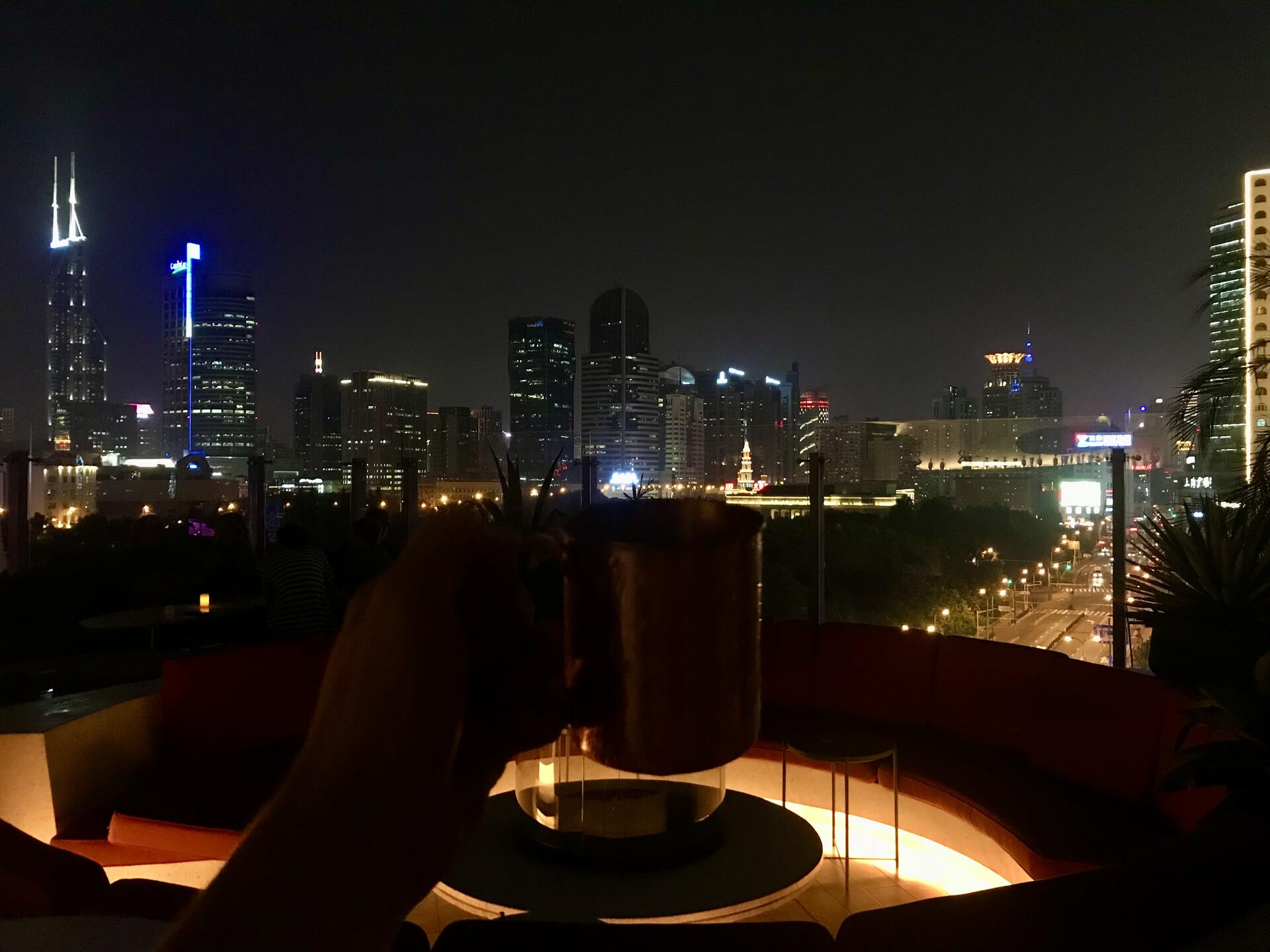

Next Guide in the Series:
An Expats Guide to the Best Spots in Shanghai: 002
Find Me Elsewhere:
All images property of Hes. Originally published as an Instagram Guide on Feb. 02, 2021. Reworked and published on Nostr on Feb. 17, 2024.
-
 @ a367f9eb:0633efea
2024-11-05 08:48:41
@ a367f9eb:0633efea
2024-11-05 08:48:41Last week, an investigation by Reuters revealed that Chinese researchers have been using open-source AI tools to build nefarious-sounding models that may have some military application.
The reporting purports that adversaries in the Chinese Communist Party and its military wing are taking advantage of the liberal software licensing of American innovations in the AI space, which could someday have capabilities to presumably harm the United States.
In a June paper reviewed by Reuters, six Chinese researchers from three institutions, including two under the People’s Liberation Army’s (PLA) leading research body, the Academy of Military Science (AMS), detailed how they had used an early version of Meta’s Llama as a base for what it calls “ChatBIT”.
The researchers used an earlier Llama 13B large language model (LLM) from Meta, incorporating their own parameters to construct a military-focused AI tool to gather and process intelligence, and offer accurate and reliable information for operational decision-making.
While I’m doubtful that today’s existing chatbot-like tools will be the ultimate battlefield for a new geopolitical war (queue up the computer-simulated war from the Star Trek episode “A Taste of Armageddon“), this recent exposé requires us to revisit why large language models are released as open-source code in the first place.
Added to that, should it matter that an adversary is having a poke around and may ultimately use them for some purpose we may not like, whether that be China, Russia, North Korea, or Iran?
The number of open-source AI LLMs continues to grow each day, with projects like Vicuna, LLaMA, BLOOMB, Falcon, and Mistral available for download. In fact, there are over one million open-source LLMs available as of writing this post. With some decent hardware, every global citizen can download these codebases and run them on their computer.
With regard to this specific story, we could assume it to be a selective leak by a competitor of Meta which created the LLaMA model, intended to harm its reputation among those with cybersecurity and national security credentials. There are potentially trillions of dollars on the line.
Or it could be the revelation of something more sinister happening in the military-sponsored labs of Chinese hackers who have already been caught attacking American infrastructure, data, and yes, your credit history?
As consumer advocates who believe in the necessity of liberal democracies to safeguard our liberties against authoritarianism, we should absolutely remain skeptical when it comes to the communist regime in Beijing. We’ve written as much many times.
At the same time, however, we should not subrogate our own critical thinking and principles because it suits a convenient narrative.
Consumers of all stripes deserve technological freedom, and innovators should be free to provide that to us. And open-source software has provided the very foundations for all of this.
Open-source matters When we discuss open-source software and code, what we’re really talking about is the ability for people other than the creators to use it.
The various licensing schemes – ranging from GNU General Public License (GPL) to the MIT License and various public domain classifications – determine whether other people can use the code, edit it to their liking, and run it on their machine. Some licenses even allow you to monetize the modifications you’ve made.
While many different types of software will be fully licensed and made proprietary, restricting or even penalizing those who attempt to use it on their own, many developers have created software intended to be released to the public. This allows multiple contributors to add to the codebase and to make changes to improve it for public benefit.
Open-source software matters because anyone, anywhere can download and run the code on their own. They can also modify it, edit it, and tailor it to their specific need. The code is intended to be shared and built upon not because of some altruistic belief, but rather to make it accessible for everyone and create a broad base. This is how we create standards for technologies that provide the ground floor for further tinkering to deliver value to consumers.
Open-source libraries create the building blocks that decrease the hassle and cost of building a new web platform, smartphone, or even a computer language. They distribute common code that can be built upon, assuring interoperability and setting standards for all of our devices and technologies to talk to each other.
I am myself a proponent of open-source software. The server I run in my home has dozens of dockerized applications sourced directly from open-source contributors on GitHub and DockerHub. When there are versions or adaptations that I don’t like, I can pick and choose which I prefer. I can even make comments or add edits if I’ve found a better way for them to run.
Whether you know it or not, many of you run the Linux operating system as the base for your Macbook or any other computer and use all kinds of web tools that have active repositories forked or modified by open-source contributors online. This code is auditable by everyone and can be scrutinized or reviewed by whoever wants to (even AI bots).
This is the same software that runs your airlines, powers the farms that deliver your food, and supports the entire global monetary system. The code of the first decentralized cryptocurrency Bitcoin is also open-source, which has allowed thousands of copycat protocols that have revolutionized how we view money.
You know what else is open-source and available for everyone to use, modify, and build upon?
PHP, Mozilla Firefox, LibreOffice, MySQL, Python, Git, Docker, and WordPress. All protocols and languages that power the web. Friend or foe alike, anyone can download these pieces of software and run them how they see fit.
Open-source code is speech, and it is knowledge.
We build upon it to make information and technology accessible. Attempts to curb open-source, therefore, amount to restricting speech and knowledge.
Open-source is for your friends, and enemies In the context of Artificial Intelligence, many different developers and companies have chosen to take their large language models and make them available via an open-source license.
At this very moment, you can click on over to Hugging Face, download an AI model, and build a chatbot or scripting machine suited to your needs. All for free (as long as you have the power and bandwidth).
Thousands of companies in the AI sector are doing this at this very moment, discovering ways of building on top of open-source models to develop new apps, tools, and services to offer to companies and individuals. It’s how many different applications are coming to life and thousands more jobs are being created.
We know this can be useful to friends, but what about enemies?
As the AI wars heat up between liberal democracies like the US, the UK, and (sluggishly) the European Union, we know that authoritarian adversaries like the CCP and Russia are building their own applications.
The fear that China will use open-source US models to create some kind of military application is a clear and present danger for many political and national security researchers, as well as politicians.
A bipartisan group of US House lawmakers want to put export controls on AI models, as well as block foreign access to US cloud servers that may be hosting AI software.
If this seems familiar, we should also remember that the US government once classified cryptography and encryption as “munitions” that could not be exported to other countries (see The Crypto Wars). Many of the arguments we hear today were invoked by some of the same people as back then.
Now, encryption protocols are the gold standard for many different banking and web services, messaging, and all kinds of electronic communication. We expect our friends to use it, and our foes as well. Because code is knowledge and speech, we know how to evaluate it and respond if we need to.
Regardless of who uses open-source AI, this is how we should view it today. These are merely tools that people will use for good or ill. It’s up to governments to determine how best to stop illiberal or nefarious uses that harm us, rather than try to outlaw or restrict building of free and open software in the first place.
Limiting open-source threatens our own advancement If we set out to restrict and limit our ability to create and share open-source code, no matter who uses it, that would be tantamount to imposing censorship. There must be another way.
If there is a “Hundred Year Marathon” between the United States and liberal democracies on one side and autocracies like the Chinese Communist Party on the other, this is not something that will be won or lost based on software licenses. We need as much competition as possible.
The Chinese military has been building up its capabilities with trillions of dollars’ worth of investments that span far beyond AI chatbots and skip logic protocols.
The theft of intellectual property at factories in Shenzhen, or in US courts by third-party litigation funding coming from China, is very real and will have serious economic consequences. It may even change the balance of power if our economies and countries turn to war footing.
But these are separate issues from the ability of free people to create and share open-source code which we can all benefit from. In fact, if we want to continue our way our life and continue to add to global productivity and growth, it’s demanded that we defend open-source.
If liberal democracies want to compete with our global adversaries, it will not be done by reducing the freedoms of citizens in our own countries.
Last week, an investigation by Reuters revealed that Chinese researchers have been using open-source AI tools to build nefarious-sounding models that may have some military application.
The reporting purports that adversaries in the Chinese Communist Party and its military wing are taking advantage of the liberal software licensing of American innovations in the AI space, which could someday have capabilities to presumably harm the United States.
In a June paper reviewed by Reuters, six Chinese researchers from three institutions, including two under the People’s Liberation Army’s (PLA) leading research body, the Academy of Military Science (AMS), detailed how they had used an early version of Meta’s Llama as a base for what it calls “ChatBIT”.
The researchers used an earlier Llama 13B large language model (LLM) from Meta, incorporating their own parameters to construct a military-focused AI tool to gather and process intelligence, and offer accurate and reliable information for operational decision-making.
While I’m doubtful that today’s existing chatbot-like tools will be the ultimate battlefield for a new geopolitical war (queue up the computer-simulated war from the Star Trek episode “A Taste of Armageddon“), this recent exposé requires us to revisit why large language models are released as open-source code in the first place.
Added to that, should it matter that an adversary is having a poke around and may ultimately use them for some purpose we may not like, whether that be China, Russia, North Korea, or Iran?
The number of open-source AI LLMs continues to grow each day, with projects like Vicuna, LLaMA, BLOOMB, Falcon, and Mistral available for download. In fact, there are over one million open-source LLMs available as of writing this post. With some decent hardware, every global citizen can download these codebases and run them on their computer.
With regard to this specific story, we could assume it to be a selective leak by a competitor of Meta which created the LLaMA model, intended to harm its reputation among those with cybersecurity and national security credentials. There are potentially trillions of dollars on the line.
Or it could be the revelation of something more sinister happening in the military-sponsored labs of Chinese hackers who have already been caught attacking American infrastructure, data, and yes, your credit history?
As consumer advocates who believe in the necessity of liberal democracies to safeguard our liberties against authoritarianism, we should absolutely remain skeptical when it comes to the communist regime in Beijing. We’ve written as much many times.
At the same time, however, we should not subrogate our own critical thinking and principles because it suits a convenient narrative.
Consumers of all stripes deserve technological freedom, and innovators should be free to provide that to us. And open-source software has provided the very foundations for all of this.
Open-source matters
When we discuss open-source software and code, what we’re really talking about is the ability for people other than the creators to use it.
The various licensing schemes – ranging from GNU General Public License (GPL) to the MIT License and various public domain classifications – determine whether other people can use the code, edit it to their liking, and run it on their machine. Some licenses even allow you to monetize the modifications you’ve made.
While many different types of software will be fully licensed and made proprietary, restricting or even penalizing those who attempt to use it on their own, many developers have created software intended to be released to the public. This allows multiple contributors to add to the codebase and to make changes to improve it for public benefit.
Open-source software matters because anyone, anywhere can download and run the code on their own. They can also modify it, edit it, and tailor it to their specific need. The code is intended to be shared and built upon not because of some altruistic belief, but rather to make it accessible for everyone and create a broad base. This is how we create standards for technologies that provide the ground floor for further tinkering to deliver value to consumers.
Open-source libraries create the building blocks that decrease the hassle and cost of building a new web platform, smartphone, or even a computer language. They distribute common code that can be built upon, assuring interoperability and setting standards for all of our devices and technologies to talk to each other.
I am myself a proponent of open-source software. The server I run in my home has dozens of dockerized applications sourced directly from open-source contributors on GitHub and DockerHub. When there are versions or adaptations that I don’t like, I can pick and choose which I prefer. I can even make comments or add edits if I’ve found a better way for them to run.
Whether you know it or not, many of you run the Linux operating system as the base for your Macbook or any other computer and use all kinds of web tools that have active repositories forked or modified by open-source contributors online. This code is auditable by everyone and can be scrutinized or reviewed by whoever wants to (even AI bots).
This is the same software that runs your airlines, powers the farms that deliver your food, and supports the entire global monetary system. The code of the first decentralized cryptocurrency Bitcoin is also open-source, which has allowed thousands of copycat protocols that have revolutionized how we view money.
You know what else is open-source and available for everyone to use, modify, and build upon?
PHP, Mozilla Firefox, LibreOffice, MySQL, Python, Git, Docker, and WordPress. All protocols and languages that power the web. Friend or foe alike, anyone can download these pieces of software and run them how they see fit.
Open-source code is speech, and it is knowledge.
We build upon it to make information and technology accessible. Attempts to curb open-source, therefore, amount to restricting speech and knowledge.
Open-source is for your friends, and enemies
In the context of Artificial Intelligence, many different developers and companies have chosen to take their large language models and make them available via an open-source license.
At this very moment, you can click on over to Hugging Face, download an AI model, and build a chatbot or scripting machine suited to your needs. All for free (as long as you have the power and bandwidth).
Thousands of companies in the AI sector are doing this at this very moment, discovering ways of building on top of open-source models to develop new apps, tools, and services to offer to companies and individuals. It’s how many different applications are coming to life and thousands more jobs are being created.
We know this can be useful to friends, but what about enemies?
As the AI wars heat up between liberal democracies like the US, the UK, and (sluggishly) the European Union, we know that authoritarian adversaries like the CCP and Russia are building their own applications.
The fear that China will use open-source US models to create some kind of military application is a clear and present danger for many political and national security researchers, as well as politicians.
A bipartisan group of US House lawmakers want to put export controls on AI models, as well as block foreign access to US cloud servers that may be hosting AI software.
If this seems familiar, we should also remember that the US government once classified cryptography and encryption as “munitions” that could not be exported to other countries (see The Crypto Wars). Many of the arguments we hear today were invoked by some of the same people as back then.
Now, encryption protocols are the gold standard for many different banking and web services, messaging, and all kinds of electronic communication. We expect our friends to use it, and our foes as well. Because code is knowledge and speech, we know how to evaluate it and respond if we need to.
Regardless of who uses open-source AI, this is how we should view it today. These are merely tools that people will use for good or ill. It’s up to governments to determine how best to stop illiberal or nefarious uses that harm us, rather than try to outlaw or restrict building of free and open software in the first place.
Limiting open-source threatens our own advancement
If we set out to restrict and limit our ability to create and share open-source code, no matter who uses it, that would be tantamount to imposing censorship. There must be another way.
If there is a “Hundred Year Marathon” between the United States and liberal democracies on one side and autocracies like the Chinese Communist Party on the other, this is not something that will be won or lost based on software licenses. We need as much competition as possible.
The Chinese military has been building up its capabilities with trillions of dollars’ worth of investments that span far beyond AI chatbots and skip logic protocols.
The theft of intellectual property at factories in Shenzhen, or in US courts by third-party litigation funding coming from China, is very real and will have serious economic consequences. It may even change the balance of power if our economies and countries turn to war footing.
But these are separate issues from the ability of free people to create and share open-source code which we can all benefit from. In fact, if we want to continue our way our life and continue to add to global productivity and growth, it’s demanded that we defend open-source.
If liberal democracies want to compete with our global adversaries, it will not be done by reducing the freedoms of citizens in our own countries.
Originally published on the website of the Consumer Choice Center.
-
 @ dfc7c785:4c3c6174
2025-01-02 05:56:32
@ dfc7c785:4c3c6174
2025-01-02 05:56:32![[IMG_4743.jpeg]]
ST. MARY'S CHURCH CHOLSEY & AGATHA CHRISTIE
St. Mary's Church
Cholsey church was part of the monastic system set up by Ethelread the Unready in about 986 A.D. The lower part of the tower of St Mary's Church shows traces of Saxon style stonework in the form of 'long and short" quoins. In 1121 when Henry I founded Reading abbey he endowed it with the monastic lands at Cholsey. those days everyone had to pay a tithe - a tenth part of the annual produce of land or labour. The tithe was usually paid in goods and Cholsey produced so much that a huge barn was built - said to be the biggest in Europe.
Great Barn
The church and manor were given to Reading Abbey by Henry Ist in 1121 A.D. It was a most valuable part of the abbey's possessions. In the 13th & 14th centuries the largest barn in Europe was erected close by the church.
Unfortunately, this was demolished in the early 19th century. On the right, as you enter the churchyard you can see a large barn - the original barn was bigger than this. The Great Barn was 303 feet long and had seventeen stone piers on each side supporting the roof timbers.
The Church Bells
There are eight bells in the tower. The Sanctus bell was made by Richard de Wymbish, one of the earliest London Bell founders.
Only a few bells made by him now exist.
The Cholsey bell is still regularly rung.
It was rehung in 1972 and bears the inscription RICARDUS: DE: WIMBUS: ME: FECIT (Richard de Wymbish made me.)
Cholsey First School
In 1837 a school building was erected by the churchyard gates. The school was built by subscription and then adopted by the National Society and was used for Sunday school and evening classes.
Agatha Christie
The world renowned writer Agatha Christie was a resident of the parish of Cholsey. She was born on the 15th September 1890 in Torquay, Devon.
In December 1914 she married an aviator in the Royal Flying Corps - Archibald Christie, but this ended in divorce in 1928.
There was one child from the marriage. In 1930 she married her second husband, the archaeologist Max Mallowan. They bought Winterbrook House in 1934. They attended St. Mary's Curch, Cholsey and are buried in the graveyard of their parish church.
After entering the churchyard walk along the path to the porch and then veer right across the grass towards the wall and you will see a large gravestone
The grave of Agatha Christie and her husband, Max Mallowan is tucked into a corner of the graveyard of St. Mary's Church. Agatha Christie was awarded a Commander of the Order of the British Empire in 1956.
In 1971 she received the Order of Dame Commander of the British Empire. Dame Agatha Christie died on the 12th January 1976 at the age of 85.
To return to Wallingford you need to go back through the churchyard and out to the road. You can then
Cross the road and go back the way you came.
If you wish to start the Agatha Christie Trail, cross the road follow the path to the bypass. Cross carefully and walk down Winterbrook Lane until you reach the main road. You need to cross and you will soon reach Winterbrook House which is almost hidden by a hedge.
Turn right and walk carefully over the bridge, past the school and turn right through the gate and walk across Whitehead Meadow. Turn left through the recreation ground towards the Pavilion. On leaving the recreation ground, turn left and walk into the centre of the village where it is possible to catch a bus into Wallingford.
Turn right and follow the pavement into Cholsey. At the first mini roundabout turn left and head back towards Wallingford After the Red Lion there is a long straight road until you reach the bypass. Winterbrook House is on the right hand side of Reading Road.
-
 @ 09fbf8f3:fa3d60f0
2024-11-02 08:00:29
@ 09fbf8f3:fa3d60f0
2024-11-02 08:00:29> ### 第三方API合集:
免责申明:
在此推荐的 OpenAI API Key 由第三方代理商提供,所以我们不对 API Key 的 有效性 和 安全性 负责,请你自行承担购买和使用 API Key 的风险。
| 服务商 | 特性说明 | Proxy 代理地址 | 链接 | | --- | --- | --- | --- | | AiHubMix | 使用 OpenAI 企业接口,全站模型价格为官方 86 折(含 GPT-4 )| https://aihubmix.com/v1 | 官网 | | OpenAI-HK | OpenAI的API官方计费模式为,按每次API请求内容和返回内容tokens长度来定价。每个模型具有不同的计价方式,以每1,000个tokens消耗为单位定价。其中1,000个tokens约为750个英文单词(约400汉字)| https://api.openai-hk.com/ | 官网 | | CloseAI | CloseAI是国内规模最大的商用级OpenAI代理平台,也是国内第一家专业OpenAI中转服务,定位于企业级商用需求,面向企业客户的线上服务提供高质量稳定的官方OpenAI API 中转代理,是百余家企业和多家科研机构的专用合作平台。 | https://api.openai-proxy.org | 官网 | | OpenAI-SB | 需要配合Telegram 获取api key | https://api.openai-sb.com | 官网 |
持续更新。。。
推广:
访问不了openai,去
低调云购买VPN。官网:https://didiaocloud.xyz
邀请码:
w9AjVJit价格低至1元。
-
 @ 79998141:0f8f1901
2025-01-02 05:04:56
@ 79998141:0f8f1901
2025-01-02 05:04:56Happy new year, Anon.
Thanks for tuning in to whatever this long form post will be. I hope to make these more regular, like journal entries as we travel through "real life" and the Nostrverse together. If I'm making time for this reflective writing, then things are going as planned.
2024 was a wildly transformative year for me for many reasons... there's no way I can possibly fit all of them here. They're not all related to Bitcoin and Nostr- I've got a beautiful life outside of all that which has its own independent arc. My wife and I celebrated 7 years of marriage together, stronger than ever (don't believe that "itch" bullshit). We let go of some negative relationships and embraced some positive ones. We cut some bad habits, and we made some good habits. We worked, we traveled, we saw family, and we partied.
But damn, these two technologies have become a huge part of my life. God willing, this trend will continue until they've both eclipsed my professional capacity through our startup, Conduit BTC.
This was the year I was truly orange pilled. Until late 2023, I had traded (quite profitably) Bitcoin, "crypto", stocks, options, prediction markets and whatever else I could get my hands on that felt undervalued. I did this all in my spare time, grinding out a little financial freedom while I hustled at my fiat ventures to support my little family. I wasn't a true believer- just an opportunist with a knack for spotting where and when a crowd might flock to next. That was right up until I ran face first into Lyn Alden's book "Broken Money".
Something about Lyn's engineer/macro-finance inspired prose clicked with me, lock and key. Total one way function. By the end of the book my laser eyes had burned a hole in my bedroom ceiling. I was all in- and acted accordingly both with my capital and my attention. It wasn't long before I discovered Nostr and dove in here too, falling deep into my current orange and purple polyamorous love affair.
"If you know the enemy and know yourself, you need not fear the result of a hundred battles."
Despite the passion, through studying Bitcoin's criticisms (from the likes of Mike Green and Nassim Taleb) I found a hole in the utopian plot: none of this works without Bitcoin actually being used as money. Worldwide transactions must skyrocket demand for blockspace to keep the network secure/stable for the long term. Besides, if everyday folks aren't using Bitcoin as money then we haven't done shit to make the world a better place. In that world, we've only replaced old masters with new ones. Fuck that.
Whatever I did in this space needed to increase the usage of Bitcoin as money. Simple. This was bigger than passion, this was purpose. I knew that come hell or high water I would dedicate myself to this mission.
Lucky for me I found a partner and best friend in @aceaspades to go on this adventure with. I'm infinitely grateful for him. He's an incredible man who also happens to be an insanely creative and talented software developer. We'd tried for years to find the right project to focus on together, experimenting with all kinds of new techy ideas as they came across our field. Nothing had ever captured our attention like this. This was different. By March of 2024 we had formed a company and gotten to work iterating on how we could leverage these beautiful protocols and open-source tech to create something that served our mission. This is @ConduitBTC.
I've done well in my fiat career executing plans downstream of someone else's creative vision. I've learned the ins and outs of an established ecosystem and found ways to profit from it. I take plans developed by others, compete to win contracts to build them, and execute on them in a cashflow-positive way. I'm bringing this no bullshit blue collar skillset with me to the Nostrverse whether they like it or not.
The adventure we're embarking on now is totally different though. We're charting a new course - totally creative, highly intuitive and extremely speculative towards a future that doesn't exist yet. There are few established norms. The potential is vast but unknown. We're diving into a strange quest to sell a map to an imaginary place and to simultaneously architect its creation (alongside all the amazing builders here doing the same thing). This is insanely exciting to me.
We're barely getting started but a lot has been invested under the surface which will show itself in 2025. We'll be sharing updates in a proper post on @ConduitBTC soon.
As for my personal 2025 resolutions, here they are: - zero alcohol for the entire year (did this in 2019 and had a great year, it's time for a rerun) - more focused presence in the moment: especially with my wife - more self care and prioritized mental/physical health - this includes daily: naps, prayer, self hypnosis or meditation, sweat, and stretching/massaging (overworked in 2024 with a fiat 9-5, a board/advisor role in a fiat business I have equity in, and my newfound passion here. Two serious burn out episodes experienced this year - zero is the only acceptable number of burnouts for long term health and success.) - related to the above: get Conduit some mission-aligned funding partners and leave my fiat 9-5. Grow the Conduit team (have put in a serious amount of my personal capital already to get this going, which will show fruit in the new year... but I am not an island) - more authentic and thoughtful posts on Nostr, with a solid amount of shitposting and organic home grown memes to balance it out... more zaps, more geniune connections and interactions with the curious forward thinking people on here - more IRL Nostr/Bitcoin events - more laughter, more jokes
Enough for now. Cheers to you and yours Anon, may 2025 bring you the magic you've been dreaming of.
-
 @ 4c48cf05:07f52b80
2024-10-30 01:03:42
@ 4c48cf05:07f52b80
2024-10-30 01:03:42I believe that five years from now, access to artificial intelligence will be akin to what access to the Internet represents today. It will be the greatest differentiator between the haves and have nots. Unequal access to artificial intelligence will exacerbate societal inequalities and limit opportunities for those without access to it.
Back in April, the AI Index Steering Committee at the Institute for Human-Centered AI from Stanford University released The AI Index 2024 Annual Report.
Out of the extensive report (502 pages), I chose to focus on the chapter dedicated to Public Opinion. People involved with AI live in a bubble. We all know and understand AI and therefore assume that everyone else does. But, is that really the case once you step out of your regular circles in Seattle or Silicon Valley and hit Main Street?
Two thirds of global respondents have a good understanding of what AI is
The exact number is 67%. My gut feeling is that this number is way too high to be realistic. At the same time, 63% of respondents are aware of ChatGPT so maybe people are confounding AI with ChatGPT?
If so, there is so much more that they won't see coming.
This number is important because you need to see every other questions and response of the survey through the lens of a respondent who believes to have a good understanding of what AI is.
A majority are nervous about AI products and services
52% of global respondents are nervous about products and services that use AI. Leading the pack are Australians at 69% and the least worried are Japanise at 23%. U.S.A. is up there at the top at 63%.
Japan is truly an outlier, with most countries moving between 40% and 60%.
Personal data is the clear victim
Exaclty half of the respondents believe that AI companies will protect their personal data. And the other half believes they won't.
Expected benefits
Again a majority of people (57%) think that it will change how they do their jobs. As for impact on your life, top hitters are getting things done faster (54%) and more entertainment options (51%).
The last one is a head scratcher for me. Are people looking forward to AI generated movies?

Concerns
Remember the 57% that thought that AI will change how they do their jobs? Well, it looks like 37% of them expect to lose it. Whether or not this is what will happen, that is a very high number of people who have a direct incentive to oppose AI.
Other key concerns include:
- Misuse for nefarious purposes: 49%
- Violation of citizens' privacy: 45%
Conclusion
This is the first time I come across this report and I wil make sure to follow future annual reports to see how these trends evolve.
Overall, people are worried about AI. There are many things that could go wrong and people perceive that both jobs and privacy are on the line.
Full citation: Nestor Maslej, Loredana Fattorini, Raymond Perrault, Vanessa Parli, Anka Reuel, Erik Brynjolfsson, John Etchemendy, Katrina Ligett, Terah Lyons, James Manyika, Juan Carlos Niebles, Yoav Shoham, Russell Wald, and Jack Clark, “The AI Index 2024 Annual Report,” AI Index Steering Committee, Institute for Human-Centered AI, Stanford University, Stanford, CA, April 2024.
The AI Index 2024 Annual Report by Stanford University is licensed under Attribution-NoDerivatives 4.0 International.
-
 @ 13e63e99:25525c6a
2025-01-02 02:03:59
@ 13e63e99:25525c6a
2025-01-02 02:03:59
The recent appointments by President-elect Donald Trump have generated significant excitement within the cryptocurrency sector. His crypto-supportive team has amplified market enthusiasm, pushing Bitcoin's price to an all-time high as the industry rallies around the news. Our team has analyzed each appointee to assess the long-term implications of Trump’s administration on the crypto landscape.
Key Appointments and Their Implications
1. David Sacks – White House AI and Crypto Czar

Sacks, a entrepreneur, investor, and advocate for cryptocurrencies, with a career spanning multiple successful ventures. He is the founding partner of Craft Ventures, a VC firm that invests in tech and crypto. Previously, Sacks was the COO of PayPal during its early days. Sacks has been an advocate for economic freedom, decentralization, and sensible crypto regulation. He has been involved in shaping crypto policy through his connection with political leaders, including his recent role as part of President-elect Trump’s pro-crypto team. His appointment highlights the administration’s intent to integrate cryptocurrency and AI into national policy, potentially creating a favorable environment for technological growth.
2. Paul Atkins – SEC Chairman Nominee

Atkins served as a commissioner for the U.S. Securities and Exchange Commission (SEC) from 2002 to 2008, where he advocated for market-oriented policies and reduced regulatory burdens. He has been a prominent voice in pushing for regulatory clarity in emerging financial technologies, including cryptocurrencies. He has consistently emphasized the importance of balancing investor protection with fostering innovation. Atkins’ nomination underscores a clear effort to address regulatory uncertainty in the crypto industry. As co-chair of the Digital Chamber’s Token Alliance since 2017, he has consistently supported initiatives that balance consumer protection with innovation. His leadership at the SEC is expected to bring much-needed clarity to the regulatory framework.
3. Stephen Miran – Chair of the Council of Economic Advisors

The council advises the president on economic policy, assists in the preparation of an annual report that gives an overview of the country's economy, reviews federal policies and programs and makes economic policy recommendations. Stephen Miran is a economist with a focus on deregulation and economic policy. He is best known for his role as an economic advisor with a strong commitment to fostering technological advancement and free-market principles. He is an advocate for streamlining regulatory processes, enabling new technologies like Bitcoin to thrive in a competitive global economy. Miran's ability to shape national economic policies could therefore play a critical role in determining the future regulatory landscape for cryptocurrencies in the U.S.
4. Rep. French Hill-Chairman of the House Financial Services Subcommittee on Digital Assets

Rep. Hill has served in the U.S. House of Representatives since 2015. He has been involved in numerous legislative efforts, focusing on economic policy, financial services, and digital asset regulation. Rep. Hill has elected to be Chairman of the House Financial Services Subcommittee on Digital Assets and has been a vocal advocate for creating a structured regulatory framework for cryptocurrencies and digital assets. Rep. Hill has identified a digital asset market structure bill as a priority for the Republican Party. His statements have stressed the importance of developing clear rules that will foster innovation, while also making sure that digital assets don’t become a vehicle for illegal activity or instability.
Outlook for the Crypto Industry
If the Trump administration follows through on its pledges, the U.S. could experience:
-
Enhanced Regulatory Clarity: Clear guidelines could attract institutional investment and drive industry innovation.
-
Improved Market Confidence: A well-structured framework may mitigate risks and encourage broader adoption of digital assets.
-
Global Leadership: Proactive support for cryptocurrencies could establish the U.S. as a leader in financial innovation.
However, delays or failure to act decisively could perpetuate uncertainty and market instability. The crypto community remains cautiously optimistic, awaiting tangible policy actions that translate this promising momentum into long-term growth opportunities.
Reference: MayerBrown, Pensions&Investments, Time

IMF-Driven Revisions to Bitcoin Law\ El Salvador and the IMF have reached an agreement on a $1.4 billion loan program, to be disbursed over 40 months, according to an IMF statement. In return, El Salvador has committed to implementing measures aimed at improving its primary balance and reducing its debt-to-GDP ratio. As part of the conditions for a new IMF loan package, President Nayib Bukele of El Salvador has agreed to revise key aspects of the country's groundbreaking Bitcoin Law enacted in 2021. The changes include:
-
Ending the Legal Tender Mandate: Businesses are no longer required to accept Bitcoin as a form of payment.
-
Shutting Down Chivo Wallet: The state-run wallet, plagued with technical issues, will cease operations.
-
Halting Bitcoin Tax Payments: Bitcoin will no longer be accepted for tax obligations.
Backlash and Misunderstandings\ Critics on social media have accused Bukele of abandoning his commitment to Bitcoin, framing these changes as a betrayal. However, such reactions fail to recognize the broader context of his leadership.
Leadership Priorities\ Bukele’s primary responsibility is to the Salvadoran people, not the global Bitcoin community. El Salvador faces profound challenges, including poverty, crime, and underdeveloped infrastructure. These realities necessitate pragmatic governance, where Bitcoin serves as a tool—not an ideology.
Expecting Bukele to prioritize Bitcoin over the well-being of his nation is both unrealistic and misaligned with the role of a national leader. The decision to modify the Bitcoin Law reflects a calculated effort to balance innovation with the pressing needs of the Salvadoran populace.
Implications
-
Investor Sentiment and Confidence: Bitcoin investors, particularly those who saw El Salvador's Bitcoin adoption as a milestone for mainstream acceptance, expressed disappointment over the reversal. Bitcoin experienced dip in value on the day the news broke.
-
IMF Dynamics: The IMF’s involvement also fueled concerns, as it was seen as a sign that traditional financial institutions were exerting influence over a policy that was once viewed as groundbreaking for Bitcoin adoption. Some traders and investors worried that further pressure from the IMF could lead to additional regulatory restrictions, potentially dampening future market enthusiasm. The concessions demonstrate the leverage international institutions hold over nations experimenting with alternative financial systems. This could prompt a reassessment of Bitcoin adoption strategies in the face of external pressures.
-
Setback to Bitcoin as “Medium of Exchange": El Salvador's scaling back of its Bitcoin Law could significantly slow the growth of Bitcoin as a medium of exchange, as the country had been seen as the most iconic and pioneering example of fostering a Bitcoin circular economy. The government has reduced the incentives for businesses and consumers to adopt Bitcoin for everyday transactions. As a result, the dream of creating a Bitcoin-driven economy in El Salvador, where the cryptocurrency could circulate seamlessly, faces a major setback, potentially delaying or even derailing Bitcoin’s path to becoming a widely used and accepted global currency.
President Bukele’s revisions to the Bitcoin Law are not a betrayal or rejection of Bitcoin, but a pragmatic adjustment to better serve the needs of El Salvador. Bitcoin remains an important tool in the nation’s economic strategy, but its utility must be balanced with other pressing priorities. El Salvador is still committed to purchasing Bitcoin and is likely to accelerate its pace. Ultimately, it's essential to remove the rose-tinted glasses and recognize the reality of a more mature and practical approach to integrating Bitcoin within a complex national economy.
Reference: Yahoo Finance, BitcoinMagazine

1. MicroStrategy to turn to fixed-income securities to raise funds for Bitcoin purchases
MicroStrategy, led by co-founder Michael Saylor, is shifting its funding strategy for Bitcoin purchases. Once its current fundraising plan is fully utilized, the company will move from using Bitcoin proxies to focusing on fixed-income securities. Previously, MicroStrategy has funded Bitcoin acquisitions through stock and convertible bond sales, with convertible bonds yielding positive returns as the company’s stock price rose. Saylor emphasized leveraging strategies to enhance shareholder value, noting that $4 billion of their $7.2 billion in convertible notes act as equity. This pivot aligns with a broader market trend where hedge funds are increasingly using fixed-income securities for convertible arbitrage, prompting MicroStrategy to issue $6.2 billion in convertible bonds this year. The move positions the company to adapt to the changing investment landscape while maximizing returns for shareholders.
Reference: Bloomberg
2. Russia Is Using Bitcoin for International Trade
Russian Finance Minister Anton Siluanov announced that Russian companies have started using Bitcoin and other digital currencies for international payments, a move in response to recent legislative changes aimed at countering Western sanctions. Additionally, lawmaker Anton Tkachev proposed creating a Bitcoin reserve, similar to foreign exchange reserves, to mitigate risks from sanctions, inflation, and currency fluctuations. This marks a step toward greater economic sovereignty and resilience.

Reference: The block beats
3. Japanese Government Responds to Proposal for Establishing Bitcoin Reserve
The Japanese government recently responded to a proposal by Senator Satoshi Hamada regarding the consideration of Bitcoin as a reserve asset, a trend gaining traction in countries like the U.S. While acknowledging the growing global interest in cryptocurrencies, the government expressed that discussions on Bitcoin’s role as a reserve asset are still in early stages and refrained from forming an opinion. Citing its legal framework, Japan emphasized that cryptocurrencies like Bitcoin are not classified as foreign exchange and do not align with the objectives of maintaining stable and liquid foreign exchange reserves. Japan’s cautious approach reflects its commitment to economic stability while evaluating the potential integration of digital assets.

Reference: coin post

Happy New Year from Team HCM! As we welcome the new year, we are excited to celebrate not only the joy of the season but also the growth and progress of the Bitcoin community. Reflecting on 2024, we made significant strides and embraced new changes. The official HCM website is set to launch at early January of the year 2025, marking an exciting new chapter for our team. Looking ahead, we are enthusiastic about the future and the global adoption of Bitcoin, which will continue to grow stronger and more impactful. Here's to an incredible journey ahead, filled with innovation, collaboration, and success! Cheers to 2025!

-
-
 @ 8f2fe968:0fbf4901
2024-10-25 17:34:06
@ 8f2fe968:0fbf4901
2024-10-25 17:34:06 -
 @ 13e63e99:25525c6a
2025-01-02 02:00:48
@ 13e63e99:25525c6a
2025-01-02 02:00:48
The recent appointments by President-elect Donald Trump have generated significant excitement within the cryptocurrency sector. His crypto-supportive team has amplified market enthusiasm, pushing Bitcoin's price to an all-time high as the industry rallies around the news. Our team has analyzed each appointee to assess the long-term implications of Trump’s administration on the crypto landscape.
Key Appointments and Their Implications
1. David Sacks – White House AI and Crypto Czar

Sacks, a entrepreneur, investor, and advocate for cryptocurrencies, with a career spanning multiple successful ventures. He is the founding partner of Craft Ventures, a VC firm that invests in tech and crypto. Previously, Sacks was the COO of PayPal during its early days. Sacks has been an advocate for economic freedom, decentralization, and sensible crypto regulation. He has been involved in shaping crypto policy through his connection with political leaders, including his recent role as part of President-elect Trump’s pro-crypto team. His appointment highlights the administration’s intent to integrate cryptocurrency and AI into national policy, potentially creating a favorable environment for technological growth.
2. Paul Atkins – SEC Chairman Nominee

Atkins served as a commissioner for the U.S. Securities and Exchange Commission (SEC) from 2002 to 2008, where he advocated for market-oriented policies and reduced regulatory burdens. He has been a prominent voice in pushing for regulatory clarity in emerging financial technologies, including cryptocurrencies. He has consistently emphasized the importance of balancing investor protection with fostering innovation. Atkins’ nomination underscores a clear effort to address regulatory uncertainty in the crypto industry. As co-chair of the Digital Chamber’s Token Alliance since 2017, he has consistently supported initiatives that balance consumer protection with innovation. His leadership at the SEC is expected to bring much-needed clarity to the regulatory framework.
3. Stephen Miran – Chair of the Council of Economic Advisors

The council advises the president on economic policy, assists in the preparation of an annual report that gives an overview of the country's economy, reviews federal policies and programs and makes economic policy recommendations. Stephen Miran is a economist with a focus on deregulation and economic policy. He is best known for his role as an economic advisor with a strong commitment to fostering technological advancement and free-market principles. He is an advocate for streamlining regulatory processes, enabling new technologies like Bitcoin to thrive in a competitive global economy. Miran's ability to shape national economic policies could therefore play a critical role in determining the future regulatory landscape for cryptocurrencies in the U.S.
4. Rep. French Hill-Chairman of the House Financial Services Subcommittee on Digital Assets

Rep. Hill has served in the U.S. House of Representatives since 2015. He has been involved in numerous legislative efforts, focusing on economic policy, financial services, and digital asset regulation. Rep. Hill has elected to be Chairman of the House Financial Services Subcommittee on Digital Assets and has been a vocal advocate for creating a structured regulatory framework for cryptocurrencies and digital assets. Rep. Hill has identified a digital asset market structure bill as a priority for the Republican Party. His statements have stressed the importance of developing clear rules that will foster innovation, while also making sure that digital assets don’t become a vehicle for illegal activity or instability.
Outlook for the Crypto Industry
If the Trump administration follows through on its pledges, the U.S. could experience:
-
Enhanced Regulatory Clarity: Clear guidelines could attract institutional investment and drive industry innovation.
-
Improved Market Confidence: A well-structured framework may mitigate risks and encourage broader adoption of digital assets.
-
Global Leadership: Proactive support for cryptocurrencies could establish the U.S. as a leader in financial innovation.
However, delays or failure to act decisively could perpetuate uncertainty and market instability. The crypto community remains cautiously optimistic, awaiting tangible policy actions that translate this promising momentum into long-term growth opportunities.
Reference: MayerBrown, Pensions&Investments, Time

IMF-Driven Revisions to Bitcoin Law\ El Salvador and the IMF have reached an agreement on a $1.4 billion loan program, to be disbursed over 40 months, according to an IMF statement. In return, El Salvador has committed to implementing measures aimed at improving its primary balance and reducing its debt-to-GDP ratio. As part of the conditions for a new IMF loan package, President Nayib Bukele of El Salvador has agreed to revise key aspects of the country's groundbreaking Bitcoin Law enacted in 2021. The changes include:
-
Ending the Legal Tender Mandate: Businesses are no longer required to accept Bitcoin as a form of payment.
-
Shutting Down Chivo Wallet: The state-run wallet, plagued with technical issues, will cease operations.
-
Halting Bitcoin Tax Payments: Bitcoin will no longer be accepted for tax obligations.
Backlash and Misunderstandings\ Critics on social media have accused Bukele of abandoning his commitment to Bitcoin, framing these changes as a betrayal. However, such reactions fail to recognize the broader context of his leadership.
Leadership Priorities\ Bukele’s primary responsibility is to the Salvadoran people, not the global Bitcoin community. El Salvador faces profound challenges, including poverty, crime, and underdeveloped infrastructure. These realities necessitate pragmatic governance, where Bitcoin serves as a tool—not an ideology.
Expecting Bukele to prioritize Bitcoin over the well-being of his nation is both unrealistic and misaligned with the role of a national leader. The decision to modify the Bitcoin Law reflects a calculated effort to balance innovation with the pressing needs of the Salvadoran populace.
Implications
-
Investor Sentiment and Confidence: Bitcoin investors, particularly those who saw El Salvador's Bitcoin adoption as a milestone for mainstream acceptance, expressed disappointment over the reversal. Bitcoin experienced dip in value on the day the news broke.
-
IMF Dynamics: The IMF’s involvement also fueled concerns, as it was seen as a sign that traditional financial institutions were exerting influence over a policy that was once viewed as groundbreaking for Bitcoin adoption. Some traders and investors worried that further pressure from the IMF could lead to additional regulatory restrictions, potentially dampening future market enthusiasm. The concessions demonstrate the leverage international institutions hold over nations experimenting with alternative financial systems. This could prompt a reassessment of Bitcoin adoption strategies in the face of external pressures.
-
Setback to Bitcoin as “Medium of Exchange": El Salvador's scaling back of its Bitcoin Law could significantly slow the growth of Bitcoin as a medium of exchange, as the country had been seen as the most iconic and pioneering example of fostering a Bitcoin circular economy. The government has reduced the incentives for businesses and consumers to adopt Bitcoin for everyday transactions. As a result, the dream of creating a Bitcoin-driven economy in El Salvador, where the cryptocurrency could circulate seamlessly, faces a major setback, potentially delaying or even derailing Bitcoin’s path to becoming a widely used and accepted global currency.
President Bukele’s revisions to the Bitcoin Law are not a betrayal or rejection of Bitcoin, but a pragmatic adjustment to better serve the needs of El Salvador. Bitcoin remains an important tool in the nation’s economic strategy, but its utility must be balanced with other pressing priorities. El Salvador is still committed to purchasing Bitcoin and is likely to accelerate its pace. Ultimately, it's essential to remove the rose-tinted glasses and recognize the reality of a more mature and practical approach to integrating Bitcoin within a complex national economy.
Reference: Yahoo Finance, BitcoinMagazine

1. MicroStrategy to turn to fixed-income securities to raise funds for Bitcoin purchases
MicroStrategy, led by co-founder Michael Saylor, is shifting its funding strategy for Bitcoin purchases. Once its current fundraising plan is fully utilized, the company will move from using Bitcoin proxies to focusing on fixed-income securities. Previously, MicroStrategy has funded Bitcoin acquisitions through stock and convertible bond sales, with convertible bonds yielding positive returns as the company’s stock price rose. Saylor emphasized leveraging strategies to enhance shareholder value, noting that $4 billion of their $7.2 billion in convertible notes act as equity. This pivot aligns with a broader market trend where hedge funds are increasingly using fixed-income securities for convertible arbitrage, prompting MicroStrategy to issue $6.2 billion in convertible bonds this year. The move positions the company to adapt to the changing investment landscape while maximizing returns for shareholders.
Reference: Bloomberg
2. Russia Is Using Bitcoin for International Trade
Russian Finance Minister Anton Siluanov announced that Russian companies have started using Bitcoin and other digital currencies for international payments, a move in response to recent legislative changes aimed at countering Western sanctions. Additionally, lawmaker Anton Tkachev proposed creating a Bitcoin reserve, similar to foreign exchange reserves, to mitigate risks from sanctions, inflation, and currency fluctuations. This marks a step toward greater economic sovereignty and resilience.

Reference: The block beats
3. Japanese Government Responds to Proposal for Establishing Bitcoin Reserve
The Japanese government recently responded to a proposal by Senator Satoshi Hamada regarding the consideration of Bitcoin as a reserve asset, a trend gaining traction in countries like the U.S. While acknowledging the growing global interest in cryptocurrencies, the government expressed that discussions on Bitcoin’s role as a reserve asset are still in early stages and refrained from forming an opinion. Citing its legal framework, Japan emphasized that cryptocurrencies like Bitcoin are not classified as foreign exchange and do not align with the objectives of maintaining stable and liquid foreign exchange reserves. Japan’s cautious approach reflects its commitment to economic stability while evaluating the potential integration of digital assets.

Reference: coin post

Happy New Year from Team HCM! As we welcome the new year, we are excited to celebrate not only the joy of the season but also the growth and progress of the Bitcoin community. Reflecting on 2024, we made significant strides and embraced new changes. The official HCM website is set to launch at early January of the year 2025, marking an exciting new chapter for our team. Looking ahead, we are enthusiastic about the future and the global adoption of Bitcoin, which will continue to grow stronger and more impactful. Here's to an incredible journey ahead, filled with innovation, collaboration, and success! Cheers to 2025!

-
-
 @ dc4cd086:cee77c06
2024-10-18 04:08:33
@ dc4cd086:cee77c06
2024-10-18 04:08:33Have you ever wanted to learn from lengthy educational videos but found it challenging to navigate through hours of content? Our new tool addresses this problem by transforming long-form video lectures into easily digestible, searchable content.
Key Features:
Video Processing:
- Automatically downloads YouTube videos, transcripts, and chapter information
- Splits transcripts into sections based on video chapters
Content Summarization:
- Utilizes language models to transform spoken content into clear, readable text
- Formats output in AsciiDoc for improved readability and navigation
- Highlights key terms and concepts with [[term]] notation for potential cross-referencing
Diagram Extraction:
- Analyzes video entropy to identify static diagram/slide sections
- Provides a user-friendly GUI for manual selection of relevant time ranges
- Allows users to pick representative frames from selected ranges
Going Forward:
Currently undergoing a rewrite to improve organization and functionality, but you are welcome to try the current version, though it might not work on every machine. Will support multiple open and closed language models for user choice Free and open-source, allowing for personal customization and integration with various knowledge bases. Just because we might not have it on our official Alexandria knowledge base, you are still welcome to use it on you own personal or community knowledge bases! We want to help find connections between ideas that exist across relays, allowing individuals and groups to mix and match knowledge bases between each other, allowing for any degree of openness you care.
While designed with #Alexandria users in mind, it's available for anyone to use and adapt to their own learning needs.
Screenshots
Frame Selection
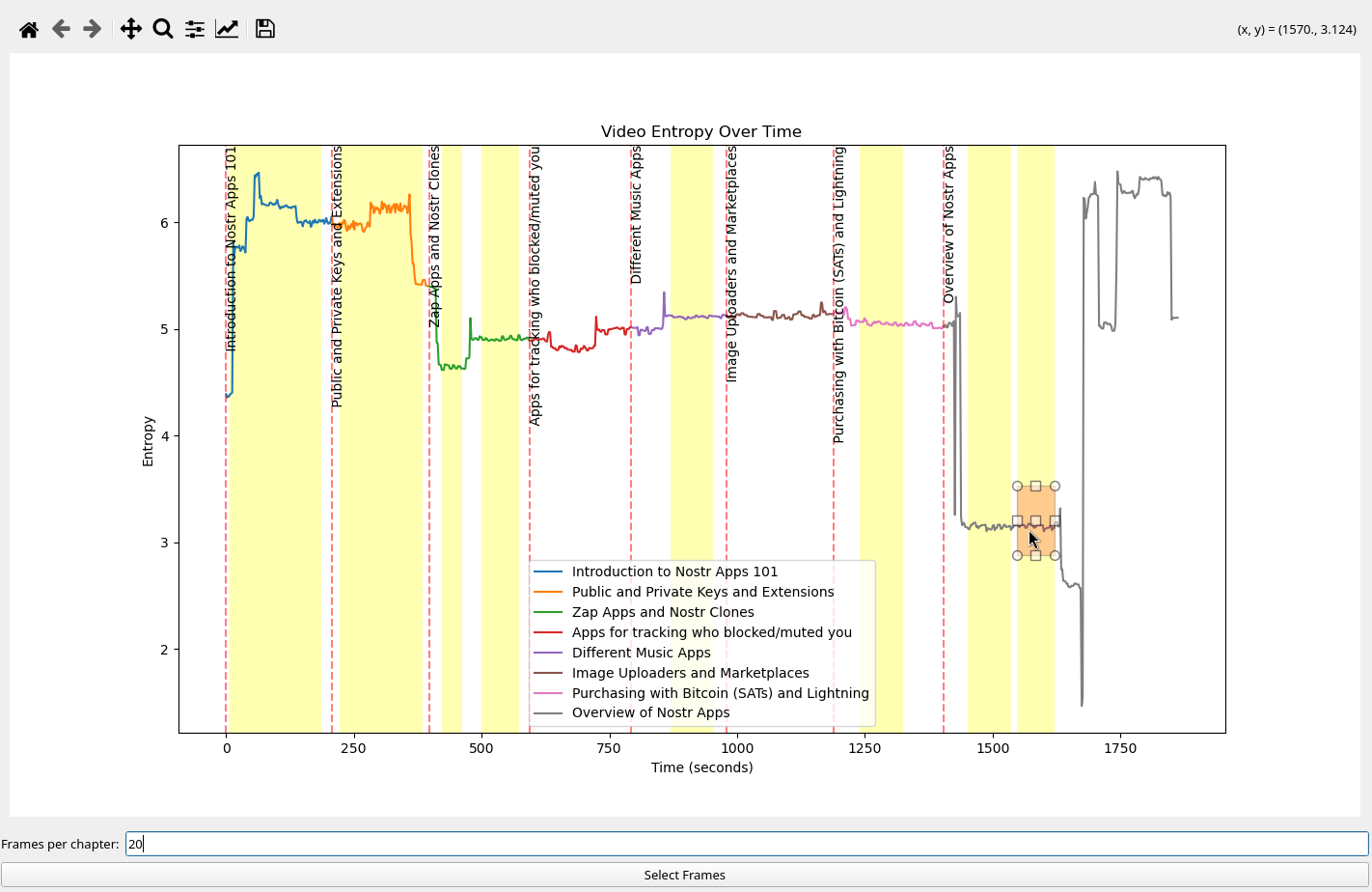
This is a screenshot of the frame selection interface. You'll see a signal that represents frame entropy over time. The vertical lines indicate the start and end of a chapter. Within these chapters you can select the frames by clicking and dragging the mouse over the desired range where you think diagram is in that chapter. At the bottom is an option that tells the program to select a specific number of frames from that selection.
Diagram Extraction
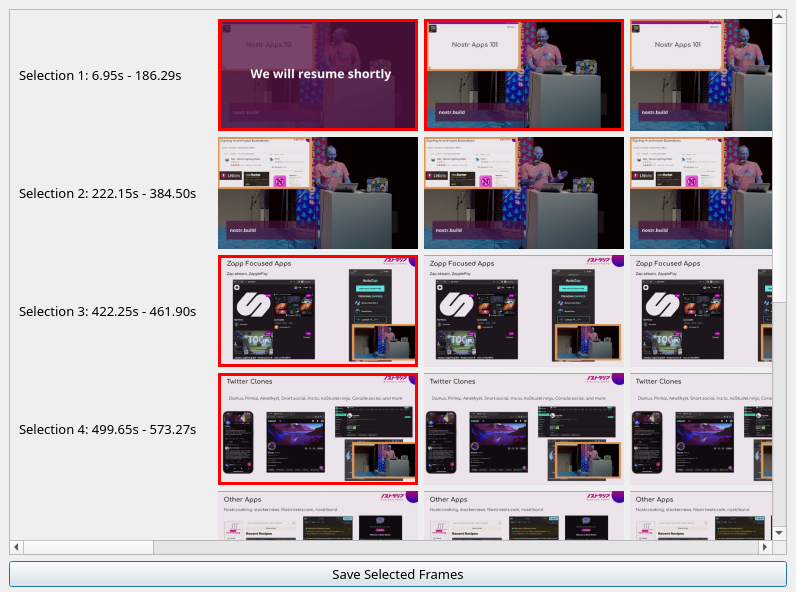
This is a screenshot of the diagram extraction interface. For every selection you've made, there will be a set of frames that you can choose from. You can select and deselect as many frames as you'd like to save.
Links
- repo: https://github.com/limina1/video_article_converter
- Nostr Apps 101: https://www.youtube.com/watch?v=Flxa_jkErqE
Output
And now, we have a demonstration of the final result of this tool, with some quick cleaning up. The video we will be using this tool on is titled Nostr Apps 101 by nostr:npub1nxy4qpqnld6kmpphjykvx2lqwvxmuxluddwjamm4nc29ds3elyzsm5avr7 during Nostrasia. The following thread is an analog to the modular articles we are constructing for Alexandria, and I hope it conveys the functionality we want to create in the knowledge space. Note, this tool is the first step! You could use a different prompt that is most appropriate for the specific context of the transcript you are working with, but you can also manually clean up any discrepancies that don't portray the video accurately.
nostr:nevent1qvzqqqqqqypzp5r5hd579v2sszvvzfel677c8dxgxm3skl773sujlsuft64c44ncqy2hwumn8ghj7un9d3shjtnyv9kh2uewd9hj7qgwwaehxw309ahx7uewd3hkctcpzemhxue69uhhyetvv9ujumt0wd68ytnsw43z7qghwaehxw309aex2mrp0yhxummnw3ezucnpdejz7qgewaehxw309aex2mrp0yh8xmn0wf6zuum0vd5kzmp0qqsxunmjy20mvlq37vnrcshkf6sdrtkfjtjz3anuetmcuv8jswhezgc7hglpn
Or view on Coracle nostr:nevent1qqsxunmjy20mvlq37vnrcshkf6sdrtkfjtjz3anuetmcuv8jswhezgcppemhxue69uhkummn9ekx7mp0qgsdqa9md83tz5yqnrqjw07hhkpmfjpkuv9hlh5v8yhu8z274w9dv7qnnq0s3
-
 @ 8947a945:9bfcf626
2024-10-17 08:06:55
@ 8947a945:9bfcf626
2024-10-17 08:06:55สวัสดีทุกคนบน Nostr ครับ รวมไปถึง watchersและ ผู้ติดตามของผมจาก Deviantart และ platform งานศิลปะอื่นๆนะครับ
ตั้งแต่ต้นปี 2024 ผมใช้ AI เจนรูปงานตัวละครสาวๆจากอนิเมะ และเปิด exclusive content ให้สำหรับผู้ที่ชื่นชอบผลงานของผมเป็นพิเศษ
ผมโพสผลงานผมทั้งหมดไว้ที่เวบ Deviantart และค่อยๆสร้างฐานผู้ติดตามมาเรื่อยๆอย่างค่อยเป็นค่อยไปมาตลอดครับ ทุกอย่างเติบโตไปเรื่อยๆของมัน ส่วนตัวผมมองว่ามันเป็นพิร์ตธุรกิจออนไลน์ ของผมพอร์ตนึงได้เลย
เมื่อวันที่ 16 กย.2024 มีผู้ติดตามคนหนึ่งส่งข้อความส่วนตัวมาหาผม บอกว่าชื่นชอบผลงานของผมมาก ต้องการจะขอซื้อผลงาน แต่ขอซื้อเป็น NFT นะ เสนอราคาซื้อขายต่อชิ้นที่สูงมาก หลังจากนั้นผมกับผู้ซื้อคนนี้พูดคุยกันในเมล์ครับ
นี่คือข้อสรุปสั่นๆจากการต่อรองซื้อขายครับ
(หลังจากนี้ผมขอเรียกผู้ซื้อว่า scammer นะครับ เพราะไพ่มันหงายมาแล้ว ว่าเขาคือมิจฉาชีพ)

- Scammer รายแรก เลือกผลงานที่จะซื้อ เสนอราคาซื้อที่สูงมาก แต่ต้องเป็นเวบไซต์ NFTmarket place ที่เขากำหนดเท่านั้น มันทำงานอยู่บน ERC20 ผมเข้าไปดูเวบไซต์ที่ว่านี้แล้วรู้สึกว่ามันดูแปลกๆครับ คนที่จะลงขายผลงานจะต้องใช้ email ในการสมัครบัญชีซะก่อน ถึงจะผูก wallet อย่างเช่น metamask ได้ เมื่อผูก wallet แล้วไม่สามารถเปลี่ยนได้ด้วย ตอนนั้นผมใช้ wallet ที่ไม่ได้ link กับ HW wallet ไว้ ทดลองสลับ wallet ไปๆมาๆ มันทำไม่ได้ แถมลอง log out แล้ว เลข wallet ก็ยังคาอยู่อันเดิม อันนี้มันดูแปลกๆแล้วหนึ่งอย่าง เวบนี้ค่า ETH ในการ mint 0.15 - 0.2 ETH … ตีเป็นเงินบาทนี่แพงบรรลัยอยู่นะครับ

-
Scammer รายแรกพยายามชักจูงผม หว่านล้อมผมว่า แหม เดี๋ยวเขาก็มารับซื้องานผมน่า mint งานเสร็จ รีบบอกเขานะ เดี๋ยวเขารีบกดซื้อเลย พอขายได้กำไร ผมก็ได้ค่า gas คืนได้ แถมยังได้กำไรอีก ไม่มีอะไรต้องเสีนจริงมั้ย แต่มันเป้นความโชคดีครับ เพราะตอนนั้นผมไม่เหลือทุนสำรองที่จะมาซื้อ ETH ได้ ผมเลยต่อรองกับเขาตามนี้ครับ :
-
ผมเสนอว่า เอางี้มั้ย ผมส่งผลงานของผมแบบ low resolution ให้ก่อน แลกกับให้เขาช่วยโอน ETH ที่เป็นค่า mint งานมาให้หน่อย พอผมได้ ETH แล้ว ผมจะ upscale งานของผม แล้วเมล์ไปให้ ใจแลกใจกันไปเลย ... เขาไม่เอา
- ผมเสนอให้ไปซื้อที่ร้านค้าออนไลน์ buymeacoffee ของผมมั้ย จ่ายเป็น USD ... เขาไม่เอา
- ผมเสนอให้ซื้อขายผ่าน PPV lightning invoice ที่ผมมีสิทธิ์เข้าถึง เพราะเป็น creator ของ Creatr ... เขาไม่เอา
- ผมยอกเขาว่างั้นก็รอนะ รอเงินเดือนออก เขาบอก ok
สัปดาห์ถัดมา มี scammer คนที่สองติดต่อผมเข้ามา ใช้วิธีการใกล้เคียงกัน แต่ใช้คนละเวบ แถมเสนอราคาซื้อที่สูงกว่าคนแรกมาก เวบที่สองนี้เลวร้ายค่าเวบแรกอีกครับ คือต้องใช้เมล์สมัครบัญชี ไม่สามารถผูก metamask ได้ พอสมัครเสร็จจะได้ wallet เปล่าๆมาหนึ่งอัน ผมต้องโอน ETH เข้าไปใน wallet นั้นก่อน เพื่อเอาไปเป็นค่า mint NFT 0.2 ETH
ผมบอก scammer รายที่สองว่า ต้องรอนะ เพราะตอนนี้กำลังติดต่อซื้อขายอยู่กับผู้ซื้อรายแรกอยู่ ผมกำลังรอเงินเพื่อมาซื้อ ETH เป็นต้นทุนดำเนินงานอยู่ คนคนนี้ขอให้ผมส่งเวบแรกไปให้เขาดูหน่อย หลังจากนั้นไม่นานเขาเตือนผมมาว่าเวบแรกมันคือ scam นะ ไม่สามารถถอนเงินออกมาได้ เขายังส่งรูป cap หน้าจอที่คุยกับผู้เสียหายจากเวบแรกมาให้ดูว่าเจอปัญหาถอนเงินไม่ได้ ไม่พอ เขายังบลัฟ opensea ด้วยว่าลูกค้าขายงานได้ แต่ถอนเงินไม่ได้
Opensea ถอนเงินไม่ได้ ตรงนี้แหละครับคือตัวกระตุกต่อมเอ๊ะของผมดังมาก เพราะ opensea อ่ะ ผู้ใช้ connect wallet เข้ากับ marketplace โดยตรง ซื้อขายกันเกิดขึ้น เงินวิ่งเข้าวิ่งออก wallet ของแต่ละคนโดยตรงเลย opensea เก็บแค่ค่า fee ในการใช้ platform ไม่เก็บเงินลูกค้าไว้ แถมปีนี้ค่า gas fee ก็ถูกกว่า bull run cycle 2020 มาก ตอนนี้ค่า gas fee ประมาณ 0.0001 ETH (แต่มันก็แพงกว่า BTC อยู่ดีอ่ะครับ)
ผมเลยเอาเรื่องนี้ไปปรึกษาพี่บิท แต่แอดมินมาคุยกับผมแทน ทางแอดมินแจ้งว่ายังไม่เคยมีเพื่อนๆมาปรึกษาเรื่องนี้ กรณีที่ผมทักมาถามนี่เป็นรายแรกเลย แต่แอดมินให้ความเห็นไปในทางเดียวกับสมมุติฐานของผมว่าน่าจะ scam ในเวลาเดียวกับผมเอาเรื่องนี้ไปถามในเพจ NFT community คนไทนด้วย ได้รับการ confirm ชัดเจนว่า scam และมีคนไม่น้อยโดนหลอก หลังจากที่ผมรู้ที่มาแล้ว ผมเลยเล่นสงครามปั่นประสาท scammer ทั้งสองคนนี้ครับ เพื่อดูว่าหลอกหลวงมิจฉาชีพจริงมั้ย
โดยวันที่ 30 กย. ผมเลยปั่นประสาน scammer ทั้งสองรายนี้ โดยการ mint ผลงานที่เขาเสนอซื้อนั่นแหละ ขึ้น opensea แล้วส่งข้อความไปบอกว่า
mint ให้แล้วนะ แต่เงินไม่พอจริงๆว่ะโทษที เลย mint ขึ้น opensea แทน พอดีบ้านจน ทำได้แค่นี้ไปถึงแค่ opensea รีบไปซื้อล่ะ มีคนจ้องจะคว้างานผมเยอะอยู่ ผมไม่คิด royalty fee ด้วยนะเฮ้ย เอาไปขายต่อไม่ต้องแบ่งกำไรกับผม
เท่านั้นแหละครับ สงครามจิตวิทยาก็เริ่มขึ้น แต่เขาจนมุม กลืนน้ำลายตัวเอง ช็อตเด็ดคือ
เขา : เนี่ยอุส่ารอ บอกเพื่อนในทีมว่าวันจันทร์ที่ 30 กย. ได้ของแน่ๆ เพื่อนๆในทีมเห็นงานผมแล้วมันสวยจริง เลยใส่เงินเต็มที่ 9.3ETH (+ capture screen ส่งตัวเลขยอดเงินมาให้ดู)ไว้รอโดยเฉพาะเลยนะ ผม : เหรอ ... งั้น ขอดู wallet address ที่มี transaction มาให้ดูหน่อยสิ เขา : 2ETH นี่มัน 5000$ เลยนะ ผม : แล้วไง ขอดู wallet address ที่มีการเอายอดเงิน 9.3ETH มาให้ดูหน่อย ไหนบอกว่าเตรียมเงินไว้มากแล้วนี่ ขอดูหน่อย ว่าใส่ไว้เมื่อไหร่ ... เอามาแค่ adrress นะเว้ย ไม่ต้องทะลึ่งส่ง seed มาให้ เขา : ส่งรูปเดิม 9.3 ETH มาให้ดู ผม : รูป screenshot อ่ะ มันไม่มีความหมายหรอกเว้ย ตัดต่อเอาก็ได้ง่ายจะตาย เอา transaction hash มาดู ไหนว่าเตรียมเงินไว้รอ 9.3ETH แล้วอยากซื้องานผมจนตัวสั่นเลยไม่ใช่เหรอ ถ้าจะส่ง wallet address มาให้ดู หรือจะช่วยส่ง 0.15ETH มาให้ยืม mint งานก่อน แล้วมากดซื้อ 2ETH ไป แล้วผมใช้ 0.15ETH คืนให้ก็ได้ จะซื้อหรือไม่ซื้อเนี่ย เขา : จะเอา address เขาไปทำไม ผม : ตัดจบ รำคาญ ไม่ขายให้ละ เขา : 2ETH = 5000 USD เลยนะ ผม : แล้วไง
ผมเลยเขียนบทความนี้มาเตือนเพื่อนๆพี่ๆทุกคนครับ เผื่อใครกำลังเปิดพอร์ตทำธุรกิจขาย digital art online แล้วจะโชคดี เจอของดีแบบผม
ทำไมผมถึงมั่นใจว่ามันคือการหลอกหลวง แล้วคนโกงจะได้อะไร
อันดับแรกไปพิจารณาดู opensea ครับ เป็นเวบ NFTmarketplace ที่ volume การซื้อขายสูงที่สุด เขาไม่เก็บเงินของคนจะซื้อจะขายกันไว้กับตัวเอง เงินวิ่งเข้าวิ่งออก wallet ผู้ซื้อผู้ขายเลย ส่วนทางเวบเก็บค่าธรรมเนียมเท่านั้น แถมค่าธรรมเนียมก็ถูกกว่าเมื่อปี 2020 เยอะ ดังนั้นการที่จะไปลงขายงานบนเวบ NFT อื่นที่ค่า fee สูงกว่ากันเป็นร้อยเท่า ... จะทำไปทำไม
ผมเชื่อว่า scammer โกงเงินเจ้าของผลงานโดยการเล่นกับความโลภและความอ่อนประสบการณ์ของเจ้าของผลงานครับ เมื่อไหร่ก็ตามที่เจ้าของผลงานโอน ETH เข้าไปใน wallet เวบนั้นเมื่อไหร่ หรือเมื่อไหร่ก็ตามที่จ่ายค่า fee ในการ mint งาน เงินเหล่านั้นสิ่งเข้ากระเป๋า scammer ทันที แล้วก็จะมีการเล่นตุกติกต่อแน่นอนครับ เช่นถอนไม่ได้ หรือซื้อไม่ได้ ต้องโอนเงินมาเพิ่มเพื่อปลดล็อค smart contract อะไรก็ว่าไป แล้วคนนิสัยไม่ดีพวกเนี้ย ก็จะเล่นกับความโลภของคน เอาราคาเสนอซื้อที่สูงโคตรๆมาล่อ ... อันนี้ไม่ว่ากัน เพราะบนโลก NFT รูปภาพบางรูปที่ไม่ได้มีความเป็นศิลปะอะไรเลย มันดันขายกันได้ 100 - 150 ETH ศิลปินที่พยายามสร้างตัวก็อาจจะมองว่า ผลงานเรามีคนรับซื้อ 2 - 4 ETH ต่องานมันก็มากพอแล้ว (จริงๆมากเกินจนน่าตกใจด้วยซ้ำครับ)
บนโลกของ BTC ไม่ต้องเชื่อใจกัน โอนเงินไปหากันได้ ปิดสมุดบัญชีได้โดยไม่ต้องเชื่อใจกัน
บบโลกของ ETH "code is law" smart contract มีเขียนอยู่แล้ว ไปอ่าน มันไม่ได้ยากมากในการทำความเข้าใจ ดังนั้น การจะมาเชื่อคำสัญญาจากคนด้วยกัน เป็นอะไรที่ไม่มีเหตุผล
ผมไปเล่าเรื่องเหล่านี้ให้กับ community งานศิลปะ ก็มีทั้งเสียงตอบรับที่ดี และไม่ดีปนกันไป มีบางคนยืนยันเสียงแข็งไปในทำนองว่า ไอ้เรื่องแบบเนี้ยไม่ได้กินเขาหรอก เพราะเขาตั้งใจแน่วแน่ว่างานศิลป์ของเขา เขาไม่เอาเข้ามายุ่งในโลก digital currency เด็ดขาด ซึ่งผมก็เคารพมุมมองเขาครับ แต่มันจะดีกว่ามั้ย ถ้าเราเปิดหูเปิดตาให้ทันเทคโนโลยี โดยเฉพาะเรื่อง digital currency , blockchain โดนโกงทีนึงนี่คือหมดตัวกันง่ายกว่าเงิน fiat อีก
อยากจะมาเล่าให้ฟังครับ และอยากให้ช่วยแชร์ไปให้คนรู้จักด้วย จะได้ระวังตัวกัน
Note
- ภาพประกอบ cyber security ทั้งสองนี่ของผมเองครับ ทำเอง วางขายบน AdobeStock
- อีกบัญชีนึงของผม "HikariHarmony" npub1exdtszhpw3ep643p9z8pahkw8zw00xa9pesf0u4txyyfqvthwapqwh48sw กำลังค่อยๆเอาผลงานจากโลกข้างนอกเข้ามา nostr ครับ ตั้งใจจะมาสร้างงานศิลปะในนี้ เพื่อนๆที่ชอบงาน จะได้ไม่ต้องออกไปหาที่ไหน
ผลงานของผมครับ - Anime girl fanarts : HikariHarmony - HikariHarmony on Nostr - General art : KeshikiRakuen - KeshikiRakuen อาจจะเป็นบัญชี nostr ที่สามของผม ถ้าไหวครับ
-
 @ a012dc82:6458a70d
2025-01-02 01:57:34
@ a012dc82:6458a70d
2025-01-02 01:57:34Table Of Content
-
A Series of Banking Collapses
-
Federal Reserve's Counteraction
-
The Impact on Bitcoin
-
Market's Delayed Reaction
-
Bitcoin's Future Amidst Monetary Policies
-
Conclusions
-
FAQ
Bitcoin, the digital gold of the 21st century, has always been at the center of discussions in the financial and tech worlds. Its volatile price movements and its potential to revolutionize the financial sector make it a hot topic. Among the many voices opining on Bitcoin's trajectory, Arthur Hayes, co-founder and former CEO of BitMEX, stands out with his unique insights. He firmly believes that March was a defining month that signaled the onset of a bullish trend for Bitcoin. This article aims to unpack Hayes' perspective and understand the reasons behind his belief.
A Series of Banking Collapses
March of this year wasn't just another month on the financial calendar; it was a month marked by significant banking disturbances. Hayes attributes the beginning of Bitcoin's bull run to a specific date: March 10. On this day, the Silicon Valley Bank (SVB) was taken over by the Federal Deposit Insurance Corporation, a significant event in the banking world. But this wasn't an isolated incident. Just two days before, on March 8, Silvergate Bank faced liquidation, sending ripples of concern through the financial community. This wave of uncertainty continued when, on March 12, Signature Bank was compelled to shut its doors due to intervention by New York regulators. These back-to-back banking crises set the stage for what was to come in the cryptocurrency realm.
Federal Reserve's Counteraction
Reacting to the unfolding banking crises, the Federal Reserve took a decisive step. They introduced the Bank Term Funding Program (BTFP), a strategic move aimed at stabilizing the banking sector. This program was designed to offer banks loans that could extend up to a year. However, there was a catch: banks had to post "qualifying assets" as collateral to avail themselves of these loans. Hayes viewed this initiative as a clear attempt by the Federal Reserve to provide a safety net for the entire banking system. In his interpretation, the Fed's message was straightforward: "Exchange your devalued bonds for fresh dollars, and let's stabilize the system."
The Impact on Bitcoin
The repercussions of the banking crises and the Federal Reserve's countermeasures were felt in the cryptocurrency market, particularly in Bitcoin's price dynamics. Following these events, Bitcoin's price began its upward trajectory, registering an impressive increase of approximately 26%. Hayes believes that the Federal Reserve's actions, combined with the growing skepticism towards the value of fiat currencies, played a pivotal role in this surge. As faith in traditional currencies waned, traders and investors began to see the appeal of fixed-supply assets, with Bitcoin emerging as the prime contender.
Market's Delayed Reaction
While the indicators pointing to a bullish trend in Bitcoin are clear to some, Hayes observes that the broader market has been somewhat sluggish in its response. This delay in market reaction is not uncommon in the financial world, where multiple factors influence decision-making processes. However, Hayes remains undeterred in his optimism. He anticipates that within a span of six to twelve months, the market will not only recognize but also react positively to this bullish trend, further propelling Bitcoin's growth.
Bitcoin's Future Amidst Monetary Policies
Hayes' bullish stance on Bitcoin extends beyond just its recent performance. He envisions a bright future for the cryptocurrency, irrespective of the monetary decisions taken by institutions like the Federal Reserve. Whether the Fed opts for interest rate hikes to induce economic tightening or chooses the path of printing more money to infuse liquidity into the system, Hayes believes Bitcoin is poised to benefit. In his perspective, the inherent properties of Bitcoin, combined with its decentralized nature, position it favorably to thrive amidst varying economic scenarios.
Conclusion
Arthur Hayes' insights offer a deep dive into the intricate dynamics between traditional banking systems, global monetary policies, and the burgeoning world of cryptocurrencies. As we stand at the crossroads of financial evolution, understanding these interplays becomes crucial. Hayes' conviction that March marked the commencement of Bitcoin's bullish trend provides not just a perspective but also a beacon for those navigating the cryptocurrency waters. His analysis underscores the potential of Bitcoin and offers a glimpse into its promising future in the ever-evolving financial landscape.
FAQ
When did Hayes believe the Bitcoin bull run started? Hayes believes that the Bitcoin bull run began on March 10.
What significant event occurred on March 10? On March 10, the Silicon Valley Bank (SVB) was taken over by the Federal Deposit Insurance Corporation.
How did the Federal Reserve respond to banking crises? The Federal Reserve introduced the Bank Term Funding Program (BTFP) to stabilize the banking sector by offering loans in exchange for "qualifying assets" as collateral.
What impact did these events have on Bitcoin? Following these events, Bitcoin's price surged by approximately 26%, marking the beginning of its bullish trend.
That's all for today
If you want more, be sure to follow us on:
NOSTR: croxroad@getalby.com
Instagram: @croxroadnews.co
Youtube: @croxroadnews
Store: https://croxroad.store
Subscribe to CROX ROAD Bitcoin Only Daily Newsletter
https://www.croxroad.co/subscribe
DISCLAIMER: None of this is financial advice. This newsletter is strictly educational and is not investment advice or a solicitation to buy or sell any assets or to make any financial decisions. Please be careful and do your own research.
-
-
 @ 8947a945:9bfcf626
2024-10-17 07:33:00
@ 8947a945:9bfcf626
2024-10-17 07:33:00Hello everyone on Nostr and all my watchersand followersfrom DeviantArt, as well as those from other art platforms
I have been creating and sharing AI-generated anime girl fanart since the beginning of 2024 and have been running member-exclusive content on Patreon.
I also publish showcases of my artworks to Deviantart. I organically build up my audience from time to time. I consider it as one of my online businesses of art. Everything is slowly growing
On September 16, I received a DM from someone expressing interest in purchasing my art in NFT format and offering a very high price for each piece. We later continued the conversation via email.
Here’s a brief overview of what happened

- The first scammer selected the art they wanted to buy and offered a high price for each piece. They provided a URL to an NFT marketplace site running on the Ethereum (ETH) mainnet or ERC20. The site appeared suspicious, requiring email sign-up and linking a MetaMask wallet. However, I couldn't change the wallet address later. The minting gas fees were quite expensive, ranging from 0.15 to 0.2 ETH

-
The scammers tried to convince me that the high profits would easily cover the minting gas fees, so I had nothing to lose. Luckily, I didn’t have spare funds to purchase ETH for the gas fees at the time, so I tried negotiating with them as follows:
-
I offered to send them a lower-quality version of my art via email in exchange for the minting gas fees, but they refused.
- I offered them the option to pay in USD through Buy Me a Coffee shop here, but they refused.
- I offered them the option to pay via Bitcoin using the Lightning Network invoice , but they refused.
- I asked them to wait until I could secure the funds, and they agreed to wait.
The following week, a second scammer approached me with a similar offer, this time at an even higher price and through a different NFT marketplace website.
This second site also required email registration, and after navigating to the dashboard, it asked for a minting fee of 0.2 ETH. However, the site provided a wallet address for me instead of connecting a MetaMask wallet.
I told the second scammer that I was waiting to make a profit from the first sale, and they asked me to show them the first marketplace. They then warned me that the first site was a scam and even sent screenshots of victims, including one from OpenSea saying that Opensea is not paying.
This raised a red flag, and I began suspecting I might be getting scammed. On OpenSea, funds go directly to users' wallets after transactions, and OpenSea charges a much lower platform fee compared to the previous crypto bull run in 2020. Minting fees on OpenSea are also significantly cheaper, around 0.0001 ETH per transaction.
I also consulted with Thai NFT artist communities and the ex-chairman of the Thai Digital Asset Association. According to them, no one had reported similar issues, but they agreed it seemed like a scam.
After confirming my suspicions with my own research and consulting with the Thai crypto community, I decided to test the scammers’ intentions by doing the following
I minted the artwork they were interested in, set the price they offered, and listed it for sale on OpenSea. I then messaged them, letting them know the art was available and ready to purchase, with no royalty fees if they wanted to resell it.
They became upset and angry, insisting I mint the art on their chosen platform, claiming they had already funded their wallet to support me. When I asked for proof of their wallet address and transactions, they couldn't provide any evidence that they had enough funds.
Here’s what I want to warn all artists in the DeviantArt community or other platforms If you find yourself in a similar situation, be aware that scammers may be targeting you.
My Perspective why I Believe This is a Scam and What the Scammers Gain
From my experience with BTC and crypto since 2017, here's why I believe this situation is a scam, and what the scammers aim to achieve
First, looking at OpenSea, the largest NFT marketplace on the ERC20 network, they do not hold users' funds. Instead, funds from transactions go directly to users’ wallets. OpenSea’s platform fees are also much lower now compared to the crypto bull run in 2020. This alone raises suspicion about the legitimacy of other marketplaces requiring significantly higher fees.
I believe the scammers' tactic is to lure artists into paying these exorbitant minting fees, which go directly into the scammers' wallets. They convince the artists by promising to purchase the art at a higher price, making it seem like there's no risk involved. In reality, the artist has already lost by paying the minting fee, and no purchase is ever made.
In the world of Bitcoin (BTC), the principle is "Trust no one" and “Trustless finality of transactions” In other words, transactions are secure and final without needing trust in a third party.
In the world of Ethereum (ETH), the philosophy is "Code is law" where everything is governed by smart contracts deployed on the blockchain. These contracts are transparent, and even basic code can be read and understood. Promises made by people don’t override what the code says.
I also discuss this issue with art communities. Some people have strongly expressed to me that they want nothing to do with crypto as part of their art process. I completely respect that stance.
However, I believe it's wise to keep your eyes open, have some skin in the game, and not fall into scammers’ traps. Understanding the basics of crypto and NFTs can help protect you from these kinds of schemes.
If you found this article helpful, please share it with your fellow artists.
Until next time Take care
Note
- Both cyber security images are mine , I created and approved by AdobeStock to put on sale
- I'm working very hard to bring all my digital arts into Nostr to build my Sats business here to my another npub "HikariHarmony" npub1exdtszhpw3ep643p9z8pahkw8zw00xa9pesf0u4txyyfqvthwapqwh48sw
Link to my full gallery - Anime girl fanarts : HikariHarmony - HikariHarmony on Nostr - General art : KeshikiRakuen
-
 @ 460c25e6:ef85065c
2024-10-09 17:46:50
@ 460c25e6:ef85065c
2024-10-09 17:46:50In the early days of Nostr, developers often competed to see who could implement the most NIPs. Although all were optional (except NIP-01), it became a point of pride and vital for the ecosystem's growth. Back then, there were only a few dozen relatively simple NIPs to implement. Fast forward to today, with nearly 100 NIPs, maintaining and implementing everything has become nearly impossible. Yet, the drive among developers to "code all things Nostr" remains as strong as ever.
nostr:nprofile1qqsrhuxx8l9ex335q7he0f09aej04zpazpl0ne2cgukyawd24mayt8gprfmhxue69uhhq7tjv9kkjepwve5kzar2v9nzucm0d5hszxmhwden5te0wfjkccte9emk2um5v4exucn5vvhxxmmd9uq3xamnwvaz7tmhda6zuat50phjummwv5hsx7c9z9 raised the point that everyone, even I, agrees:
nostr:nevent1qqsqqqp2zrs7836tyjlsfe7aj9c4d97zrxxqyayagkdwlcur96t4laspzemhxue69uhhyetvv9ujumt0wd68ytnsw43z7q3q80cvv07tjdrrgpa0j7j7tmnyl2yr6yr7l8j4s3evf6u64th6gkwsxpqqqqqqzgcrrrp
But how big is too big? How can we better understand the range of options available for devs out there?
I went out for a hunt in my own brain to figure out how to clarify the situation. I came up with the following 4 categories for Nostr Clients: - Super Clients: These apps merge vastly different domains into a single application, offering basic support for reading, writing, configuration, and data management for each use case within each domains. An example would be an app that combines a Marketplace and Live Streams under one roof.
-
Clients: These apps provide comprehensive support for a single domain, handling all its use cases in a single home. They manage the complete set of reading, writing, configuration, and long-term data management within that domain. An example is a marketplace app that helps users manage product catalogs, process orders, collect payments, and handle fulfillment and reports.
-
Mini Clients: These apps focus on read and write functionality for a single use case, including configuration management and any actions related to that specific task. For example, a fulfillment app that helps users view orders placed from another client to then pack and ship them.
-
Micro Clients: These apps have a single interface and perform one specific action. Viewing and creating a record is handled by separate micro apps. An example is an app that simply scans an order's QR code and marks it as shipped.
Based on my made-up categories described at the end, this is how I would split our most known apps.
Super Clients - amethyst - nostrudel - coracle
Clients - damus - twitter - primal - twitter - snort - twitter - gossip - twitter - lume - twitter - rabbit - twitter - freefrom - twitter - nos - twitter - flycat - twitter - straylight - twitter - nostter - twitter - iris - twitter - nostur - twitter - nostrmo - twitter - yana - twitter - openvibe - twitter - freerse - twitter - 0xchat - chats - cornychat - chats - coop - chats - nostrchat - chats - blowater - chats - habla - blogs - yakihonne - blogs - highlighter - blogs - blogstack - blogs - stemstr - music - wavlake - music - fountain - podcasts - zap.stream - live streaming - shopstr - marketplace - plebeian.market - marketplace - flotilla - communities - satellite - communities - zapddit - communities - nostr.kiwi - communities - hivetalk - video calls - flare - long-form videos - nostrnests - audio spaces - wherostr - location - yondar - location - stacker.news - news - flockstr - events - nostrocket - issue tracker - docstr - docs - satshoot - freelance - wikifreedia - wiki - formstr - forms - chesstr - chess - memestr - meme feed - npub.cash - wallet - npub.pro - websites - gitworkshop - dev tools - onosendai - metaverse - degmods - games - turdsoup - prompts
Mini Clients - amber - signer - alby - signer - nos2x - signer - nsec.app - signer - keys.band - signer - nokakoi - anon - anonostr - anon - getwired - anon - lowent - anon - creatr - exclusive content - lightning.video - exclusive content - zaplinks - slides - listr - lists - zap.store - app store - badges.page - badges - oddbean - news - dtan - torrents - nosta - user pages - pinstr - pinterest - pollerama - polls - swarmstr - trending - nostrapp - apps manager - noogle - search - ostrich.work - job postings - emojito - emoji manager - nostree - links - citrine - local relay - joinstr - coinjoins - heya - crowdfunding - zapplepay - zaps - nosbin - clipboard - shipyard - scheduler - tunestr - live streams - filestr - files - sheetstr - spreadsheets - crafters - curriculum vitae
Micro Clients - w3 - url shortener - nosdrive - backups - zaplife - zaps dashboard - zapper.fun - payments - nostrends - trends - zephyr - trends - wavman - music player - nostrrr - relay info - nosdump - relay info - notestack - blogs - nostr.watch - relay info - nostr hours - use reports - lazereyes - vision prescriptions - snakestr - games - deletestr - deletion requests - 2048str - games - nostrqr - qr generator - notanostrclient - anon
Super apps will try to do everything, but can't really do most things super well. Regular-sized Clients will try to manage most of a given domain but are likely to centralize users on themselves, an unwanted effect inside of Nostr. If we want Nostr to grow in a decentralized fashion, we have to start betting on and using more Mini and Micro clients.
-
-
 @ 3ddc43df:9186b168
2025-01-02 01:18:38
@ 3ddc43df:9186b168
2025-01-02 01:18:38Should I Buy Bitcoin?
The price of a single Bitcoin recently reached $100,000 USD. By now everyone knows what Bitcoin is and how to buy some. Intuitively, the price of Bitcoin increases when there is more demand to buy Bitcoin than there is to sell it, and when the inverse is true the price goes down. We all know about meme-coins, which seem like (at least to me) the same exact thing as Bitcoin in a different name. So what makes Bitcoin different? Beyond buying it because the trend seems to indicate its value in USD will continue increasing, what is its fundamental value proposition? How is this value proposition different from meme-coins, or even alt-coins that are viewed as legitimate in crypto circles? What, if any, existential risks exist that could crash its price to zero in an instant?
I want to explore these questions to best inform myself on how to store and invest my money for the long-term. Everyone started hearing a lot about exponential growth curves in 2020. In 1975, Gordon Moore predicted that the density of transistors would double every two years, and this has roughly held true since. As innovation fuels more innovation, we can expect that, very generally, technology progresses on an exponential growth curve. The idea that a computer program could replace the world’s reserve currency is worth taking seriously given the huge impact we’ve already seen new technology have on society over a 20-year, 10-year, 5-year, and even 2-year timescale.

When I was working at Square I direct deposited a small percentage of my salary into CashApp’s Bitcoin direct deposit program. I sold it all when I left the company. A lot has been written about Bitcoin, so I mostly hope that writing this can help me solidify my opinions so that I can make a decision on whether to invest again and stick with that decision for somewhere between a decade and a century. Up to now I also have not been able to find a good comprehensive evaluation of Bitcoin including the “bull” case and “bear” case, so I will attempt do that here.
The Bitcoin Standard
Two years ago I was trying to answer these questions I just posed and most people on the internet said to read the book “The Bitcoin Standard.” So I bought it and it has been sat untouched on my bookshelf ever since. Time to read…

spongebob narrator voice a few days later….
This would be a good book if the author did not repeat himself ad nauseam and if he left out his many false claims. He claims the Ethereum blockchain is less immutable than the Bitcoin blockchain, moving off of the gold standard caused a decline in art’s quality, and the internet was not a “zero to one” invention but just an improvement upon the telephone. He spends half the book rambling on and on, often with personal attacks, about how he does not like Keynesian economics. He seems to draw his counterarguments against Keynes from just a single economist, Ludwig von Mises.
All of this made the book very annoying to read and proved the author quite untrustworthy. On the other hand, his general argument that hard money (ie gold) is superior to government-backed fiat is one I first read about in The Changing World Order by Ray Dalio. Dalio does a much better job here of backing this up and explaining how the decline of all the past major empires began by moving away from backing their currency with hard money. Government-backed money involves misaligned incentives — when the government spends and produces the money, invariably it will produce as much as it wants to spend. Hard money is supply-constrained, making inflation impossible. Inflation of course disincentivizes saving while incentivizing debt which is on a whole bad for society. Dalio shows that a populous prioritizing its future (saving money, investing in education and technology) correlates with its empire/country’s ascension. I don’t really know how to square this with present-day America which has the best capital markets in the world, but clearly does not prioritize the future in any other way. Maybe time-dimensions here have shifted since technology progresses much quicker now than in the past.
Anyways, it seems obvious to me now that a global supply-constrained currency would be much better for the world than a currency owned by the US government. Since the government prints its own money and has no functional checks and balances on this power, hyperinflation and the collapse of the dollar is inevitable. So even though this book was really bad I am sold on Bitcoin’s utility, so I guess it did its job. I also did a lot of online research while reading the book. Let’s go through that.
The Bitcoin Core Codebase

Bitcoin is software run on computers throughout the world. This software is on the internet. You can look at all the code, run it on your computer, and suggest updates to the core maintainers. A mix of volunteer and sponsored contributors around the world help to maintain the codebase. When the codebase it updated, people running Bitcoin nodes have the choice to update to the latest version. When the majority of Bitcoin nodes update to the latest version, the new software propagates throughout the ecosystem. This is literally how a version of money works and it is a software program you can look at and change yourself. There is mailing lists and IRC groups where software developers discuss how to make this version of the world’s money work best. I know this is now a pretty old concept but it has been blowing my mind. A case can be made that this is the world’s most important software program, since it defines somewhere around 2 TRILLION dollars worth of value.
Nostr

Somehow this rabbit-hole led me to one of the tens of new decentralized social networks. This one is the latest favorite of Jack Dorsey, who started Twitter and left it partly due to its centralization, then started Bluesky and left it partly due to its centralization. I’ve checked out Bluesky and Mastodon and I didn’t think it was really anything different or special and they just seemed like worse versions of Twitter. Nostr is actually very interesting and the reason mostly has to do with Bitcoin.
Nostr integrates with your Bitcoin wallet (technically your “lightning” wallet, which is a fast and cheap way of sending Bitcoin) so that users can send and receive Bitcoin with each other. It’s a simple idea and really easy to build, but the effect is all of these people are talking online together and trading Bitcoin with each other so there’s a mini economy here that is denominated in Bitcoin. There’s obviously not a huge amount of people there compared to other social networks but at the very least it’s a compelling playground type of world that shows off what the internet could look like if Bitcoin gains mass adoption.
Since payments are integrated directly within the social network, people share art and ideas and get tipped in Bitcoin. But Nostr is actually a protocol — social network clients have just been built on top of it, but there’s a few other things that have been built with it. There’s podcasting/streaming apps, encrypted messaging apps , blogging apps, marketplaces, and on and on. Most of these apps leverage Nostr’s Bitcoin wallet integration, and generally they could do the same thing by handling payment via PayPal, Stripe, Square, etc. Here’s the following benefits of using Bitcoin over those options:
- Censorship-resistance. This doesn’t matter for 99% of people and use-cases but if I want to buy illegal drugs or guns or medicine or hacked passwords then it matters. For the record, I (mostly) don’t. I think it would be great if I could though and I feel like if I want to then I should be able to.
- Transaction fees. Existing solutions charge somewhere between 2% and 3% of every purchase. Transacting Bitcoin over the lightning network is basically free.
- Taxes. This is another controversial one and technically the US government requires that you pay sales tax for all Bitcoin purchases. But since Bitcoin wallets are pseudonymous making it unlikely that a purchase can be traced back to you, commerce via Bitcoin does not incur tax from the government.
Read Write Own
Nostr is a good example of a Web3 platform since it is based on peer-to-peer server communication, but it is not typical of the category since it does not operate on a blockchain and does not include a bespoke cryptocurrency. Ethereum is the most famous Web3 platform where commerce is denominated in Ethereum tokens. Solana is the newest competitor and is now the most popular platform. What is going on with these? What are the advantages/disadvantages of Web 3.0 living on the blockchain? Even if Nostr provides a compelling vision of a Bitcoin-native world, is this necessarily intertwined with a decentralized web?
With that, our next book is Read Write Own by Chris Dixon.

more time travel
This was a good book. Maybe it could have been a blog post. Yes, it definitely was a blog post expanded into 250 pages. Nevertheless, its core argument was compelling and it did not base this argument on anything obviously untrue like the last book. The author is a partner at a16z, a large venture capital fund that invests heavily in web3 tech. The author breaks down internet networks into three categories: protocol networks, corporate networks, and blockchain networks.
The first takes form as standards defined by IETF, such as HTML, SMTP, FTP, DNS, etc. Basically the core layer of the Internet exists as collection of protocols that define how bits are ordered. In the early days people interoperated by using thin clients that implemented these protocols. Corporate networks use these protocols as well but on top of them they create their own proprietary layer where connections are created. Think Facebook/Twitter social graphs, Google’s page rank, AirBnB/Uber’s marketplaces. Network connections exist within the proprietary layers each corporation has created. Blockchain networks are essentially corporate networks defined by new protocols. The author spends most of the book arguing that blockchain networks provide the great features of corporate networks with the openness of protocol networks, so blockchains give us the best of both worlds.
If I could snap my fingers and kill the Internet and the world had to rebuild it from scratch, I think Blockchain would play a huge part in the redesign. The Internet is a hodgepodge collection of standards that have been somewhat haphazardly created over time. As we unlock greater capabilities via more bandwidth and more powerful compute, more standards and types of networks are added on top of the old ones. Dixon mostly argues that corporate networks are bad because corporations act as unilateral dictators over their respective networks. Benevolent dictatorships are the best organizational structure; of course, the problem is that no dictatorship can stay benevolent indefinitely. People will search for alternatives when a “regime” changes in a way they don’t like, as has already happened to some extent with Google[^1] and Twitter[^2]. Some corporate networks will stay benevolent for a long time, and they will persist long after their leadership becomes corrupted; as they say, Rome did not fall in a day. We’ve seen throughout history that democratic organizations eventually win out. Even China has ceded that they need some form of a free market to compete in the global marketplace. Blockchains provide a free market and democratic ownership within Internet networks.
What to Do?[^3]
I am completely convinced now that blockchains will one day be a foundational part of the internet, of course the big question is how long does that take? My intuition is that it takes a long long time, because it is going to take a lot to move people away from existing corporate-owned platforms. But, similar to Bitcoin succeeding because governments will not indefinitely print their money responsibly, corporations will not indefinitely govern their networks responsibly. So blockchain networks are something that I am looking at as a very long-tailed investment that I am fairly certain will pay off well in something like 50 years at the most, meaning I expect blockchains to be a foundational part of the internet within 50 years.
I look at Bitcoin in a similar way but with a much shorter time horizon. The US government has displayed plenty of irresponsible monetary policy in the past few years and I expect this trend to continue. I look at Bitcoin as an investment that will pay off well within the next 20 years, by which I mean within 20 years Bitcoin will be commonly used as a store of value, if not a method of payment.
Of the USD I am converting into cryptocurrency, three-quarters is going to Bitcoin, one-sixth to Solana, and one-tenth to Internet Computer. A brief word on the latter two… Every operation on blockchains costs money so that the nodes running the blockchain can be compensated. This is why blockchains all include a native cryptocurrency, which is the token its nodes are paid in. Solana is a new blockchain that has the lowest-cost transaction fee because it uses a unique method of verifying transactions called Proof of History, which combined with Proof of Stake provides strong cryptographic guarantees while using very little compute. Internet Computer is a blockchain that natively provides many building blocks for building a web3 ecosystem — an identity platform, http interoperability and cloud computing primitives. Basically right now you can deploy your website on this blockchain and anyone can access it from a web browser.
There are many more blockchains that are interesting and the space is evolving really quickly, these two are just the ones that caught my eye and seem to me like building blocks for the future.
Gripes
I did not end up reading much text on cases against Bitcoin and Web3, as I decided these points are fairly obvious. This is new technology so there is massive reason to believe it will end up having no consequence to the world as 99% of new technology ends up this way. The cases against these technologies are well documented and encapsulates the prevailing sentiment around them. Bitcoin has no inherent value, is not optimally scalable, is pseudonymous rather than anonymous, requires more user responsibility than fiat alternatives, and will potentially be adversarial to the US government. Blockchains are always less efficient than traditional networks, charge per transaction, (mostly) include network lock-in via their bespoke cryptocurrency, and require that users set up and learn how to use hot wallets.
There are many reasons to believe neither of these technologies will succeed. I take the point of view that all of these downsides are going to be alleviated through technological progress (the open source community building solutions to all of these problems is huge and iterating extremely quickly) and through cultural shifts (learning to use the internet was once a big hurdle for everyone, but we have learned and taught each other effectively). It’s completely reasonable to be pessimistic, however pessimism around new internet technologies has not typically been a winning strategy.
[^1]: I recently added Kagi to my list of software subscriptions. It is $10 per month and offers high quality search without ads. I recommend it.
[^2]: I think the new Twitter is pretty cool, but many people don’t like Elon and have switched to one of the many alternatives. Additionally, some cracks have already started to show in their new model with Elon banning accounts he does not like or disagrees with. As mentioned before, Nostr is a good alternative, even if it is somewhat more difficult to get started with. To get started I recommend the Primal client, for which I pay $7/month but is also great to use without paying anything.
[^3]: Is it necessary to say this is not financial advice? I see that everywhere but I always think that it is probably not necessary legally. Anyways, this is not financial advice.
-
 @ 300352ae:8be8c8b3
2025-01-01 20:46:29
@ 300352ae:8be8c8b3
2025-01-01 20:46:29Lorem ipsum dollor conae terg
-
 @ e6817453:b0ac3c39
2024-10-06 11:21:27
@ e6817453:b0ac3c39
2024-10-06 11:21:27Hey folks, today we're diving into an exciting and emerging topic: personal artificial intelligence (PAI) and its connection to sovereignty, privacy, and ethics. With the rapid advancements in AI, there's a growing interest in the development of personal AI agents that can work on behalf of the user, acting autonomously and providing tailored services. However, as with any new technology, there are several critical factors that shape the future of PAI. Today, we'll explore three key pillars: privacy and ownership, explainability, and bias.
1. Privacy and Ownership: Foundations of Personal AI
At the heart of personal AI, much like self-sovereign identity (SSI), is the concept of ownership. For personal AI to be truly effective and valuable, users must own not only their data but also the computational power that drives these systems. This autonomy is essential for creating systems that respect the user's privacy and operate independently of large corporations.
In this context, privacy is more than just a feature—it's a fundamental right. Users should feel safe discussing sensitive topics with their AI, knowing that their data won’t be repurposed or misused by big tech companies. This level of control and data ownership ensures that users remain the sole beneficiaries of their information and computational resources, making privacy one of the core pillars of PAI.
2. Bias and Fairness: The Ethical Dilemma of LLMs
Most of today’s AI systems, including personal AI, rely heavily on large language models (LLMs). These models are trained on vast datasets that represent snapshots of the internet, but this introduces a critical ethical challenge: bias. The datasets used for training LLMs can be full of biases, misinformation, and viewpoints that may not align with a user’s personal values.
This leads to one of the major issues in AI ethics for personal AI—how do we ensure fairness and minimize bias in these systems? The training data that LLMs use can introduce perspectives that are not only unrepresentative but potentially harmful or unfair. As users of personal AI, we need systems that are free from such biases and can be tailored to our individual needs and ethical frameworks.
Unfortunately, training models that are truly unbiased and fair requires vast computational resources and significant investment. While large tech companies have the financial means to develop and train these models, individual users or smaller organizations typically do not. This limitation means that users often have to rely on pre-trained models, which may not fully align with their personal ethics or preferences. While fine-tuning models with personalized datasets can help, it's not a perfect solution, and bias remains a significant challenge.
3. Explainability: The Need for Transparency
One of the most frustrating aspects of modern AI is the lack of explainability. Many LLMs operate as "black boxes," meaning that while they provide answers or make decisions, it's often unclear how they arrived at those conclusions. For personal AI to be effective and trustworthy, it must be transparent. Users need to understand how the AI processes information, what data it relies on, and the reasoning behind its conclusions.
Explainability becomes even more critical when AI is used for complex decision-making, especially in areas that impact other people. If an AI is making recommendations, judgments, or decisions, it’s crucial for users to be able to trace the reasoning process behind those actions. Without this transparency, users may end up relying on AI systems that provide flawed or biased outcomes, potentially causing harm.
This lack of transparency is a major hurdle for personal AI development. Current LLMs, as mentioned earlier, are often opaque, making it difficult for users to trust their outputs fully. The explainability of AI systems will need to be improved significantly to ensure that personal AI can be trusted for important tasks.
Addressing the Ethical Landscape of Personal AI
As personal AI systems evolve, they will increasingly shape the ethical landscape of AI. We’ve already touched on the three core pillars—privacy and ownership, bias and fairness, and explainability. But there's more to consider, especially when looking at the broader implications of personal AI development.
Most current AI models, particularly those from big tech companies like Facebook, Google, or OpenAI, are closed systems. This means they are aligned with the goals and ethical frameworks of those companies, which may not always serve the best interests of individual users. Open models, such as Meta's LLaMA, offer more flexibility and control, allowing users to customize and refine the AI to better meet their personal needs. However, the challenge remains in training these models without significant financial and technical resources.
There’s also the temptation to use uncensored models that aren’t aligned with the values of large corporations, as they provide more freedom and flexibility. But in reality, models that are entirely unfiltered may introduce harmful or unethical content. It’s often better to work with aligned models that have had some of the more problematic biases removed, even if this limits some aspects of the system’s freedom.
The future of personal AI will undoubtedly involve a deeper exploration of these ethical questions. As AI becomes more integrated into our daily lives, the need for privacy, fairness, and transparency will only grow. And while we may not yet be able to train personal AI models from scratch, we can continue to shape and refine these systems through curated datasets and ongoing development.
Conclusion
In conclusion, personal AI represents an exciting new frontier, but one that must be navigated with care. Privacy, ownership, bias, and explainability are all essential pillars that will define the future of these systems. As we continue to develop personal AI, we must remain vigilant about the ethical challenges they pose, ensuring that they serve the best interests of users while remaining transparent, fair, and aligned with individual values.
If you have any thoughts or questions on this topic, feel free to reach out—I’d love to continue the conversation!
-
 @ 300352ae:8be8c8b3
2025-01-01 20:28:38
@ 300352ae:8be8c8b3
2025-01-01 20:28:38Lorem ipsum dolor
-
 @ 182052d2:e48c3d7a
2025-01-01 20:12:28
@ 182052d2:e48c3d7a
2025-01-01 20:12:28When I was a young game master, I had all the time in the world to dive into rulebooks and all their extensions, devouring them cover to cover. To prepare a game session, I could spend hours, even days, creating monsters, NPCs (non-player characters), and imagining how the story would unfold. I devoted so much time and energy that a cancellation or postponement would hurt me deeply.
Over time, responsibilities and priorities changed: studies, partner, children, work, house, etc. Time became a rare resource and it's impossible to continue creating stories like before. Nowadays, my preparation time for a session ranges between 0 and 4 hours, but most often, I only dedicate an hour. Fortunately, technology has helped me become more efficient in creating stories and preparing game sessions. I use artificial intelligence without hesitation to generate ideas or structure a draft. Being far from the players, we use Roll20 to play online, and when we play Dungeons & Dragons, I use monsters whose tokens have already been created in advance. The players understand that I can no longer be as meticulous as before, and from time to time, an inconsistency or contradiction might slip into the story. To help me, I developed a storytelling technique I personally call "The Pantry Technique."
The Importance of Player Impact
One thing I've noticed about players is their enjoyment when they have an impact on the story. Although very structured scenarios have their advantages, a freer structure can offer something epic if well-prepared. The Pantry Technique applies the 20/80 principle, or Pareto's law, to have many more elements ready to be used spontaneously during a game session. When you prepare a quest for the next session, 20% of the time you spent in preparation contributes to 80% of the fun you'll have during the session. You just need to focus on the essentials and sacrifice what would make a quest worthy of being published by Wizards of the Coast. Achieving a very high-quality level represents 80% of preparation time and only contributes to 20% of the fun with friends.
Concrete Examples
Traditional Method: A group of adventurers is hired by a noble to retrieve a magical item hidden in a forgotten dungeon. The number of traps, difficulties, and locations are predetermined. There is a map with monsters already placed for potential encounters. The game master has determined the magical item's power and the characters' reward. The rival adventurers' group integrated into the quest has been created along with their NPC sheets containing their powers, special abilities, etc. The objectives of the rival group are determined.
Pantry Technique: The game master decides that a mysterious dungeon and a mysterious item exist. Without going into details, he establishes that adventurers can hear about it through rumors, a riddle, a player's contact, or through a noble who wishes to hire them. An AI can create a good riddle and often contacts have already been created during previous sessions. Use as much as possible an element related to a player or an event from a previous session: a player's tendency to highlight his rogue's attention to rumors, a riddle engraved on a portal that was not ultimately used in a previous session, or adapting to let players discover documents and maps in the noble's chest they decided to steal on a whim. Give a few clues that lead in all directions at once and let the players take the direction they want. This can be one of the paths you planned or a completely new path.
Do not hesitate to reuse differently what you have already created. For example, if the player didn't use the riddle, you can reuse it as a ward for the magical item. Also, if the role-play with the rival group lends itself well, feel free to change your mind and integrate an unbeatable monster unless they ally with the famous group. The player will have a lot of fun using his character's incredible persuasion power. The Pantry Technique is about keeping all these role-play elements in mind without going in-depth and using them spontaneously. Combining elements from players' role-play and incorporating a few of them together can be particularly successful because it will feel like a long-planned climax. That said, it's not as easy as it sounds.
Conclusion
Improvisation is not always necessary. Players may be tired and prefer to simply follow the game master's default quest. They may dive headfirst into your basic quest thinking they have disrupted your plans. Just keep the role-play elements in mind for future use. Perhaps the rival group they allied with will save them in extremis in a future quest. Perhaps the magical item is cursed and will be the object of another future quest. Sometimes amusing things happen like a player inventing a phobia of spiders for their character or even a love story with an NPC. When that happens, put it in your pantry for later.
-
 @ e6817453:b0ac3c39
2024-09-30 14:52:23
@ e6817453:b0ac3c39
2024-09-30 14:52:23In the modern world of AI, managing vast amounts of data while keeping it relevant and accessible is a significant challenge, mainly when dealing with large language models (LLMs) and vector databases. One approach that has gained prominence in recent years is integrating vector search with metadata, especially in retrieval-augmented generation (RAG) pipelines. Vector search and metadata enable faster and more accurate data retrieval. However, the process of pre- and post-search filtering results plays a crucial role in ensuring data relevance.
The Vector Search and Metadata Challenge
In a typical vector search, you create embeddings from chunks of text, such as a PDF document. These embeddings allow the system to search for similar items and retrieve them based on relevance. The challenge, however, arises when you need to combine vector search results with structured metadata. For example, you may have timestamped text-based content and want to retrieve the most relevant content within a specific date range. This is where metadata becomes critical in refining search results.
Unfortunately, most vector databases treat metadata as a secondary feature, isolating it from the primary vector search process. As a result, handling queries that combine vectors and metadata can become a challenge, particularly when the search needs to account for a dynamic range of filters, such as dates or other structured data.
LibSQL and vector search metadata
LibSQL is a more general-purpose SQLite-based database that adds vector capabilities to regular data. Vectors are presented as blob columns of regular tables. It makes vector embeddings and metadata a first-class citizen that naturally builds deep integration of these data points.
create table if not exists conversation ( id varchar(36) primary key not null, startDate real, endDate real, summary text, vectorSummary F32_BLOB(512) );It solves the challenge of metadata and vector search and eliminates impedance between vector data and regular structured data points in the same storage.
As you can see, you can access vector-like data and start date in the same query.
select c.id ,c.startDate, c.endDate, c.summary, vector_distance_cos(c.vectorSummary, vector(${vector})) distance from conversation where ${startDate ? `and c.startDate >= ${startDate.getTime()}` : ''} ${endDate ? `and c.endDate <= ${endDate.getTime()}` : ''} ${distance ? `and distance <= ${distance}` : ''} order by distance limit ${top};vector_distance_cos calculated as distance allows us to make a primitive vector search that does a full scan and calculates distances on rows. We could optimize it with CTE and limit search and distance calculations to a much smaller subset of data.
This approach could be calculation intensive and fail on large amounts of data.
Libsql offers a way more effective vector search based on FlashDiskANN vector indexed.
vector_top_k('idx_conversation_vectorSummary', ${vector} , ${top}) ivector_top_k is a table function that searches for the top of the newly created vector search index. As you can see, we could use only vector as a function parameter, and other columns could be used outside of the table function. So, to use a vector index together with different columns, we need to apply some strategies.
Now we get a classical problem of integration vector search results with metadata queries.
Post-Filtering: A Common Approach
The most widely adopted method in these pipelines is post-filtering. In this approach, the system first retrieves data based on vector similarities and then applies metadata filters. For example, imagine you’re conducting a vector search to retrieve conversations relevant to a specific question. Still, you also want to ensure these conversations occurred in the past week.

Post-filtering allows the system to retrieve the most relevant vector-based results and subsequently filter out any that don’t meet the metadata criteria, such as date range. This method is efficient when vector similarity is the primary factor driving the search, and metadata is only applied as a secondary filter.
const sqlQuery = ` select c.id ,c.startDate, c.endDate, c.summary, vector_distance_cos(c.vectorSummary, vector(${vector})) distance from vector_top_k('idx_conversation_vectorSummary', ${vector} , ${top}) i inner join conversation c on i.id = c.rowid where ${startDate ? `and c.startDate >= ${startDate.getTime()}` : ''} ${endDate ? `and c.endDate <= ${endDate.getTime()}` : ''} ${distance ? `and distance <= ${distance}` : ''} order by distance limit ${top};However, there are some limitations. For example, the initial vector search may yield fewer results or omit some relevant data before applying the metadata filter. If the search window is narrow enough, this can lead to complete results.
One working strategy is to make the top value in vector_top_K much bigger. Be careful, though, as the function's default max number of results is around 200 rows.
Pre-Filtering: A More Complex Approach
Pre-filtering is a more intricate approach but can be more effective in some instances. In pre-filtering, metadata is used as the primary filter before vector search takes place. This means that only data that meets the metadata criteria is passed into the vector search process, limiting the scope of the search right from the beginning.
While this approach can significantly reduce the amount of irrelevant data in the final results, it comes with its own challenges. For example, pre-filtering requires a deeper understanding of the data structure and may necessitate denormalizing the data or creating separate pre-filtered tables. This can be resource-intensive and, in some cases, impractical for dynamic metadata like date ranges.

In certain use cases, pre-filtering might outperform post-filtering. For instance, when the metadata (e.g., specific date ranges) is the most important filter, pre-filtering ensures the search is conducted only on the most relevant data.
Pre-filtering with distance-based filtering
So, we are getting back to an old concept. We do prefiltering instead of using a vector index.
WITH FilteredDates AS ( SELECT c.id, c.startDate, c.endDate, c.summary, c.vectorSummary FROM YourTable c WHERE ${startDate ? `AND c.startDate >= ${startDate.getTime()}` : ''} ${endDate ? `AND c.endDate <= ${endDate.getTime()}` : ''} ), DistanceCalculation AS ( SELECT fd.id, fd.startDate, fd.endDate, fd.summary, fd.vectorSummary, vector_distance_cos(fd.vectorSummary, vector(${vector})) AS distance FROM FilteredDates fd ) SELECT dc.id, dc.startDate, dc.endDate, dc.summary, dc.distance FROM DistanceCalculation dc WHERE 1=1 ${distance ? `AND dc.distance <= ${distance}` : ''} ORDER BY dc.distance LIMIT ${top};It makes sense if the filter produces small data and distance calculation happens on the smaller data set.
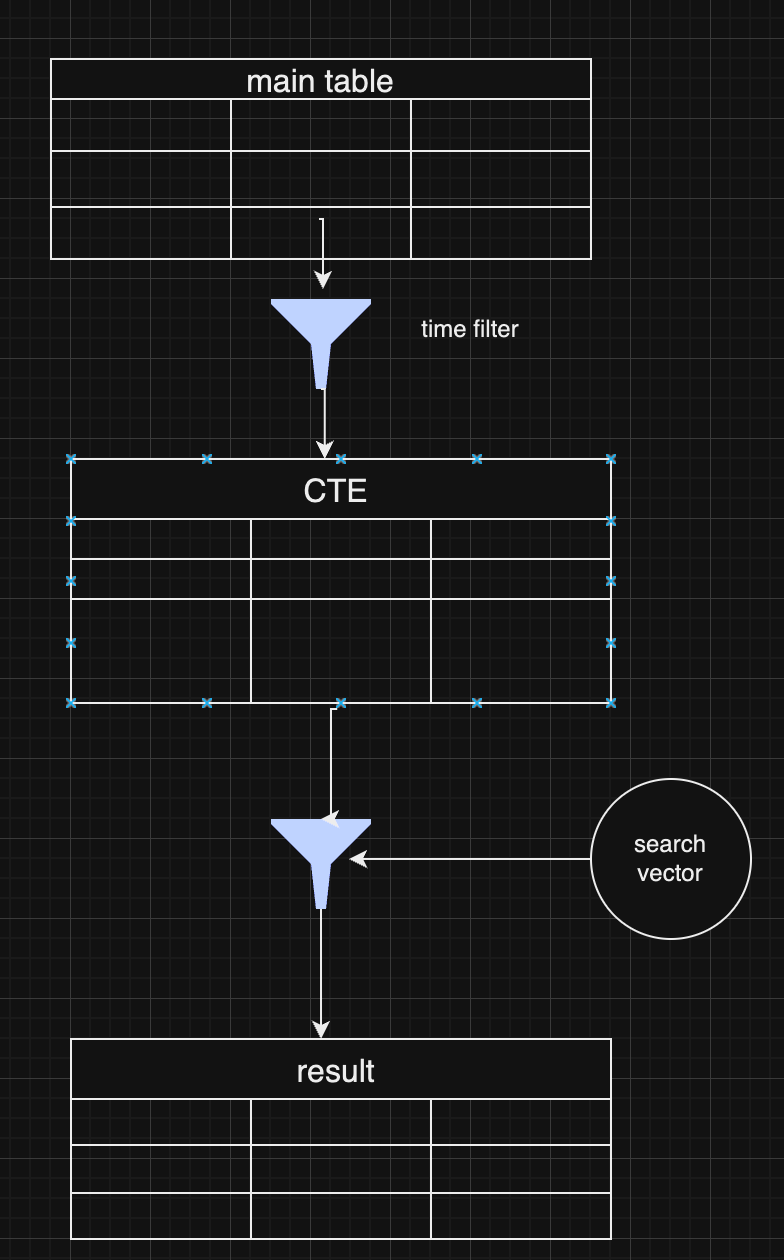
As a pro of this approach, you have full control over the data and get all results without omitting some typical values for extensive index searches.
Choosing Between Pre and Post-Filtering
Both pre-filtering and post-filtering have their advantages and disadvantages. Post-filtering is more accessible to implement, especially when vector similarity is the primary search factor, but it can lead to incomplete results. Pre-filtering, on the other hand, can yield more accurate results but requires more complex data handling and optimization.
In practice, many systems combine both strategies, depending on the query. For example, they might start with a broad pre-filtering based on metadata (like date ranges) and then apply a more targeted vector search with post-filtering to refine the results further.
Conclusion
Vector search with metadata filtering offers a powerful approach for handling large-scale data retrieval in LLMs and RAG pipelines. Whether you choose pre-filtering or post-filtering—or a combination of both—depends on your application's specific requirements. As vector databases continue to evolve, future innovations that combine these two approaches more seamlessly will help improve data relevance and retrieval efficiency further.
-
 @ 6ad3e2a3:c90b7740
2024-09-11 15:16:53
@ 6ad3e2a3:c90b7740
2024-09-11 15:16:53I’ve occasionally been called cynical because some of the sentiments I express strike people as negative. But cynical, to me, does not strictly mean negative. It means something more along the lines of “faithless” — as in lacking the basic faith humans thrive when believing what they take to be true, rather than expedient, and doing what they think is right rather than narrowly advantageous.
In other words, my primary negative sentiment — that the cynical utilitarian ethos among our educated classes has caused and is likely to cause catastrophic outcomes — stems from a sort of disappointed idealism, not cynicism.
On human nature itself I am anything but cynical. I am convinced the strongest, long-term incentives are always to believe what is true, no matter the cost, and to do what is right. And by “right,” I don’t mean do-gooding bullshit, but things like taking care of one’s health, immediate family and personal responsibilities while pursuing the things one finds most compelling and important.
That aside, I want to touch on two real-world examples of what I take to be actual cynicism. The first is the tendency to invoke principles only when they suit one’s agenda or desired outcome, but not to apply them when they do not. This kind of hypocrisy implies principles are just tools you invoke to gain emotional support for your side and that anyone actually applying them evenhandedly is a naive simpleton who doesn’t know how the game is played.
Twitter threads don’t show up on substack anymore, but I’d encourage you to read this one with respect to objecting to election outcomes. I could have used many others, but this one (probably not even most egregious) illustrates how empty words like “democracy” or “election integrity” are when thrown around by devoted partisans. They don’t actually believe in democracy, only in using the word to evoke the desired emotional response. People who wanted to coerce people to take a Pfizer shot don’t believe in “bodily autonomy.” It’s similarly just a phrase that’s invoked to achieve an end.
The other flavor of cynicism I’ve noticed is less about hypocrisy and more about nihilism:
 I’d encourage people to read the entire thread, but if you’re not on Twitter, it’s essentially about whether money (and apparently anything else) has essential qualities, or whether it is whatever peoples’ narratives tell them it is.
I’d encourage people to read the entire thread, but if you’re not on Twitter, it’s essentially about whether money (and apparently anything else) has essential qualities, or whether it is whatever peoples’ narratives tell them it is.In other words, is money whatever your grocer takes for the groceries, or do particular forms of money have qualities wherein they are more likely to be accepted over the long haul? The argument is yes, gold, for example had qualities that made it a better money (scarcity, durability, e.g.) than say seashells which are reasonably durable but not scarce. You could sell the story of seashells as a money (and some societies not close to the sea used them as such), but ultimately such a society would be vulnerable to massive inflation should one of its inhabitants ever stroll along a shore.
The thread morphed into whether everything is just narrative, or there is an underlying reality to which a narrative must correspond in order for it to be useful and true.
The notion that anything could be money if attached to the right story, or any music is good if it’s marketed properly is deeply cynical. I am not arguing people can’t be convinced to buy bad records — clearly they can — but that no matter how much you market it, it will not stand the test of time unless it is in fact good.
In order to sell something that does not add value, meaning or utility to someone’s life, something you suspect they are likely to regret buying in short order, it’s awfully useful to convince yourself that nothing has inherent meaning or value, that “storytelling is all that matters.”
I am not against marketing per se, and effective storytelling might in fact point someone in the right direction — a good story can help someone discover a truth. But that storytelling is everything, and by implication the extent to which a story has correlates in reality nothing, is the ethos of scammers, the refuge of nihilists who left someone else holding the bag and prefer not to think about it.
-
 @ c4f5e7a7:8856cac7
2024-09-11 13:59:37
@ c4f5e7a7:8856cac7
2024-09-11 13:59:37TL;DR
Best viewed on either YakiHonne or Highlighter.
This article explores the links between public, community-driven data sources (such as OpenStreetMap) and private, cryptographically-owned data found on networks such as Nostr.
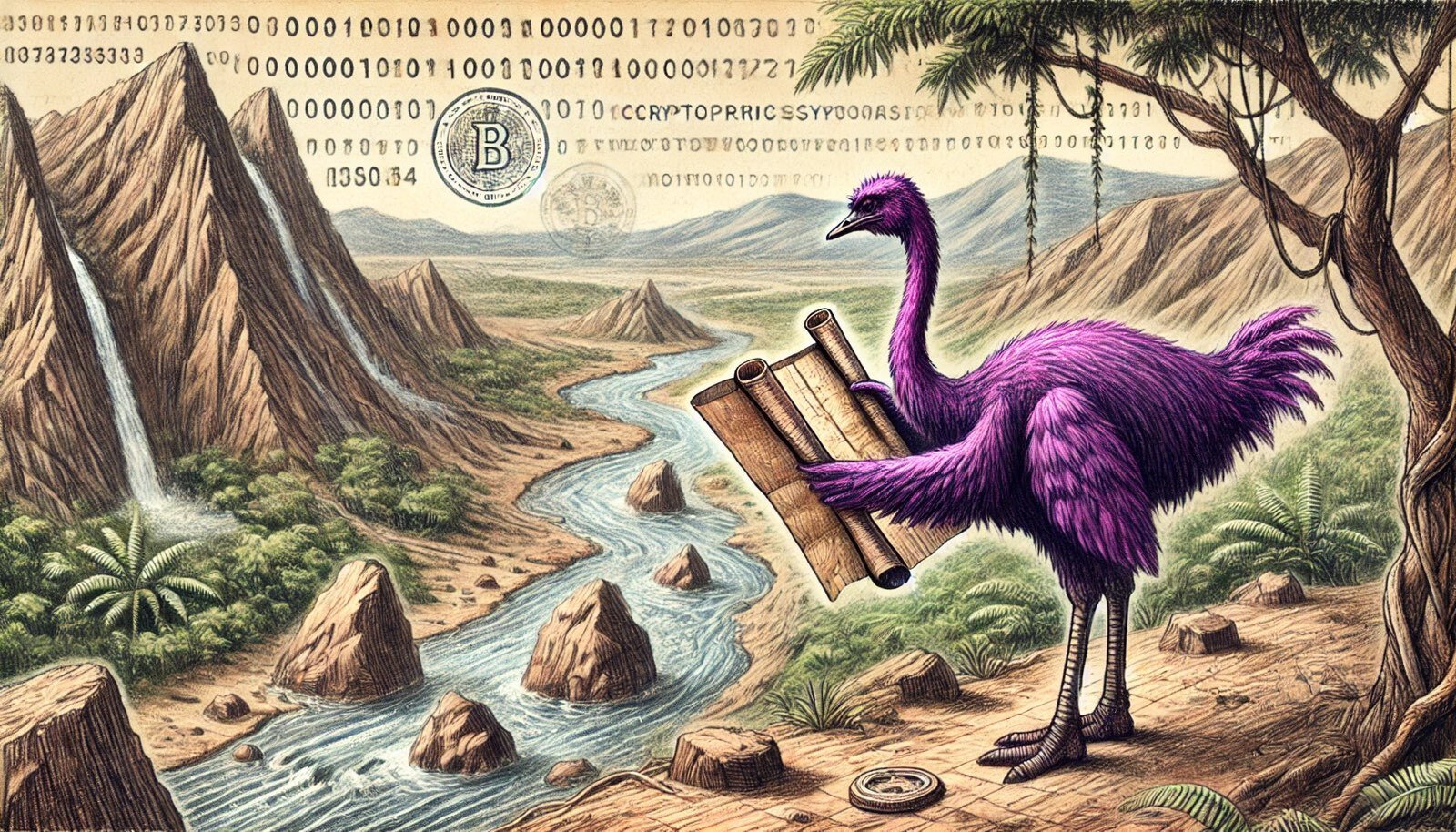
The following concepts are explored:
- Attestations: Users signalling to their social graph that they believe something to be true by publishing Attestations. These social proofs act as a decentralised verification system that leverages your web-of-trust.
- Proof of Place: An oracle-based system where physical letters are sent to real-world locations, confirming the corresponding digital ownership via cryptographic proofs. This binds physical locations in meatspace with their digital representations in the Nostrverse.
- Check-ins: Foursquare-style check-ins that can be verified using attestations from place owners, ensuring authenticity. This approach uses web-of-trust to validate check-ins and location ownership over time.
The goal is to leverage cryptographic ownership where necessary while preserving the open, collaborative nature of public data systems.
Open Data in a public commons has a place and should not be thrown out with the Web 2.0 bathwater.
Cognitive Dissonance
Ever since discovering Nostr in August of 2022 I've been grappling with how BTC Map - a project that helps bitcoiners find places to spend sats - should most appropriately use this new protocol.
I am assuming, dear reader, that you are somewhat familiar with Nostr - a relatively new protocol for decentralised identity and communication. If you don’t know your nsec from your npub, please take some time to read these excellent posts: Nostr is Identity for the Internet and The Power of Nostr by @max and @lyn, respectively. Nostr is so much more than a short-form social media replacement.
The social features (check-ins, reviews, etc.) that Nostr unlocks for BTC Map are clear and exciting - all your silos are indeed broken - however, something fundamental has been bothering me for a while and I think it comes down to data ownership.
For those unfamiliar, BTC Map uses OpenStreetMap (OSM) as its main geographic database. OSM is centred on the concept of a commons of objectively verifiable data that is maintained by a global community of volunteer editors; a Wikipedia for maps. There is no data ownership; the data is free (as in freedom) and anyone can edit anything. It is the data equivalent of FOSS (Free and Open Source Software) - FOSD if you will, but more commonly referred to as Open Data.
In contrast, Notes and Other Stuff on Nostr (Places in this cartographic context) are explicitly owned by the controller of the private key. These notes are free to propagate, but they are owned.
How do we reconcile the decentralised nature of Nostr, where data is cryptographically owned by individuals, with the community-managed data commons of OpenStreetMap, where no one owns the data?
Self-sovereign Identity
Before I address this coexistence question, I want to talk a little about identity as it pertains to ownership. If something is to be owned, it has to be owned by someone or something - an identity.
All identities that are not self-sovereign are, by definition, leased to you by a 3rd party. You rent your Facebook identity from Meta in exchange for your data. You rent your web domain from your DNS provider in exchange for your money.
Taken to the extreme, you rent your passport from your Government in exchange for your compliance. You are you at the pleasure of others. Where Bitcoin separates money from the state; Nostr separates identity from the state.
Or, as @nvk said recently: "Don't build your house on someone else's land.".

While we’ve had the tools for self-sovereign digital identity for decades (think PGP keys or WebAuthN), we haven't had the necessary social use cases nor the corresponding social graph to elevate these identities to the mainstream. Nostr fixes this.
Nostr is PGP for the masses and will take cryptographic identities mainstream.
Full NOSTARD?
Returning to the coexistence question: the data on OpenStreetMap isn’t directly owned by anyone, even though the physical entities the data represents might be privately owned. OSM is a data commons.
We can objectively agree on the location of a tree or a fire hydrant without needing permission to observe and record it. Sure, you could place a tree ‘on Nostr’, but why should you? Just because something can be ‘on Nostr’ doesn’t mean it should be.

There might be a dystopian future where we can't agree on what a tree is nor where it's located, but I hope we never get there. It's at this point we'll need a Wikifreedia variant of OpenStreetMap.
While integrating Nostr identities into OpenStreetMap would be valuable, the current OSM infrastructure, tools, and community already provide substantial benefits in managing this data commons without needing to go NOSTR-native - there's no need to go Full NOSTARD. H/T to @princeySOV for the original meme.

So, how do we appropriately blend cryptographically owned data with the commons?
If a location is owned in meatspace and it's useful to signal that ownership, it should also be owned in cyberspace. Our efforts should therefore focus on entities like businesses, while allowing the commons to manage public data for as long as it can successfully mitigate the tragedy of the commons.
The remainder of this article explores how we can:
- Verify ownership of a physical place in the real world;
- Link that ownership to the corresponding digital place in cyberspace.
As a side note, I don't see private key custodianship - or, even worse, permissioned use of Places signed by another identity's key - as any more viable than the rented identities of Web 2.0.
And as we all know, the Second Law of Infodynamics (no citation!) states that:
"The total amount of sensitive information leaked or exposed will always increase over time."
This especially holds true if that data is centralised.
Not your keys, not your notes. Not your keys, not your identity.
Places and Web-of-Trust
@Arkinox has been leading the charge on the Places NIP, introducing Nostr notes (kind 37515) that represent physical locations. The draft is well-crafted, with bonus points for linking back to OSM (and other location repositories) via NIP-73 - External Content IDs (championed by @oscar of @fountain).
However, as Nostr is permissionless, authenticity poses a challenge. Just because someone claims to own a physical location on the Internet doesn’t necessarily mean they have ownership or control of that location in the real world.
Ultimately, this problem can only be solved in a decentralised way by using Web-of-Trust - using your social graph and the perspectives of trusted peers to inform your own perspective. In the context of Places, this requires your network to form a view on which digital identity (public key / npub) is truly the owner of a physical place like your local coffee shop.
This requires users to:
- Verify the owner of a Place in cyberspace is the owner of a place in meatspace.
- Signal this verification to their social graph.
Let's look at the latter idea first with the concept of Attestations ...
Attestations
A way to signal to your social graph that you believe something to be true (or false for that matter) would be by publishing an Attestation note. An Attestation note would signify to your social graph that you think something is either true or false.
Imagine you're a regular at a local coffee shop. You publish an Attestation that says the shop is real and the owner behind the Nostr public key is who they claim to be. Your friends trust you, so they start trusting the shop's digital identity too.
However, attestations applied to Places are just a single use case. The attestation concept could be more widely applied across Nostr in a variety of ways (key rotation, identity linking, etc).
Here is a recent example from @lyn that would carry more signal if it were an Attestation:
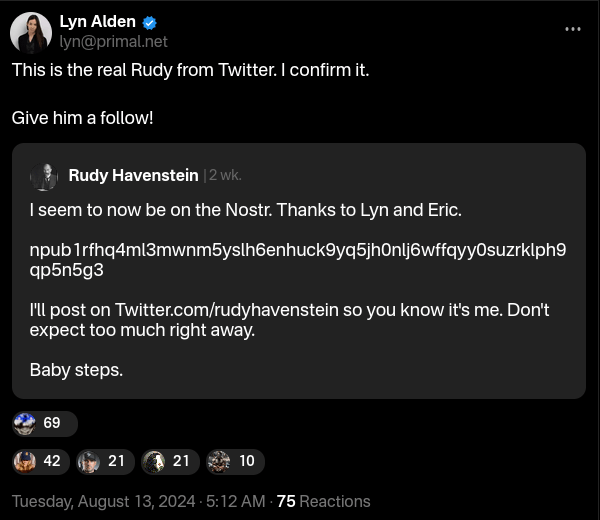
Parallels can be drawn between Attestations and transaction confirmations on the Bitcoin timechain; however, their importance to you would be weighted by clients and/or Data Vending Machines in accordance with:
- Your social graph;
- The type or subject of the content being attested and by whom;
- Your personal preferences.
They could also have a validity duration to be temporally bound, which would be particularly useful in the case of Places.
NIP-25 (Reactions) do allow for users to up/downvote notes with optional content (e.g., emojis) and could work for Attestations, but I think we need something less ambiguous and more definitive. ‘This is true’ resonates more strongly than ‘I like this.’.
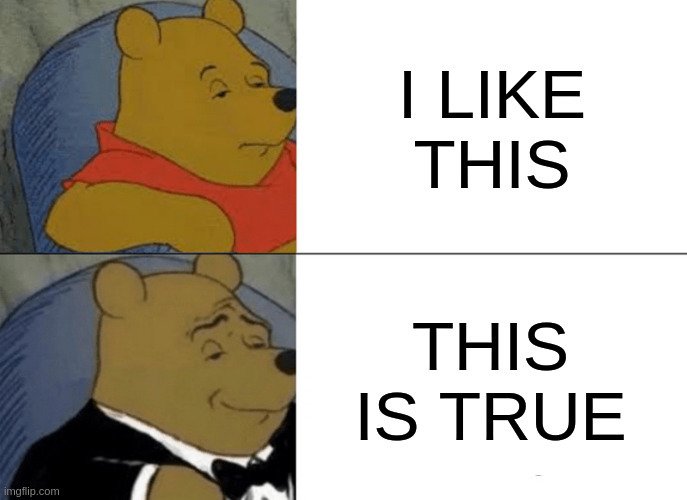
There are similar concepts in the Web 3 / Web 5 world such as Verified Credentials by tdb; however, Nostr is the Web 3 now and so wen Attestation NIP?
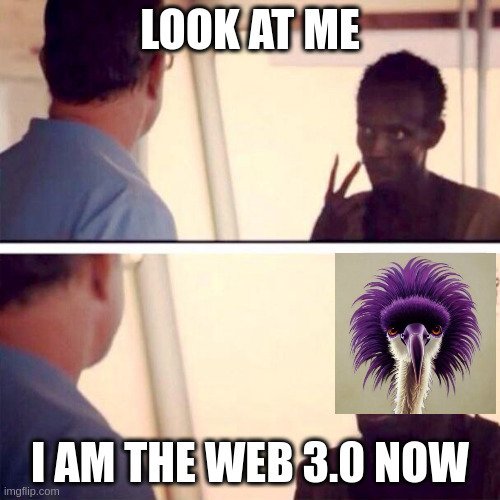
That said, I have seen @utxo has been exploring ‘smart contracts’ on nostr and Attestations may just be a relatively ‘dumb’ subset of the wider concept Nostr-native scripting combined with web-of-trust.
Proof of Place
Attestations handle the signalling of your truth, but what about the initial verification itself?
We already coved how this ultimately has to be derived from your social graph, but what if there was a way to help bootstrap this web-of-trust through the use of oracles? For those unfamiliar with oracles in the digital realm, they are simply trusted purveyors of truth.
Introducing Proof of Place, an out–of-band process where an oracle, such as BTC Map, would mail - yes mail a physical letter - a shared secret to the physical location being claimed in cyberspace. This shared secret would be locked to the public key (npub) making the claim, which, if unlocked, would prove that the associated private key (nsec) has physical access to the location in meatspace.
Proof of Place is really nothing more than a weighted Attestation. In a web-of-trust Nostrverse, an oracle is simply a npub (say BTC Map) that you weigh heavily for its opinion on a given topic (say Places).
In the Bitcoin world, Proof of Work anchors digital scarcity in cyberspace to physical scarcity (energy and time) in meatspace and as @Gigi says in PoW is Essential:
"A failure to understand Proof of Work, is a failure to understand Bitcoin."
In the Nostrverse, Proof of Place helps bridge the digital and physical worlds.
@Gigi also observes in Memes vs The World that:
"In Bitcoin, the map is the territory. We can infer everything we care about by looking at the map alone."
This isn’t true for Nostr.
In the Nostrverse, the map IS NOT the territory. However, Proof of Place enables us to send cryptographic drones down into the physical territory to help us interpret our digital maps. 🤯
Check-ins
Although not a draft NIP yet, @Arkinox has also been exploring the familiar concept of Foursquare-style Check-ins on Nostr (with kind 13811 notes).
For the uninitiated, Check-ins are simply notes that signal the publisher is at a given location. These locations could be Places (in the Nostr sense) or any other given digital representation of a location for that matter (such as OSM elements) if NIP-73 - External Content IDs are used.
Of course, not everyone will be a Check-in enjoyooor as the concept will not sit well with some people’s threat models and OpSec practices.
Bringing Check-ins to Nostr is possible (as @sebastix capably shows here), but they suffer the same authenticity issues as Places. Just because I say I'm at a given location doesn't mean that I am.
Back in the Web 2.0 days, Foursquare mitigated this by relying on the GPS position of the phone running their app, but this is of course spoofable.
How should we approach Check-in verifiability in the Nostrverse? Well, just like with Places, we can use Attestations and WoT. In the context of Check-ins, an Attestation from the identity (npub) of the Place being checked-in to would be a particularly strong signal. An NFC device could be placed in a coffee shop and attest to check-ins without requiring the owner to manually intervene - I’m sure @blackcoffee and @Ben Arc could hack something together over a weekend!
Check-ins could also be used as a signal for bonafide Place ownership over time.
Summary: Trust Your Bros
So, to recap, we have:
Places: Digital representations of physical locations on Nostr.
Check-ins: Users signalling their presence at a location.
Attestations: Verifiable social proofs used to confirm ownership or the truth of a claim.
You can visualise how these three concepts combine in the diagram below:
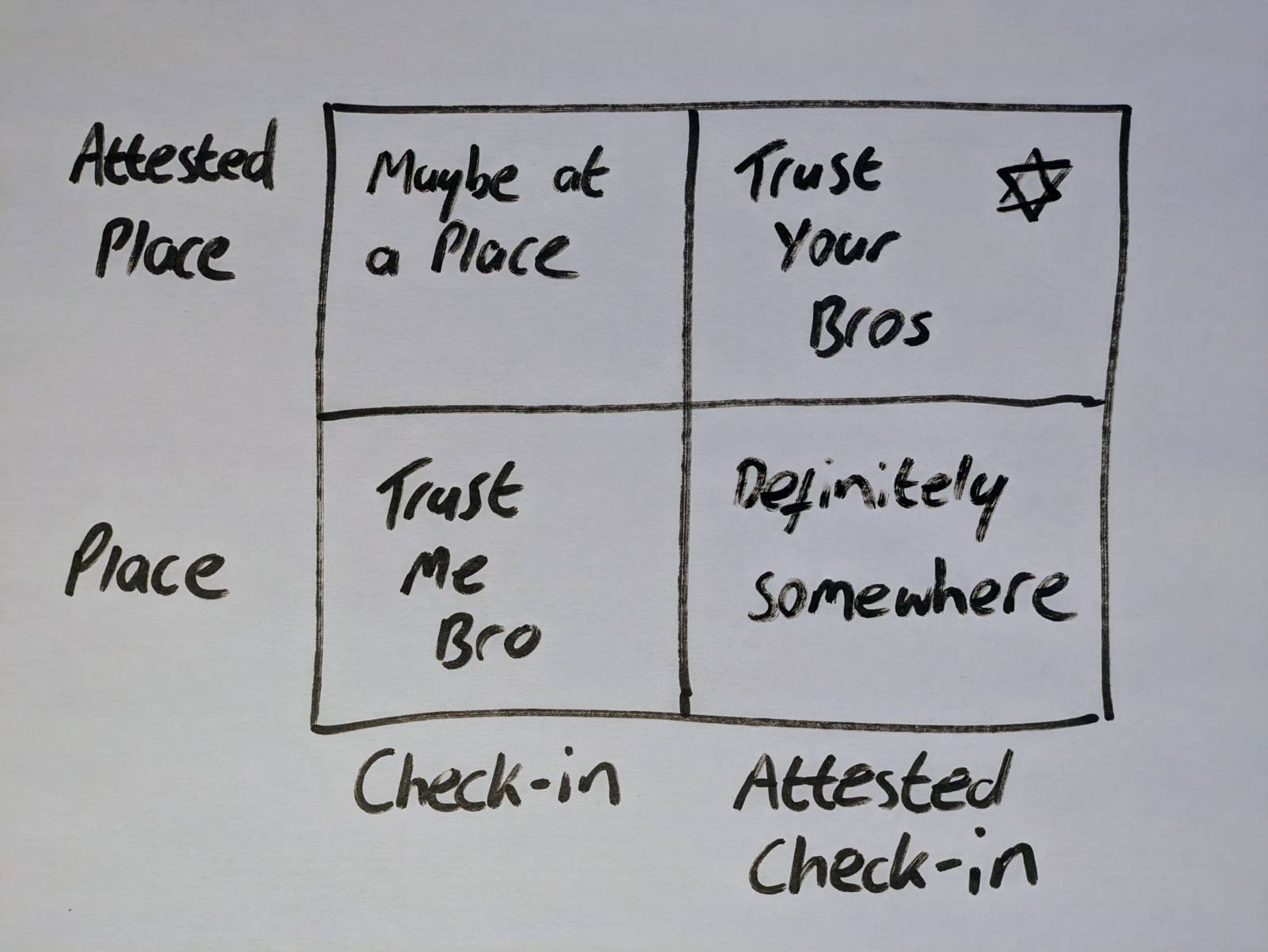
And, as always, top right trumps bottom left! We have:
Level 0 - Trust Me Bro: Anyone can check-in anywhere. The Place might not exist or might be impersonating the real place in meatspace. The person behind the npub may not have even been there at all.
Level 1 - Definitely Maybe Somewhere: This category covers the middleground of ‘Maybe at a Place’ and ‘Definitely Somewhere’. In these examples, you are either self-certifying that you have checked-in at an Attested Place or you are having others attest that you have checked-in at a Place that might not even exist IRL.
Level 2 - Trust Your Bros: An Attested Check-in at an Attested Place. Your individual level of trust would be a function of the number of Attestations and how you weigh them within your own social graph.
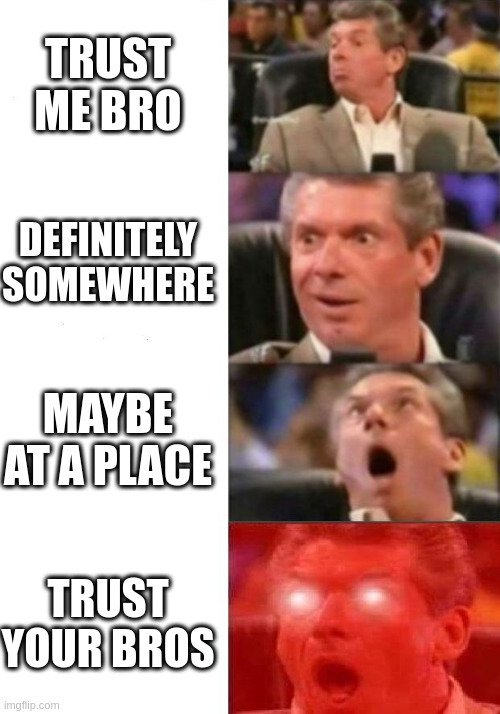
Perhaps the gold standard (or should that be the Bitcoin standard?) would be a Check-in attested by the owner of the Place, which in itself was attested by BTC Map?
Or perhaps not. Ultimately, it’s the users responsibility to determine what they trust by forming their own perspective within the Nostrverse powered by web-of-trust algorithms they control. ‘Trust Me Bro’ or ‘Trust Your Bros’ - you decide.
As we navigate the frontier of cryptographic ownership and decentralised data commons, it’s up to us to find the balance between preserving the Open Data commons and embracing self-sovereign digital identities.
Thanks
With thanks to Arkinox, Avi, Ben Gunn, Kieran, Blackcoffee, Sebastix, Tomek, Calle, Short Fiat, Ben Weeks and Bitcoms for helping shape my thoughts and refine content, whether you know it or not!
-
 @ 58edc6ae:e070cfa5
2025-01-01 20:02:36
@ 58edc6ae:e070cfa5
2025-01-01 20:02:36MiCA Regulation and the new AML Regulation have recently come into force, raising several concerns about how the EU is approaching non-custodial payment solutions. These include:
- Conflicts with privacy standards and human rights norms
The rules permit excessive collection and sharing of information on private transactions without adequate safeguards, conflicting with EU privacy standards and international human rights principles, as emphasised in rulings by the Court of Justice of the European Union.
- Blocking innovation
The regulations conflict with privacy-focused technologies, potentially stifling new ideas and platforms in the EU. This could weaken the EU’s position as a leader in digital finance.
- Hurting competition
Compliance with these regulations increases operating costs for EU-based CASPs, placing them at a disadvantage compared to non-EU companies operating under less restrictive rules. This may push users toward unregulated services outside Europe, undermining the regulations' purpose.
- Excluding vulnerable groups
The regulations could make it harder for people in poorer or politically unstable countries to access secure and private financial tools, leaving them without viable financial options.
These issues are explored in detail in the report prepared by nostr:npub15ka0zlfeys4vphnl6dk4x63e7sra0mp3wmrp4ml7q993z8km0n6spjxua8 and me for Open Dialogue Foundation upon the request of nostr:npub13ajk3hhvqys2ev4y68jwxywgs8fsdsuk4y5gkzs874jdyrccvf5qak2yd9 .
It is crucial to reopen the discussion on these issues and urge European lawmakers to reconsider their approach. The EU needs a regulatory framework that strikes a balance between security and privacy, fosters innovation, and rebuilds Europe’s weakened position in the global digital economy.
MiCA #AML
-
 @ 468f729d:5ab4fd5e
2025-01-01 19:00:36
@ 468f729d:5ab4fd5e
2025-01-01 19:00:36 -
 @ a95c6243:d345522c
2025-01-01 17:39:51
@ a95c6243:d345522c
2025-01-01 17:39:51Heute möchte ich ein Gedicht mit euch teilen. Es handelt sich um eine Ballade des österreichischen Lyrikers Johann Gabriel Seidl aus dem 19. Jahrhundert. Mir sind diese Worte fest in Erinnerung, da meine Mutter sie perfekt rezitieren konnte, auch als die Kräfte schon langsam schwanden.
Dem originalen Titel «Die Uhr» habe ich für mich immer das Wort «innere» hinzugefügt. Denn der Zeitmesser – hier vermutliche eine Taschenuhr – symbolisiert zwar in dem Kontext das damalige Zeitempfinden und die Umbrüche durch die industrielle Revolution, sozusagen den Zeitgeist und das moderne Leben. Aber der Autor setzt sich philosophisch mit der Zeit auseinander und gibt seinem Werk auch eine klar spirituelle Dimension.
Das Ticken der Uhr und die Momente des Glücks und der Trauer stehen sinnbildlich für das unaufhaltsame Fortschreiten und die Vergänglichkeit des Lebens. Insofern könnte man bei der Uhr auch an eine Sonnenuhr denken. Der Rhythmus der Ereignisse passt uns vielleicht nicht immer in den Kram.
Was den Takt pocht, ist durchaus auch das Herz, unser «inneres Uhrwerk». Wenn dieses Meisterwerk einmal stillsteht, ist es unweigerlich um uns geschehen. Hoffentlich können wir dann dankbar sagen: «Ich habe mein Bestes gegeben.»
Ich trage, wo ich gehe, stets eine Uhr bei mir; \ Wieviel es geschlagen habe, genau seh ich an ihr. \ Es ist ein großer Meister, der künstlich ihr Werk gefügt, \ Wenngleich ihr Gang nicht immer dem törichten Wunsche genügt.
Ich wollte, sie wäre rascher gegangen an manchem Tag; \ Ich wollte, sie hätte manchmal verzögert den raschen Schlag. \ In meinen Leiden und Freuden, in Sturm und in der Ruh, \ Was immer geschah im Leben, sie pochte den Takt dazu.
Sie schlug am Sarge des Vaters, sie schlug an des Freundes Bahr, \ Sie schlug am Morgen der Liebe, sie schlug am Traualtar. \ Sie schlug an der Wiege des Kindes, sie schlägt, will's Gott, noch oft, \ Wenn bessere Tage kommen, wie meine Seele es hofft.
Und ward sie auch einmal träger, und drohte zu stocken ihr Lauf, \ So zog der Meister immer großmütig sie wieder auf. \ Doch stände sie einmal stille, dann wär's um sie geschehn, \ Kein andrer, als der sie fügte, bringt die Zerstörte zum Gehn.
Dann müßt ich zum Meister wandern, der wohnt am Ende wohl weit, \ Wohl draußen, jenseits der Erde, wohl dort in der Ewigkeit! \ Dann gäb ich sie ihm zurücke mit dankbar kindlichem Flehn: \ Sieh, Herr, ich hab nichts verdorben, sie blieb von selber stehn.
Johann Gabriel Seidl (1804-1875)
-
 @ ee11a5df:b76c4e49
2024-09-11 08:16:37
@ ee11a5df:b76c4e49
2024-09-11 08:16:37Bye-Bye Reply Guy
There is a camp of nostr developers that believe spam filtering needs to be done by relays. Or at the very least by DVMs. I concur. In this way, once you configure what you want to see, it applies to all nostr clients.
But we are not there yet.
In the mean time we have ReplyGuy, and gossip needed some changes to deal with it.
Strategies in Short
- WEB OF TRUST: Only accept events from people you follow, or people they follow - this avoids new people entirely until somebody else that you follow friends them first, which is too restrictive for some people.
- TRUSTED RELAYS: Allow every post from relays that you trust to do good spam filtering.
- REJECT FRESH PUBKEYS: Only accept events from people you have seen before - this allows you to find new people, but you will miss their very first post (their second post must count as someone you have seen before, even if you discarded the first post)
- PATTERN MATCHING: Scan for known spam phrases and words and block those events, either on content or metadata or both or more.
- TIE-IN TO EXTERNAL SYSTEMS: Require a valid NIP-05, or other nostr event binding their identity to some external identity
- PROOF OF WORK: Require a minimum proof-of-work
All of these strategies are useful, but they have to be combined properly.
filter.rhai
Gossip loads a file called "filter.rhai" in your gossip directory if it exists. It must be a Rhai language script that meets certain requirements (see the example in the gossip source code directory). Then it applies it to filter spam.
This spam filtering code is being updated currently. It is not even on unstable yet, but it will be there probably tomorrow sometime. Then to master. Eventually to a release.
Here is an example using all of the techniques listed above:
```rhai // This is a sample spam filtering script for the gossip nostr // client. The language is called Rhai, details are at: // https://rhai.rs/book/ // // For gossip to find your spam filtering script, put it in // your gossip profile directory. See // https://docs.rs/dirs/latest/dirs/fn.data_dir.html // to find the base directory. A subdirectory "gossip" is your // gossip data directory which for most people is their profile // directory too. (Note: if you use a GOSSIP_PROFILE, you'll // need to put it one directory deeper into that profile // directory). // // This filter is used to filter out and refuse to process // incoming events as they flow in from relays, and also to // filter which events get/ displayed in certain circumstances. // It is only run on feed-displayable event kinds, and only by // authors you are not following. In case of error, nothing is // filtered. // // You must define a function called 'filter' which returns one // of these constant values: // DENY (the event is filtered out) // ALLOW (the event is allowed through) // MUTE (the event is filtered out, and the author is // automatically muted) // // Your script will be provided the following global variables: // 'caller' - a string that is one of "Process", // "Thread", "Inbox" or "Global" indicating // which part of the code is running your // script // 'content' - the event content as a string // 'id' - the event ID, as a hex string // 'kind' - the event kind as an integer // 'muted' - if the author is in your mute list // 'name' - if we have it, the name of the author // (or your petname), else an empty string // 'nip05valid' - whether nip05 is valid for the author, // as a boolean // 'pow' - the Proof of Work on the event // 'pubkey' - the event author public key, as a hex // string // 'seconds_known' - the number of seconds that the author // of the event has been known to gossip // 'spamsafe' - true only if the event came in from a // relay marked as SpamSafe during Process // (even if the global setting for SpamSafe // is off)
fn filter() {
// Show spam on global // (global events are ephemeral; these won't grow the // database) if caller=="Global" { return ALLOW; } // Block ReplyGuy if name.contains("ReplyGuy") || name.contains("ReplyGal") { return DENY; } // Block known DM spam // (giftwraps are unwrapped before the content is passed to // this script) if content.to_lower().contains( "Mr. Gift and Mrs. Wrap under the tree, KISSING!" ) { return DENY; } // Reject events from new pubkeys, unless they have a high // PoW or we somehow already have a nip05valid for them // // If this turns out to be a legit person, we will start // hearing their events 2 seconds from now, so we will // only miss their very first event. if seconds_known <= 2 && pow < 25 && !nip05valid { return DENY; } // Mute offensive people if content.to_lower().contains(" kike") || content.to_lower().contains("kike ") || content.to_lower().contains(" nigger") || content.to_lower().contains("nigger ") { return MUTE; } // Reject events from muted people // // Gossip already does this internally, and since we are // not Process, this is rather redundant. But this works // as an example. if muted { return DENY; } // Accept if the PoW is large enough if pow >= 25 { return ALLOW; } // Accept if their NIP-05 is valid if nip05valid { return ALLOW; } // Accept if the event came through a spamsafe relay if spamsafe { return ALLOW; } // Reject the rest DENY} ```
-
 @ 8a03ae29:10b1b6ac
2025-01-01 16:32:00
@ 8a03ae29:10b1b6ac
2025-01-01 16:32:00What an crazy, busy ride it's been lately! I've been crisscrossing the nation for work and embarking on the thrilling journey of relocating to a brand new living space. A pitstop on the work journey was San Francisco, once a city of love, which now feels like a city of contradictions. It's fascinating how this place, once so intertwined with the financial world, could stumble so spectacularly. I’ll save my deeper reflections for a separate post. Amidst all these observations and experiences, I’m grateful for the opportunity to connect with all of you and engage in meaningful conversations.
Let's spend a few minutes this morning catching up and talking about what it looks like to be "bankless." It's interesting; usually, this would mean talking about the less fortunate individuals who perhaps don't have a bank or access to all the lame, boring financial services we all take for granted. Today, I'd like to share my thoughts on the possibility of a future where, instead, everyone is bankless. Not because they don't have access to financial services, but because they prefer to take custody of their own assets. Tools have been built to enable not just custody but also (damn near) risk-free lending, capital raising, instantaneous settlement of funds around the globe, micro-transactions, etc. With these capabilities given to every individual who has a smartphone, hopefully, you can see how becoming bankless, something that used to cut people out, just might be everyone's way in.
The concept that I refer to at the end of my last article, how our money is still stuck in the age of the telegraph and has been the slowest part of our lives to enter the age of the internet, is a feature, not a bug. The legacy financial system is a centralized tool of wealth extraction and control. The ways this magical wand is wielded on individuals, institutions, and governments all the same are pretty clear. On behalf of individuals, millions of bankless people in Sub-Saharan Africa, Southeast Asia, and parts of Latin America just lack access to "banking" services because it's not "profitable" enough or even lack the ability to get proper identification, effectively banning their ability to take part in wealth creation. Others like Kanye West or super-rich Russians are cut off from services or have property stolen due to losing political favor. Companies and governments can have assets frozen or even seized for similar reasons or under the guise of violations of our superior morals and are hit with "sanctions." Some might encapsulate this in a word: discriminatory. Something that for sure, without a doubt, does not exist "at the end of history," right? The regulators, who have the audacity to call themselves "Watch Dogs" as if they have any teeth, always allow the robbers to ransack the place before even barking. I guess that's what happens if the burglars break the window with a big juicy steak? If this has happened once or twice, any sane person would suggest ADT.
The legacy financial system is notoriously known to be slow, expensive, ridden with fraud, and frankly dangerous, enriching bad actors and terrorists around the globe. Considering it runs on mainframe technology and requires vast amounts of human input and manual review, it makes sense as to why we all suffer immensely from the flaws inherent in humans: bias. The greatest updates to the most simple form of financial activity have been new cool apps that let you send your friend money, in what seems like seconds, but it really still takes the same old amount of time to settle as any other 'digital' transaction using the legacy financial payment rails. The same censorship applies as well; PayPal is notorious for cutting people off from their funds and inflicting a "guilty until you prove yourself innocent" approach. They automatically enforce this censorship in code for "consumer protectionist measures" while Wells Fargo is fined $1.7B for active money laundering, yet no accounts are ever frozen, and it's always "innocent until and even after settlement." Back to the point, this act of "settling" a transaction is the process where the banks "verify" that a customer has the money in their bank account to pay for dinner. This is what consumes everyone's time. One would think there must be a way to automate this similar to the automation of their customer service (dunk). You ask the legacy system, the only thing that has near-instantaneous settlement, is cash, but good luck getting that to your friend who moved out of state on his birthday. The reason we rely on this flawed crutch is that never before could you prevent or prove ownership of any digital good or object without a slow, centralized actor performing that verification "offline." Today, we have a blockchain for that, and all verification will be done "online," or the industry term, "on-chain."
In the age of the internet, arguably the best way to get your friend that birthday money would be Bitcoin, the first "real-world" application of decentralized finance. Decentralized finance, or DeFi, refers to the decentralized, futuristic, Lego-like building blocks used to construct a new, more inclusive (non-discriminatory) financial system with better financial governance. This system aims to align the incentives of every stakeholder of any type of shared entity. New terms have emerged from the future of the industry: CeFi, DeFi, and DAOs (Decentralized Autonomous Organizations - more on these in the weeks to come). CeFi or some would say TradFi describes the centralized, traditional, legacy financial system that everyone has come to know and hate. Some could argue that any traditional bank with branches throughout a region practices "decentralized" finance. The main difference lies in the governance models of how funds and/or organizations are managed. This brings us back to Bitcoin.
Bitcoin is a peer-to-peer digital cash system with near-instantaneous settlement (around 10 minutes). It means that you can send this new coin to your friend anywhere in the world with an internet connection, without the need for any slow, cumbersome offline verification process.
In a previous article, I mentioned that "digital gold... is uniquely suited to perform in that type of environment." Cryptographically-backed currencies like Bitcoin are the "digital gold" designed specifically for the internet environment. Instead of a distributed centralized actor having full control and being the single point of failure, decentralized financial services are governed by open-source code that anyone can contribute to, review, and run, executed by a blockchain. In fact, the majority of the internet's core services are open-source projects. The internet was built in a way that telecommunications had no single point of failure, and there is no centralized actor with full control of the internet. Can anyone describe a more fitting unit of exchange for that type of environment? One feature of the new magic internet money is that it's completely programmable. You can set monetary policies in open-source code (Bitcoin's current and total supply and inflation rate are publicly available, unlike the current and total supply of USD). This way, everyone holding that money has a full understanding of what the future holds and can plan their life accordingly, but that's only if we, as a people, truly value stability.
Do we all get a vote in how the policy is dictated? That's another feature enabled when using the new magic internet money. The only way individuals can vote for change in the current financial system is by converting the local currency into something else. This has been observed in hyperinflationary regimes like Venezuela, where individuals sell their local currency for foreign currencies, including Bitcoin. With magic internet money, governance models can be implemented from a bottom-up approach. For example, MakerDAO is a Decentralized Autonomous Organization (DAO) that governs the stablecoin DAI, which aims to stay relatively worth $1 USD. MKR token holders participate in the governance process by voting on proposals that can affect the monetary policy and risk management of the MakerDAO system. The voting power of MKR holders is proportional to the number of tokens they hold. There are other voting methods, such as quadratic voting, that aim to achieve a more equitable distribution of preferences and avoid the dominance of simple majority rule. Imagine that for every dollar you hold, you could actively participate in FOMC meetings with the Federal Reserve and vote for the best policy to achieve the fiscal goals of the nation-state (government by the people, for the people), instead of relying on the decisions of 12 unelected individuals in suits.
Another term that has begun to percolate throughout the industry is 'bankless,' which refers to leaving the traditional financial system and instead opting for your finances to be represented in new magic internet money and managed by applications built to automate the functions of legacy services typically offered by a bank. Perhaps "bankless" doesn't quite fit the characterization of what I just described. Maybe the better term is actually "bankmore." The reasons are as follows: 1) There would be more people involved in the banking process. 2) There would be more services offered to individuals. 3) There would be more money in deposits available for loans. Since code can't discriminate (anyone with internet access can create a public and private key needed to verify their accounts on the blockchain) → more people can participate → resulting in reduced fees + expanded reach of services due to the global nature of the internet → leads to greater amounts of deposits → more money for credit creation/expansion and loans → more people lifted out of poverty.
Now, let's shift our focus to how this virtuous cycle can be implemented and what tools we can pay attention to. Use cases such as lending and borrowing were some of the first services that leveraged smart contracts and the magic internet money from blockchains. This technical paradigm has enabled true peer-to-peer lending without the need for intermediaries such as banks. Some platforms, like Compound, Aave, or MakerDAO (as mentioned above), even offer higher yields on deposits than traditional finance. Decentralized exchanges (DEX) like Uniswap ensure a fair and decentralized trading environment where every participant has equal access to liquidity. This groundbreaking approach eliminates concerns such as front-running, which has caused poor public relations for centralized brokers like Robinhood.
Are there any new capabilities or services that this new technology brings? Of course, there are capabilities such as microtransactions and micropayments. In traditional banking systems, microtransactions are not well-suited due to high fees and infrastructure limitations. However, cryptocurrencies and DeFi enable microtransactions and micropayments with low transaction costs and the ability to transfer fractional amounts of cryptocurrencies. This opens up new use cases, including micro-rewards, pay-per-use services, and decentralized content monetization. It unlocks new business models for creators, further fueling the creator economy. Instead of journalists being forced to give up their talent to entities like the Wall Street Journal for a salary, magic internet money can unleash them to share their content in more places at a lower cost, increasing distribution and providing people with greater access to information and a more diverse set of perspectives.
As you can see, the blockchain technology has brought forth questions that many of us have never considered, assuming that someone else would know better and handle it. To shape the future you desire, you must participate in the present. Engage in discovery, questioning, testing, and finding solutions. The bigger and more humanitarian question I hope everyone reaches is: "What do I want the future to look like, and how can I contribute to making it a reality?"
I hope you are sticking with me and starting to see a glimmer of hope for a better, freer, and more inclusive world that extends beyond the fortunate few who were born with access and opportunities to create wealth.
Are You Feelin’ Moody?





